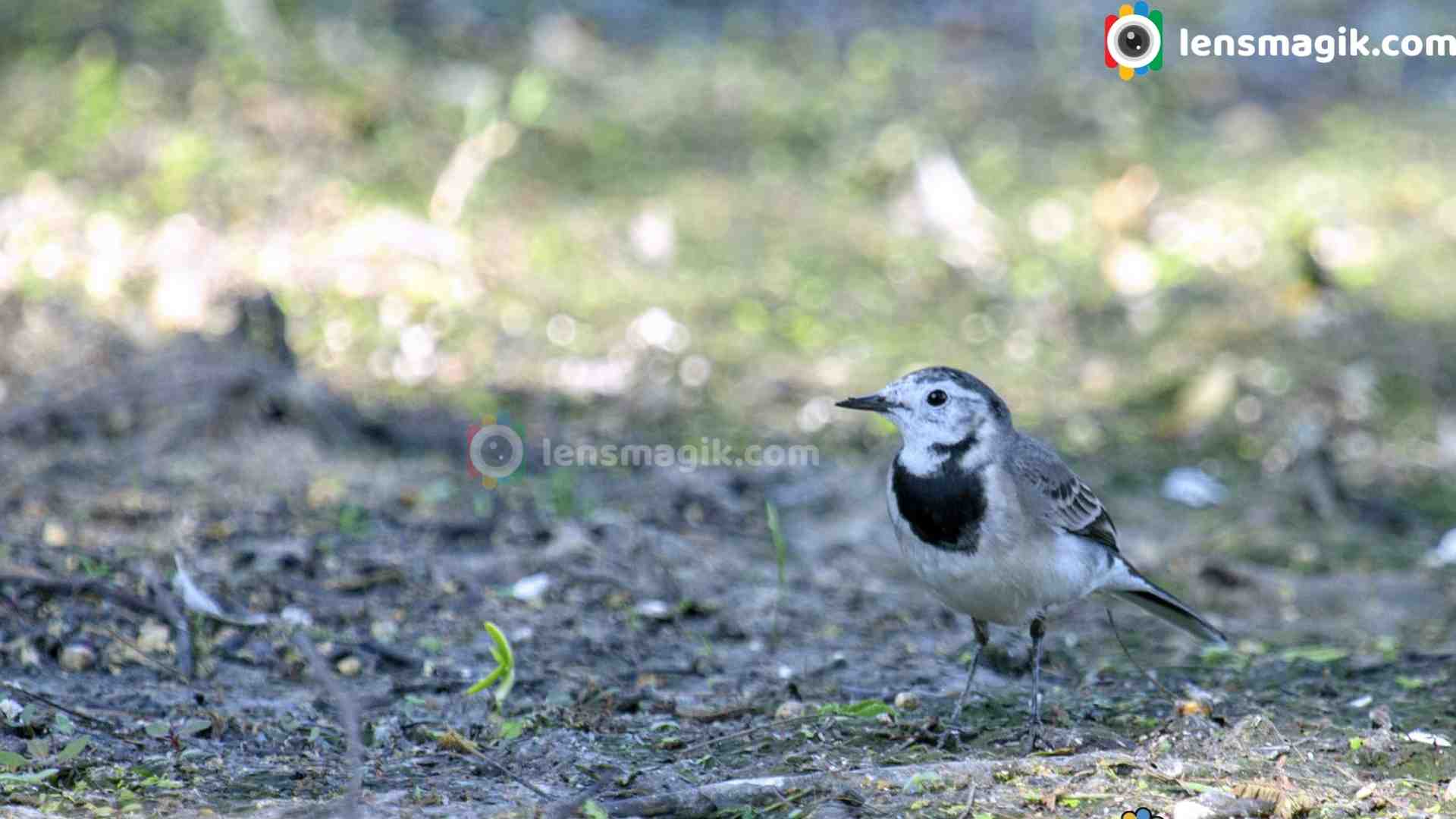
White wagtail is a small passerine bird. It is included in family Motacillidae. It is also included in Pipit and Longclows. White wagtail is a charming little bird. It is recognized by its constant tail wagging. So that its name on its behavior Wagtail. It is resident bird of Mideast parts or migrates to Africa. Some dark sub spices like Pied Wagtail and water wagtail found in Ireland and Great Britain. It generally found near water, ponds, lakes, wetlands and some agriculture areas.
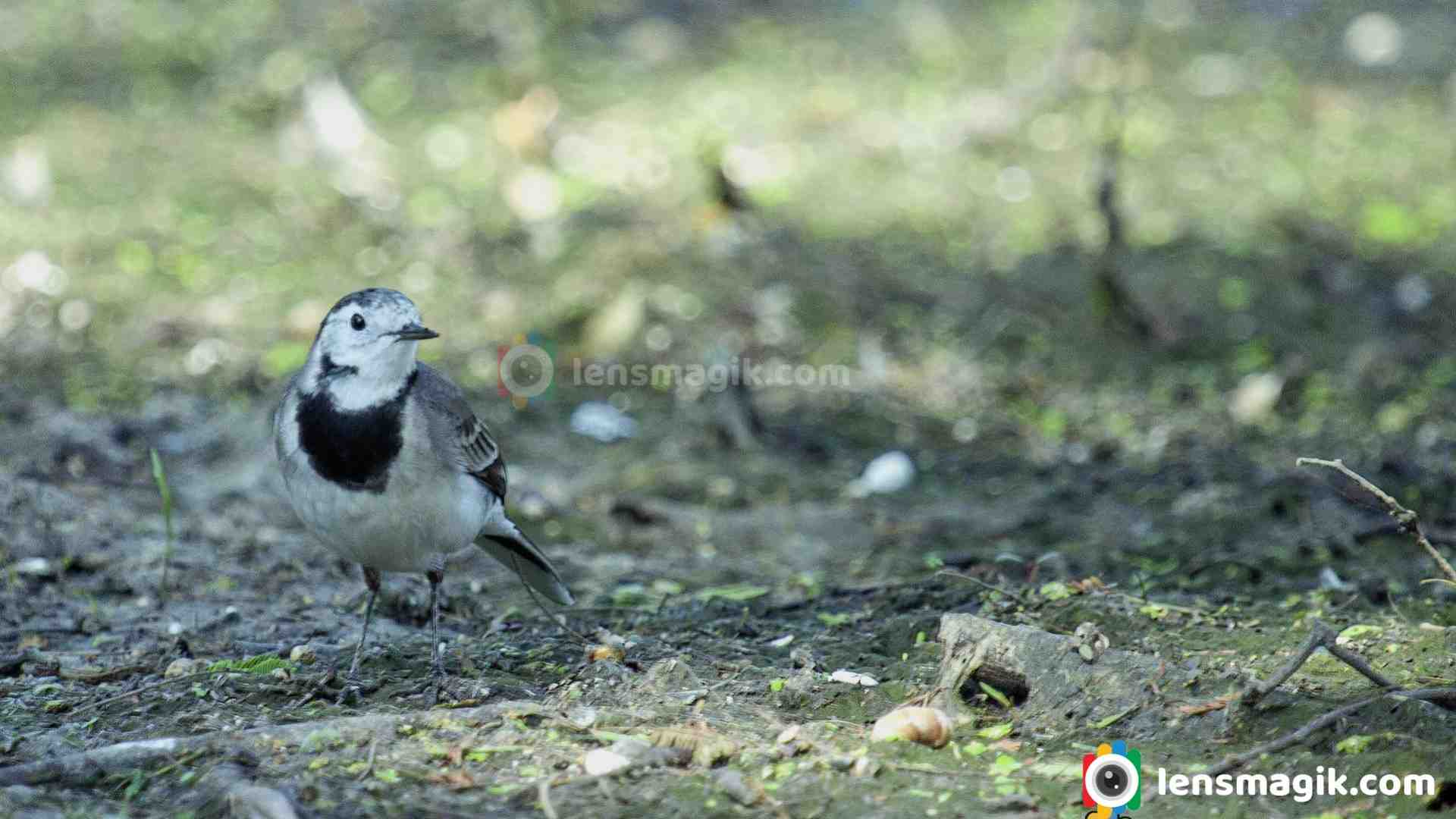
Facts and Description about White Wagtail :
- Size : It is small in size about 16 -19 cm. Weight around 25 gm. It has slender body and Long tail.
- Color : It is black and white in color. Sub spices has some variation in color.
- Diet : It feeds invertebrates and small insects.
- Habitat : It generally found near water bodies like pond, lake, wetland. They are adaptable and also found in urban areas also.
- Behavior : It is active foragers and active all the time lookout for insects. Most distinctive characteristic is its tail constantly moving for balancing , attracting mates and communications.
- White wagtail is National bird of Latvia.
- Lifespan of white wagtail in wild is up to 12 years.
- There are many sub spices with little varying plumage pattern.
- White wagtail generally seen in Pair or in group.
- It breed in Europe, Asia and some part of North Africa.
- The call of White Wagtail is Chisick .
- Breeding season for white wagtail is April to August.
- They lay 3-8 eggs cream colored.
- It is in Least concern in IUCN list.
White wagtail bird is found in many sanctuaries in Gujarat like Thol Bird Sanctuary, Nal Sarovar Sanctuary, Pariej Wetland and many more wetland and lakes in Gujarat. I found first time at Thol Lake in Gujarat during summer. It generally migrate for food and cold season. It was very long time i capture in my camera. I shoot it at ground level by crawling and get good result as well .
Location : Photos taken at Thol Bird Sanctuary
Camera Used : Canon 1000 D, Canon 100-400 mm lens.
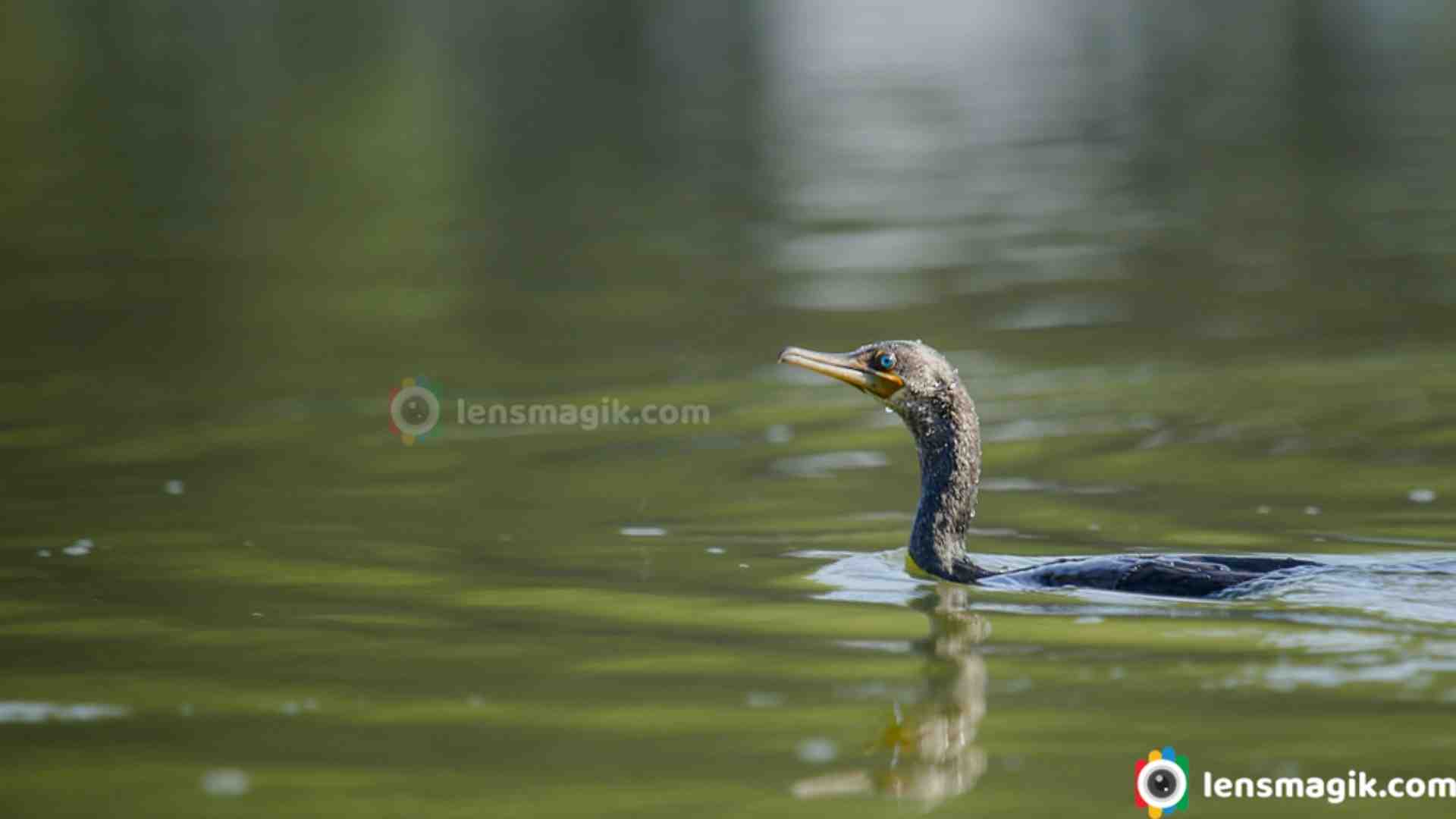
Little Cormorant is a member of cormorant family. It is widely distributed in India. It is found in Sri Lanka, All over India, Bangladesh, Myanmar, Pakistan and lower Nepal. They generally found at pond, lake and wetlands near agriculture and village areas. In Gujarat they found at many places like Thol Bird Sanctuary, Nal Sarovar Sanctuary, Velavadar Sanctuary and also some wetlands near Little rann of Kutch and many other areas. They are good diver in the water and also famous for fishing expert dive into water and catch the fish. In Gujarat the best place to see Little Cormorant is Thol Bird Sanctuary and Nal Sarovar Sanctuary.
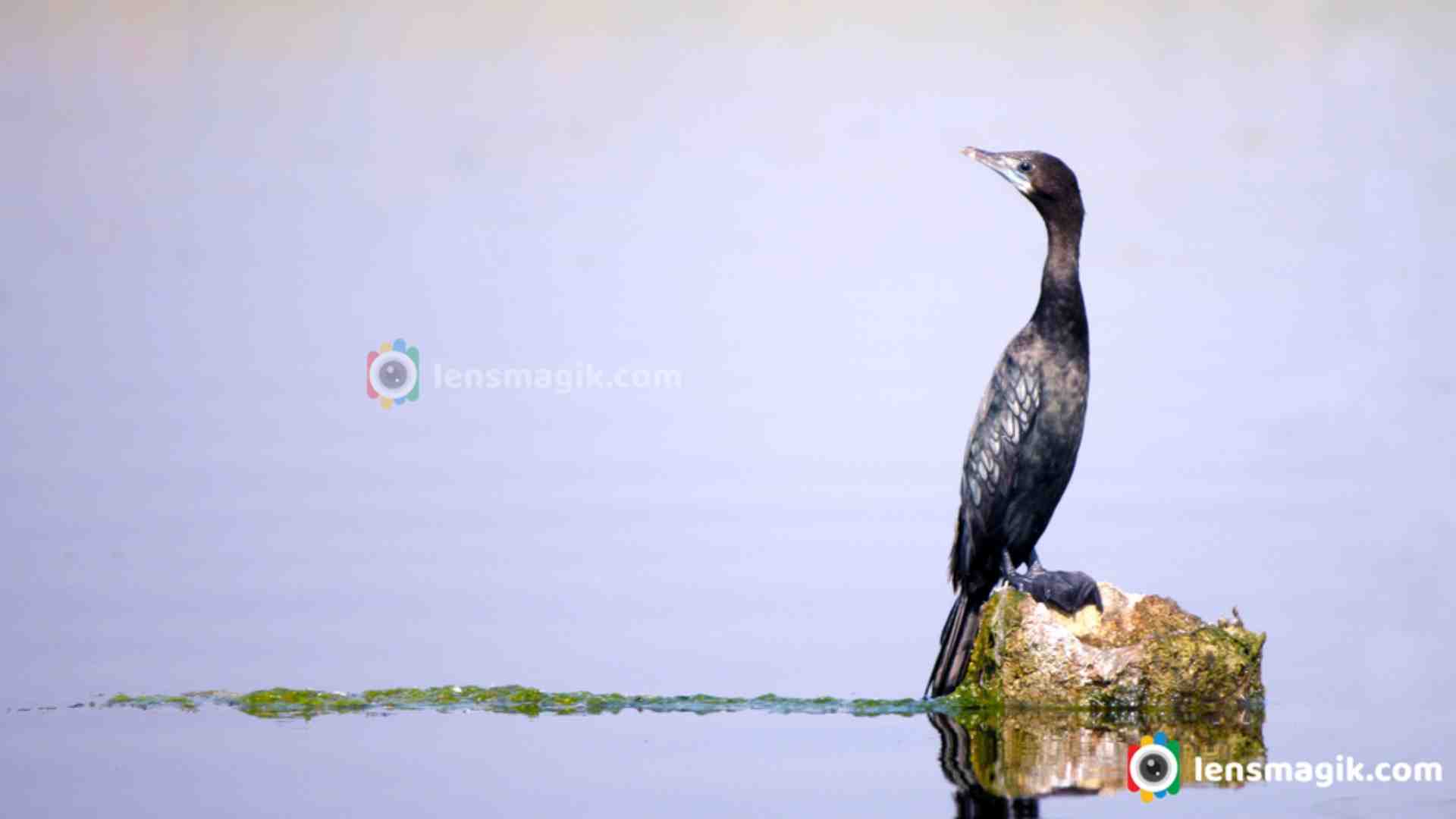
Description of Little Cormorant :
- Size of Little cormorant is smaller than Indian Cormorant. The Length of little cormorant is around 50 cm.
- The bill of little cormorant is shorter and stouter compared to Indian Cormorant.
- Color of Little Cormorant is black. There is some variation during breeding and plumage in different season. Breeding adult have white spot on their face.
- The main diet of Little cormorant is Fish. They can dive into the water and catch the fish underwater.
- Little Cormorant found in Inland and Coastal water bodies including ponds, lakes, rivers and coastal areas.
- They generally seen in small groups but can also be solitary.
- Breeding season for Cormorant is July to September in Pakistan and in India season is November to February.
- Both male and female built nest together. It will take two weeks to built nest.
- They lay eggs in interval of two days around two to six eggs.
- Incubation period around 15-20 days. After that eggs hatched. After one month young birds are free to leave nest.
- The call of Little Cormorant is ah-ah-ah and kok-kok-kok .
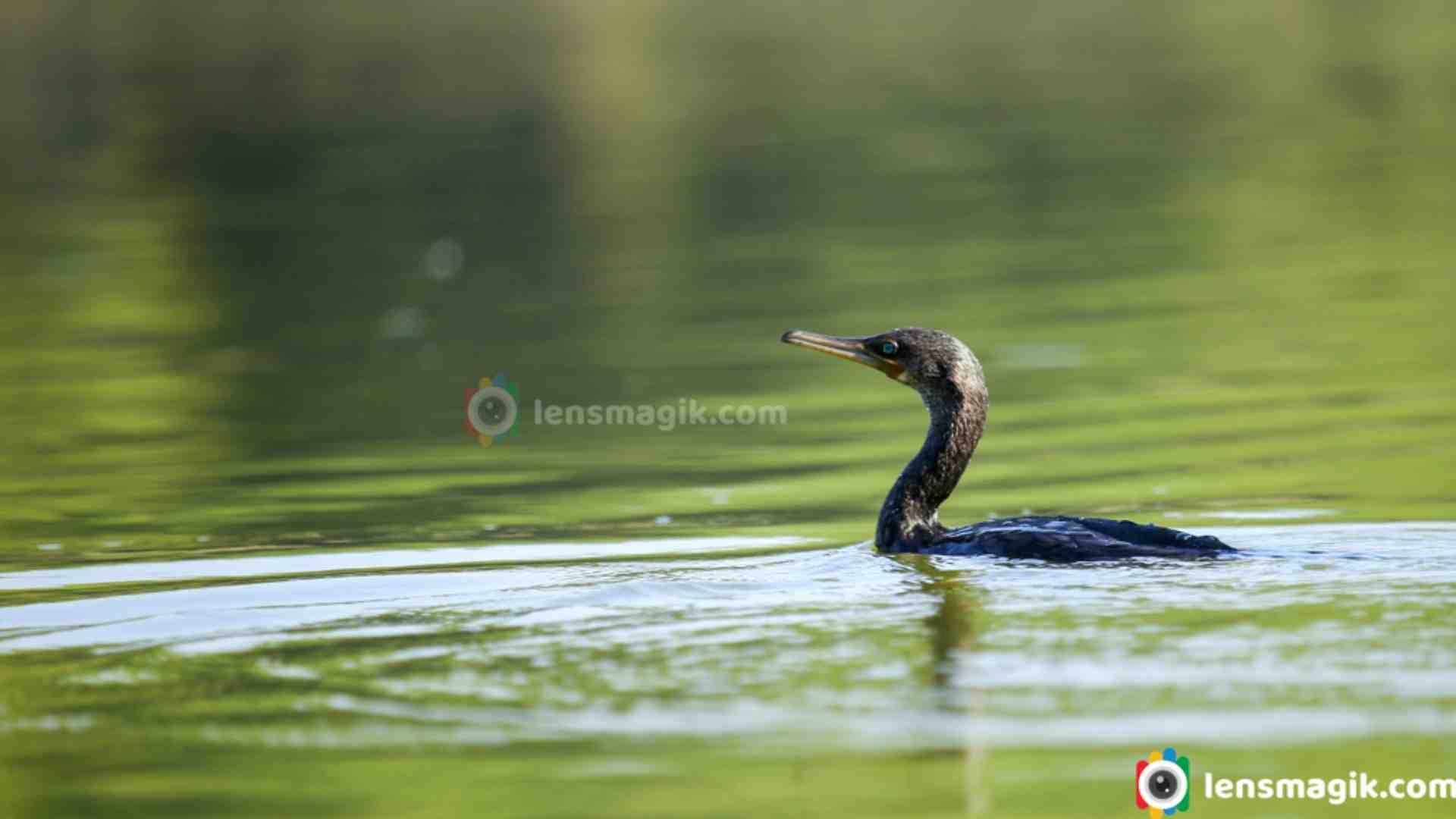
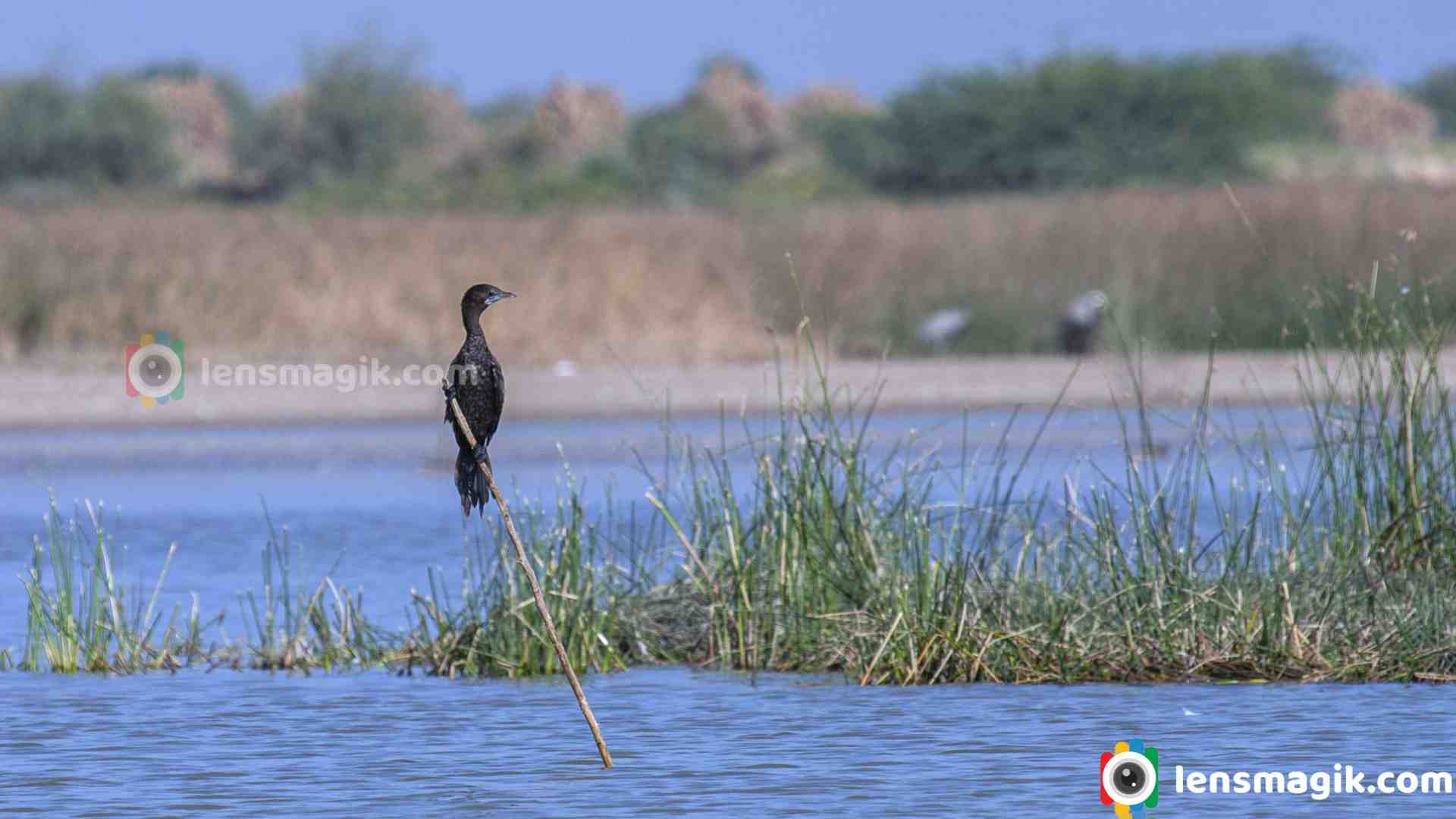
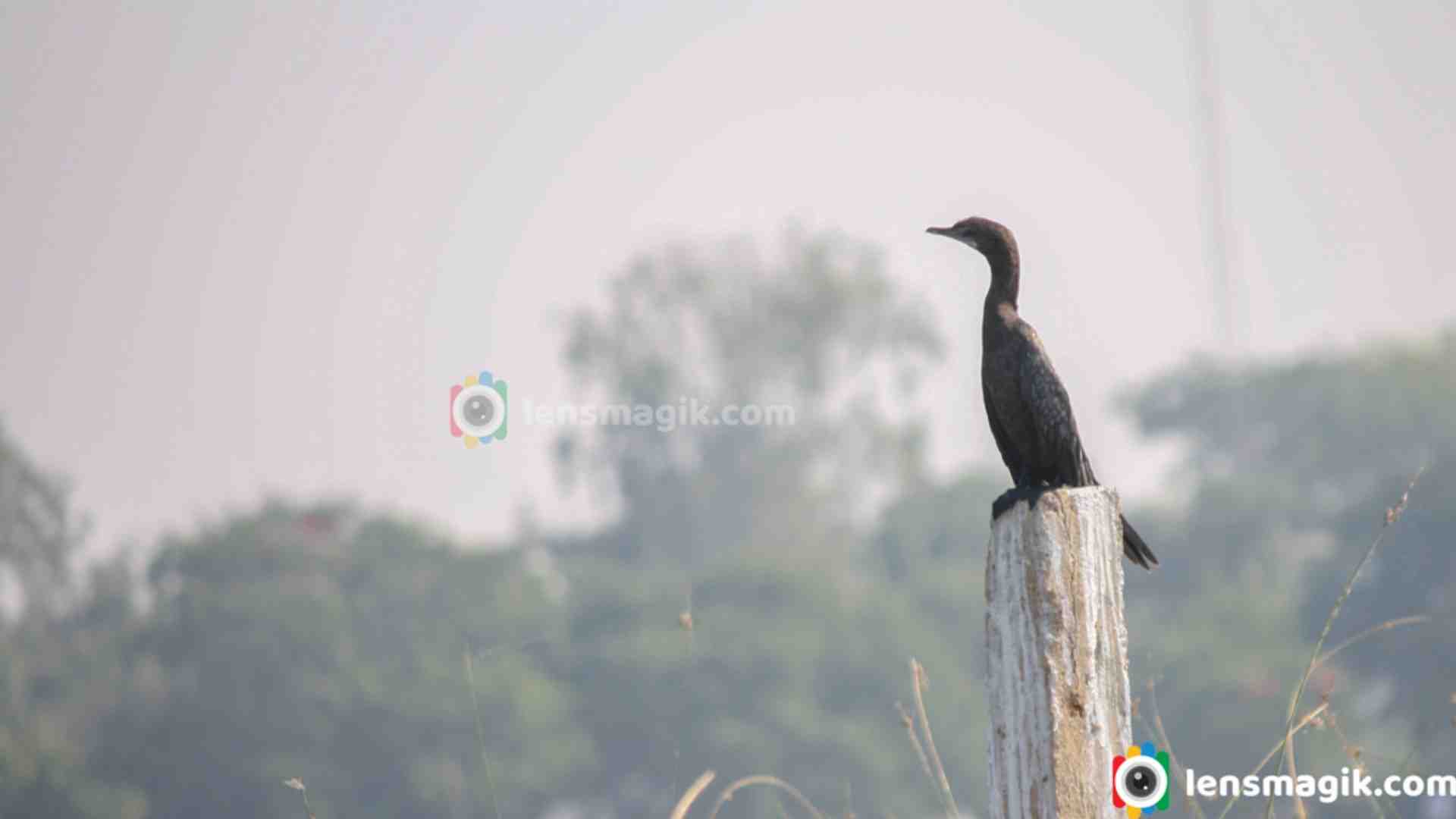
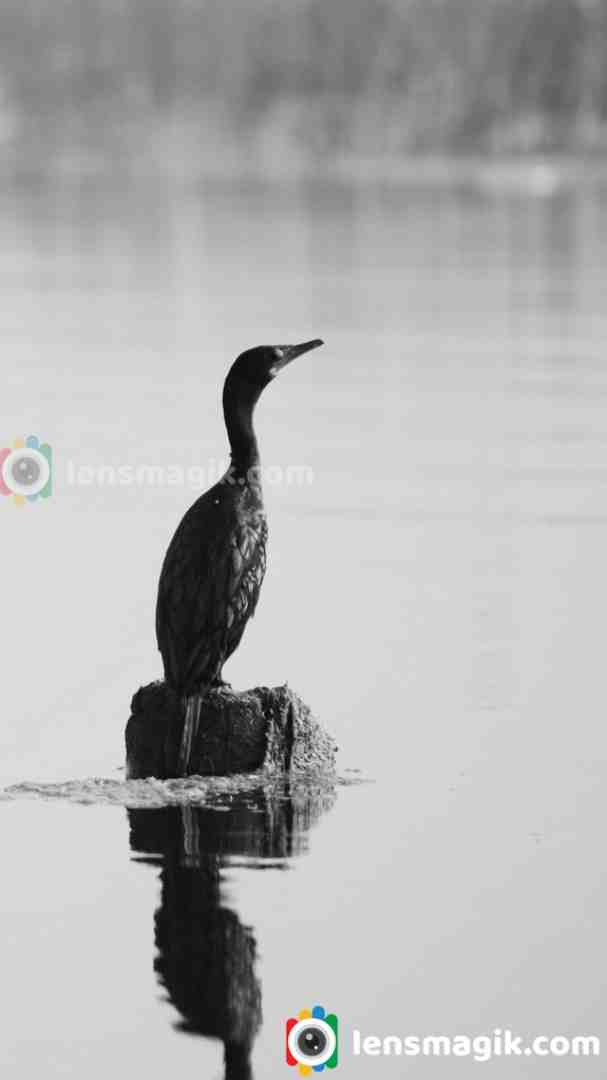
Little Cormorant is widely spread in India. You can easily find them near pond, lake and many wetland areas . You can easily identify little cormorant as its color is full black and its beak. Also they stand on tree trunk or on tree with spreading their wings for a long time. After waiting for sometimes little cormorant dive into water and catch fish and come out from water. Little cormorant is famous for its hunting skill. It is resident bird in India. Also Greater Flamingo, Great White Pelican, Bar Headed Goose, Eurasian Spoonbill, Many Ducks and many migratory birds found at Nalsarovar and Thol Bird sanctuary.
Location : Thol Bird Sanctuary, Little Rann of Kutch, Nal Sarovar Sanctuary
Camera used : Canon 1000 D, Canon 80 D, Canon 6 D, Canon 100-400 mm lens
Read more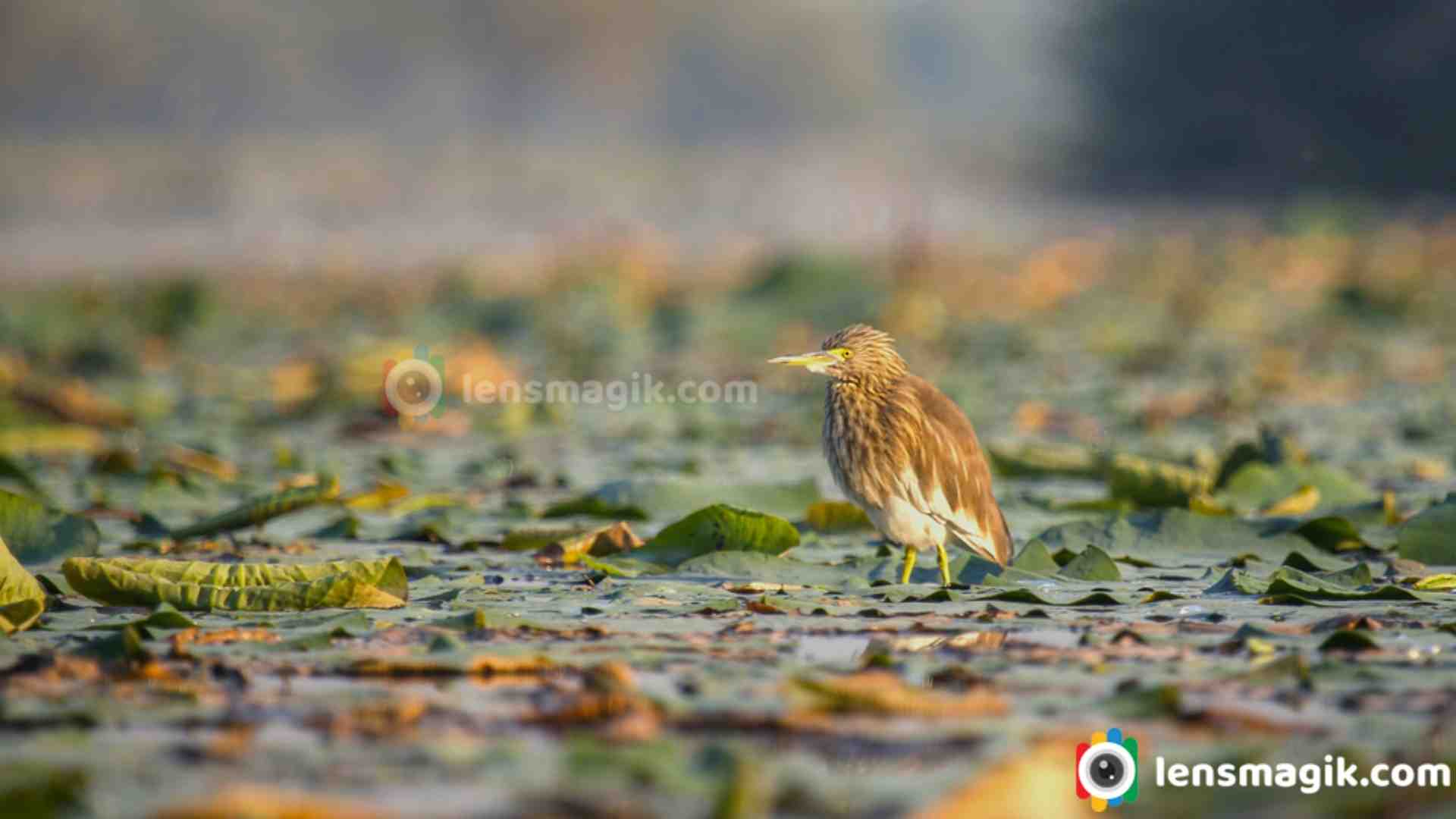
The Indian pond heron is also known as the paddybird. It is a small heron bird which found in southern Iran and east to the Indian subcontinent, Burma, and Sri Lanka. It's a widespread and common bird, but you might easily miss it while it's stalking prey at the edge of small bodies of water. I found it at Thol Bird Sanctuary in Gujarat. Also found in agriculture areas, canals, farms and many more sanctuary like Nal Sarovar, Velavadar sanctuary, Pariej Wetland etc.
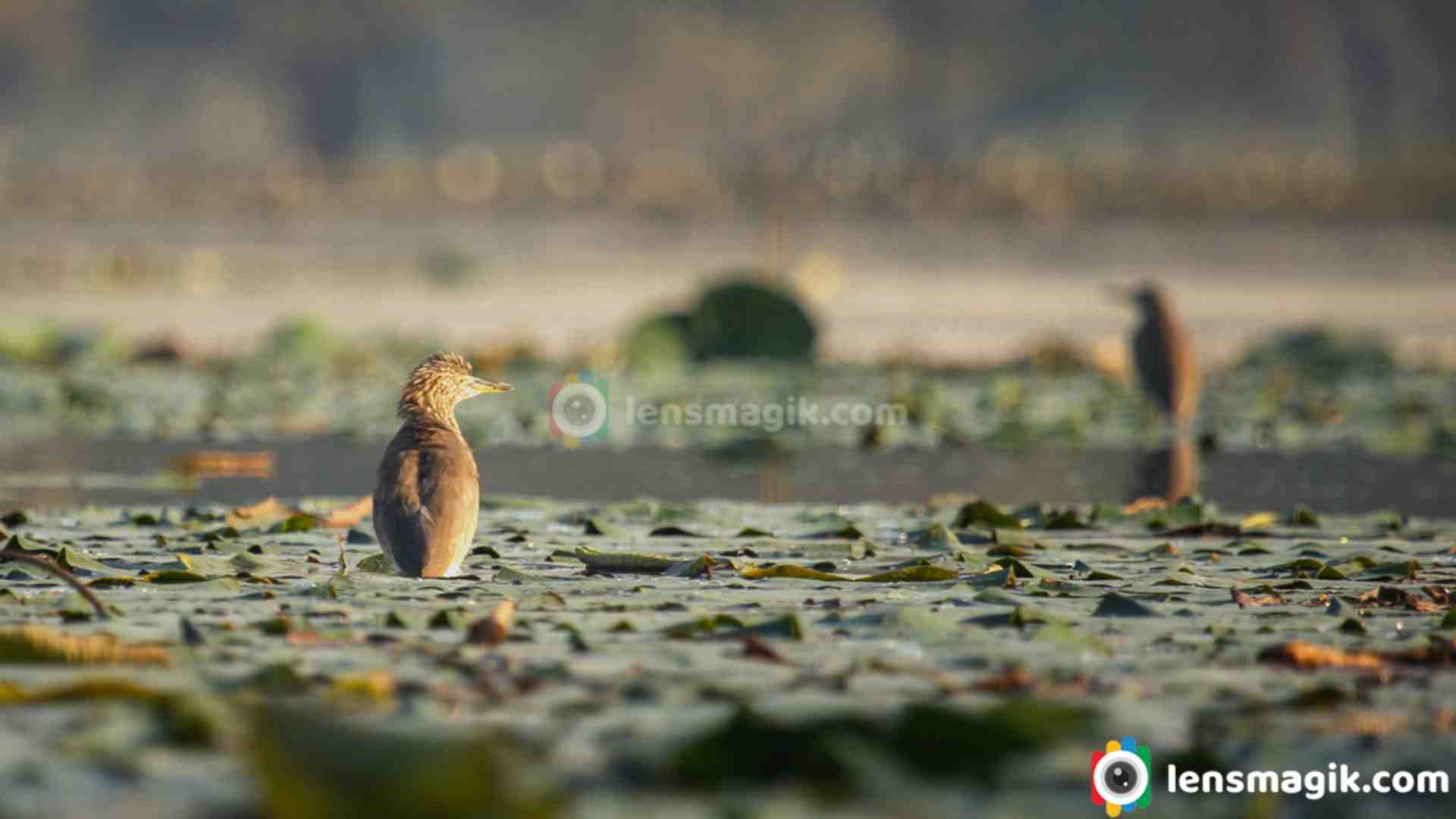
Some
interesting facts about the Indian pond heron:
- They are stocky birds with short necks, short thick
bills, and buff-brown backs.
- In summer, adults can grow long neck feathers.
- Their dull colors transform when they take flight, and
the white of their wings makes them very prominent.
- Indian pond Heron are similar to the squacco herons,
but back is darker.
- During the breeding season, some individuals may
have red legs.
- They are solitary foragers, but a large number of
them may feed together during dry seasons when small wetlands have a high
concentration of prey.
- Indian pond herons are semi-colonial breeders. They
nest in small colonies, often with other wading birds, usually on
platforms of sticks in trees or shrubs.
- Their diet mainly consists of insects, fish, and
amphibians.
During
breeding season, the Indian pond heron sheds its drab disguise for a more
vibrant look. Males develop a reddish-brown back that pops against their
yellowish head, neck, and breast. This colorful plumage is a sure sign that the
heron is ready to find a mate and raise a family.
The Indian
pond heron is a bird of freshwater wetlands. It is found at rice paddies,
marshes, ponds, and canals, patiently stalking its prey in shallow water. Fish,
frogs, insects, and even small reptiles are all on the menu for this
opportunistic eater. Indian pond herons can sometimes be seen feeding in close
proximity during dry seasons when prey concentrates in shrinking water bodies.
While typically solitary feeders, Indian pond herons come together for breeding. They form semi-colonial nesting sites, often in trees or shrubs near water. These colonies can sometimes house other wading bird species, creating a bustling neighborhood of feathered friends.
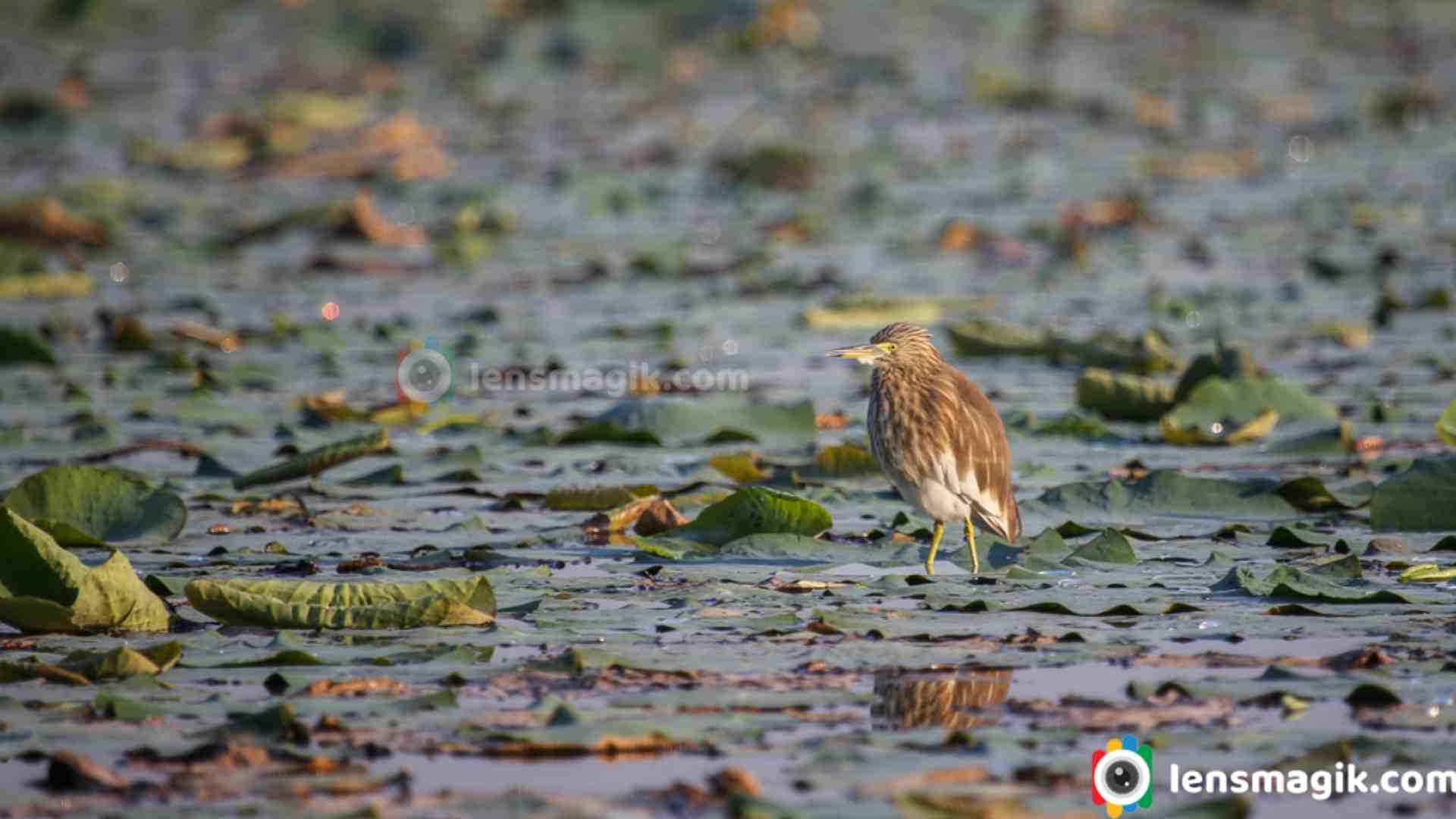
A
Bird of Least Concern
Thankfully,
the Indian pond heron is classified as a species of Least Concern by the IUCN.
Its widespread range contribute to its healthy population. However, threats
like habitat loss due to pollution and development remain a concern.
Have
you ever spotted an Indian pond heron? These remarkable birds are a testament to nature's
wonders, showcasing both the art of camouflage and the beauty of
transformation. Keep your eyes peeled next time you visit a wetland – you might
just be lucky enough to witness this little wonder in action.
Location
in Gujarat : It is
widely spread bird in Gujarat also.Indian pond heron found in many bird
sanctuaries in Gujarat like Nal Sarovar Bird sanctuary, Thol Bird sanctuary,
Pariej Wetland, and many more wetlands, farms, agriculture areas and canals
too.
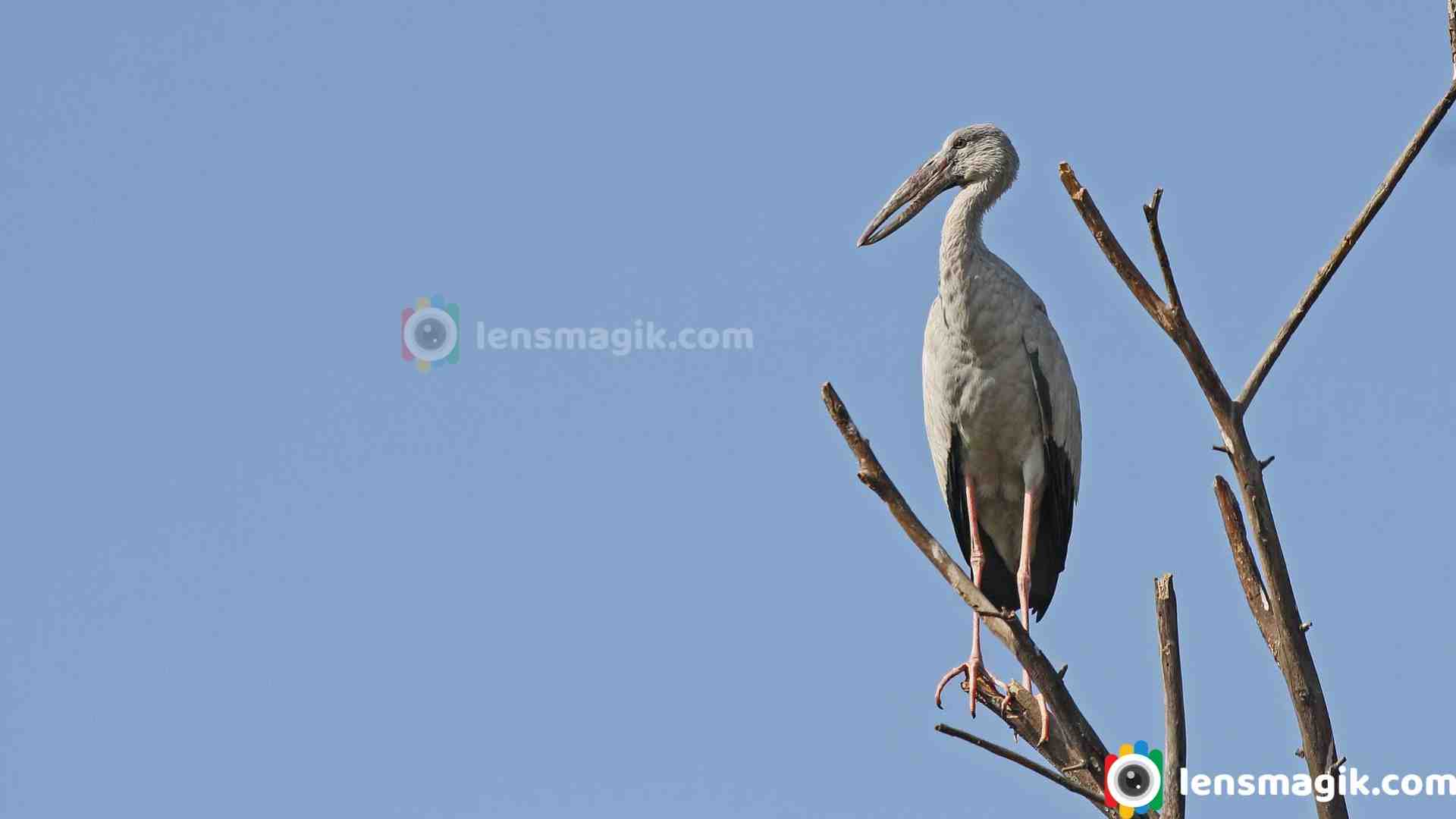
Asian openbill is also known as Asian openbill stork. It is a large wader bird in stork family. Binominal name of it is Anastomus Oscitans and its family is Ciconiidae. It is generally found in South-east Asia region. Like other stork it size mostly similar to them. Only difference in color as openbill stork is greyish or white in color and glossy black wings. In Gujarat it is found in Thol bird Sanctuary , Nalsarovar Bird sanctuary, Pariej Wetland and agriculture areas at many places. It found in low level wetlands where it can find food easily. In Gujarat like Asian openbill stork other stork bird found like Painted Stork, Wooley Necked Stork etc.
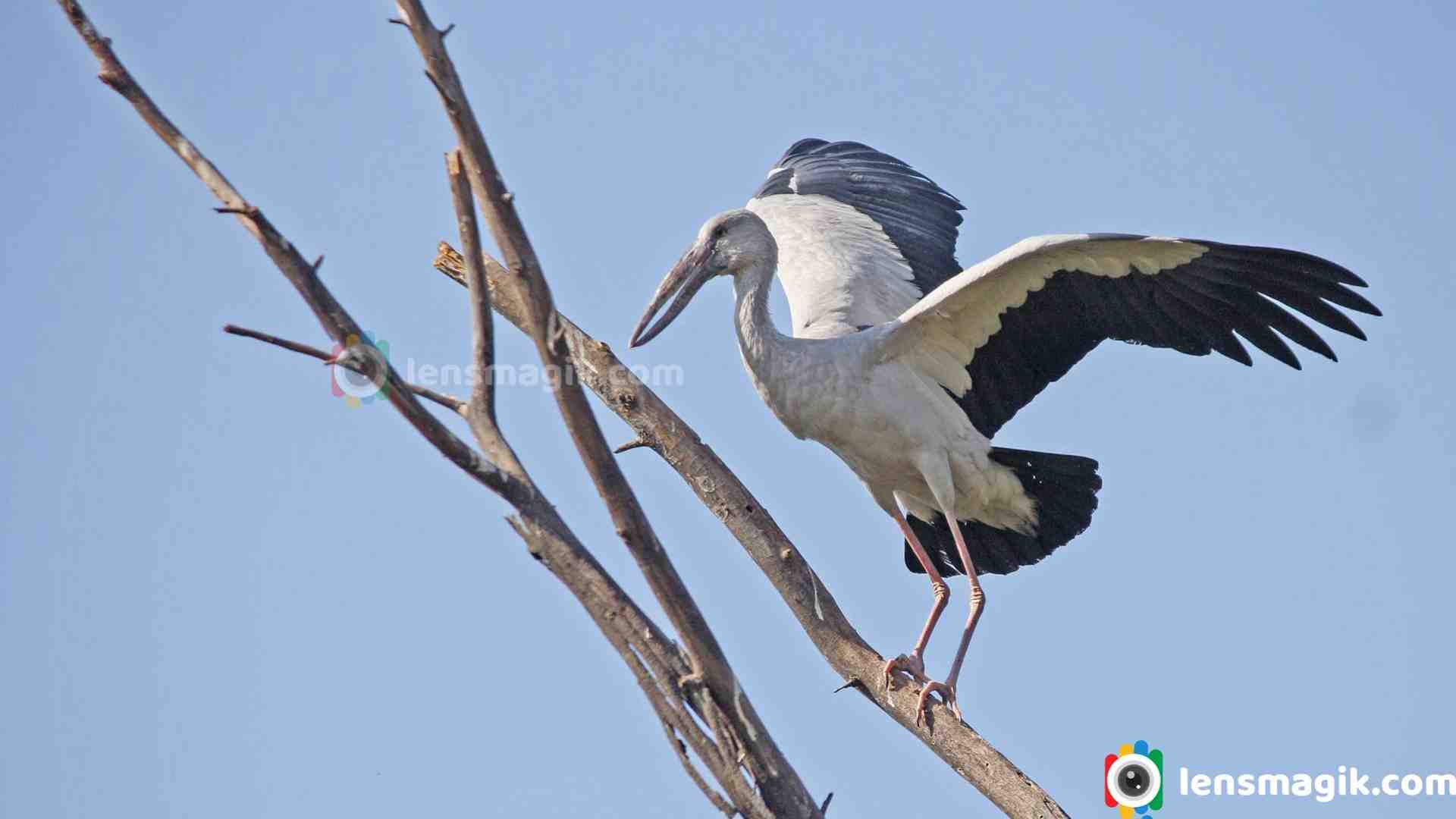
Description and Facts about Asian openbill stork :
- Asian openbill stork is greyish or white in color. Its wings and tail are glossy black in color.
- As it name openbill the gap between lower and upper mandible of the beak. The gap between beak is not seen in young bird. The gap is very useful for gripping snails and shells .
- They are generally found in flocks.
- Asian openbill generally found near river bank, wetlands, Irrigation canal and agriculture areas.
- It is very rare spices in Panjab and Sind region of Pakistan But it common in India, Nepal, Bangladesh, Thailand and Cambodia.
- They are mostly seen in Winter from September to February.
- Asian openbill feed snails and they separate shell with its beak. They also feed frogs, water snakes and large insects.
- Asian openbill breeding season is after monsoon in November to March in Southern India and Shri Lanka and in Northern India and Nepal starts from July to September .
- In colonial India a sportsman shot Asian openbill for meat calling it the " beef-steak-bird".
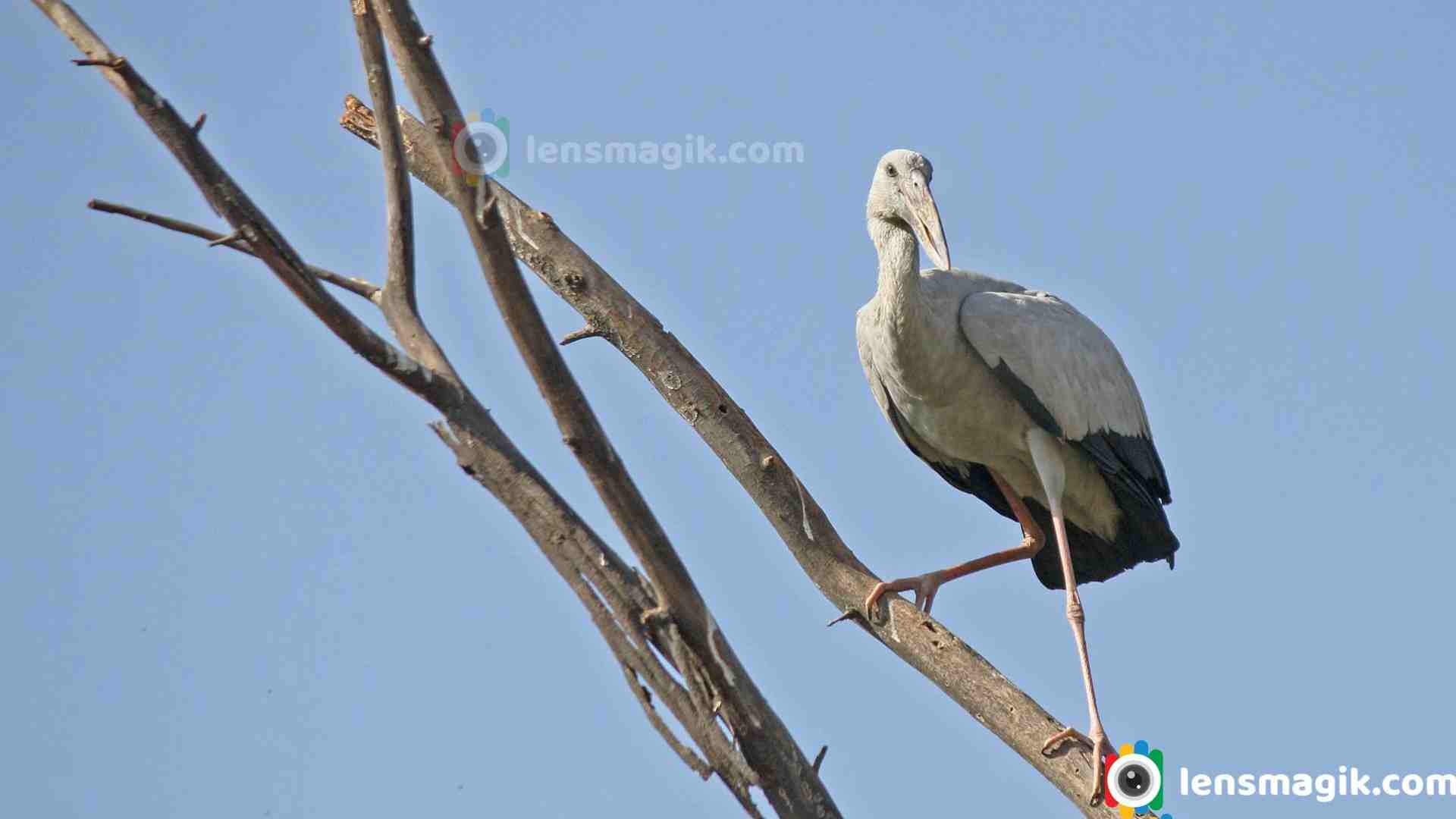
In Gujarat there are lots of bird sanctuary where migratory birds and also resident birds visit through all seasons. Thol Bird sanctuary, Nal sarovar , Little Rann of Kutch, Pariej Wetland, Velavadar National Park, Khijadiya sanctuary etc are famous sanctuaries for bird watching. Thol Sanctuary is famous for Flamingo bird, Pelican, Bar headed Goose and many migratory birds. I found 3 spices of stork bird name Painted Stork, Asian openbill stork and Woolly necked stork in thol bird sanctuary. Thol sanctuary, nalsarovar , Little rann of kutch are very near to my home so i visit all sanctuary often.
Gear Used : Canon 6 D, Canon 1000 D , Canon 100-400 mm lens
Location : Thol bird sanctuary, Sanand, Kadi , Gujarat
Read more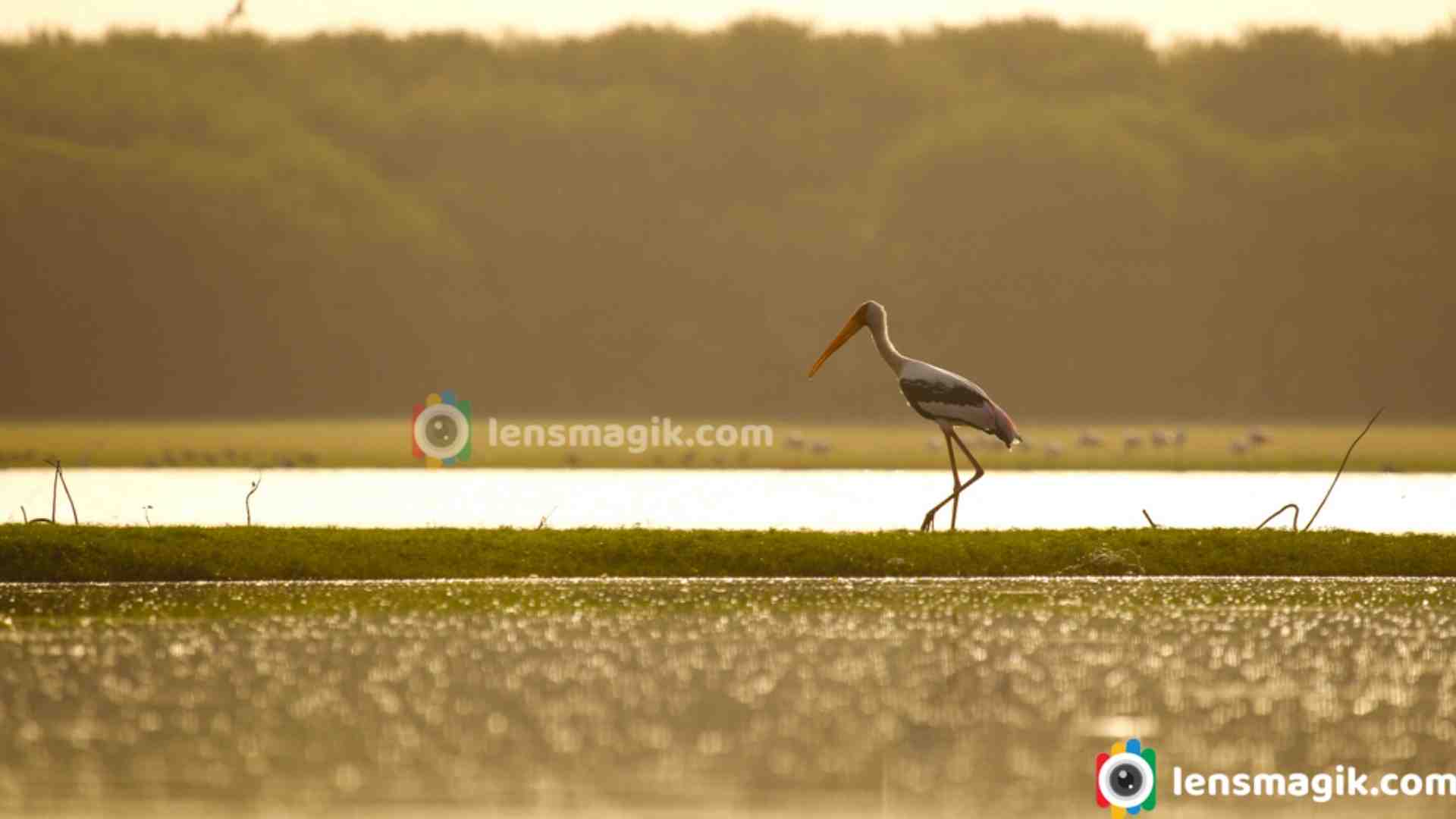
Painted Stork is a large wader bird. It is found in Asia, southeast Asia and South of Himalayas. Painted stork is not migratory bird. They can fly only short distance depend on weather and food. As per name it looks like beautiful paint on its body with black, white, pink and yellow color in different part of the body. They are generally found in wetlands, agriculture areas small farms and grasslands. In Gujarat they found at many bird sanctuary like Thol Bird Sanctuary, Nalsarovar Sanctuary, Jamnagar , Pariej Wetland and many other wetlands and outside sanctuary agriculture areas where the water level is low they easily found.
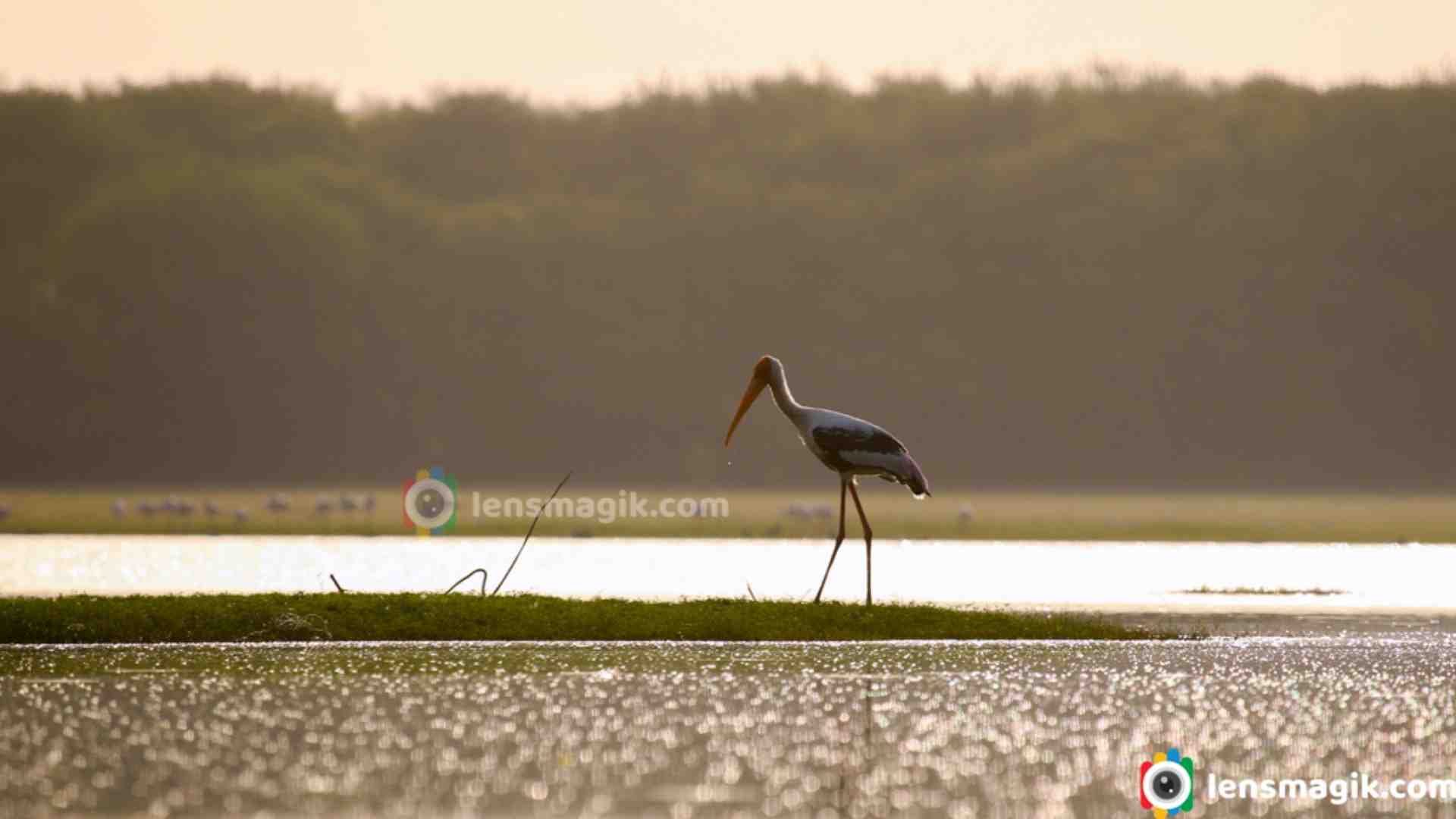
Description And Facts About Painted Stork :
- Painted stork is 90-100 cm tall and wingspan around 150-160 cm. Weight of Painted Stork is around 2-3.5 kg approx.
- Painted Stork have heavy yellow beak. Beak is down curved like an Ibis bird.
- Head of adult painted stork is red or orange. Legs are yellowish and wings are black and white on tip.
- Male painted stork are larger then female painted stork.
- Juvenile and young Painted stork are whitish grey bill and blackish skin.
- Painted stork are silent mostly.
- Painted stork widely distributed in Asia but they are absent from deserts, high mountain range, dense forest and dry areas.
- They mostly prefer freshwater wetlands, crop fields, irrigation canals etc.
- They breed on large trees to secure their nest from predators.
- They feed mostly small fish.
- Flock size is not big just less than 5. Sometimes flock size may reach to 50 in agriculture areas.
- The well known nest site in south Indian Village near Kokrebellur near to human habitats. Locals protect their nest during nesting seasons.
- Painted Stork is in Least Concern of IUCN list. Its population is decreasing and is in nearest threaten list.
- Young painted stork call loudly But after 18 month they are voiceless.
- Painted stork can live 28 years .
- Total 19 Stork spices found in the world and among them 8 spices found in India. In India the rare spices of Stork is The Greater Adjutant stork.
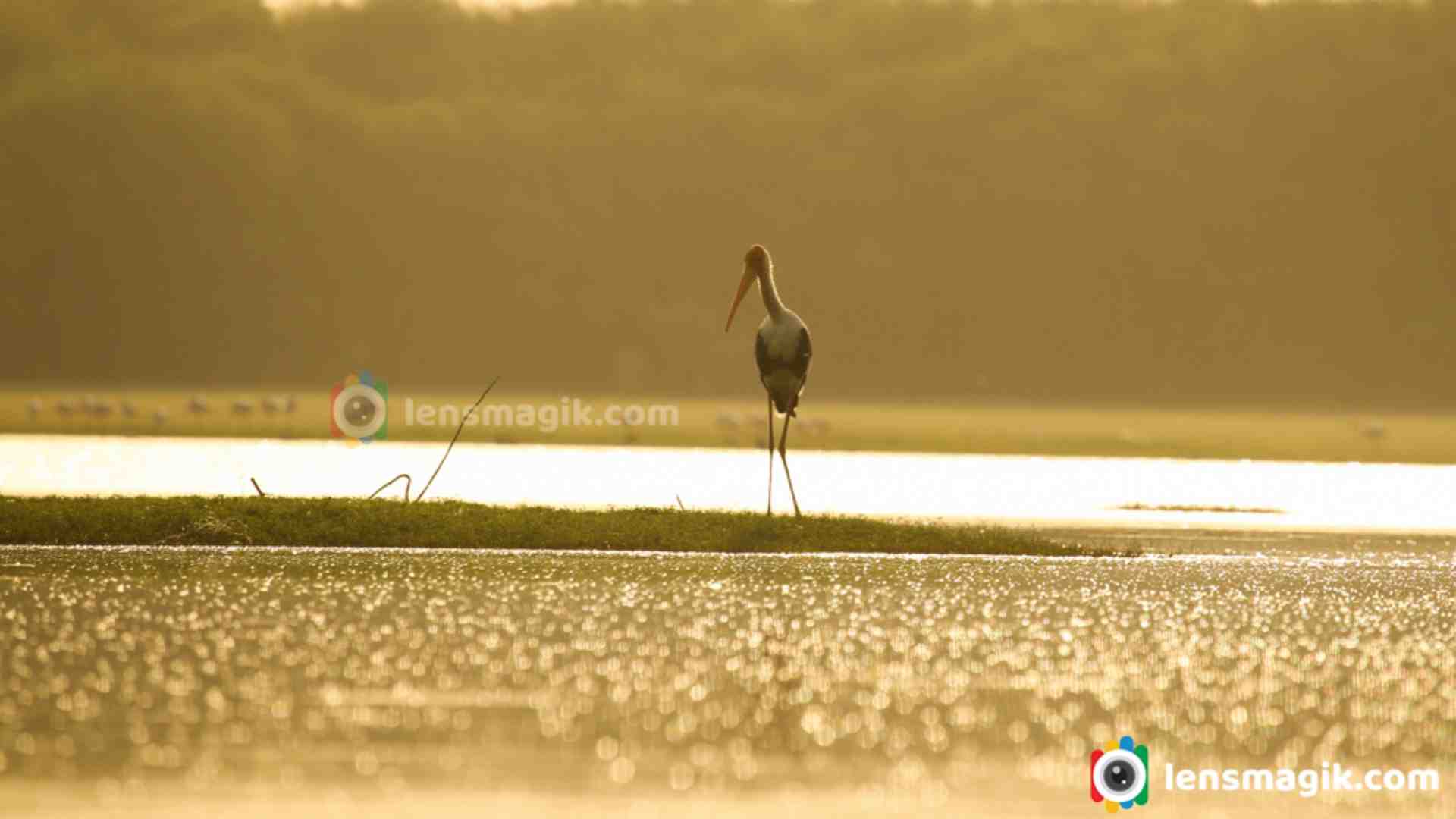
In Gujarat i found painted stork at Thol Bird Sanctuary during morning feeding time and also near to my farm which is in agriculture area near Narmada canal. During flying painted stork colors are looks awesome because of multicolor. I just like to watch them feeding very slowly. It long beak attract more for shoot photos of it. Pink color with black wings tip make painted stork more attractive. During sunrise i shoot painted stork at Thol bird sanctuary i took beautiful shot with golden light of sunrise in water. its a silhouette shot of painted stork looks amazing with golden light.
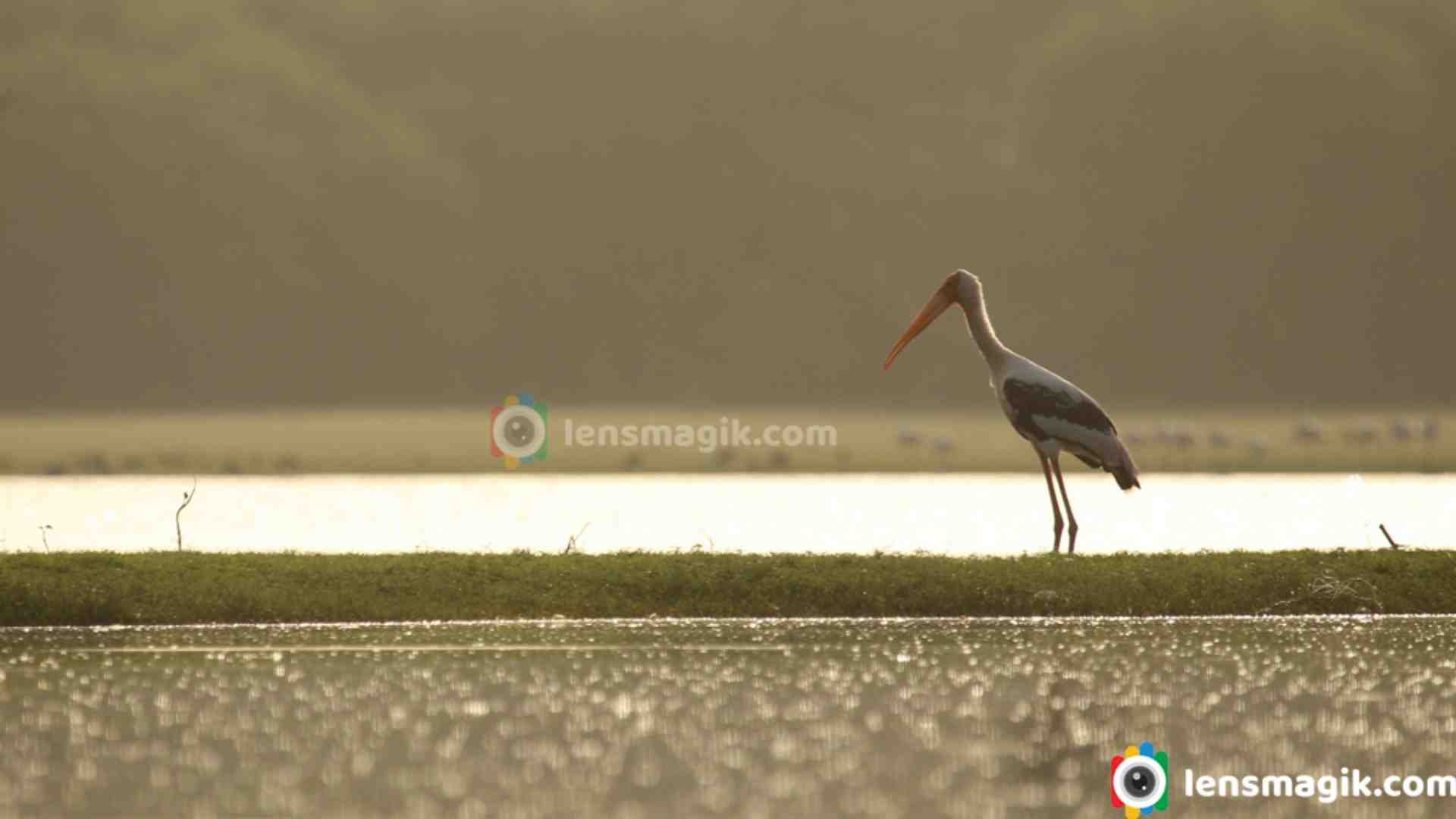
Camera used : Canon 6D, Canon 1000 D, Canon 100-400 mm lens
Location : Thol Bird Sanctuary
Exif Data of Image : F-stop : F/8 , Exposure time or Shutter speed : 1/400 sec., ISO :125, Focal Length 400 mm, white balance : Shade
Read more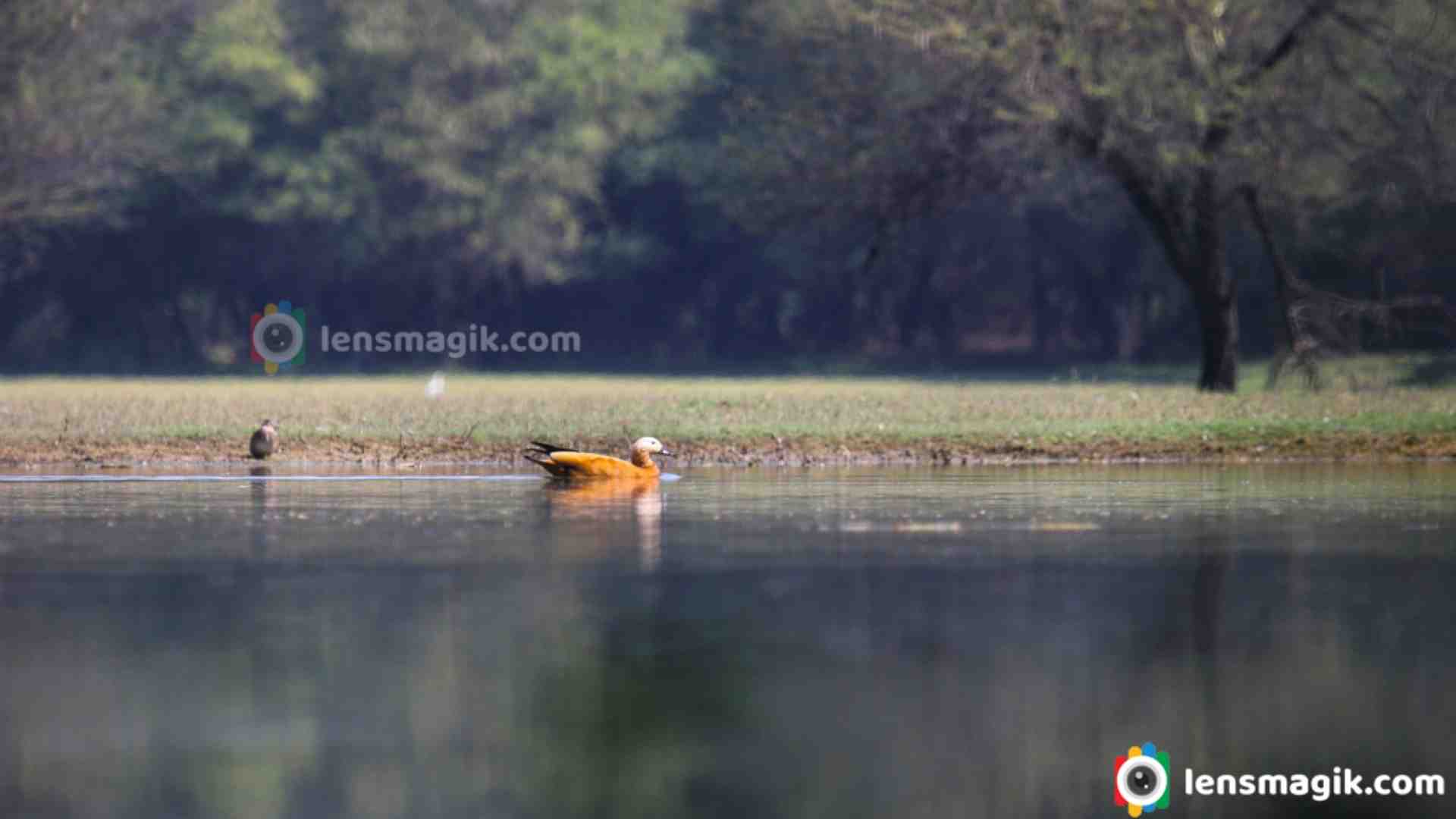
Ruddy Shelduck is migratory bird in India and also in Gujarat. It is generally found in many wetland areas and bird sanctuary like Thol Bird Sanctuary, Nal Sarovar , Little rann of Kutch , Pariej Wetland etc. It is known as Brahminy Duck in India. They are resident in Northwest Africa and Ethiopia. Their main breeding area are southeast Europe, China and Mongolia. Ruddy Shelduck is common winter visitor in India during October to April. Ruddy shelduck generally found near lakes, rivers , reservoirs and water bodies. Ruddy shelduck is the member of shelduck Genus Tadorna in wildfowl family Anatidae.
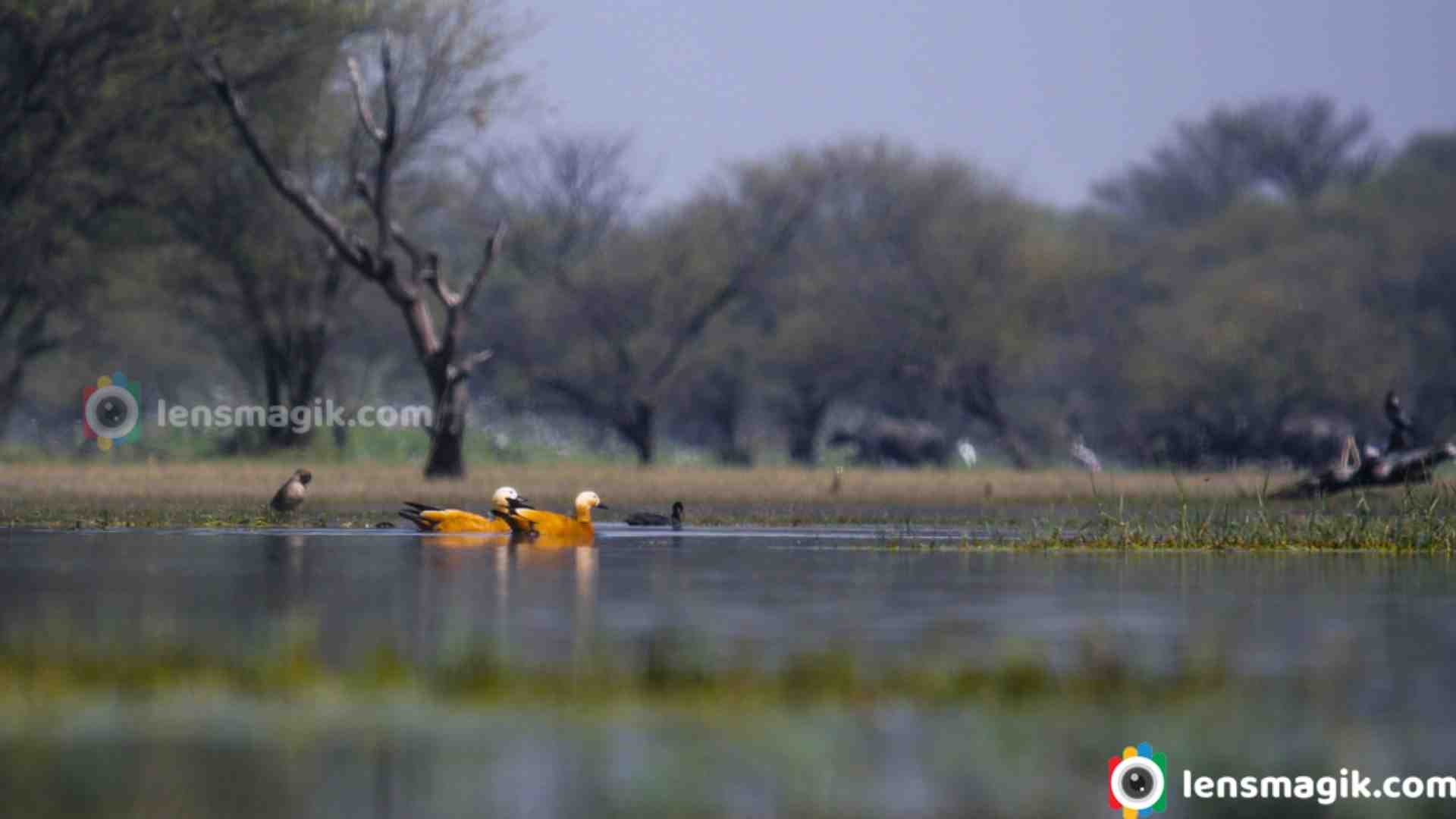
Description and Facts about Ruddy Shelduck :
- Length of ruddy shelduck is around 56-70cm . With wingspan length is around 110-135 cm.
- Ruddy shelduck body is orange brown, head is paler , tail is black and wings feather during flight is black also.
- It is migratory bird in India during winter . It breeds in Central Asia, southeast Europe .
- Female Ruddy Shelduck lays around 8 eggs . Female incubate them for four weeks.
- Ruddy Shelduck call loud nasal honking notes in series. They can call from ground and from air also.
- Juvenile is darker brown shade but very similar to female.
- Ruddy Shelduck is mainly nocturnal bird. It is omnivorous and feed grass, plants, grains and aquatic invertibates.
- Population of Ruddy shelduck is around 170000 to 225000 approx.
- Ruddy shelduck is in least concern bird list in IUCN list
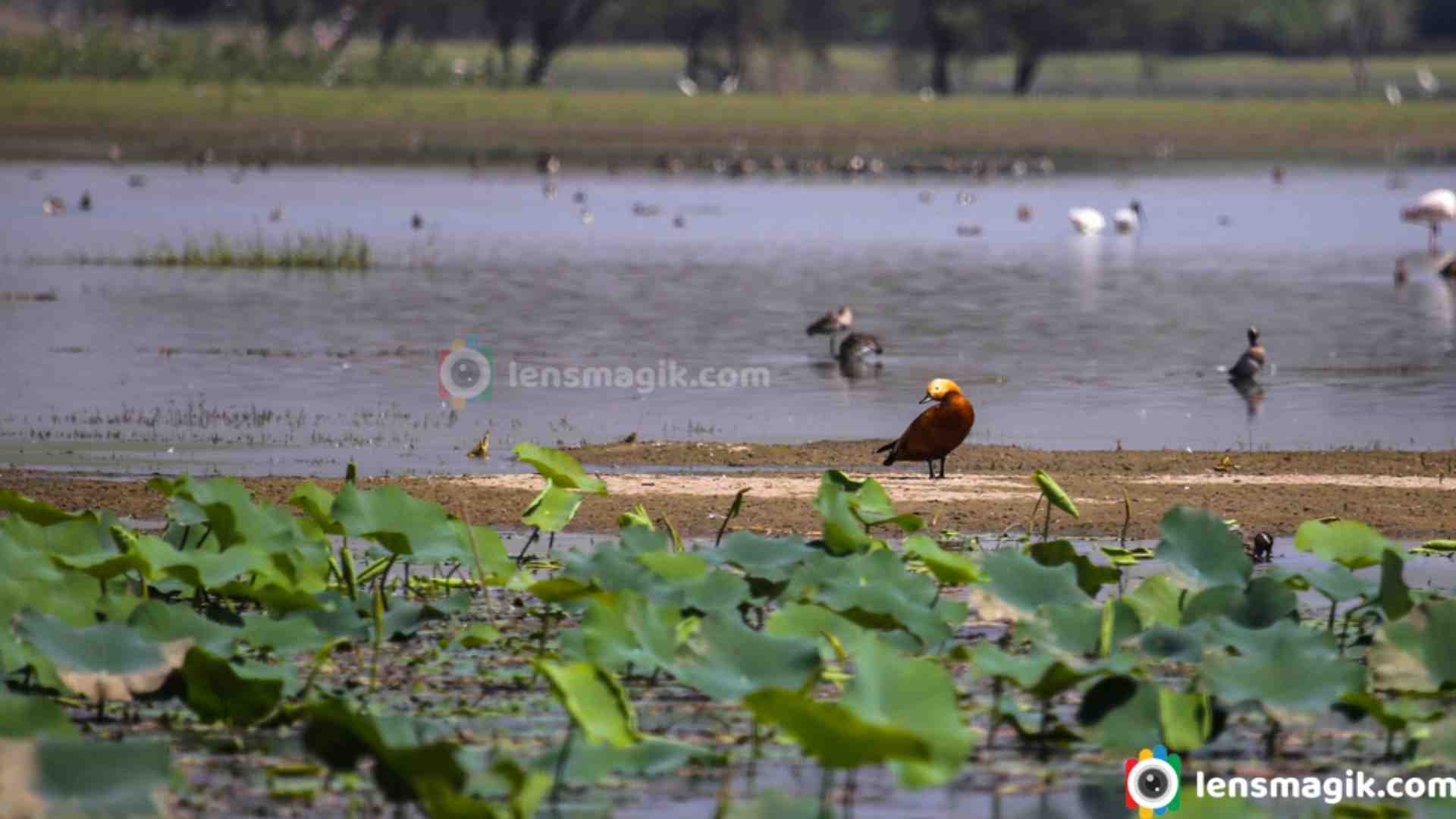
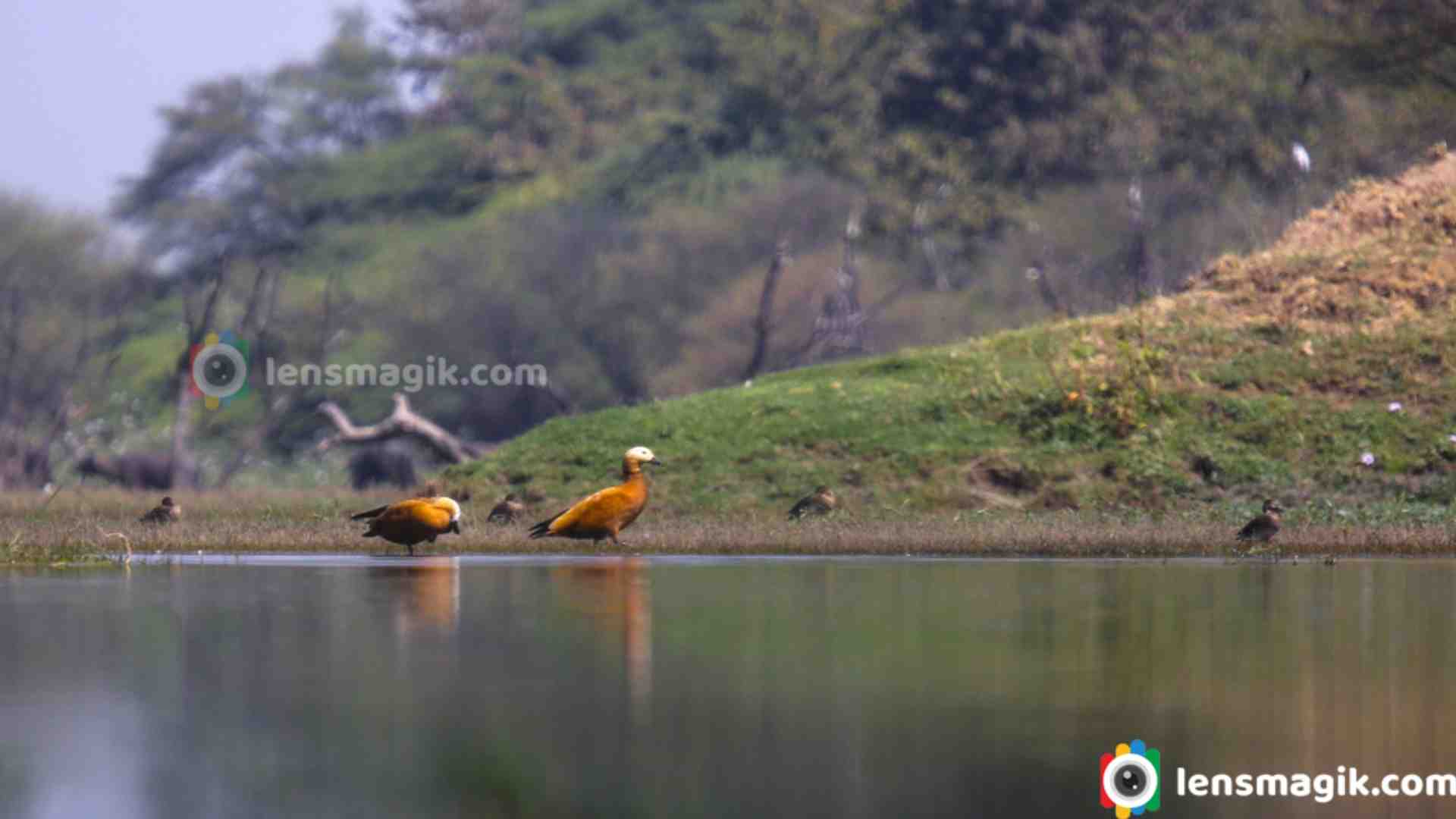
Ruddy Shelduck found in pair and small groups. They rarely found in flocks. It had been recorded more than 4000 birds in Koshi Barrage and Koshi Tappu Wildlife Reserve in Nepal. Also a 10000 recorded at Lake Duden in Turkey. In Gujarat i found Ruddy Shelduck at Thol Bird Sanctuary and also at Little Rann of Kutch. It is also found in many other wetlands like Nalsarovar Sanctuary, Pariej Wetland etc. Nearest bird sanctuary near Ahmedabad is Thol Bird Sanctuary where you can find more than 150 different spices of birds and also a migratory birds like Greater Flamingos, Great White Pelican, Ducks, Spoonbill , Bar Headed Goose etc.
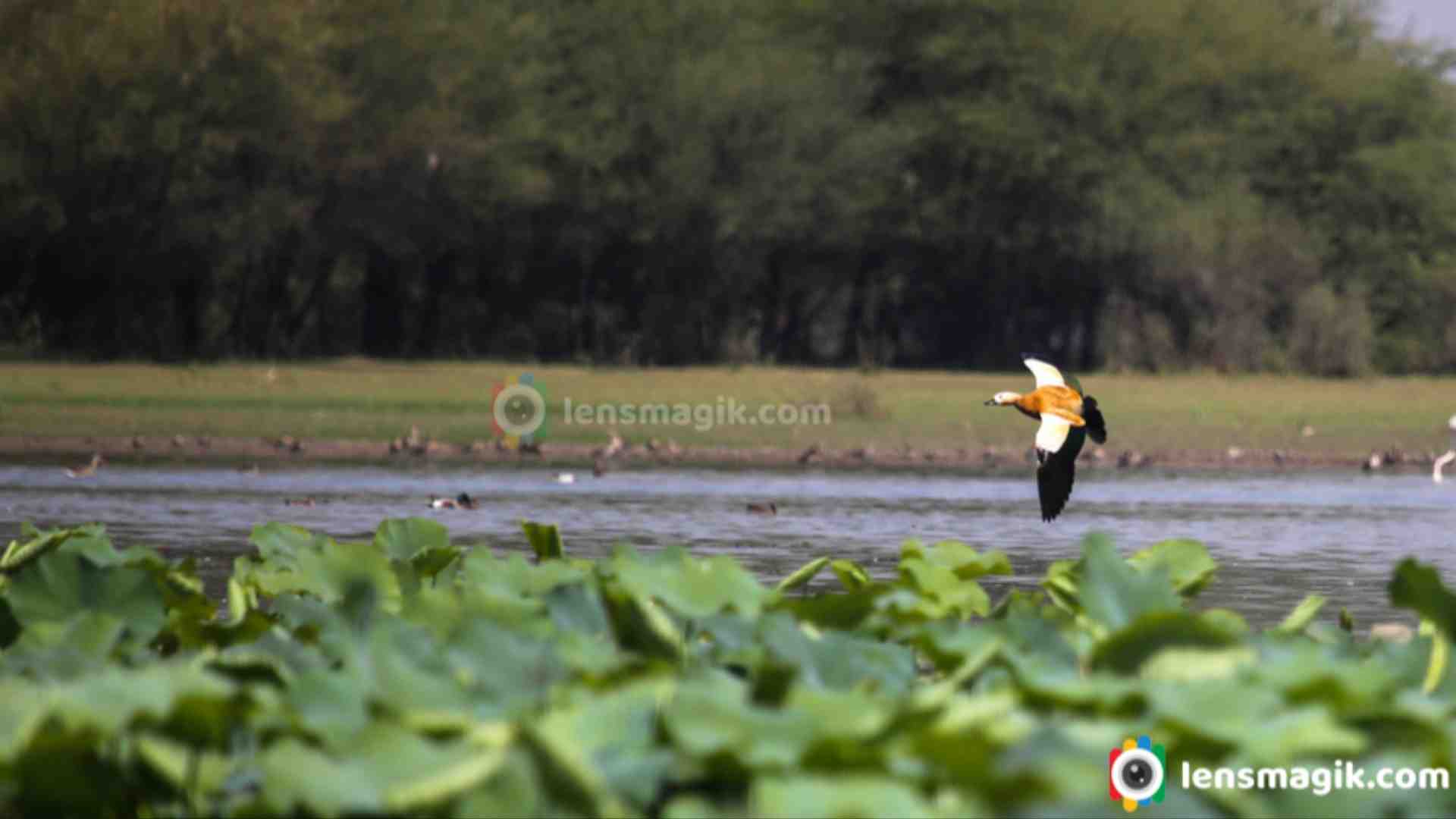
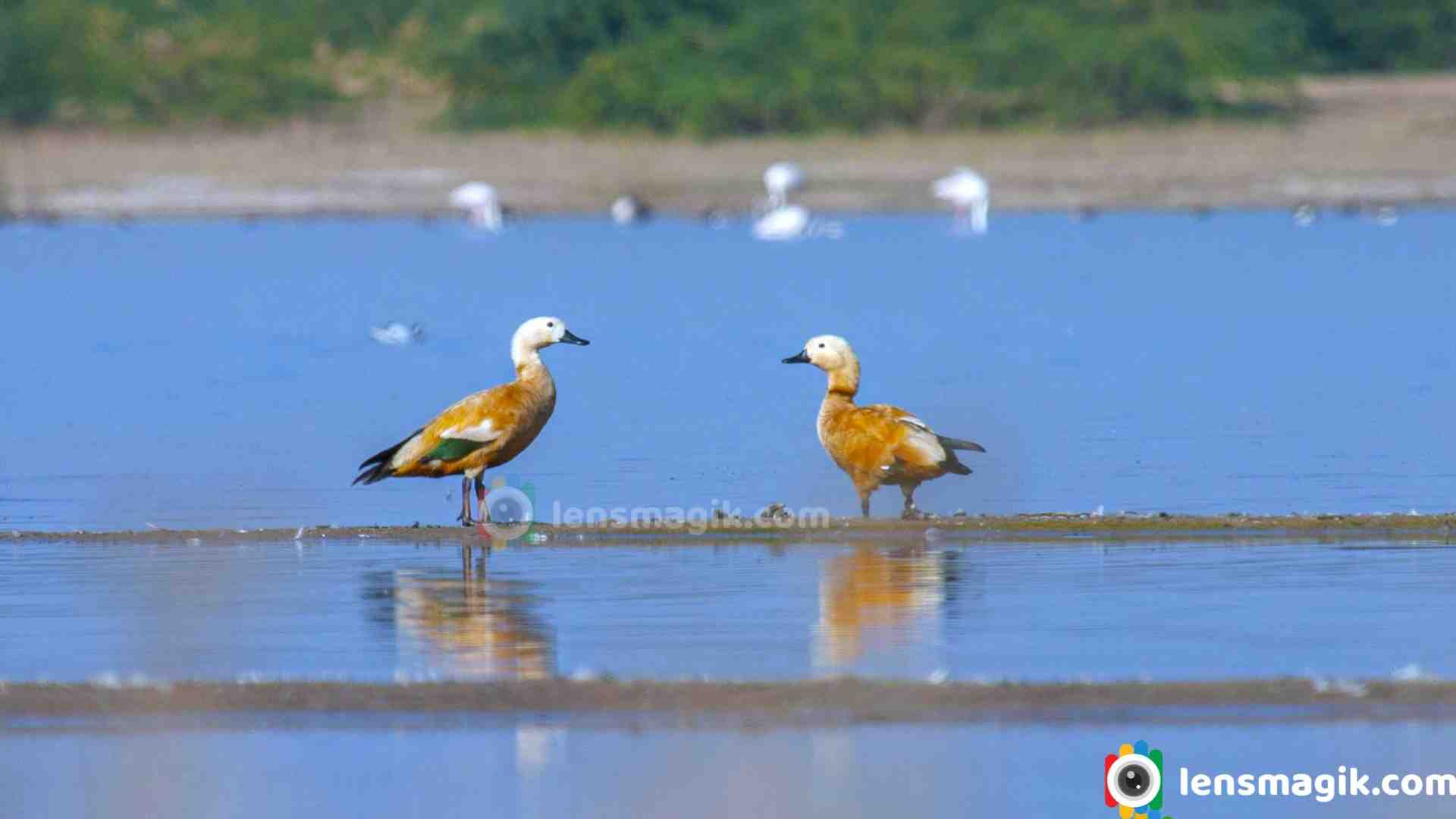
Camera used : Canon 6D, Canon 80D, canon 100-400mm lens
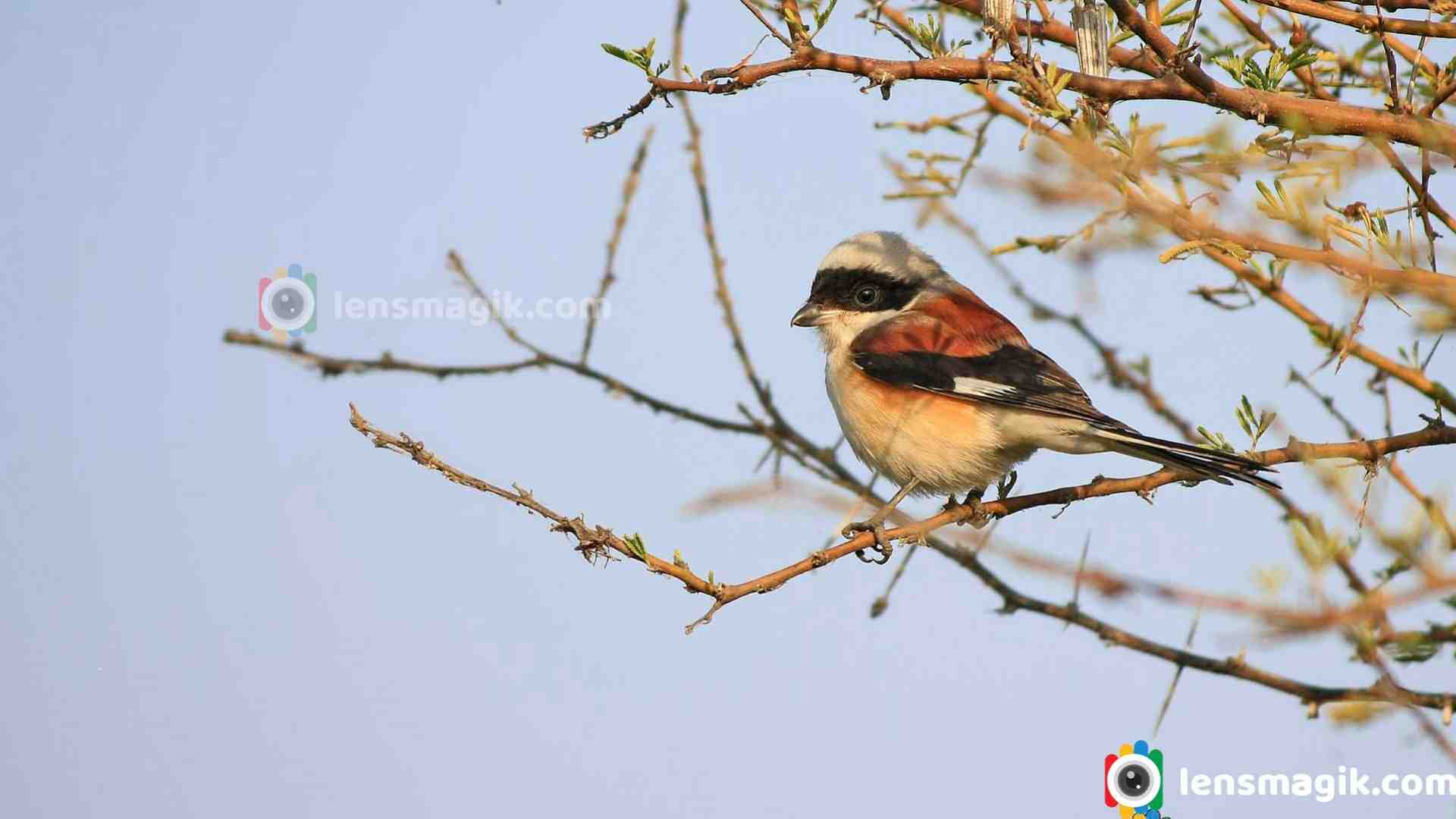
Bay backed Shrike is generally found in south Asia and it is resident bird of south Asia. In Gujarat it found many places and near to agriculture areas. Also found in Thol Bird Sanctuary, Nal Sarovar Sanctuary and many other sanctuaries . It is member of bird family Lannidae. Binominal Name of Bay Backed Shrike is Lanius Vittatus. It is generally found in India, Pakistan, Nepal and Afghanistan and also in Shri Lanka. In Lannidae family there are total 34 spices of shrike found in different places.
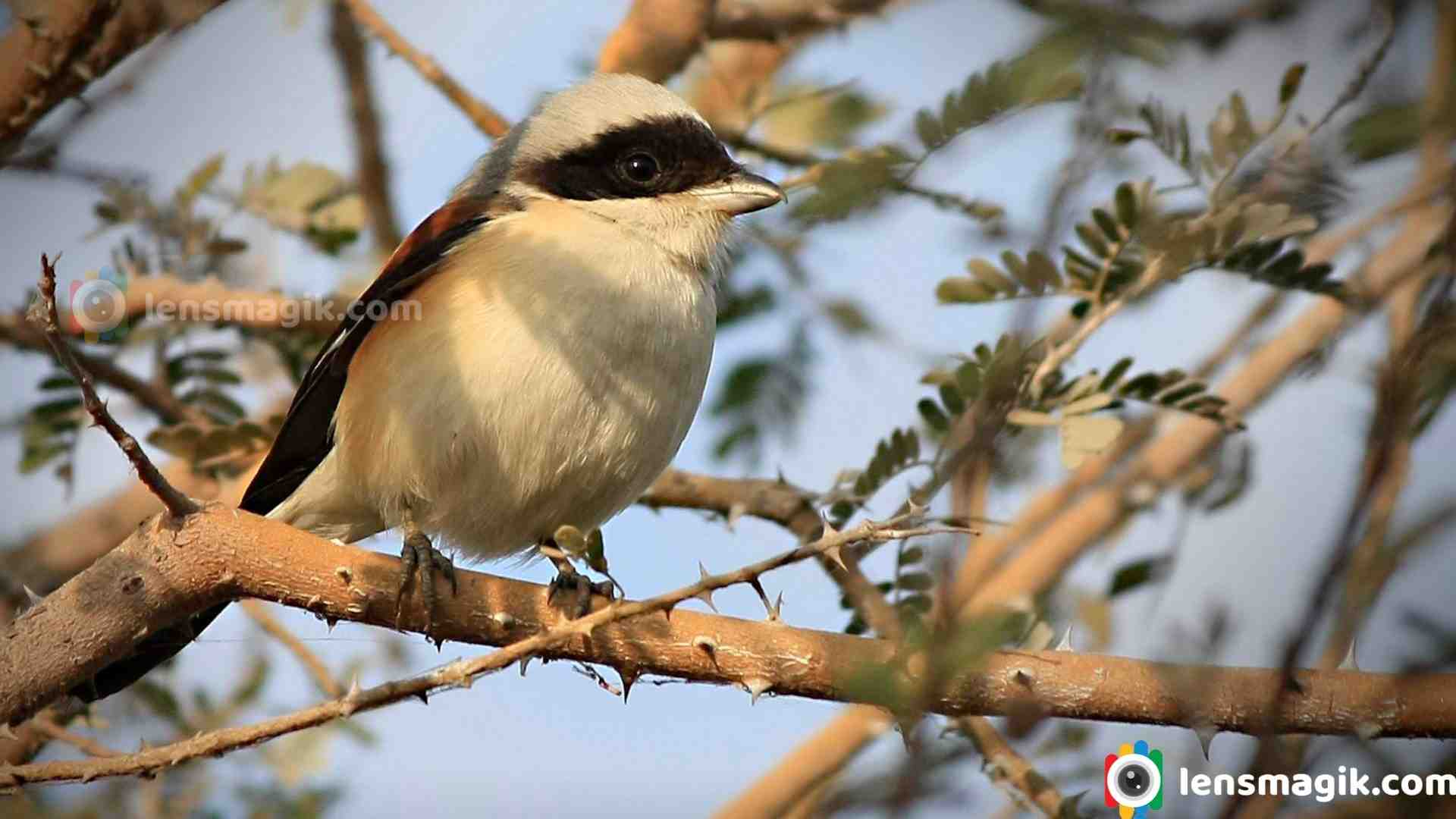
Description and facts about Bay Backed Shrike
- Bay Backed Shrike is smallish shrike.
- It has long black tail and maroon brown above parts with pale rump.
- Bay backed shrike Underparts are white.
- On the eye of Bay backed shrike there is a black strike like a bandit mask.
- Legs and bill are dark grey in color.
- It built nest in bush, cultivation area or scrubby areas.
- It lays 3-5 eggs .
- They found generally in Pair.
- For hunting they fly 2 to 2.5 mt high from ground and catch food within 10 mt radius .
- Shrike has good eyesight and sharp beaks.
- Status of Bay Backed Shrike is least concern in IUCN list.
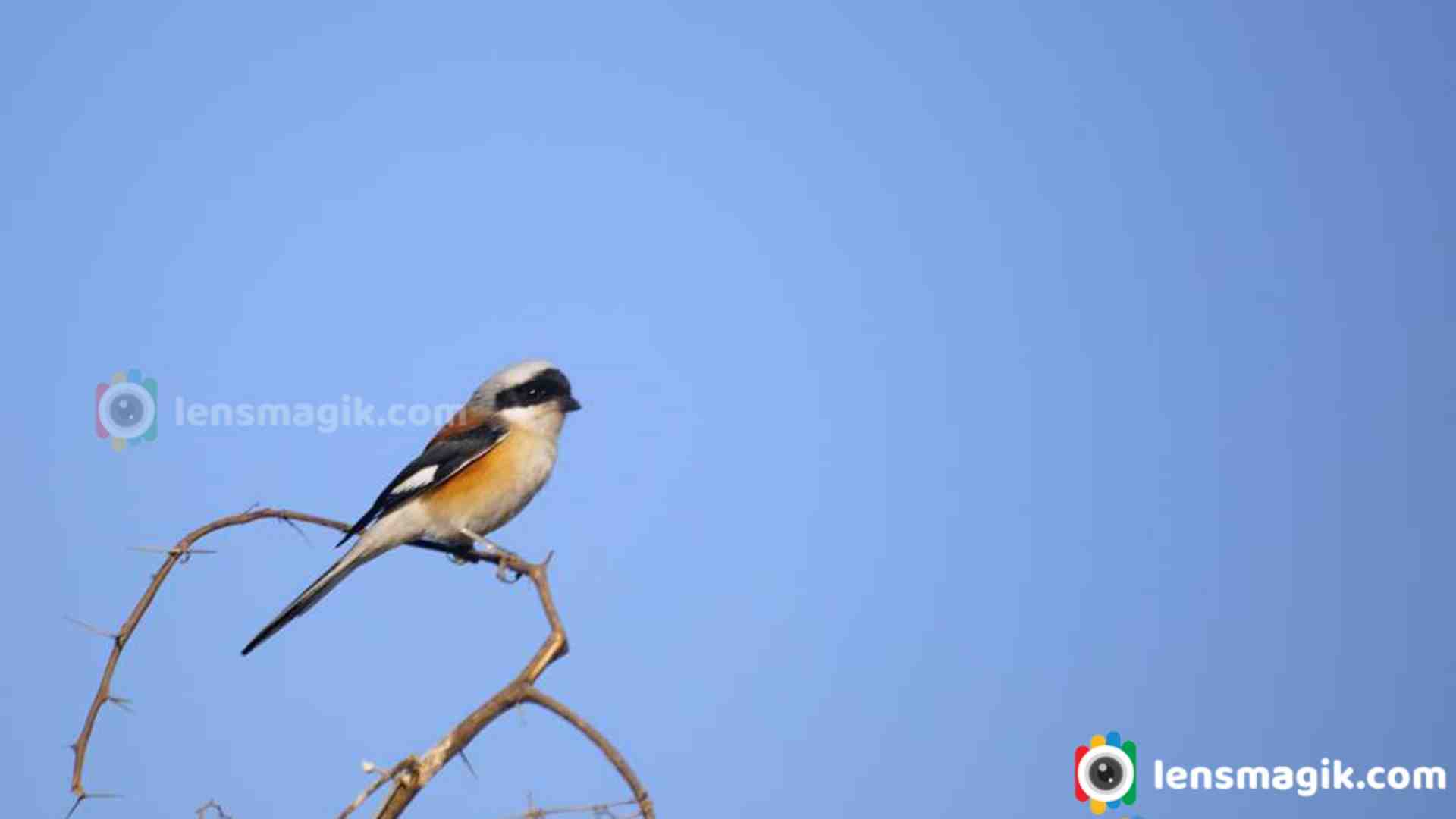
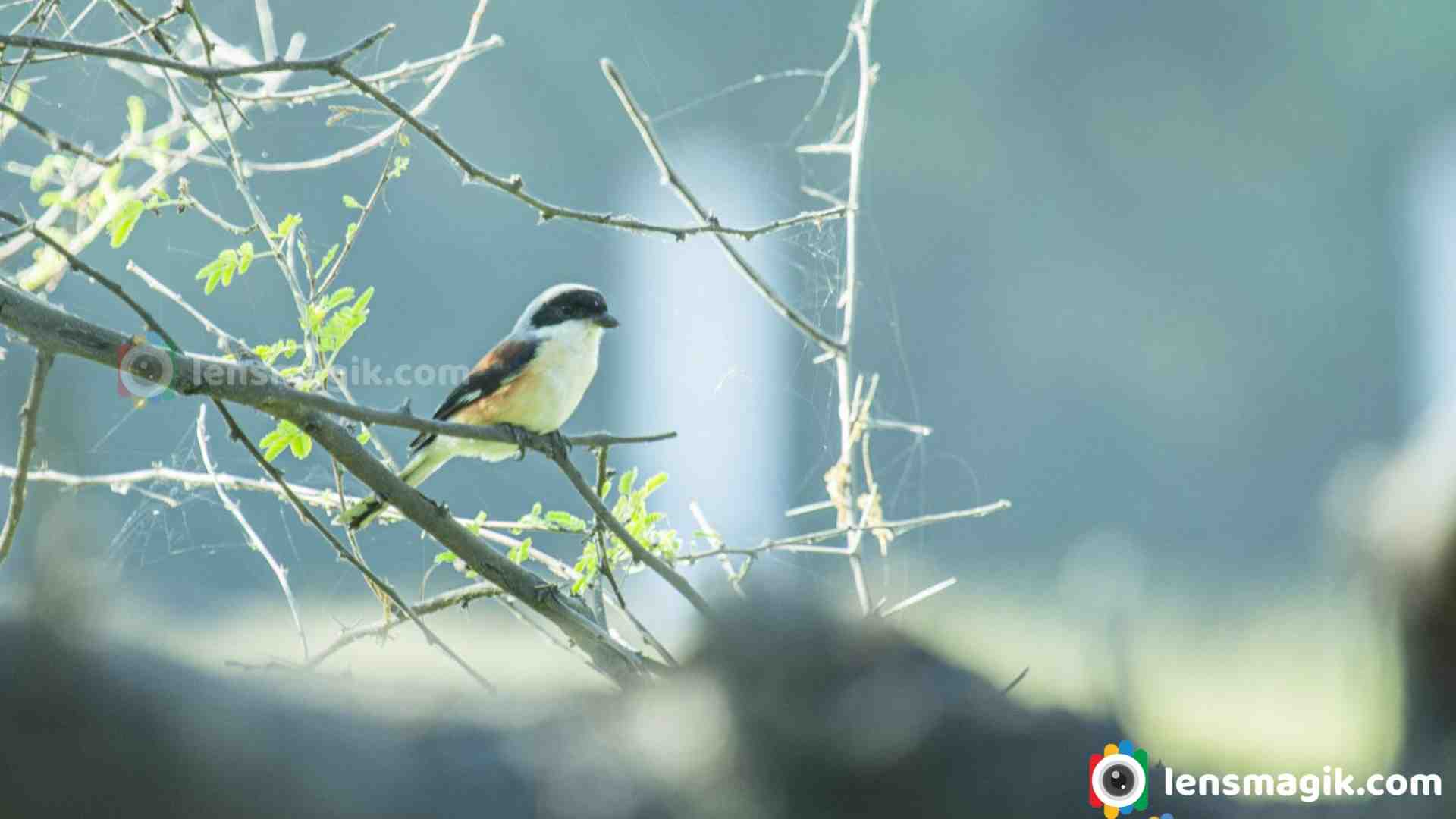
Bay backed Shrike is resident bird in Gujarat. It is found at many places like agriculture areas, farms, scrubby areas etc. I found it in Thol Bird sanctuary first time and then at agriculture areas outskirts it found easily. They find food easily near to agriculture areas and farms so they live near to them.
Camera Used : Canon 1000 D, Canon 6D, Canon 100-400 mm lens
Read more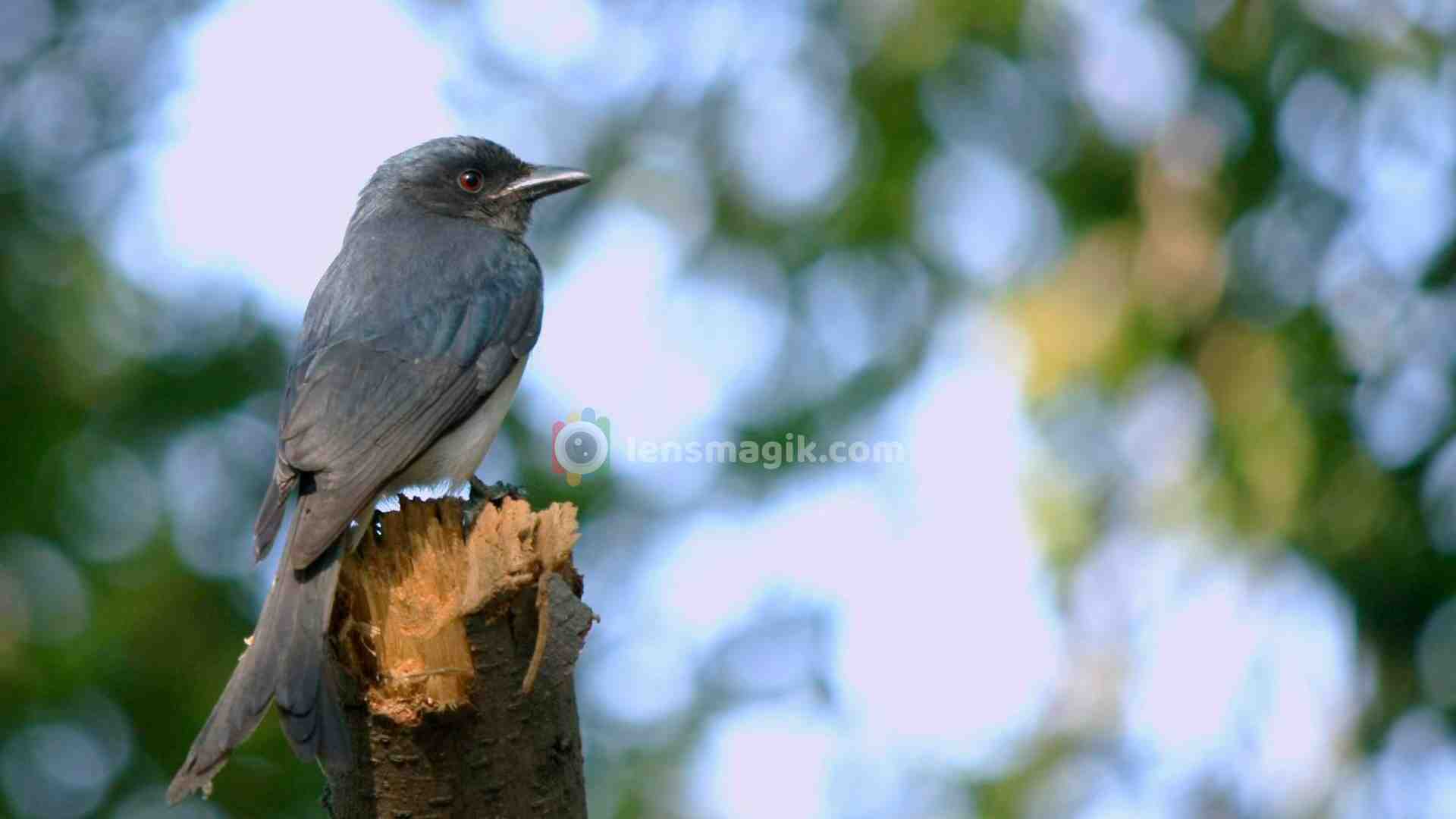
White Bellied Drongo is a spices of Drongo bird which is a member of Dicruridae family. The George Edwards which is English Naturalist used name The Fork Tail'd Indian Butcher Bird. It is generally found at open forest or dry scrub areas. I found it at Thol Bird Sanctuary near thol village , Kadi taluka. It is also a Dicruridae family bird which is very similar to black drongo only difference is white color in underparts. Tail is long and looks like fork .
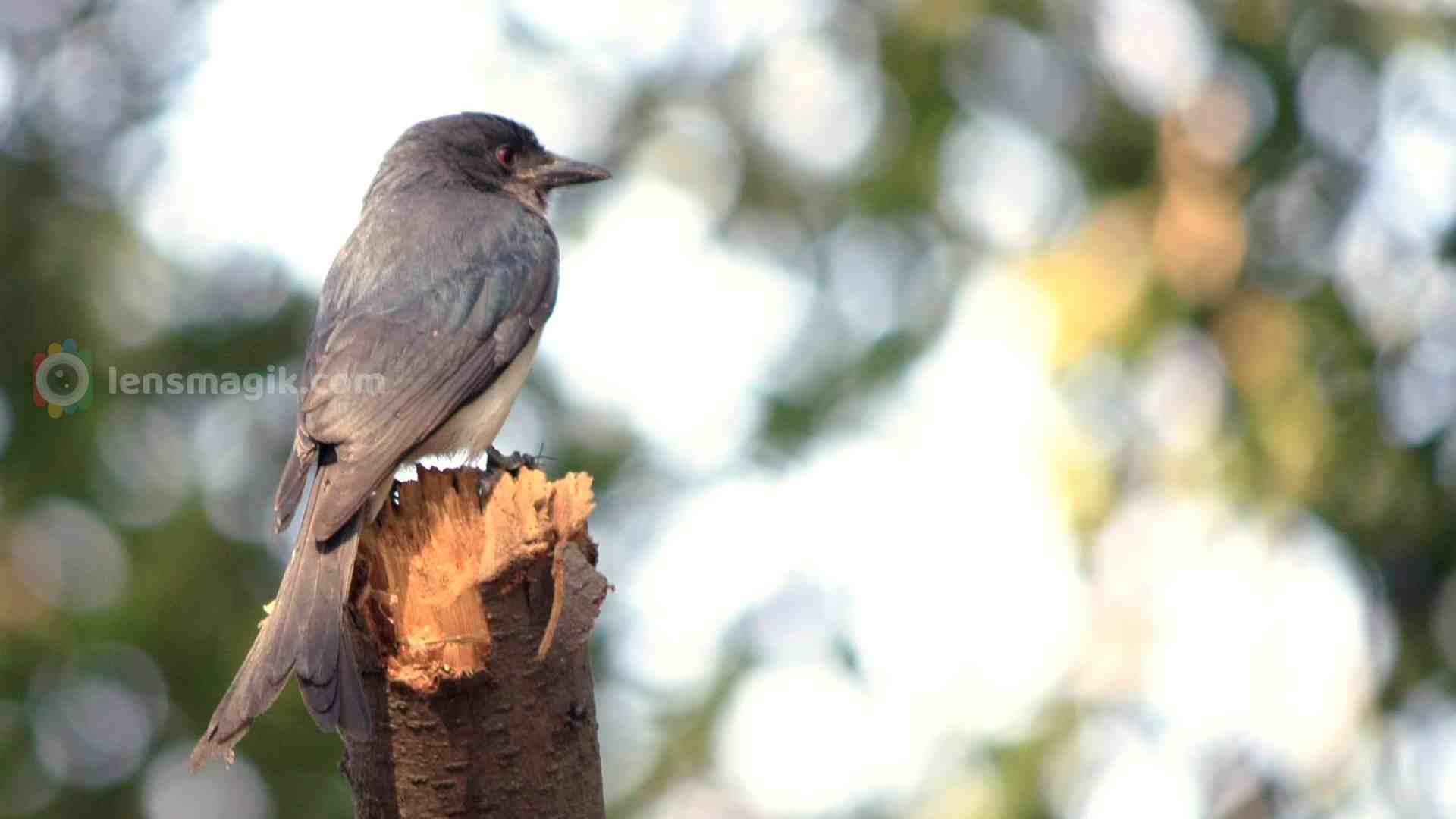
Description and Facts about White Bellied Drongo :
- White bellied Drongo is similar to Black Drongo . It has black body , greyish throat and belly is white.
- Tail is looks like fork and less deep then black drongo.
- Male has shorter tail then female.
- White bellied drongo found in forest and dry areas. It is a resident bird in India.
- They are in group of 2 or 3 generally.
- Breeding season for Drongo is February to July.
- They lay 2 -4 eggs on 20-30 feet height on tree.
Also a Black Drongo is very similar to white bellied drongo. In Thol Bird Sanctuary both spices found. Also they found an many other places of Gujarat because they are resident birds. Drongo bird is also very aggressive during breeding season and after laying eggs to protect them.
Photo Taken at Thol Bird Sanctuary, Gujarat
Gear used : Canon 1000 D with canon 55-250 mm lens
Read more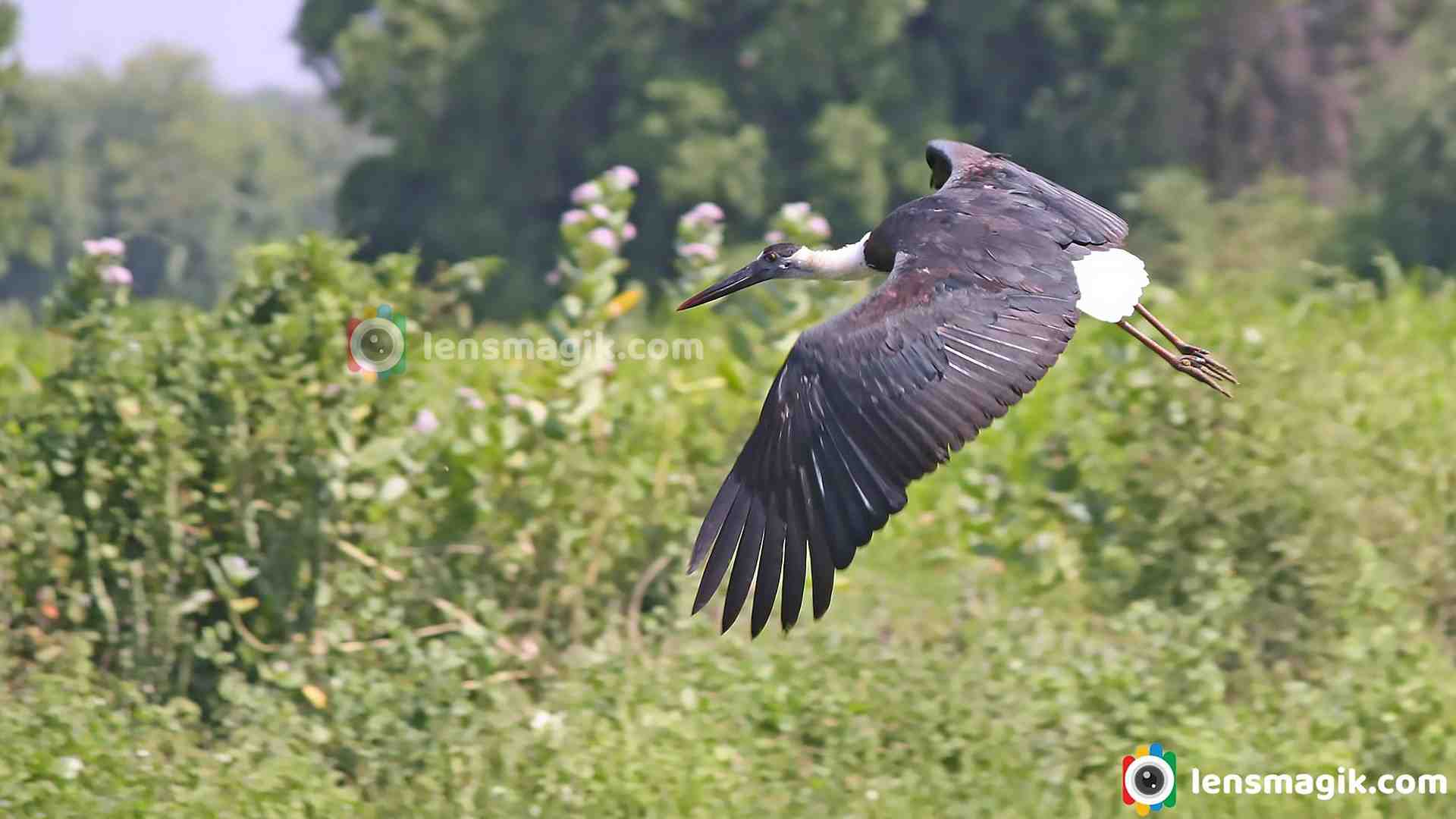
Asian Woolly-necked Stork is the large wading bird and it is also known as Asian Woollyneck . It is a spices of Stork family and large wading bird. It is widely spread spices and it breeds in Asia , India and Indonesia. It generally found at wetlands, agriculture field, cliff, and on trees. It also build nest on trees, mobile towers. Asian woolly necked stork found in Gujarat at many places like Thol Bird Sanctuary, Nal Sarovar Bird Sanctuary, Velavdar Sanctuary, and many more agriculture lands and wetlands, small ponds etc. I shoot it at agriculture land near vamaj village neat to kalol.
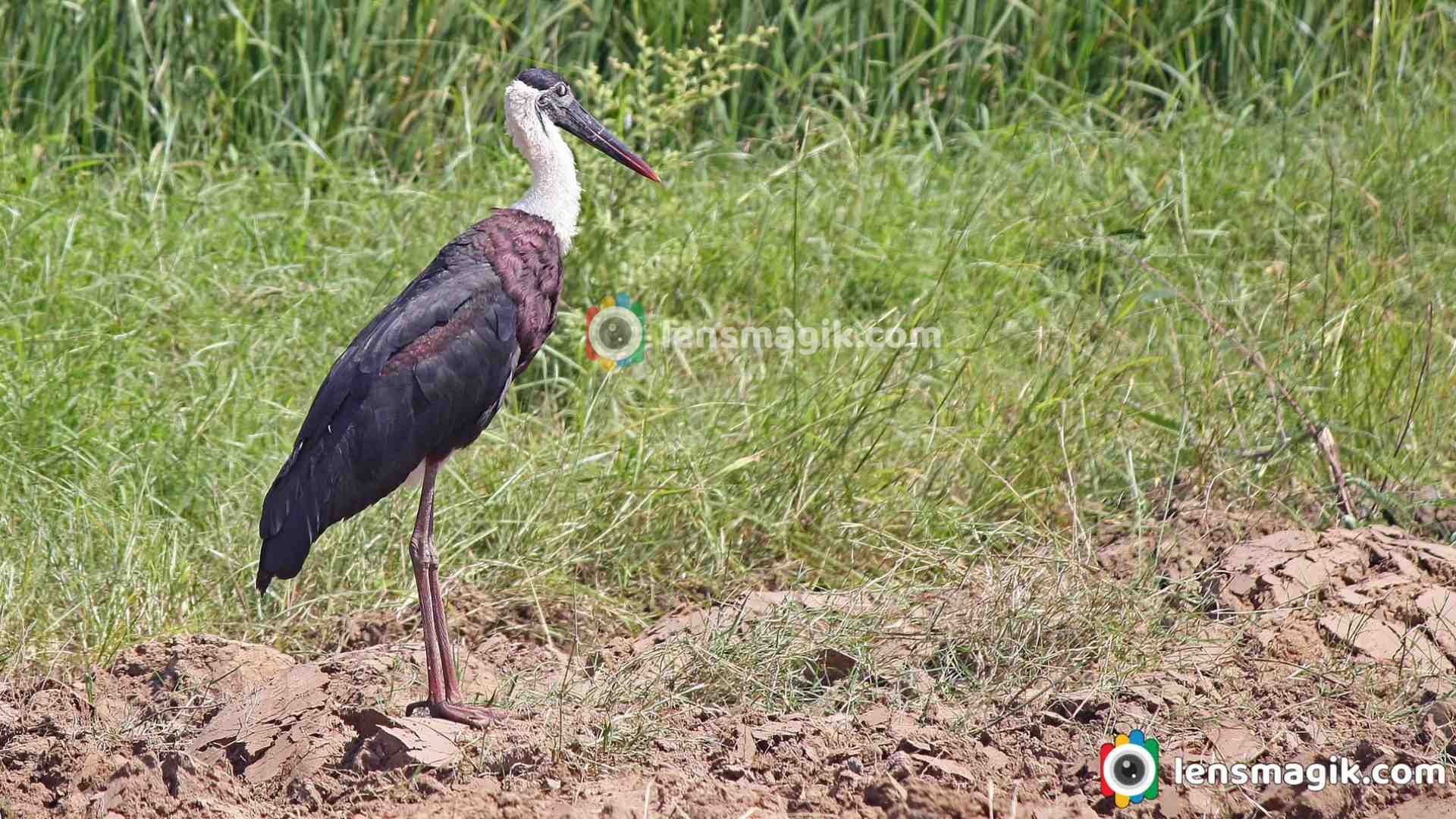
Facts and description about Asian Wooly-necked Stork :
- Binomial name of Woolly-necked stork is Ciconia Episcopus.
- Wooly necked stork is medium size stork in stork family
- It is around 75-92 cm in height.
- The iris of wooly necked stork is crimson or similar to wine red.
- Overall body is black in color . Neck is white and underparts are glossy purple or dark green. under tail and lower belly are white in color.
- It has long legs and heavy bill.
- Asian Woolly necked stork breeds singly. It breeds in India, Asian and Indonesia.
- They are attracted of fire in farms and agriculture because they found insects easily run away from fire .
- It has long and browed wings to travel long distance.
- They are generally in solo, pair or in 4-5 group. Flocks are generally found in summer when wetlands are very few.
- Asian woolly necked stork generally eat insects, reptiles and amphibians.
- They build nest in agriculture area on trees. They lay 2-6 eggs.
- Population of Asian woolly necked stork population is decreasing . It is now in near threaten ( NT ) in IUCN list.
Well Like Asian woolly necked stork the other stork spices found in Gujarat is Painted Stork too. Size of both are almost same but difference of color. In Gujarat there are lots of bird sanctuary where we can found woolly necked stork and painted stork. My nearest bird sanctuary is Thol bird Sanctuary. In Thol Sanctuary there are more than 150 spices found by bird watcher.
Gear Used : Canon 6 D , Canon 100-400mm lens
Location : Near vamaj village at agriculture area.
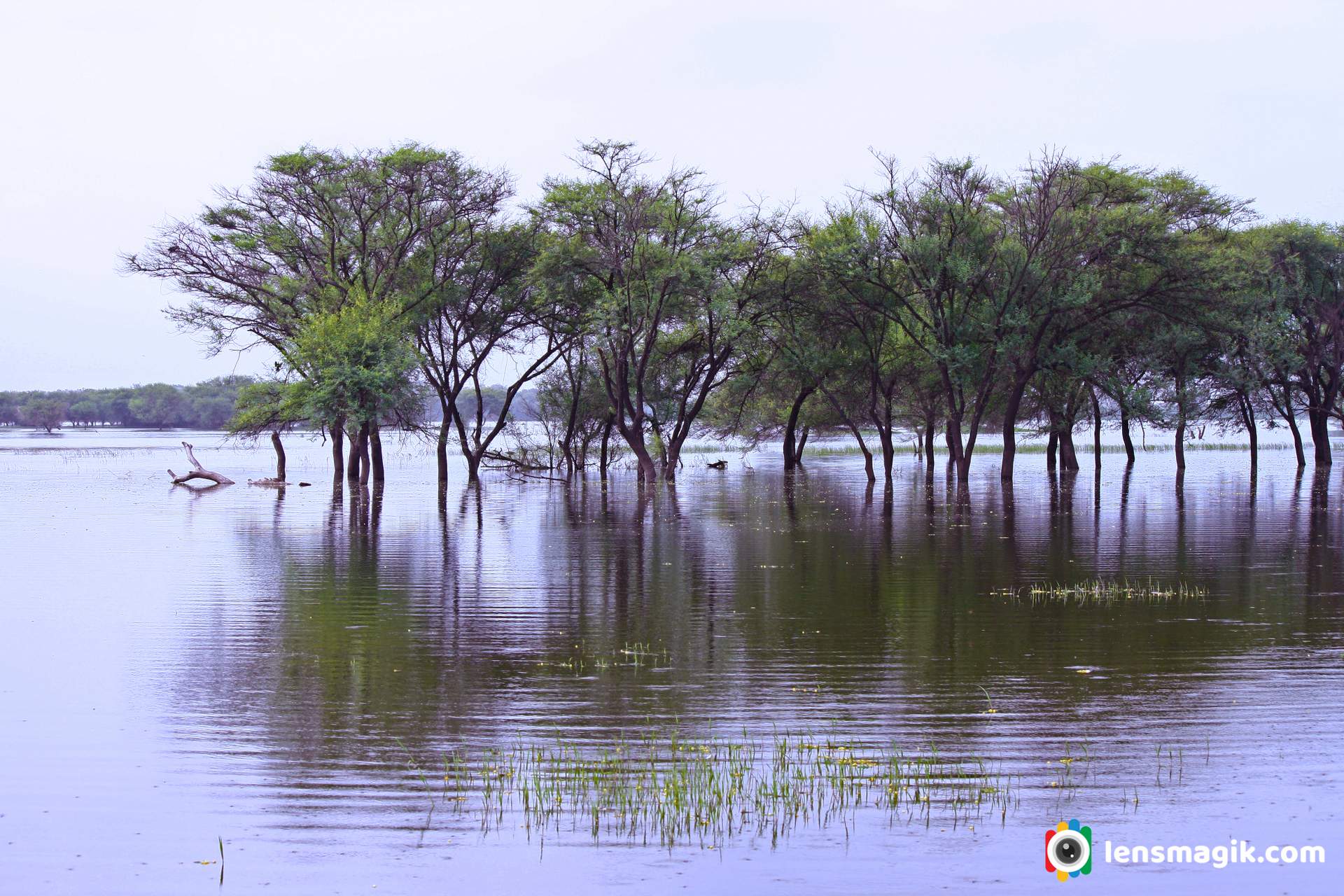
Thol bird sanctuary is located in Kadi Taluka in Mehsana District near sanand Gujarat. It is an artificial lake located near village Thol. In 1912 thol lake was built and it was declared as a Sanctuary in 1988. The main use of lake is use of water for irrigation. The Thol Bird Sanctuary or a Thol lake wildlife Sanctuary India is a habitat of more than 150 spices of birds. Also it is famous for migratory birds Flamingos and Sarus Crane which breeds here.
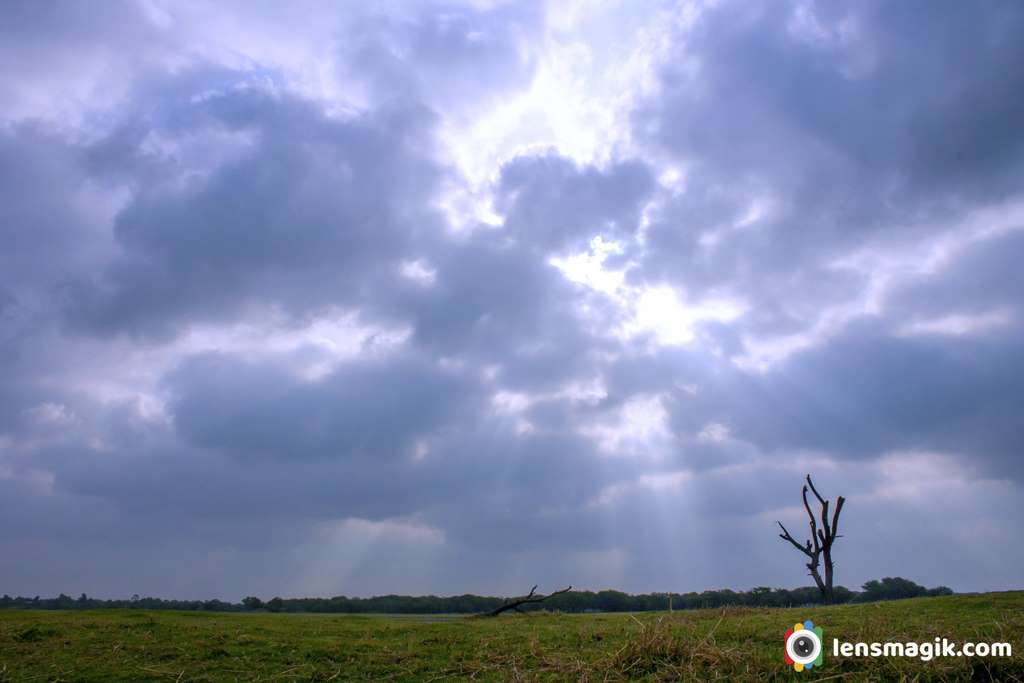
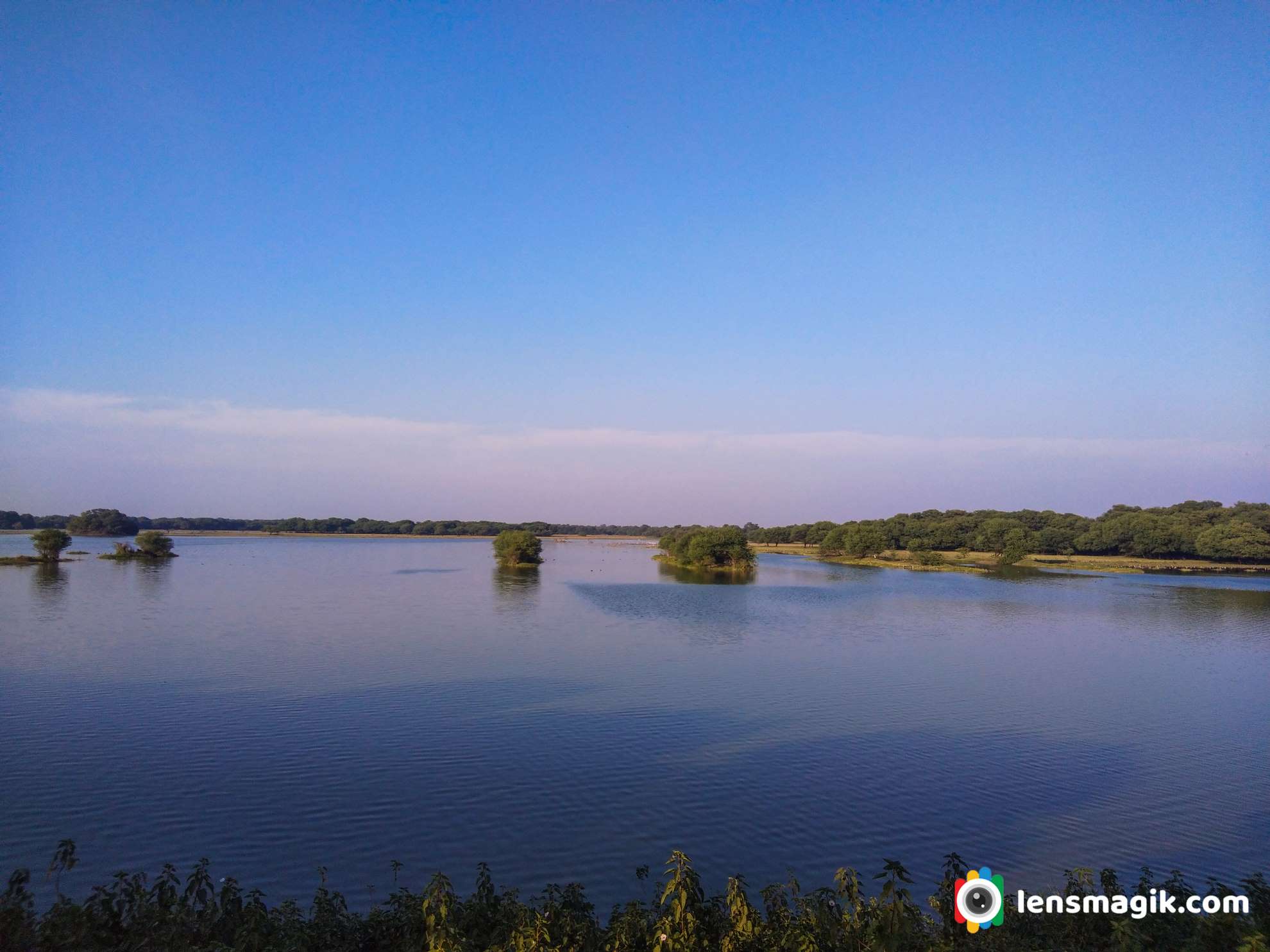
About Thol Lake / Thol Bird Sanctuary
Thol lake is located near Thol village and its area around 38000 acres. Lake faces all season winter , summer and monsoon. During winter temperature goes to 8 degree and in summer temperature goes to 43 degree. Thol lake is under control of Forest and Irrigation department of Gujarat. Thol lake water storage capacity is around 84 million cubic meters. Thol wildlife sanctuary is declared as Eco Sensitive Zone .
Flora and Fauna Thol Sanctuary :
Thol lake has many vegetation plants like Zizyphus, Acacia nilotica, Ficus, Capparis, Azadirachta indica etc. There are also some mix flora of Marshy and Aquatic plants reported in Thol Lake.
Thol lake is protected area and it is very good habitat for water birds. In thol bird sanctuary there are more than 150 spices of birds found . Among these more than 60 % of birds are water birds. Flamingo bird is most prominent bird of Thol Lake. Also Sarus Crane nest in large number here.
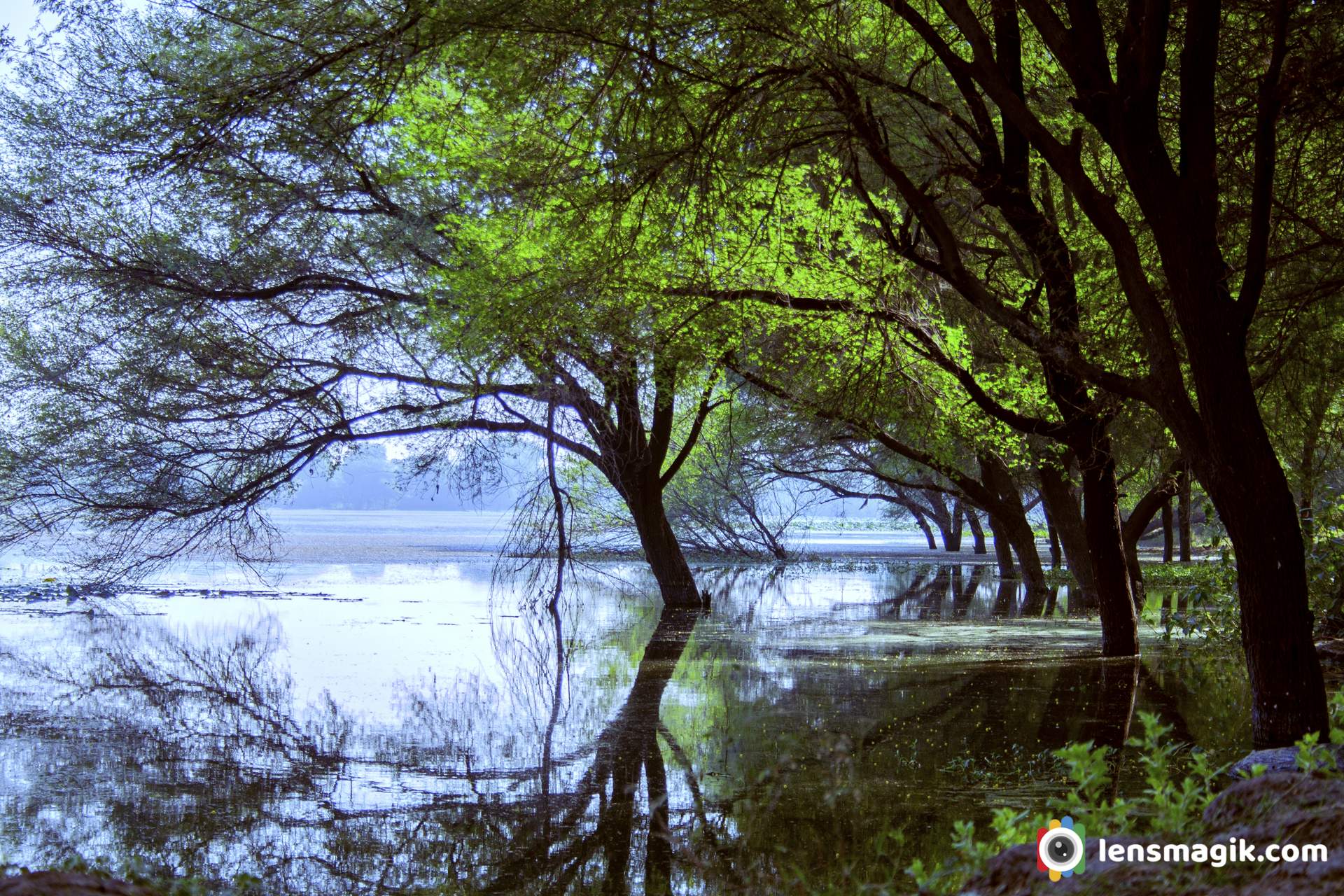
Famous Migratory Birds of Thol Lake
• Flamingos
• Sarus Crane
• Great White Pelican
• Mallards
• Bar Headed Geese , Grey Headed Geese
• Waterfowl
There are also some spices reported here like Dalmatian Pelican, Indian Skimmer, Greater Spotted Eagle, Indian Vulture and white rumped Vulture etc. In Mammals Bluebull, Blackbuck and Golden jackal reported here.
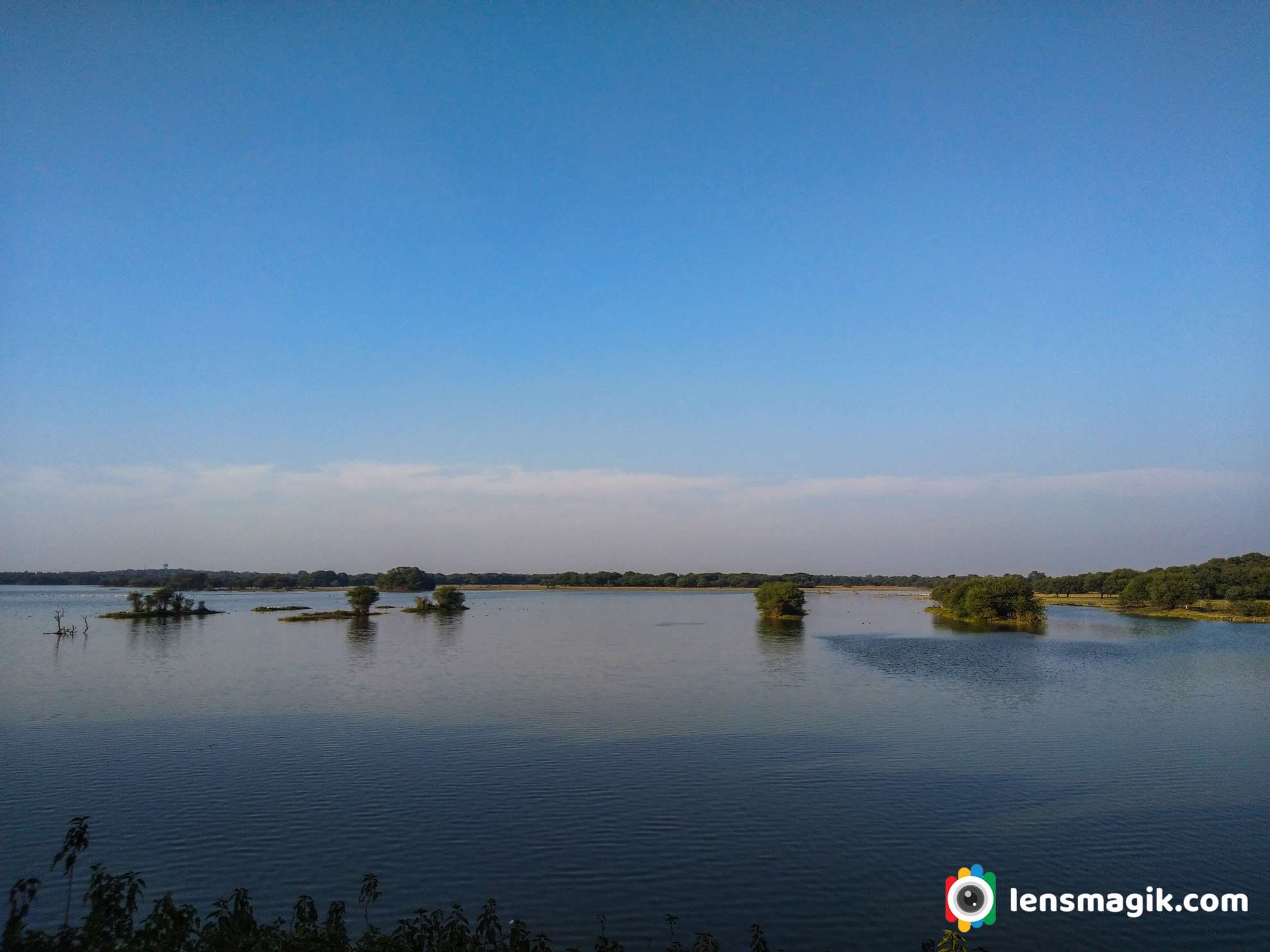
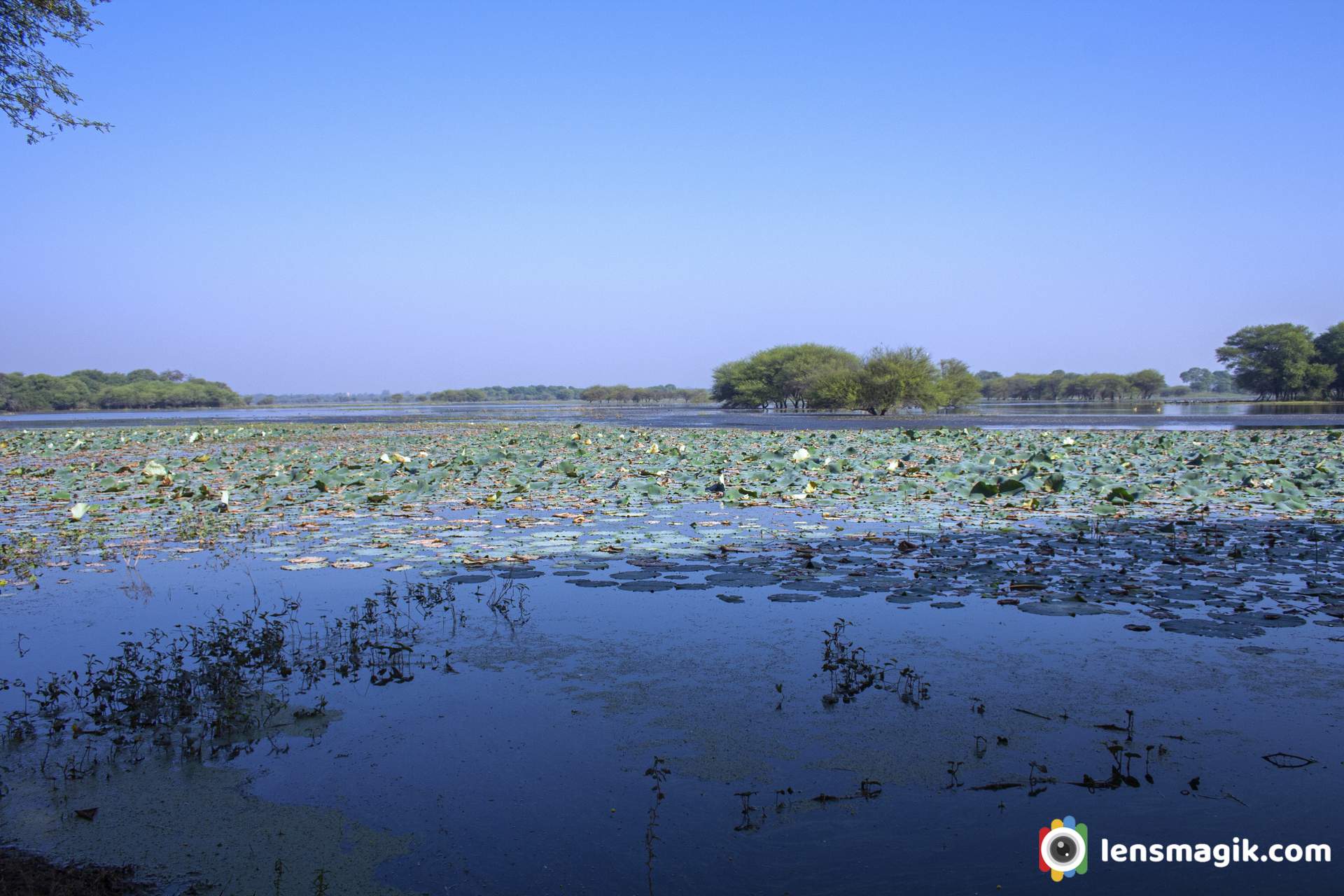
Thol Lake Timing and Fees :
Thol lake open everyday at 6 AM in morning and close at 5.30 PM in evening. Entry fees for Thol Lake or Thol sanctuary is 50 INR for per person. Also Camera fees extra at 200 INR and if you go via car then car fees also 500 INR. Foreigner fees are 10 $ per person.
Best Time to Visit Thol Sanctuary / Thol Lake :
Best time early morning for Thol Lake. In winter if you go before sunrise you can see Twilight sky amazing with lake shore and birds sound .During all season Thol lake has its own beauty. Every season you can visit at Thol Lake. But mostly during winter from November to March season is best for Thol Sanctuary visit. Because during winter lots of Migratory birds came here and stay for long time so for birding winter season is best at Thol Lake. Also during summer some of birds stays here like flamingos and pelicans, geese etc. So you can also see them in summer too. Also during summer water level of lake is low so may be the birds you can get in deep or sometimes closer. During monsoon most people don’t visit but if you like macro photography then you must visit Thol lake in monsoon. You can get some excellent macro subjects like waterdrops , Spiders, Insects etc.
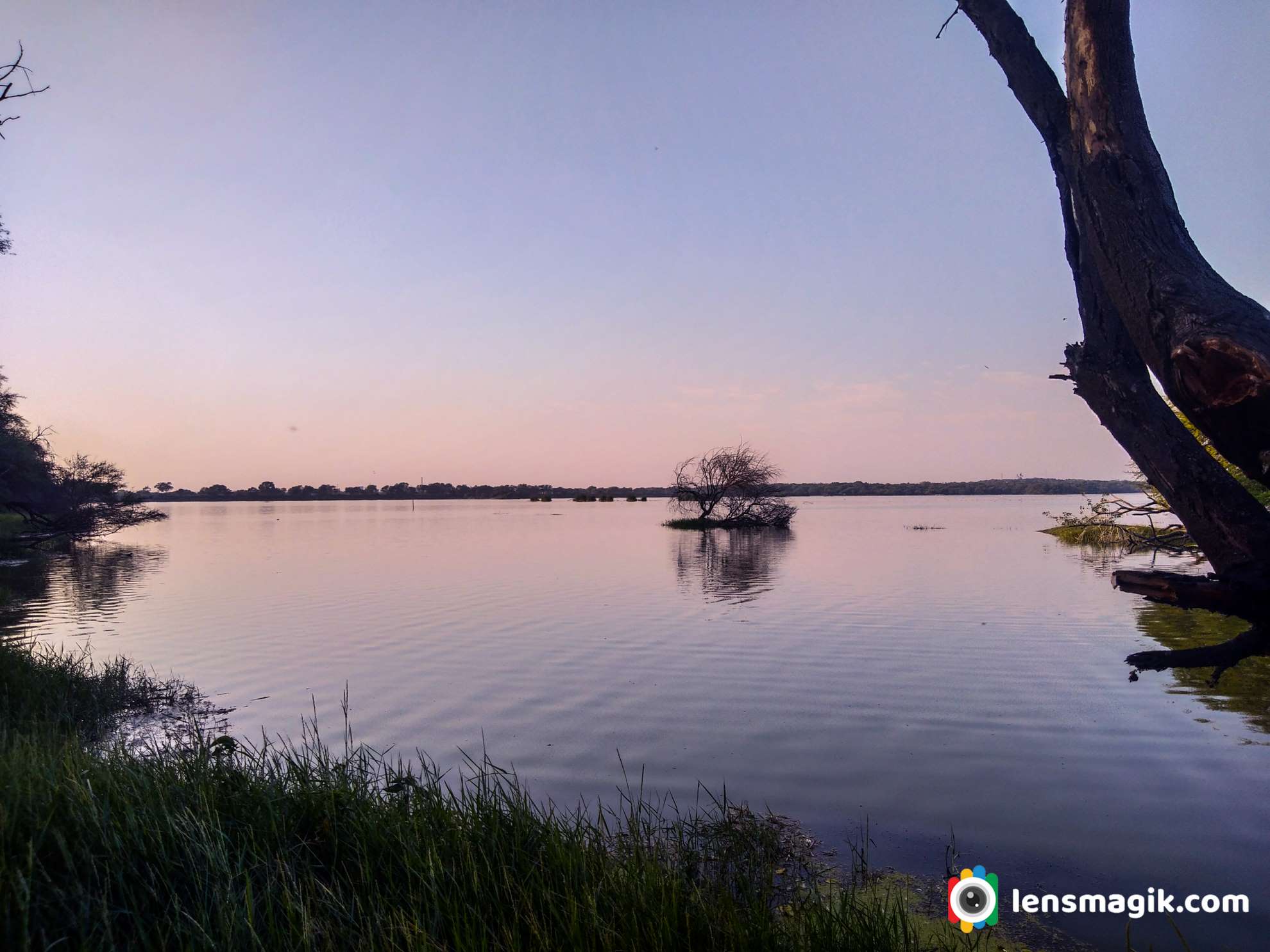
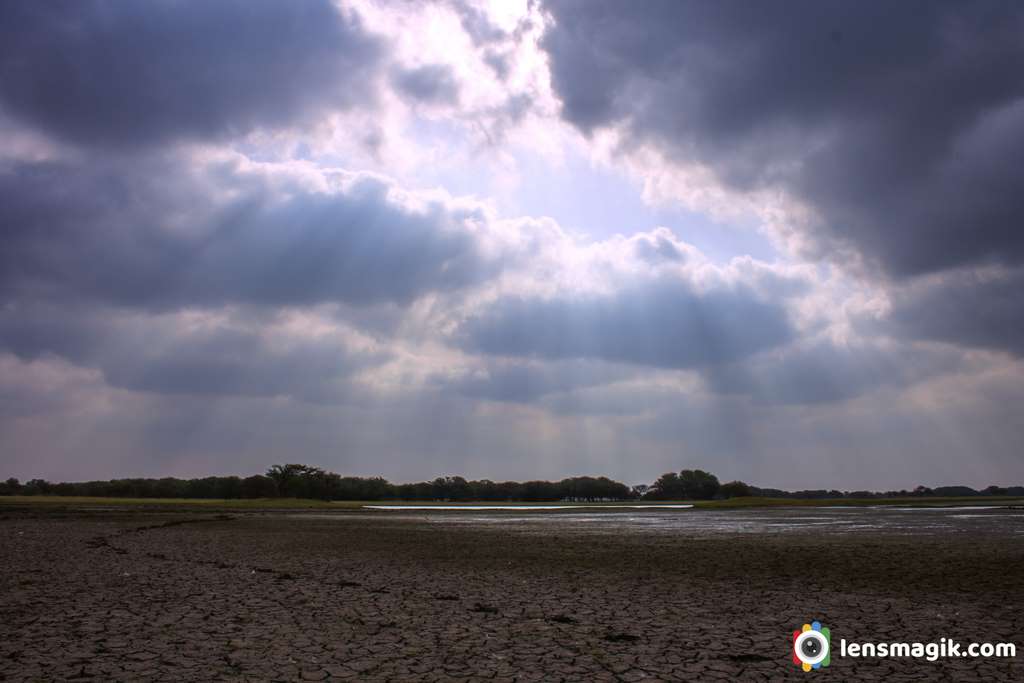
What to do and What not to do in Thol Lake / Keep in mind while visiting sanctuary in India :
• Keep silence in sanctuary
• Maintain discipline
• Keep sanctuary clean
• Do not throw plastic waste anywhere in sanctuary
• Protect wildlife
• Observe birds, mammals etc and protect them and identify them
• Follow rules of wildlife protection act -1972
• Don’t disturb birds and animals
• Don’t enter in sanctuary with liquor and inflammable objects
• Don’t make loud noice.
• Enter in sanctuary with permit only and keep receipt till you leave sanctuary
• Don’t feed birds and animals
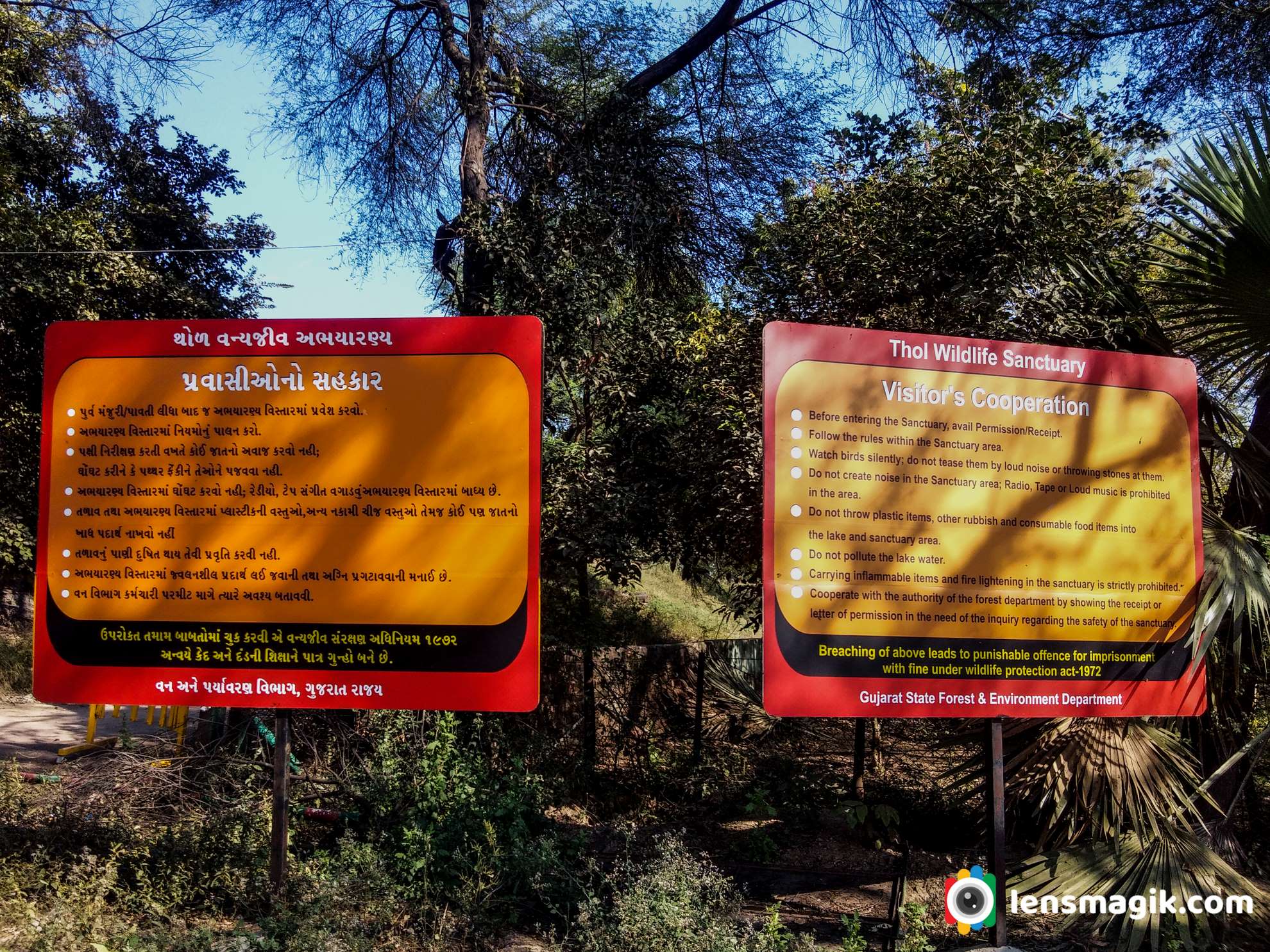
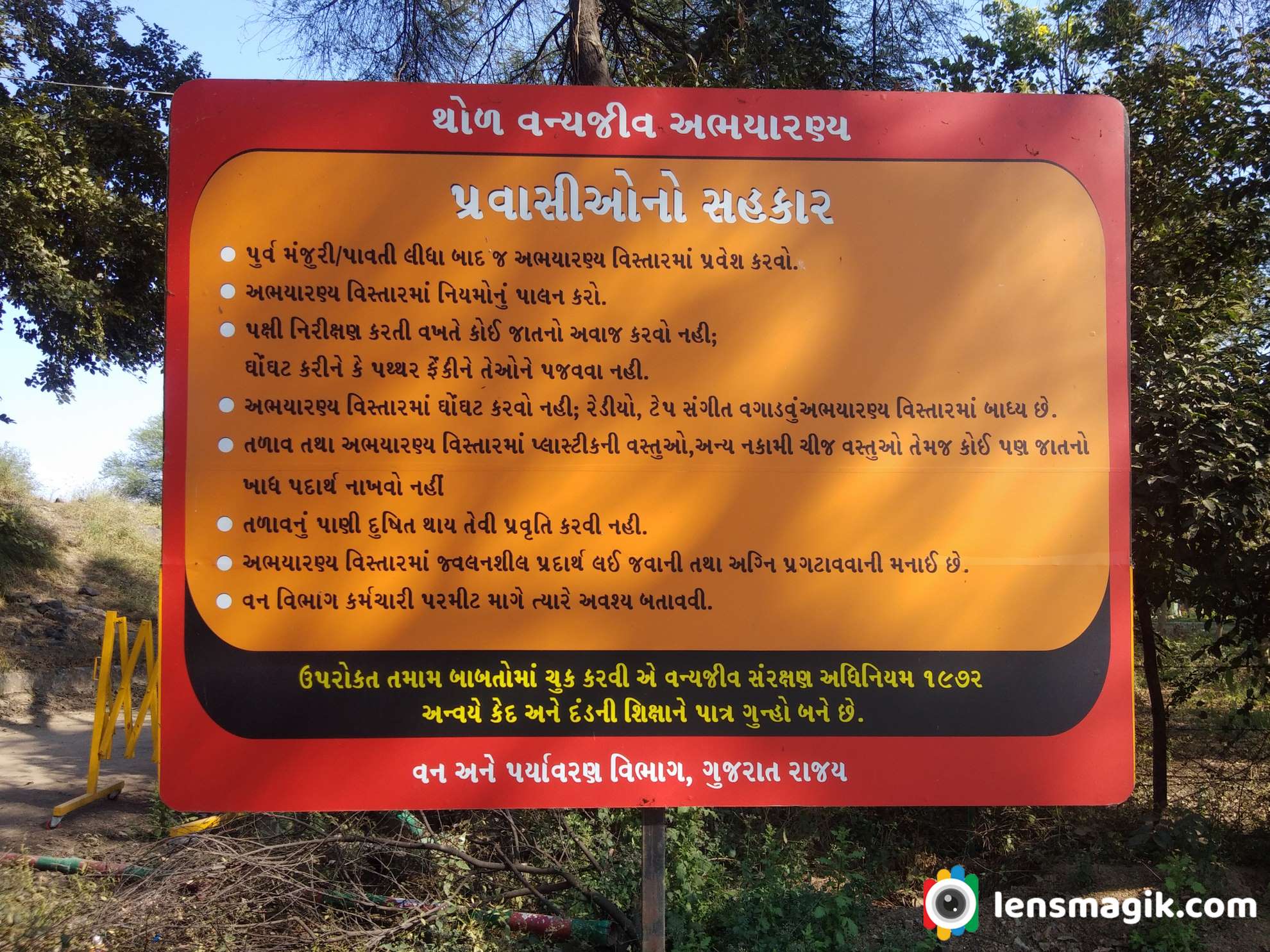
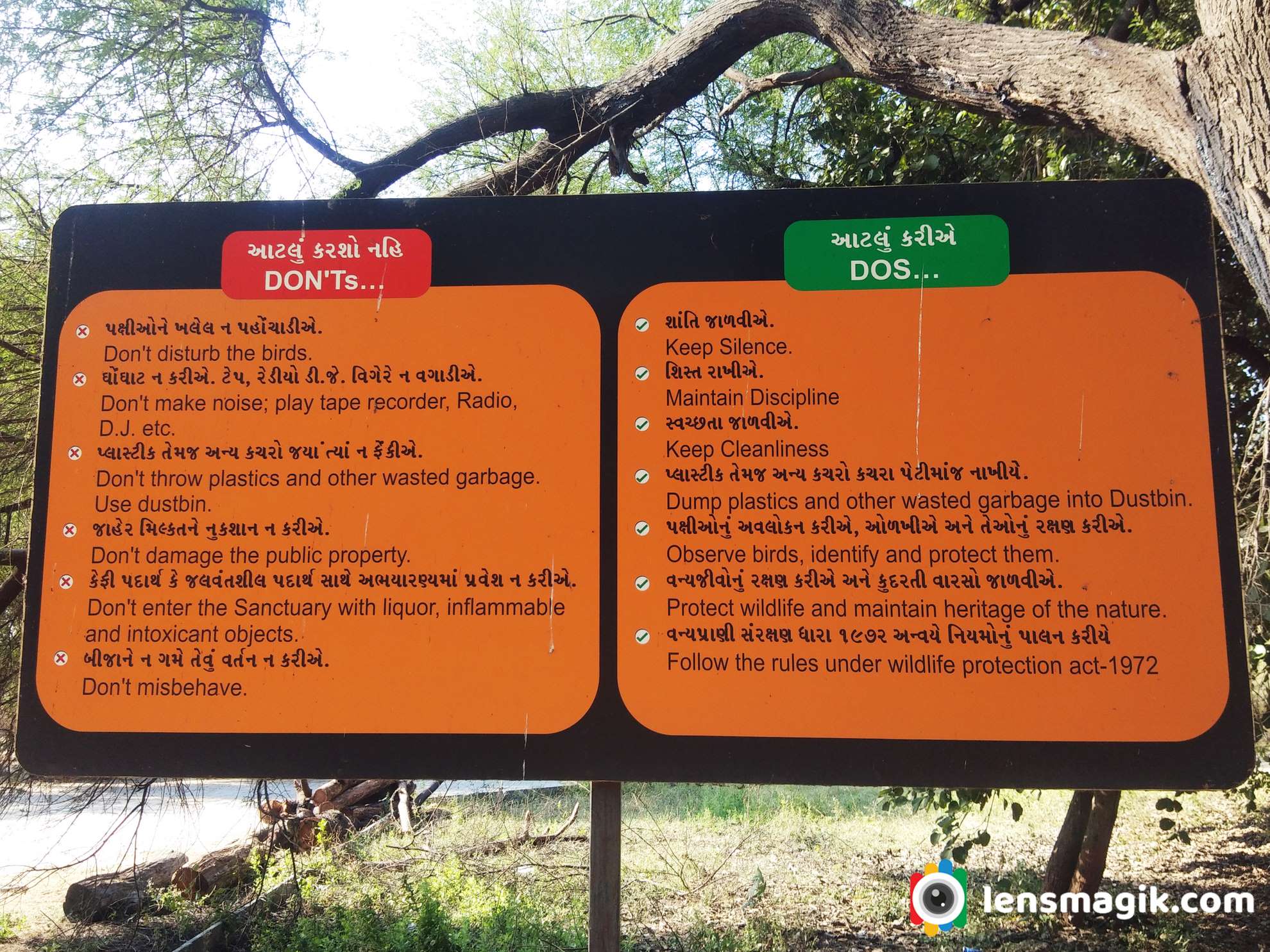
Where to Stay near Thol Lake :
Well near to Thol Lake there are not good places to stay at night but you can go near to destinations like Kadi, Kalol or Gandhinagar , Ahmedabad where you can get good places to stay at night. Nearest I suggest Kalol around 15-18 km or you can go Ahmedabad around 25 km.
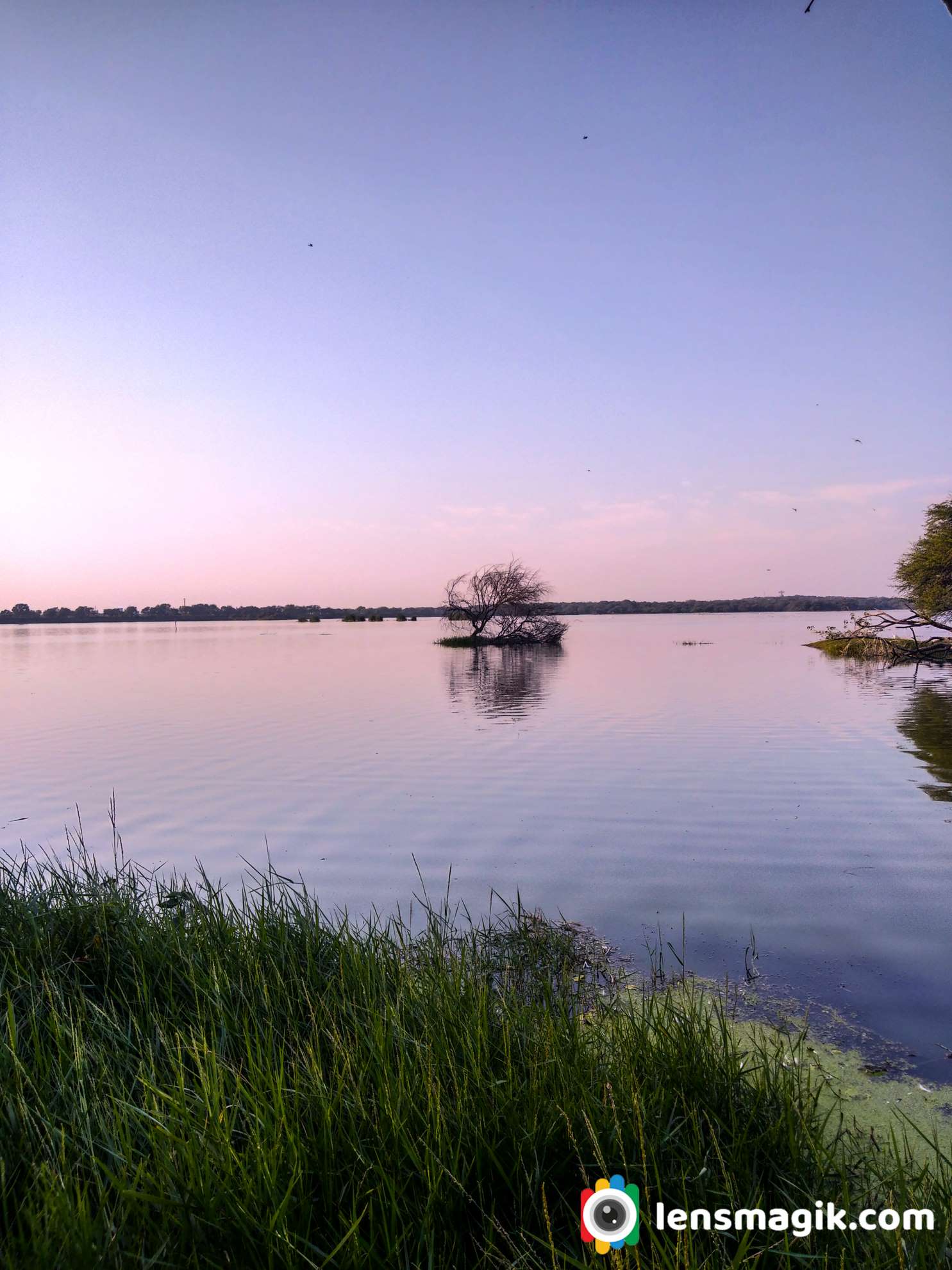

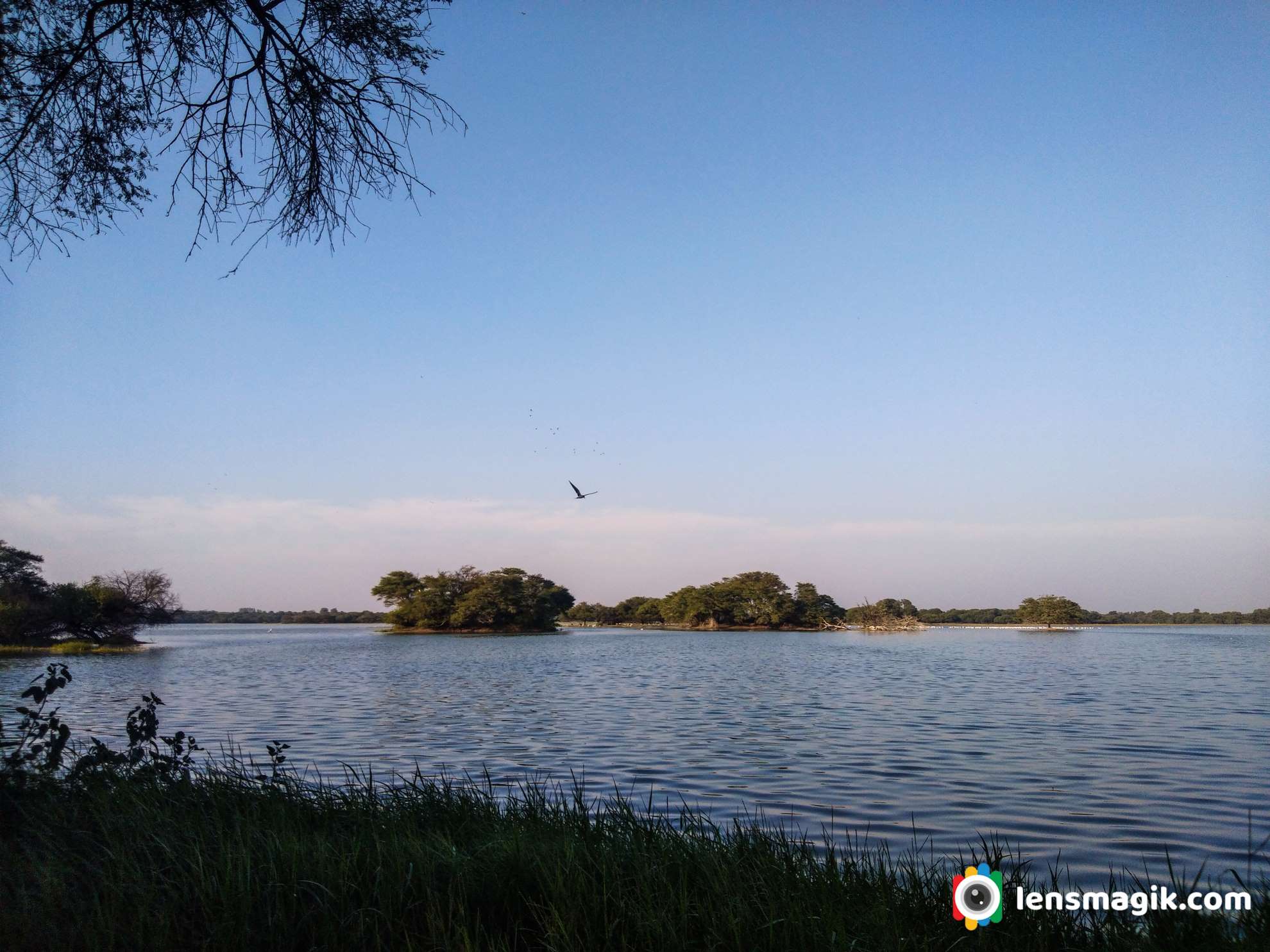


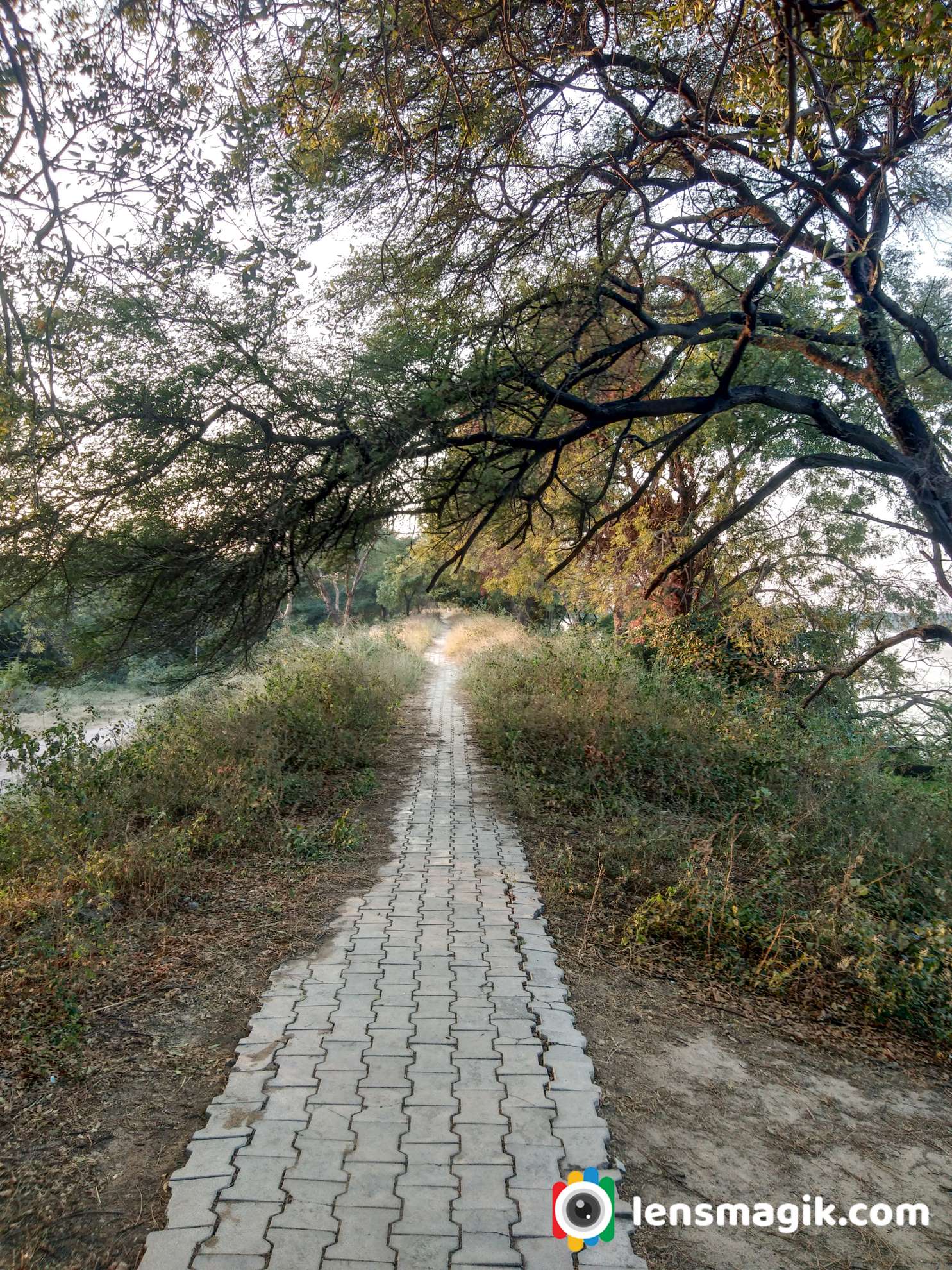
Places to Visit near Thol Lake :
If you are staying at Ahmedabad then go for Ahmedabad Darshan , Pol area of Ahmedabad and Adalaj Ni Vav ( Heritage places ) etc. Also go for fast food test at night at Manek Chauk and SindhuBhavan road there are lots of option for food lovers like Urban Chauk, Freezbee etc.
If you stay at Gandhinagar then visit Mahatma Mandir at Gandhinagar, Sarita udyan , Akshardham Temple etc.
I would suggest Modhera Sun Temple if you had some more time which is around 100km from Ahmedabad. For bird lovers and bird photographer I would suggest visit Little ran of Kutch (LRK) during Winter season, Pariej Lake, Indroda park Gandhinagar, Jessore Sanctuary Banaskantha etc.
How to Reach Thol Sanctuary :
Nearest airport is Ahmedabad and from Ahmedabad thol lake distance is around 30-40 km
Also for Railway station is Ahmedabad because you can get all frequency and destinations from Ahmedabad railway station.
Bar Headed Goose is high flying geese generally found in Asia. Bar Headed Goose and Bar Headed Geese both name you can use and both are same. It breeds in central Asia. It found many states in India during winter. In India its a winter visitor and breeds also during the month of November to April. For identification its looks simple because of it looks separate from other goose. There are black bars on head makes them different from other goose. It found in lakes and grasslands. I shoot them in Thol Bird Sanctuary near Sanand, Gujarat.
Migratory Birds In Gujarat : Bar Headed Geese/ Bar Headed Goose
You can call Bar Headed Goose or Bar Headed Geese also. It is migratory bird in India and also it can fly long distance and also at high altitude too. Some description and interesting facts about bar headed goose are as follow
- Bar headed goose size around 70-75 cm length and weight around 2-3.5 kg
- Bar headed Goose color is pale grey. It is easily different from other geese birds as it has black color bars on head so it is called bar headed goose.
- Bar Headed Goose call is like typical goose honking.
- Bar Headed Goose breeds in Central Asia near mountain lake. Also breeds in winter in south Asia.
- Bar Headed Goose lays 3-8 eggs at a time.
- Bar Headed Goose known for high altitude flying bird because it fly over the Himalayas. Before crossing Himalayas it migrate from South Tibet, Kazakhstan, Mongolia and Russia.
- Bar Headed Goose is one of the Wolrd's Highest flying birds.
- Some report says it fly over Mount Makalu ( fifth highest mountain in World ) around 27825 ft and also from Mount Everest around 29029 ft but this report has no verification but we must say that Bar Headed Goose is high Altitute flying bird. It is an interesting subject to study for Naturalist that why Bar Headed Goose flying so high and extream altitude.
- Bar Headed Goose built their nest in Tibetan Plateau.
- Bar Headed Goose has little large area of wing than other goose because of their weight.
- Bar Headed Goose can migrate around 1600 km in a day.
- Rajhans is the Gujarati name of Bar headed Goose.
- Bar headed Goose eat plants and invertebrates.
- Bar Headed Goose is Least Concern in IUCN list.
- Bar headed Goose Binominal name is Anser Indicus
In Thol Bird Sanctuary lots of migratory birds found and more than 150 different spices of birds found . Main attraction of Thol Bird Sanctuary is Greater Flamingo, Lesser Flamingo, Great White Pelican , Bar Headed Goose, Ducks, Waders, Blue Throat, Flycatcher, Greater spotted Eagle, Pochard and many more.
During winter to summer season this bird is found at Thol Lake. I often travel to Thol Lake because its very near to my house. I reach early morning and back after half day. This time Bar headed goose is very close to me. I am so lucky that i got very sharp and clear blurred picture.The bird looks awesome in solo picture and in duo and also in a group. Bar headed goose is very shy bird so its is too difficult to get them very close. They are also high altitude migratory birds and passes over Himalayas from migration time.
Camera Used : Canon 6D, Canon 80 D, Canon 100-400mm lens
Location : Thol Bird Sanctuary, Sanand, Kadi
Places to Visit near Thol Bird Sanctuary : Adalaj Ni Vav, Motera Sun Temple, Little Rann of Kutch, Mahatma Mandir Gandhinagar.
Read more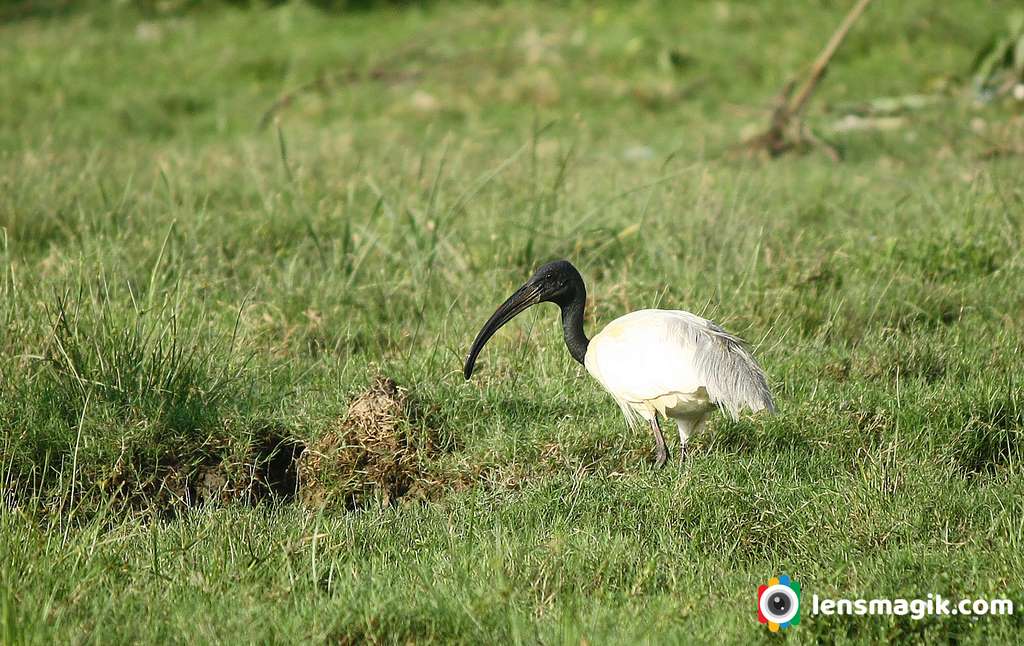
Black Headed Ibis has various names like Black Necked Ibis, Indian White Ibis and Orientle White Ibis. The Binominal Name of Black Headed Ibis is Threskiornis melanocephalus. It is large size water bird found in South Asia many regions. It is found in many low water areas and aslo breeds here too. Black Headed Ibis is also found in resident areas near me also where some low water areas. Near to me Black headed Ibis also found in Thol Bird Sanctuary, Nal Sarovar Bird sanctuary, Pariej Sanctuary and many more places like farms, ponds, low grasslands etc.
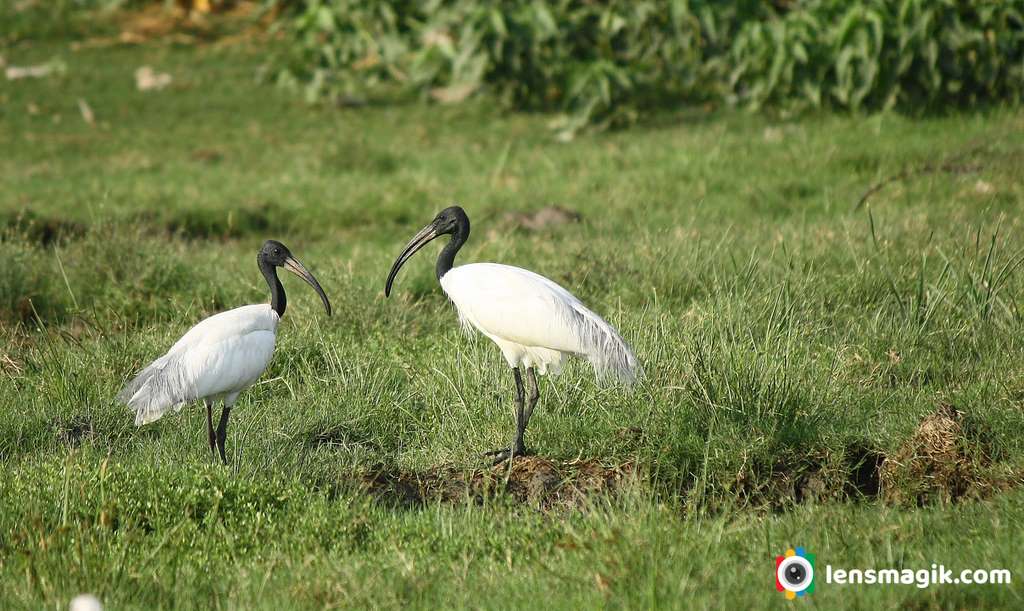
About Black Headed Ibis Bird :
- Black Headed Ibis is one of the large water birds spices.
- Its lenght about 65-75 cm .
- It has white plumage and black head and neck. Its beak is curvy.
- Adult male has grey feather at tail during breeding season.
- Black Headed Ibis are native to Bangladesh, China, India, Malaysia, Indonesia, Japan, Nepal, Shri Lanka, Combodia, Thailand etc. They are migrant to Japan, Koreaand mongolia.
- Black Headed ibis is versatile to use man made habitats. It generally found in ponds, Canals, riverside, lakes, crop fields, garbage dumping etc.
- It build nest near wetlands. It build platform for nest and made from sticks, grass and threads.
- Black Headed Ibis are treatened so its population is decreasing but they are not in endangered spices.
- Ibis can do aerating the soil while probing beak in soil for insects.
- Ibis birds are predators for snakes, monkeys, crows and alos birds of prey.
- Ibis sleep together on trees at night. They are active during day.
- Ibis lifespan is up to 25 years.
- Favorite food of Ibis are snail, fish and aquatic animals but they can also eat bread and popcorns too.
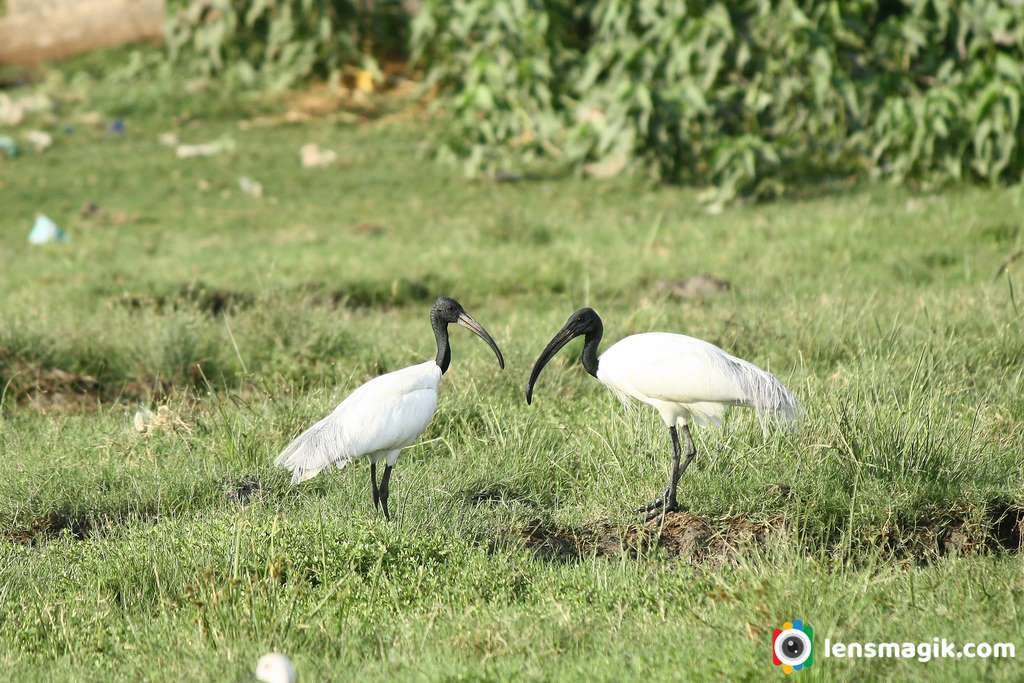
In resident areas there are also lots of birds you can find. At the end of resident area small pond and lakes made by humans and they are really good habitat for some birds. Ibis birds are very familiar to humans so they can live near the resident areas. Its beak is looking attractive because of curve and also scared to others. In resident birds of Gujarat ibis bird found many farm areas and wetlands, grassland, canals etc. It is also found in bird sanctuary Gujarat like Thol Bird Sanctuary near sanand, Nalsarovar Sanctuary etc. Both sanctuary are nearest places to my home so i oftenly visit both sanctuary. During winter these both sanctuary are full of migratory birds.
Gear Used : Canon 6D, Caon 100-400mm lens
Read more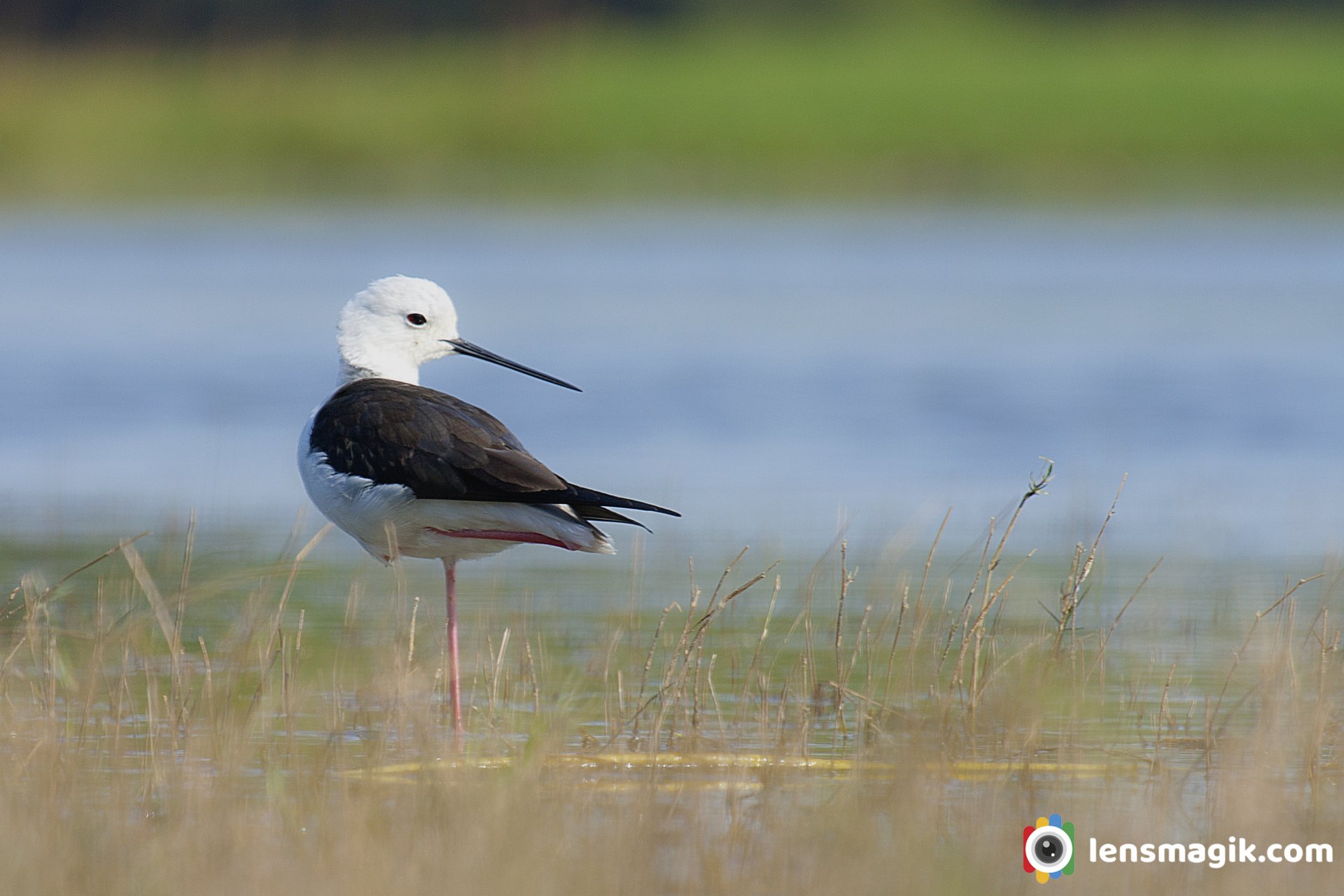
Black Winged Stilt is a wader bird from stilt family. It is widlely distributed bird in Aisa, Africa, Europe. The scientific name of Black winged stilt is Himantopus . In Gujarat it is widely found in low water wetlands and some ponds and farms. Black winged stilt widely found in Thol Bird Sanctuary, Nalsarovar Sanctuary and their ourskirts. It is black and white bird with long legs and small in size. Not too small but medium size like Black Tailed Godwit bird.
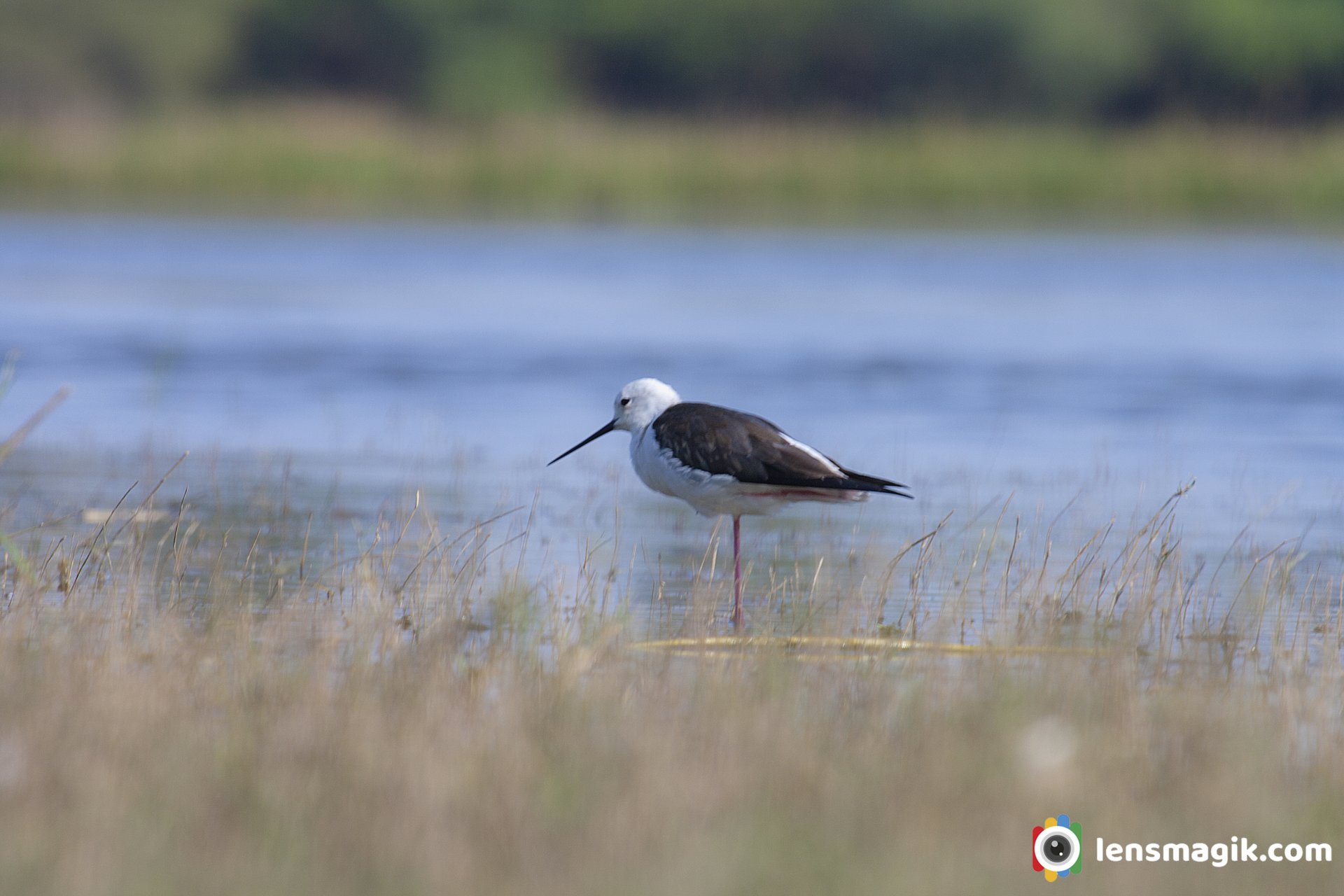
About Black Winged Stilt Bird :
- Black Winged Stilt bird size 32-36 cm for adult.
- They have long and thin black bill.
- Black winged stilt legs are pink in color and also long too.
- Black winged stilt head is white in color and neak is black in varying.
- Male has black back and greenish glow and female has brown hue.
- It has 5-7 subspices and sometime it reffered as Common stilt.
- Black winged stilt breeds in small pond, lakes, marshes.
- Black winged stilt eat mainly insects.
- Black winged stilt pick their food from water or sand.
- It built nest near water and easily spotted. Also built nest in small group. Sometimes built nest with Avocets.
- Black Winged stilt is one of the spices to which the agreement on the conservation of African Eurasian migratory water birds.
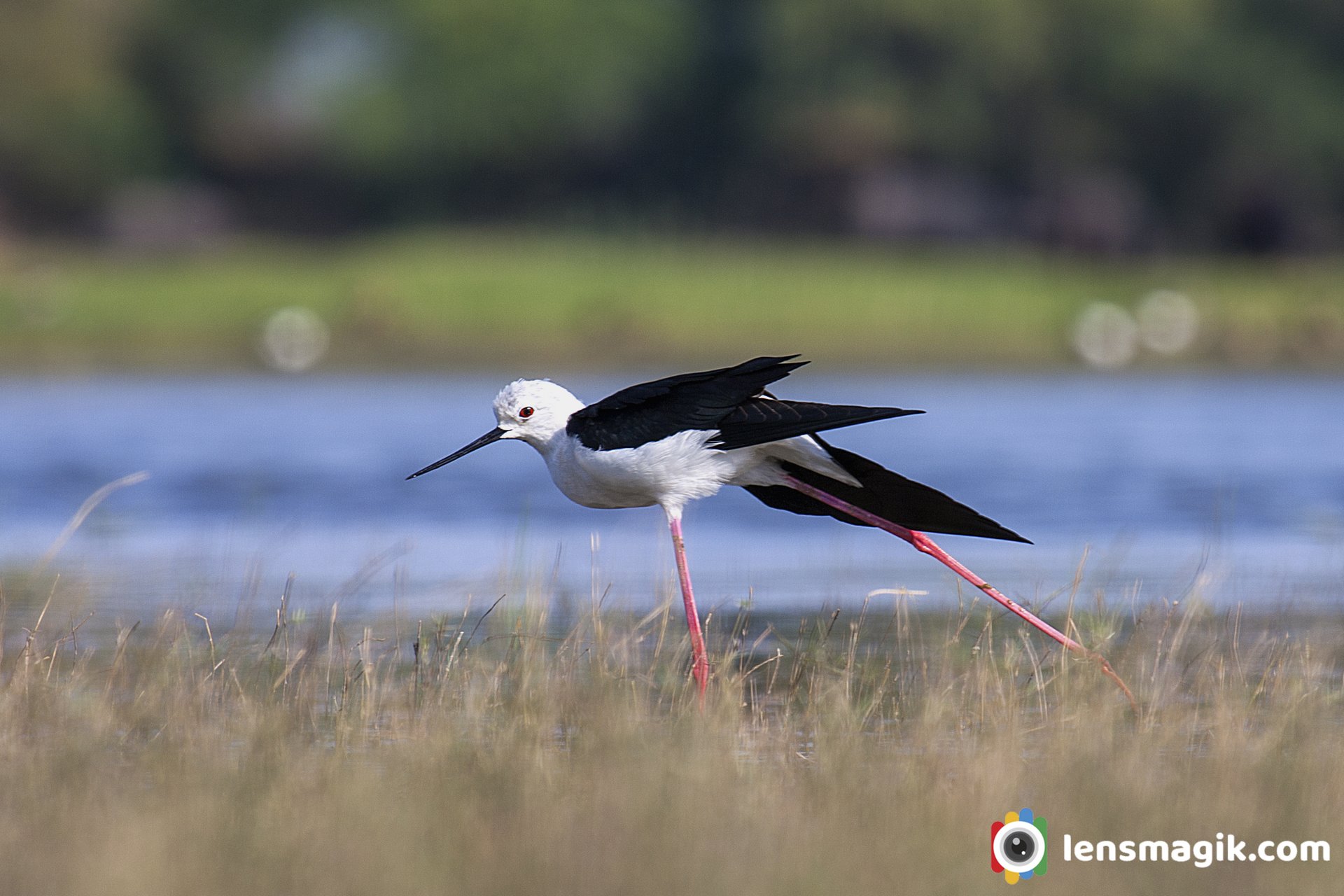
Thol Bird sanctuary is located near Thol village in Sanand. It is really good place for bird watchers. In Thol Lake you can find waders, large birds, tree birds, migratory birds, resident birds etc. Also more than 150 spices as per my knowledge may be more numbers found here. Also Migratory birds are most attractions of Thol Lake during Winter. In migratory birds most found Flamingos, Pelicans, Bar Headed Goose, Sarus Crane, Demoiselle Crane, Grey legged Goose, Pied Avocets etc.
Lits of Migratory birds At Thol Lake :
- Flamingos
- Great White Pelicans
- Bar Headed Goose and Grey heded Goose
- Ducks
- Spoonbills
- Sarus Cranes and Demoiselle Cranes
- Eagles
- Mallard
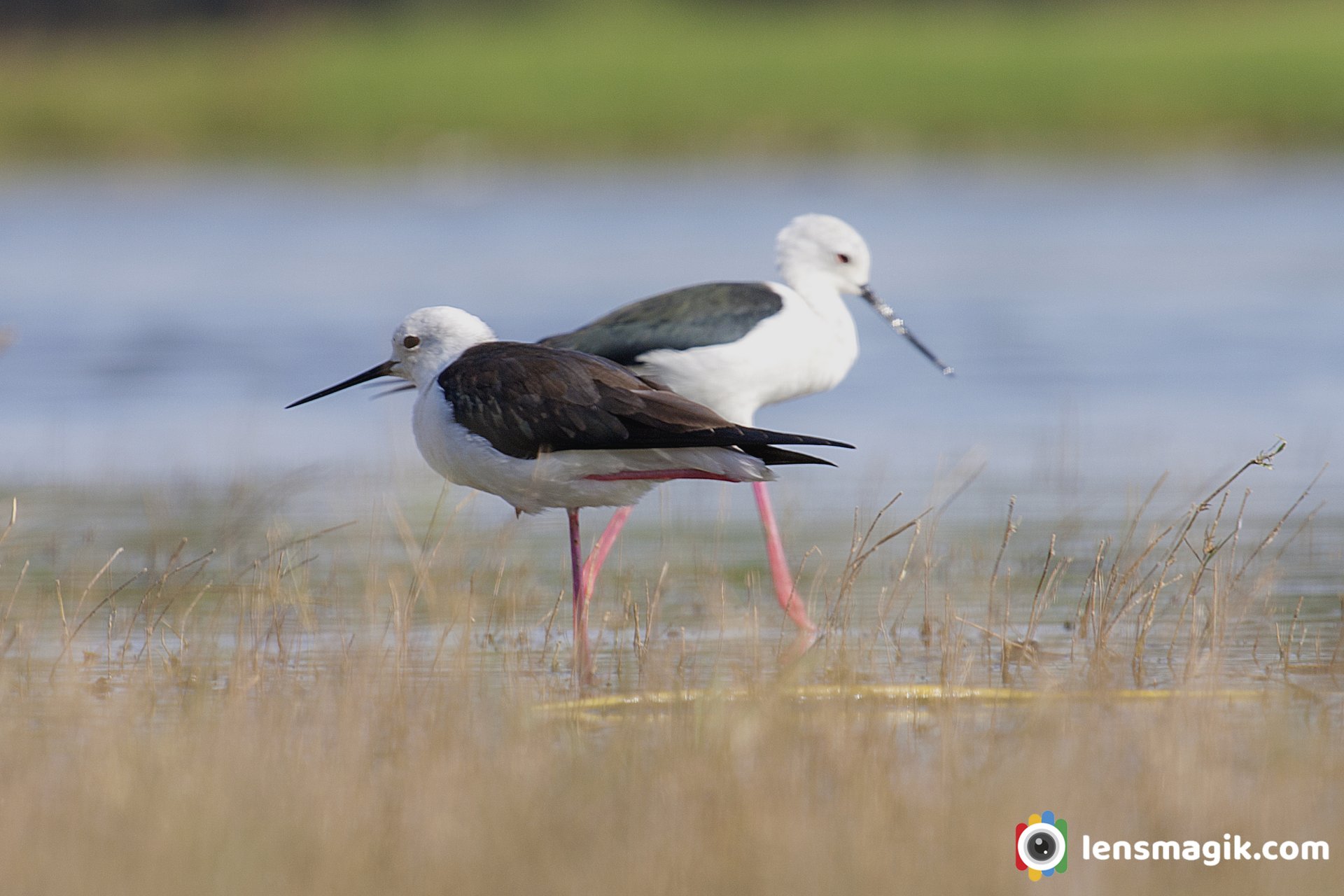
Best Time to Visit Thol Sanctuary :
Well for birding winter is the best time for Thol Bird Sanctuary. If you want day out then any time is better for thol except monsoon. There are lots of birds stay througout year in Thol lake. In winter lots of Migratory birds are most attractions of Thol Sanctuary. From November to March is the best time to visit Thol Lake.
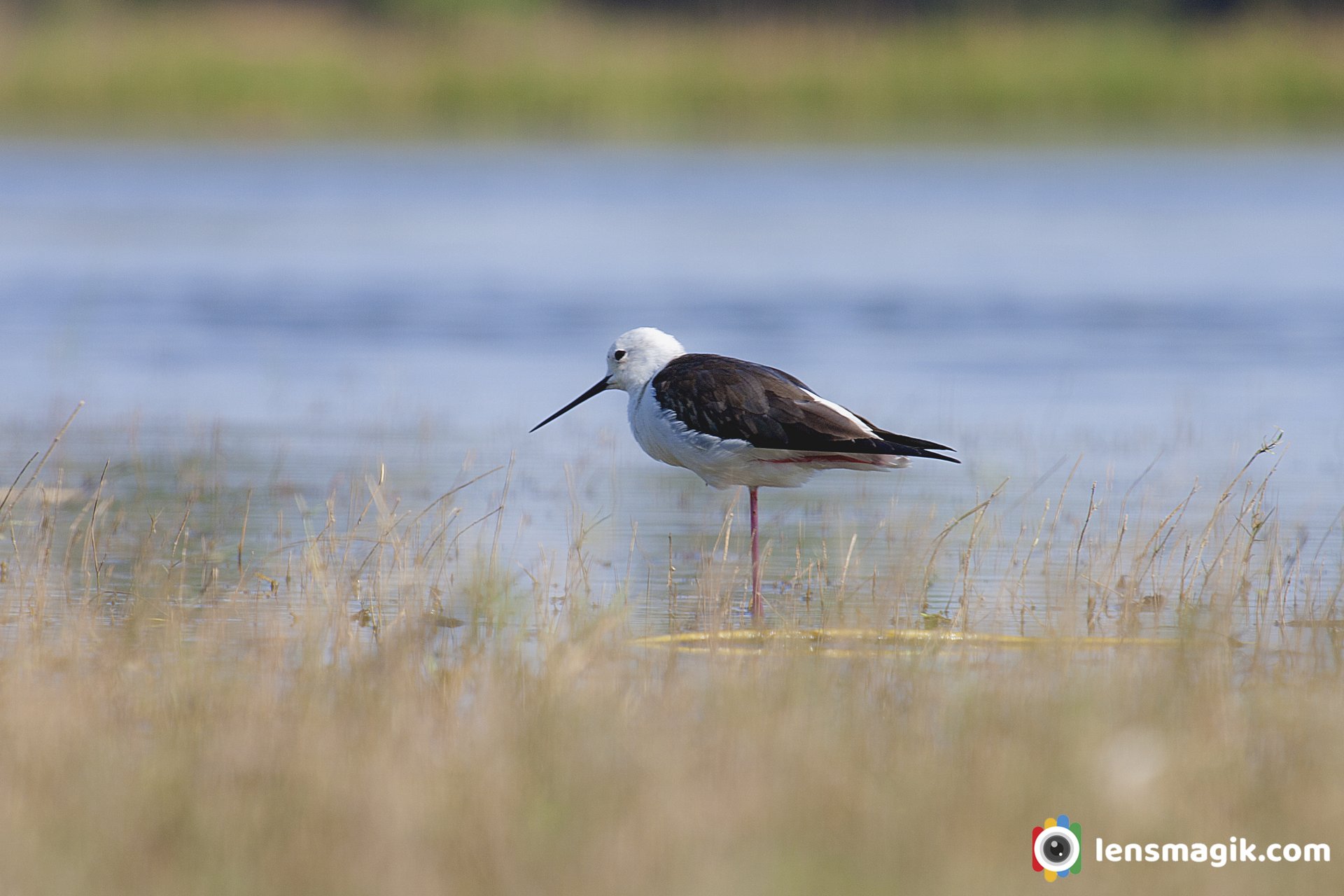
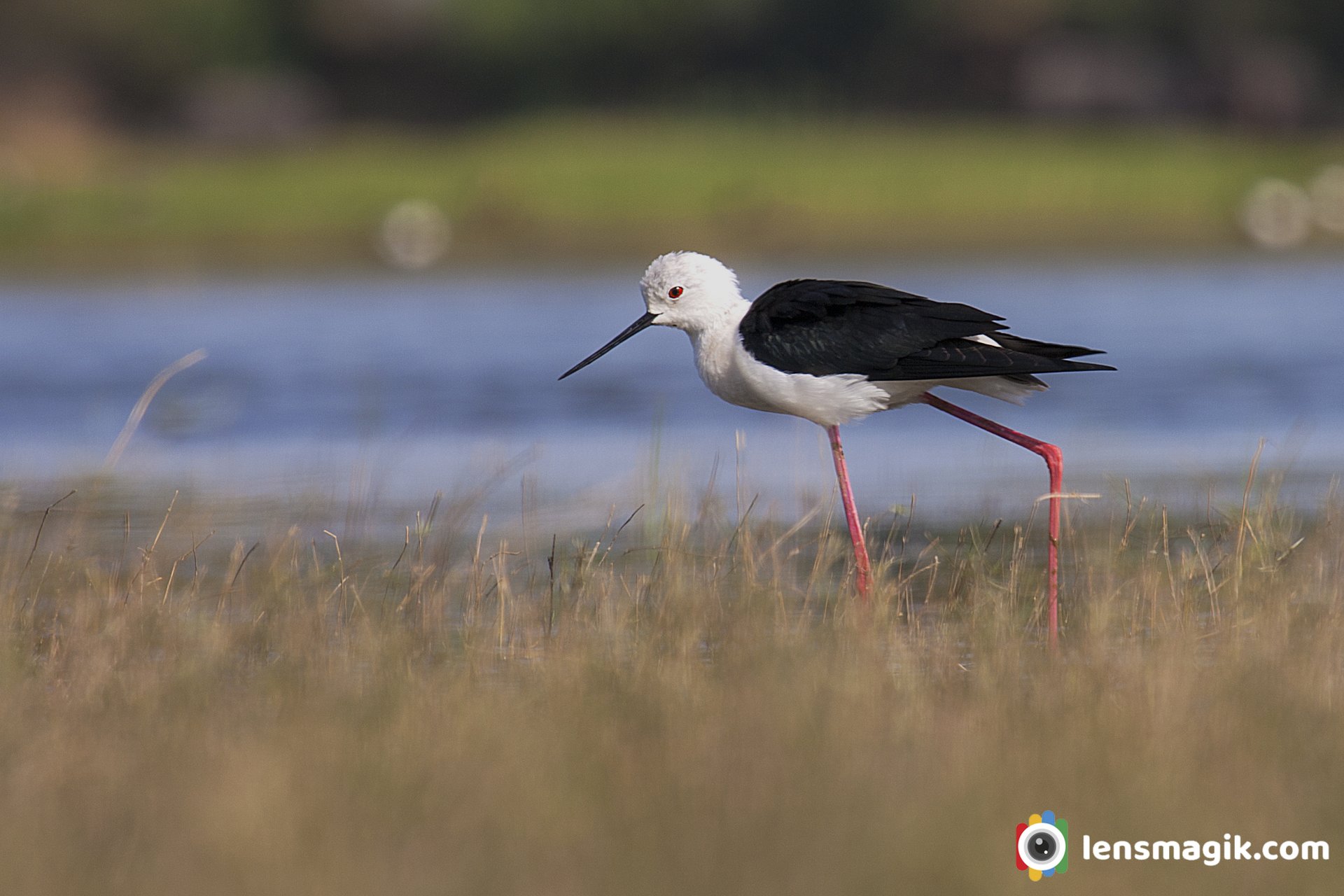
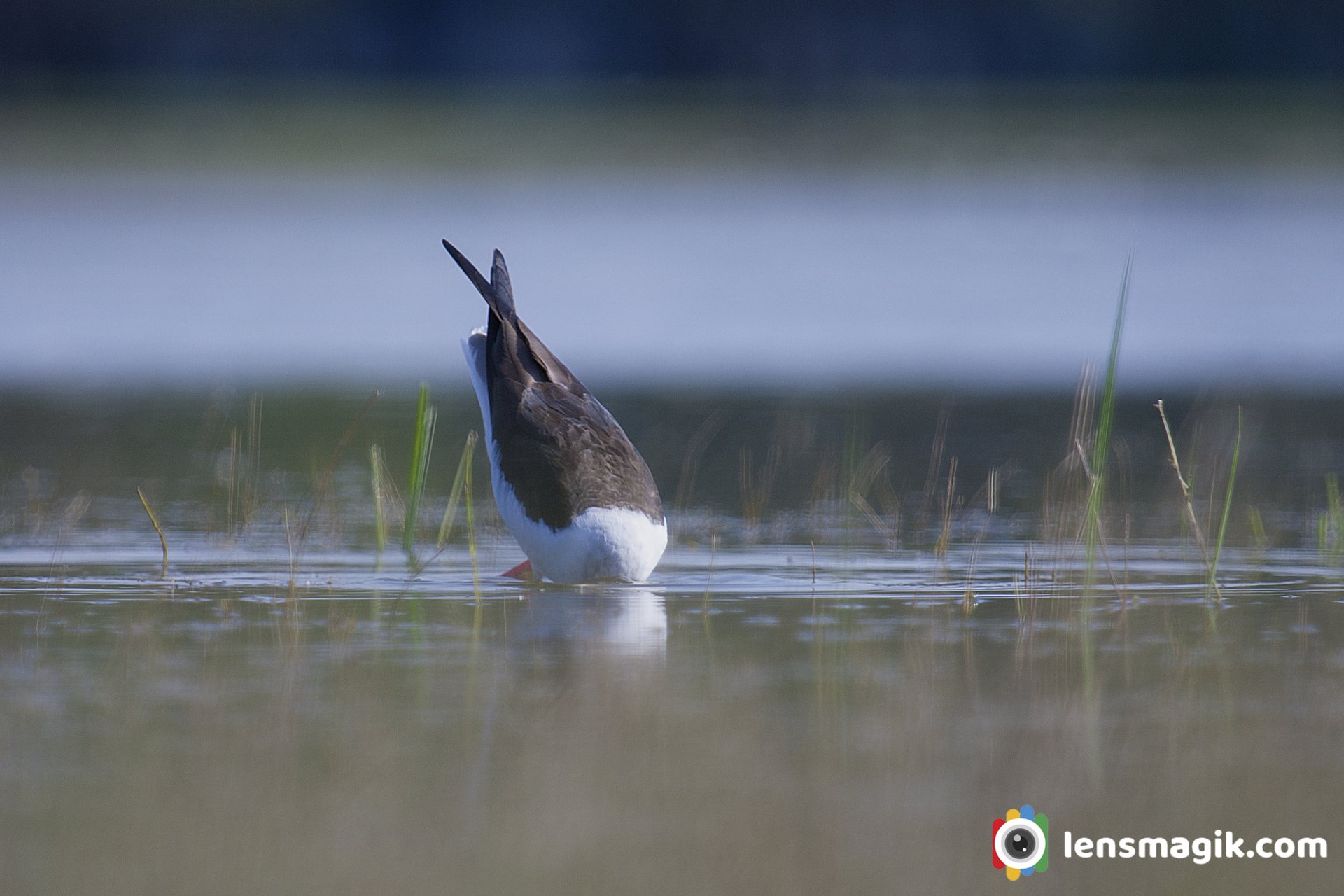
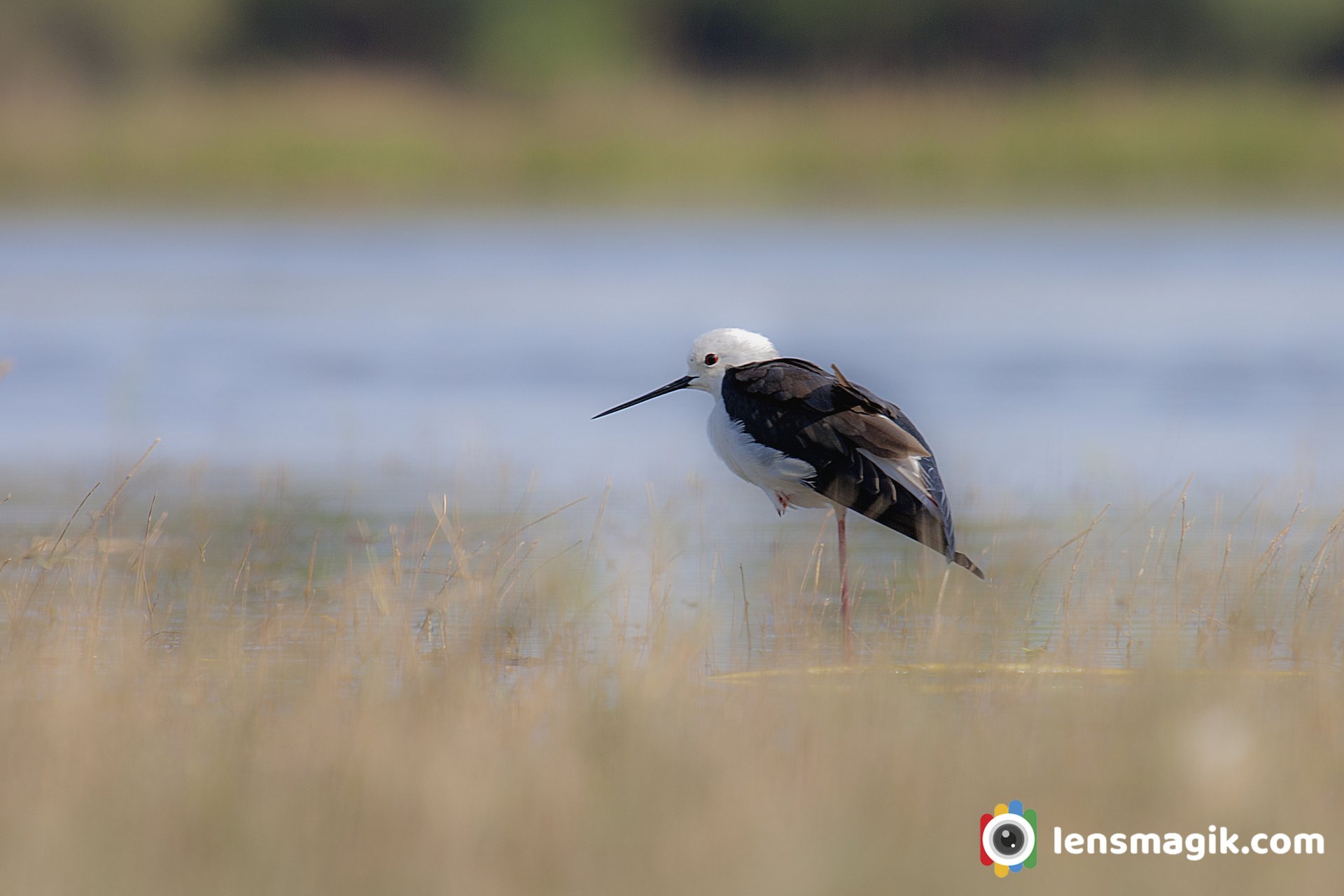
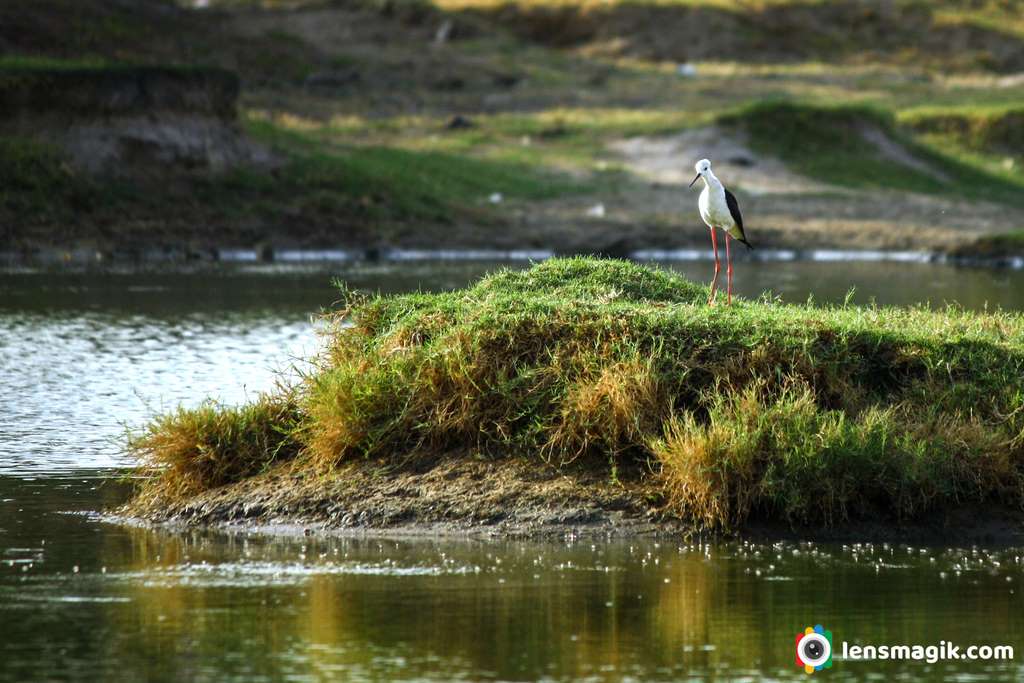
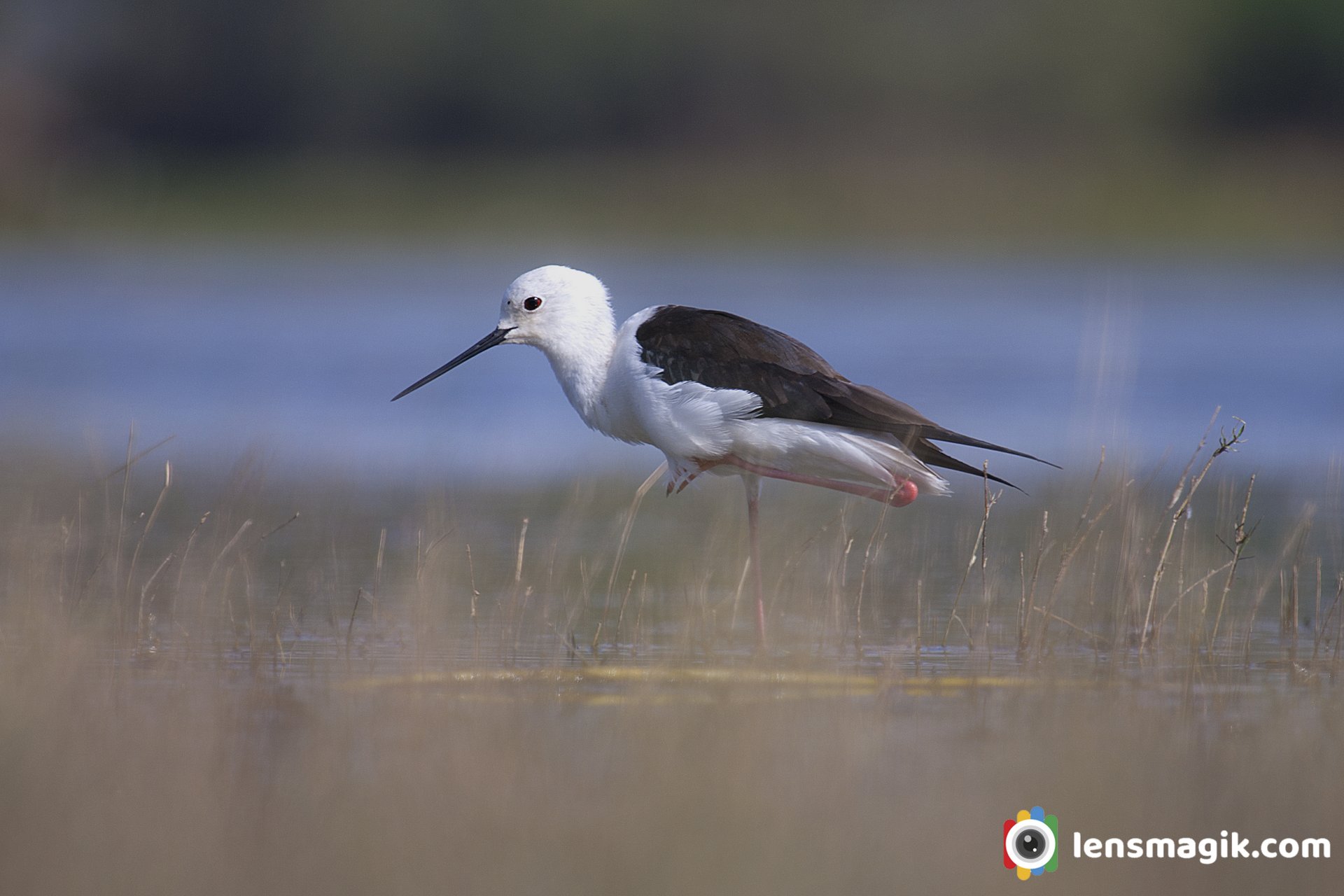
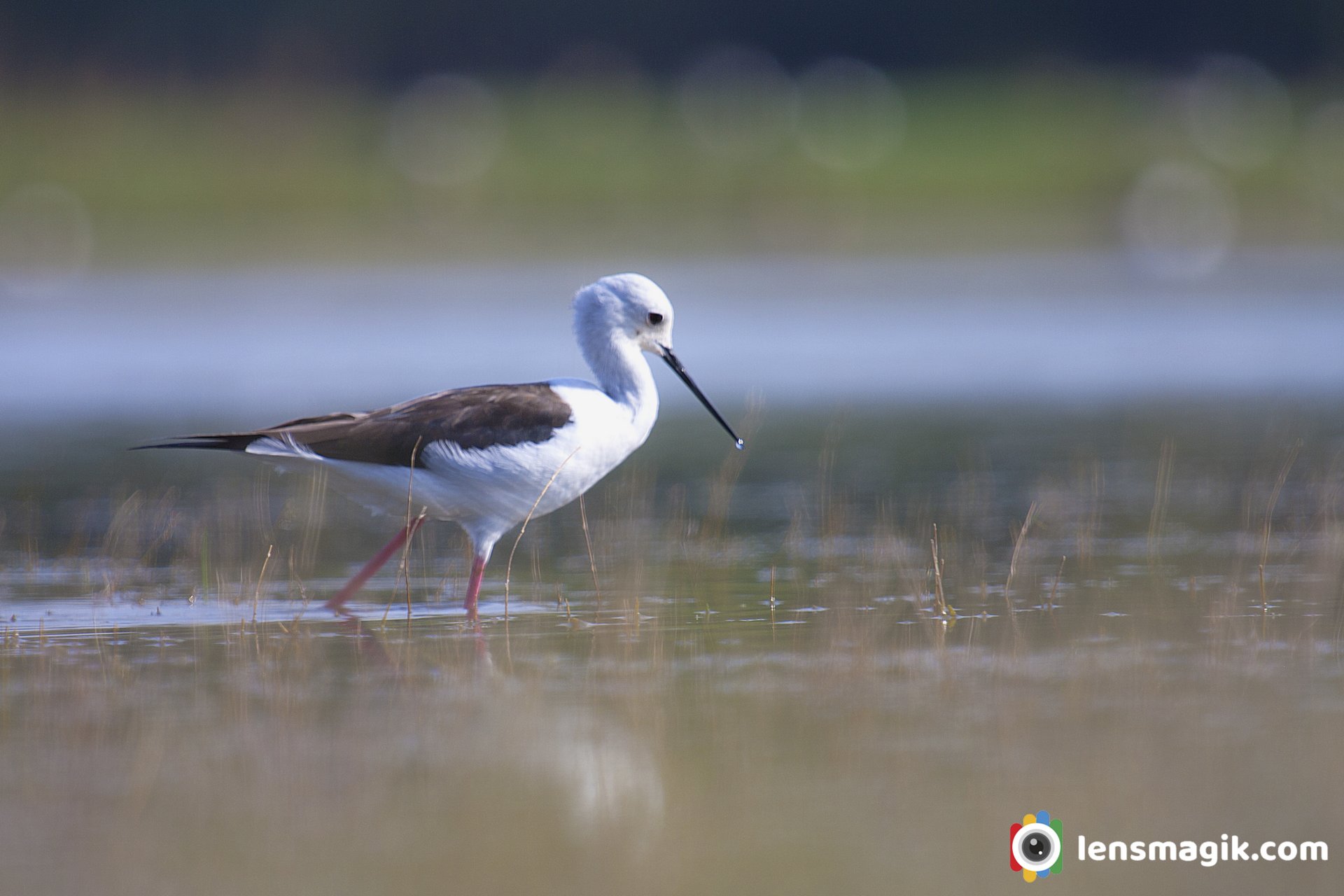
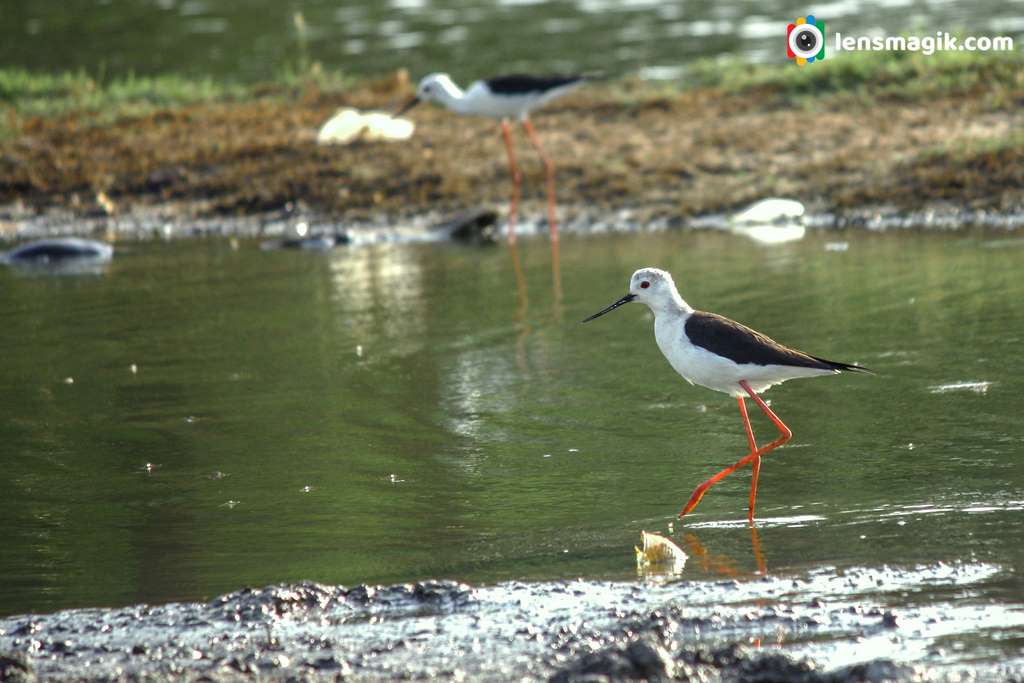
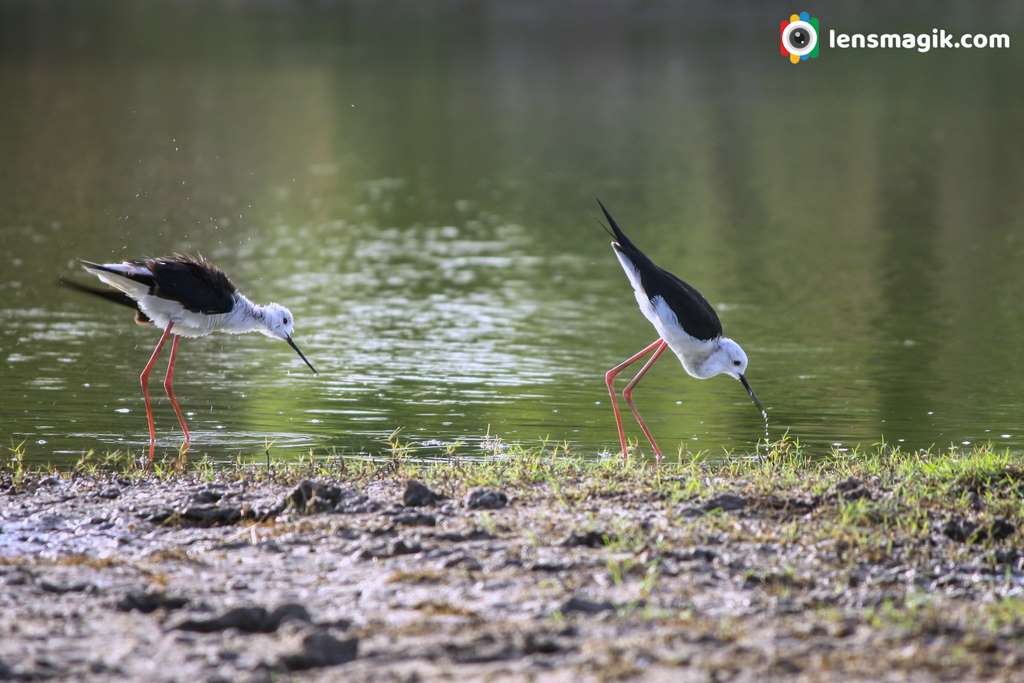
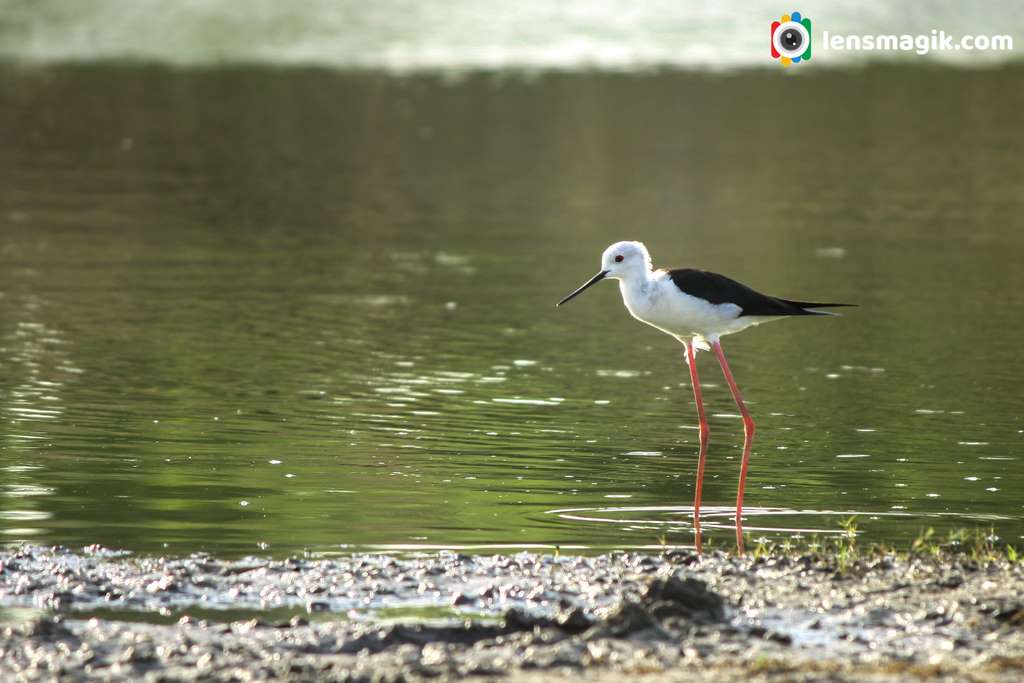
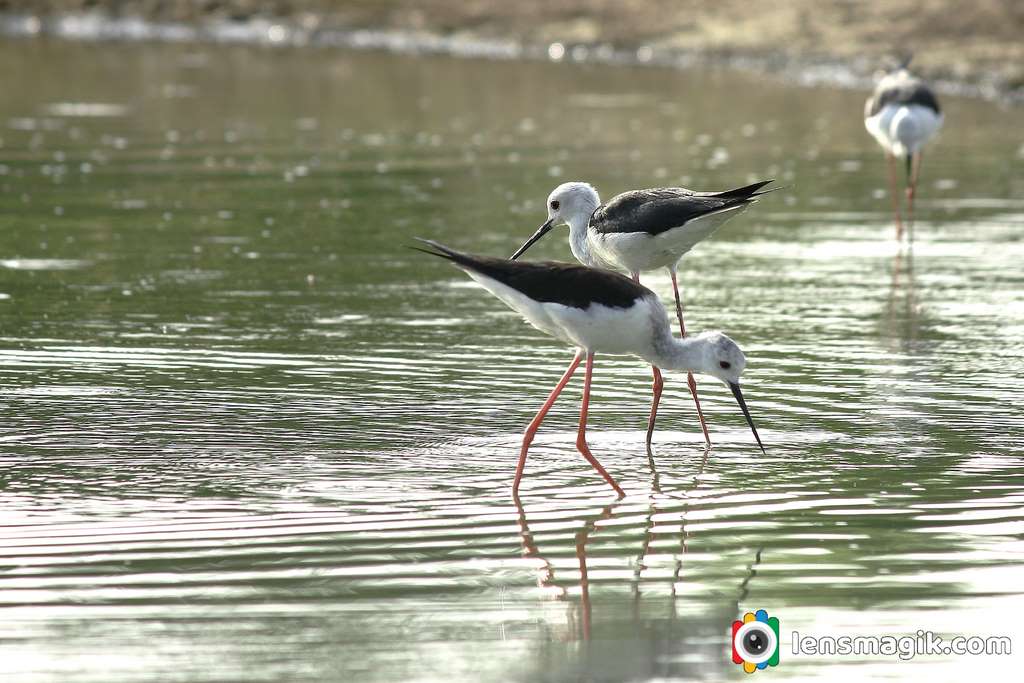
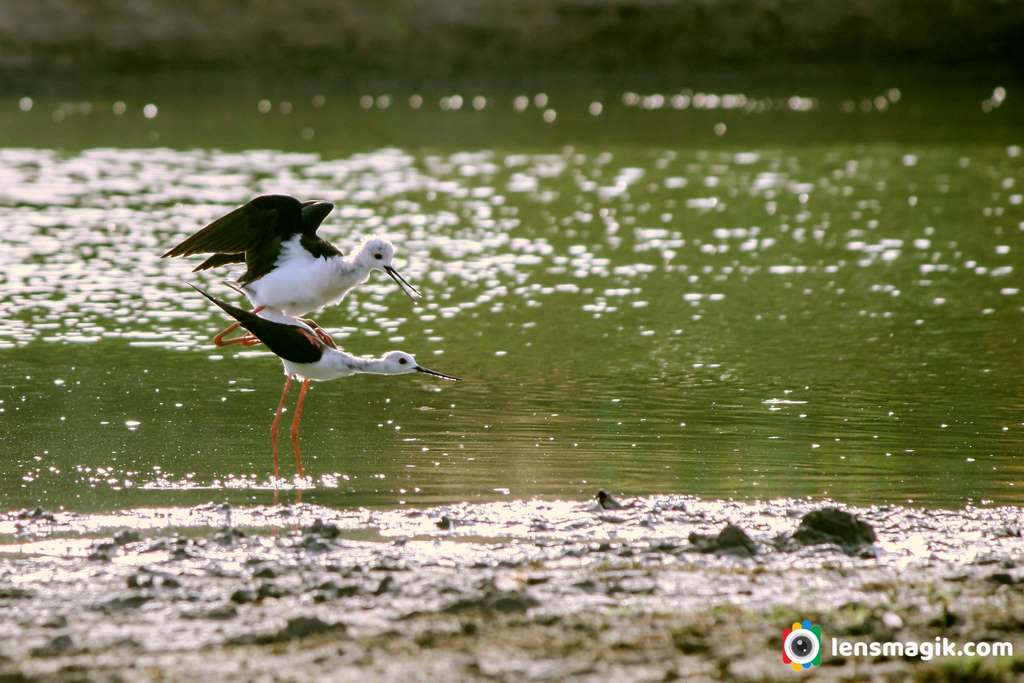

Nearest Railwaystation With Major City : Ahmedabad
Read more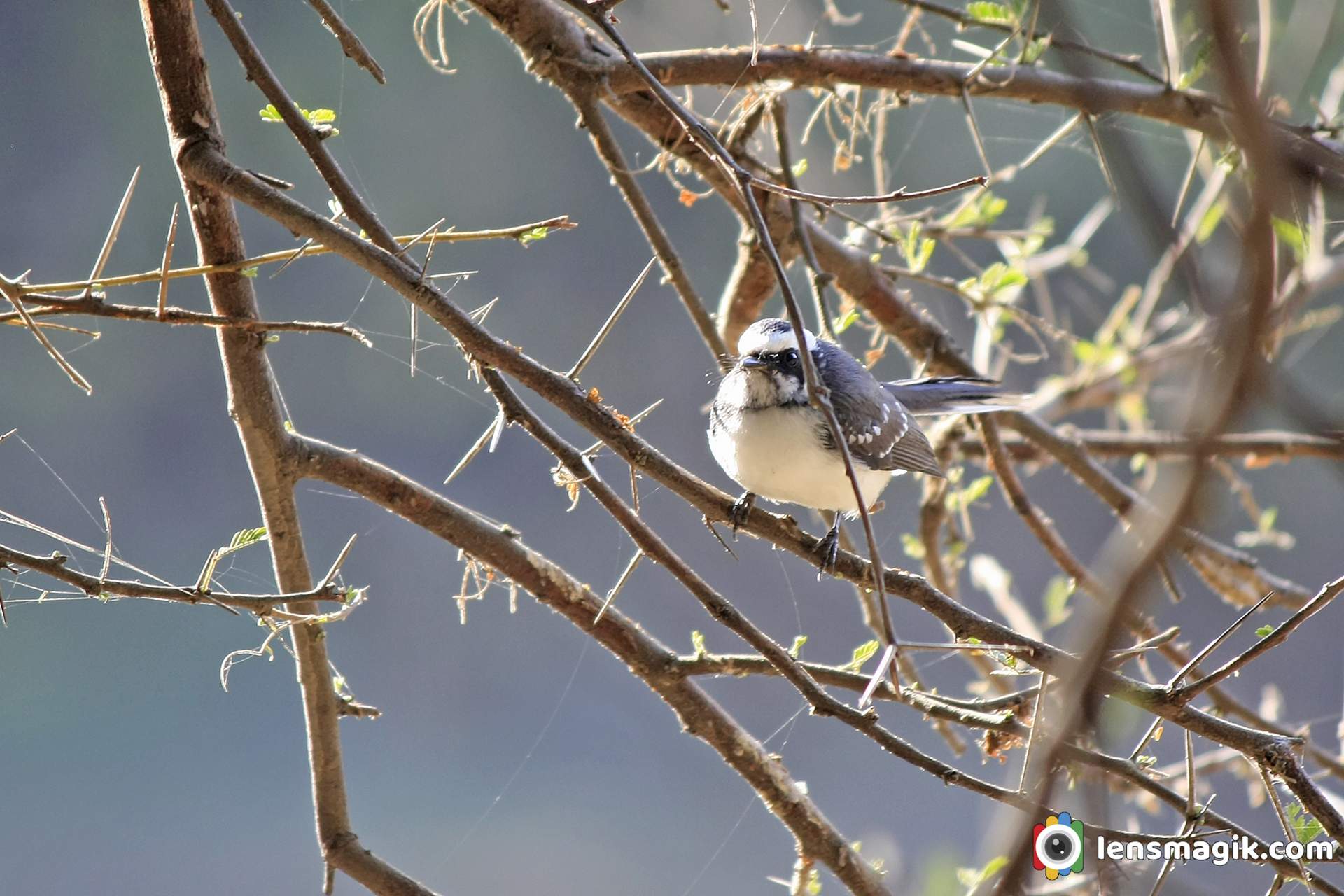
White browed Fantail bird is small size bird. It is Passerine bird of family Rhipiduridae. In Gujarat White browed Fantial found many places like Thol Bird Sanctuary, Nal Sarovar, Velavadar Sanctuary and many more farms outskirts dense bush areas. I found it at Thol Bird Sanctuary. During nesting time it may be agressive . White browed fantail looks beautiful when he open its tail feathers. It makes beautiful black and white feather abstract. Its feathers of tail looks like hand fan with design.
About White browed Fantail bird :
- White browed Fantail length about 18 cm .
- White browed Fantail found in Many regions of Asia , south Asia etc.
- It has dark brown upperparts and also white spots on wings. Underparts of White Browed fantail is white.
- White Browed Fantail Tail looks like hand fan shape.
- It build its nest like a cup shape.
- It lays eggs arround 2-5 in nest and its color like white and light browinish spotted in color.
- Fantail bird lifespan around 2-5 years.
- Incubation period during breeding season around 14 days.
- Fantail feed invertebrates like insects, moths,spiders, beetles, flies etc.
- According to Maori tribal legend if the fantail fly in your house then it signs of death of someone in your house.
- Tiwaiwaka , Piwakawaka, Tirairaka , Tiwakawaka are some common names of Fantail bird in Maori tribal.
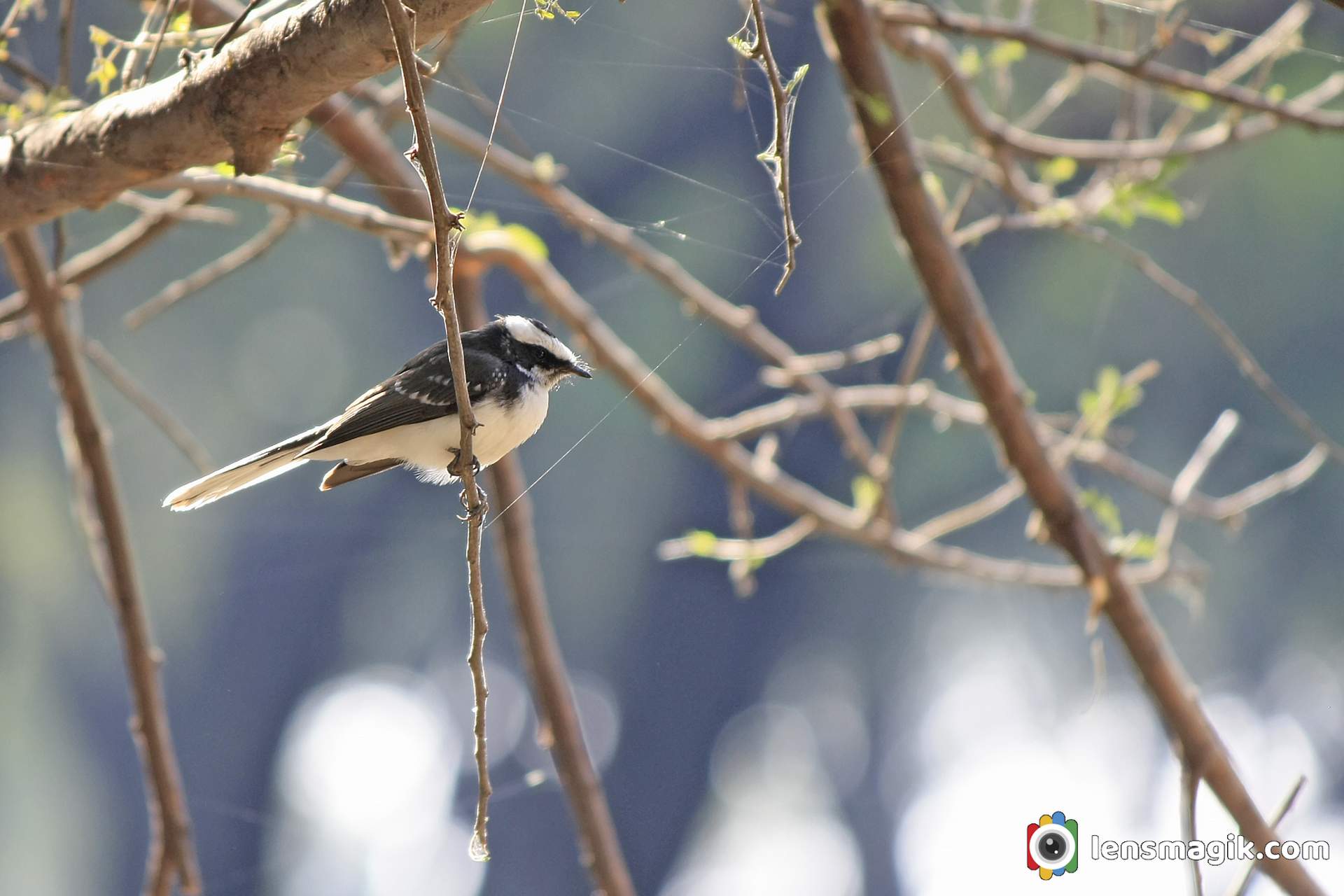
Why It is called Fantail ? :
When its tail spread it looks like fan and foraging and when its tail folded it is rounded at the end. Thats why its called Fan-tail.
Thol Lake is one of the best place for birding in Gujarat. Thol bird sanctuary is in Sanand District near Thol Village. In Thol lake more than 150 different spices of waders and also nesting birds. Also Migratory birds are found here and stays here. Famous Flamingo Birds found here during winter and some of them found allover year and nesting here.
Read more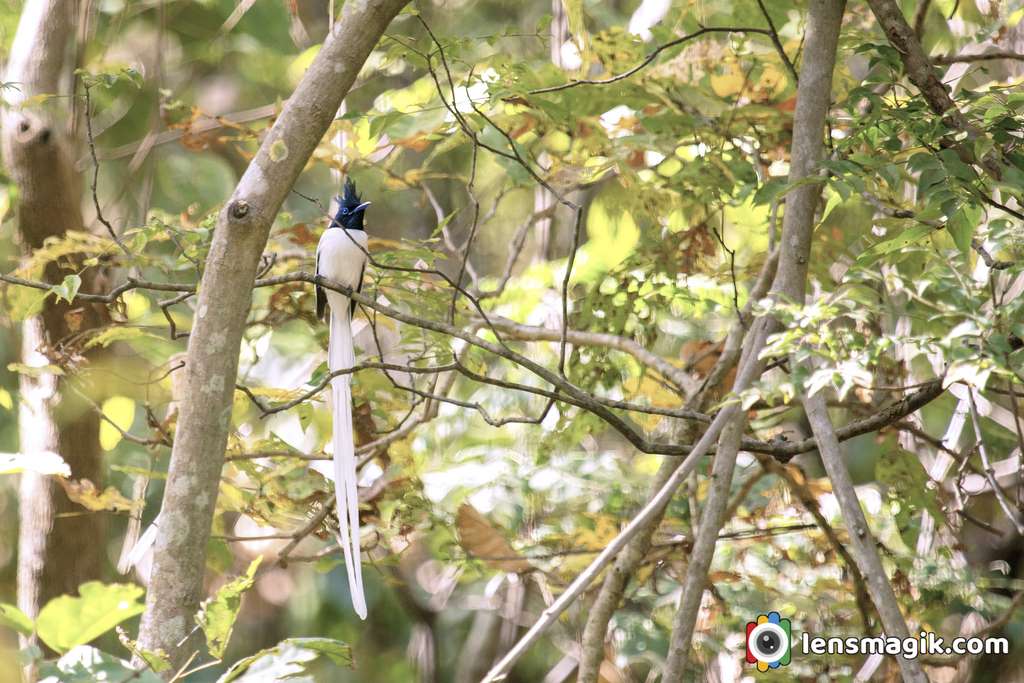
Indian Paradise Flycatcher is previously known as Asian Paradise Flycatcher short form ( APFC ). It is widly spread in India and in Asia. All Flycatcher birds are medium in size. Asian paradise flycatcher size also medium. The Indian Paradise flycatcher is in lease concern on IUCN red list. There are three sub spices of Paradise Flycatcher
- T. P. Paradisi
- Himalayan Paradise Flycatcher
- Ceylon Paradise Flycatcher
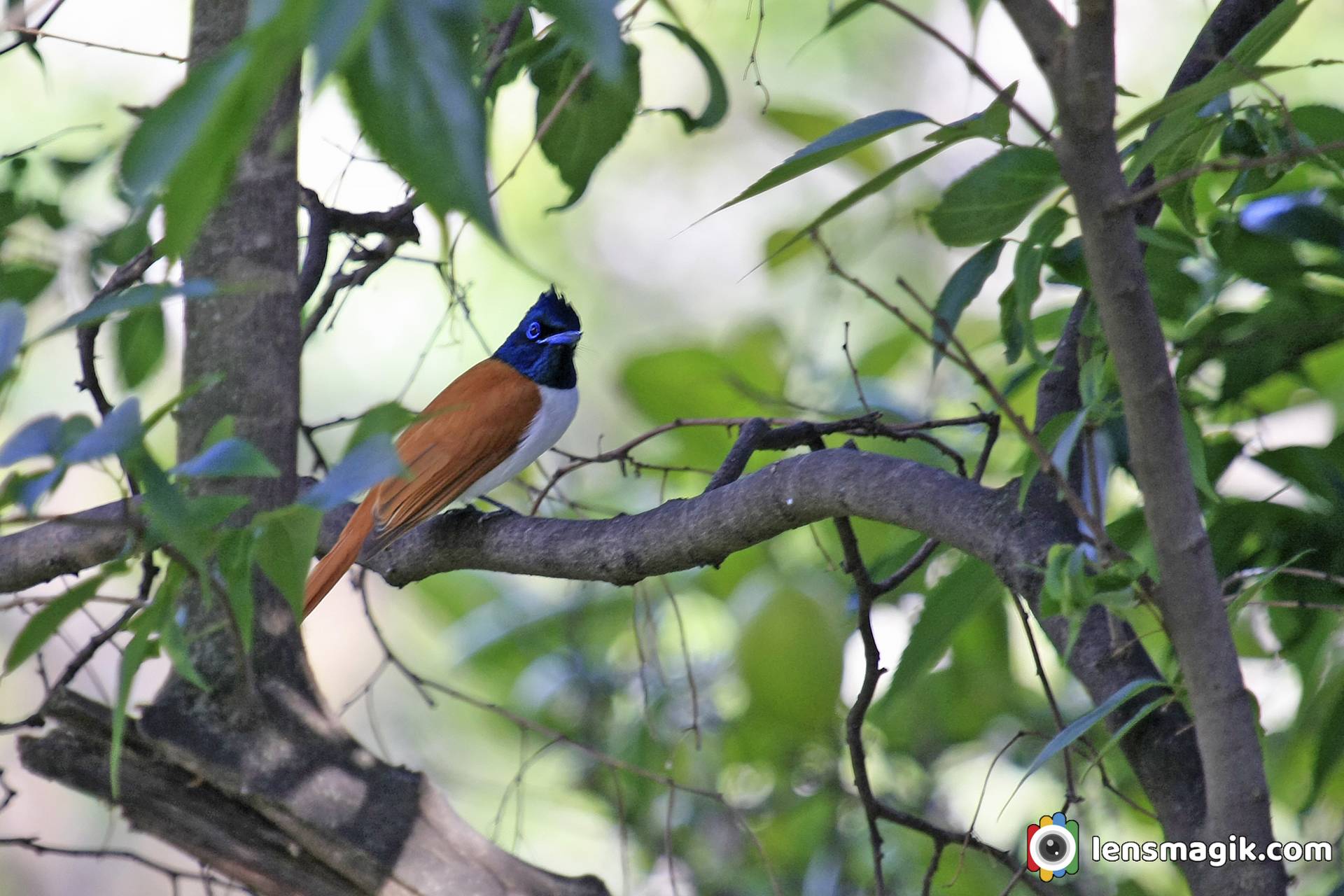
About Indian Paradise Flycatcher Bird :
- Adult Indian Paradise flycatcher size is around 19-22 cm.
- Flycatcher head color is black with crown and crest.
- Male paradise flycatcher is white in color and female is rufous.
- Young Male Asian paradise flycatcher is much similar like female.
- Young male paradise flycatcher color is rufous and it has short tail.
- After 2015 Indian Paradise Flycatcher, Amur Paradise Flycatcher and Blyth's Paradise flycatcher are known as Asian Paradise Flycatcher.
- Indian Paradise Flycatcher is the State bird of Madhya Pradesh.
- Indian Paradise Flycatcher is known as Dudhraj in Gujarati.
- Indian Paradise Flycatcher lay one eggs per day and it lay 4-8 eggs after nesting. Incubation period is around 13-15 days .
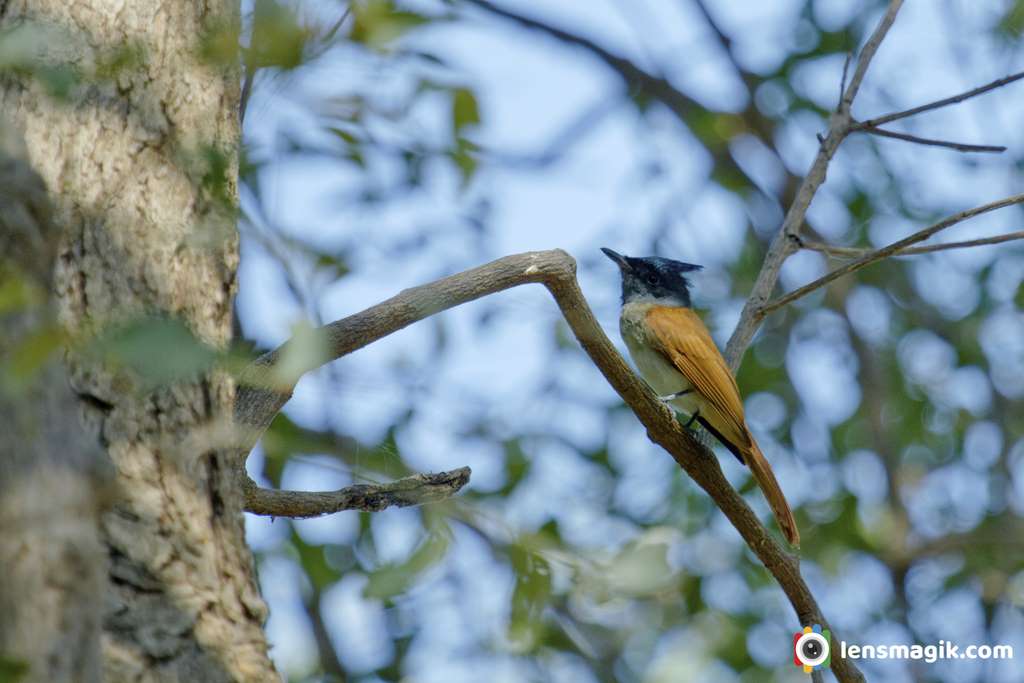
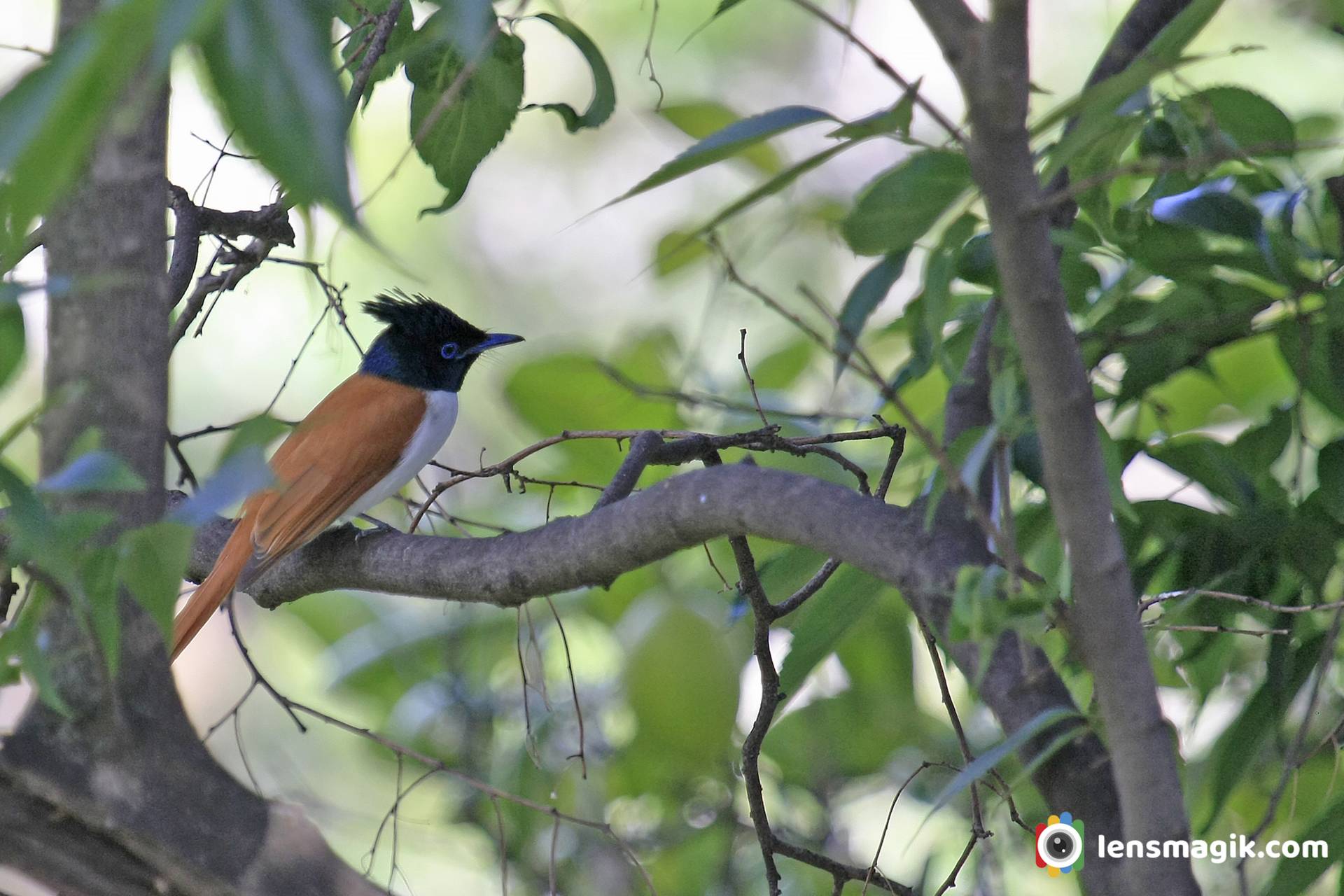
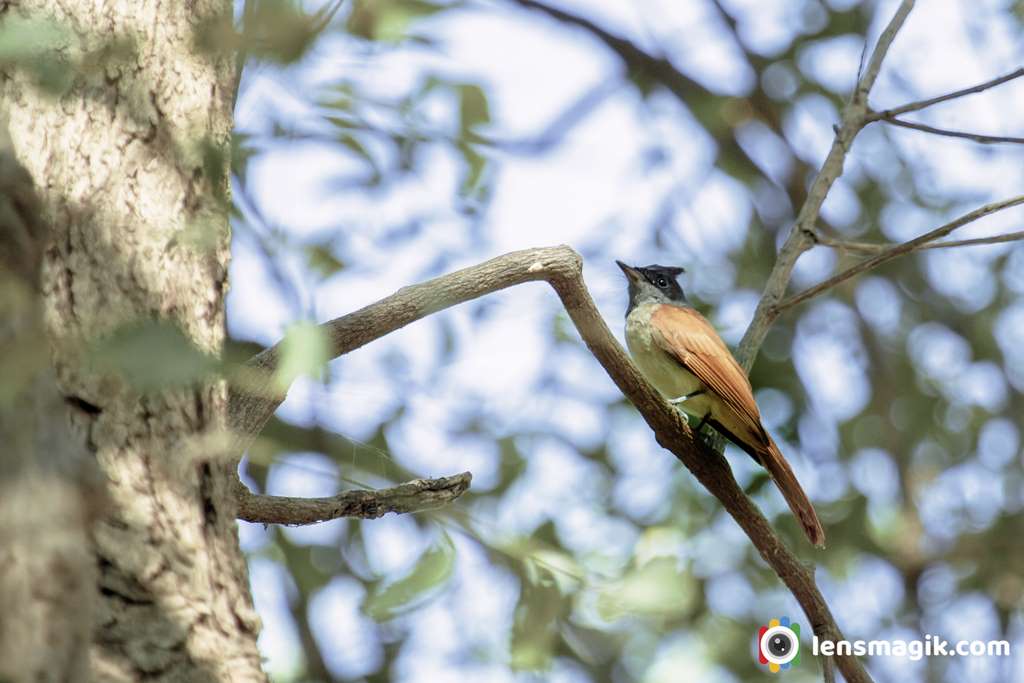
Paradise Flycatcher Name is from Greek terpsi mean ' Delighting in ' and phonos mean ' Voice ' . So it is Delighting In Voice Bird. The Indian Paradise flycatcher or Asian Paradise flycatcher found in Central and south India, Bangladesh , Myanmar, Shri Lanka and many more regions of Asia. Indian Paradise Flycatcher eat insects like moths, beetles, Butterflies, Ants and Spiders too. The Average lifespan of Indian Paradise Flycatcher is aroun 8-10 years. I found Indian Paradise Flycatcher during my Manali trekking and Also at Thol Lake. During my trek to manali i found both Male and female Indian paradise flycatcher but unfortunately i capture only female paradise flycatcher. At Thol Lake i found only Female Paradise flycatcher. I get Male Indian Paradise flycatcher at Corbett national Park during my saffari ride. But some poor quality result photos.
Camera Used : Canon 6 D, Canon 1000 D, Canon 100-400 mm lens
Location : Male Indian Paradise Flycatcher found at Corbett National Park , Female Indian Paradise flycatcher found at Thol Bird Sanctuary and also at Manali trekking at Rumsu village.
Read more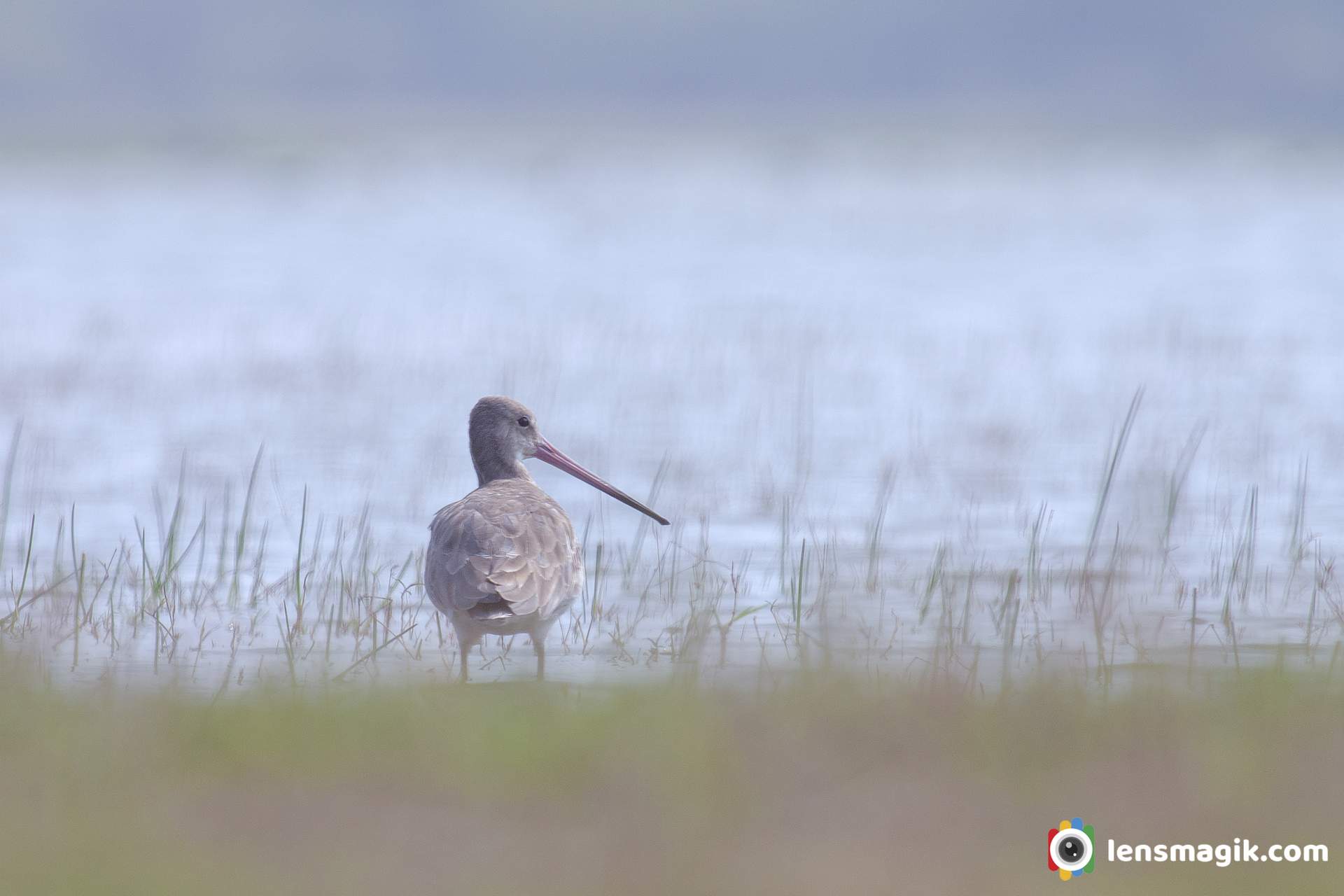
Black Tailed Godwit is a wader bird found in many places of Gujarat. It generally found in India, New Zealand , West Africa, West Europe and Australia during winter season. In Gujarat it found in many places like Thol Bird Sanctuary, Nalsarovar Bird Sanctuary, Khijadia Bird Sanctuary and many other muddy areas where they can found their food easily. I got them at Thol Bird Sanctuary during may month.
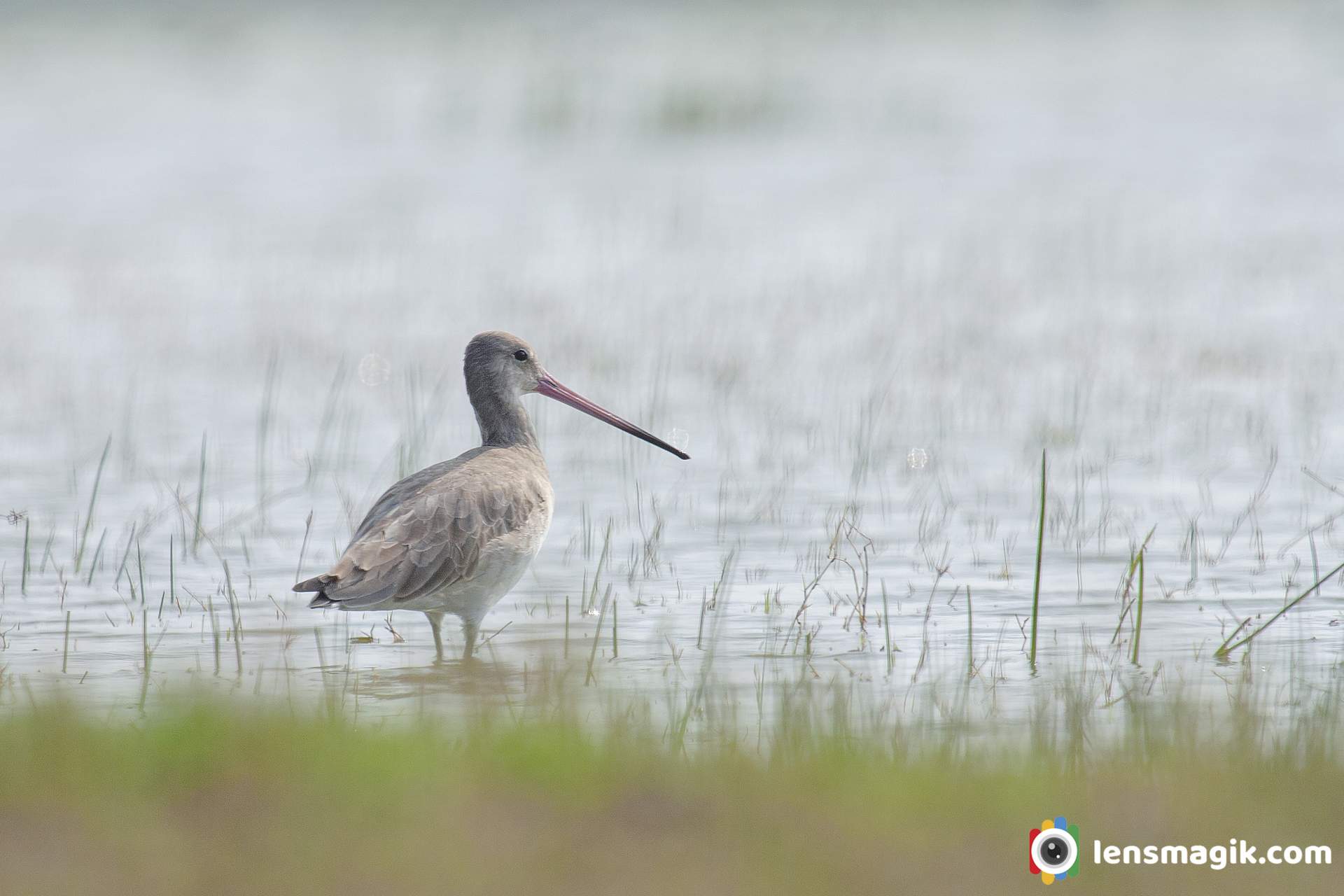
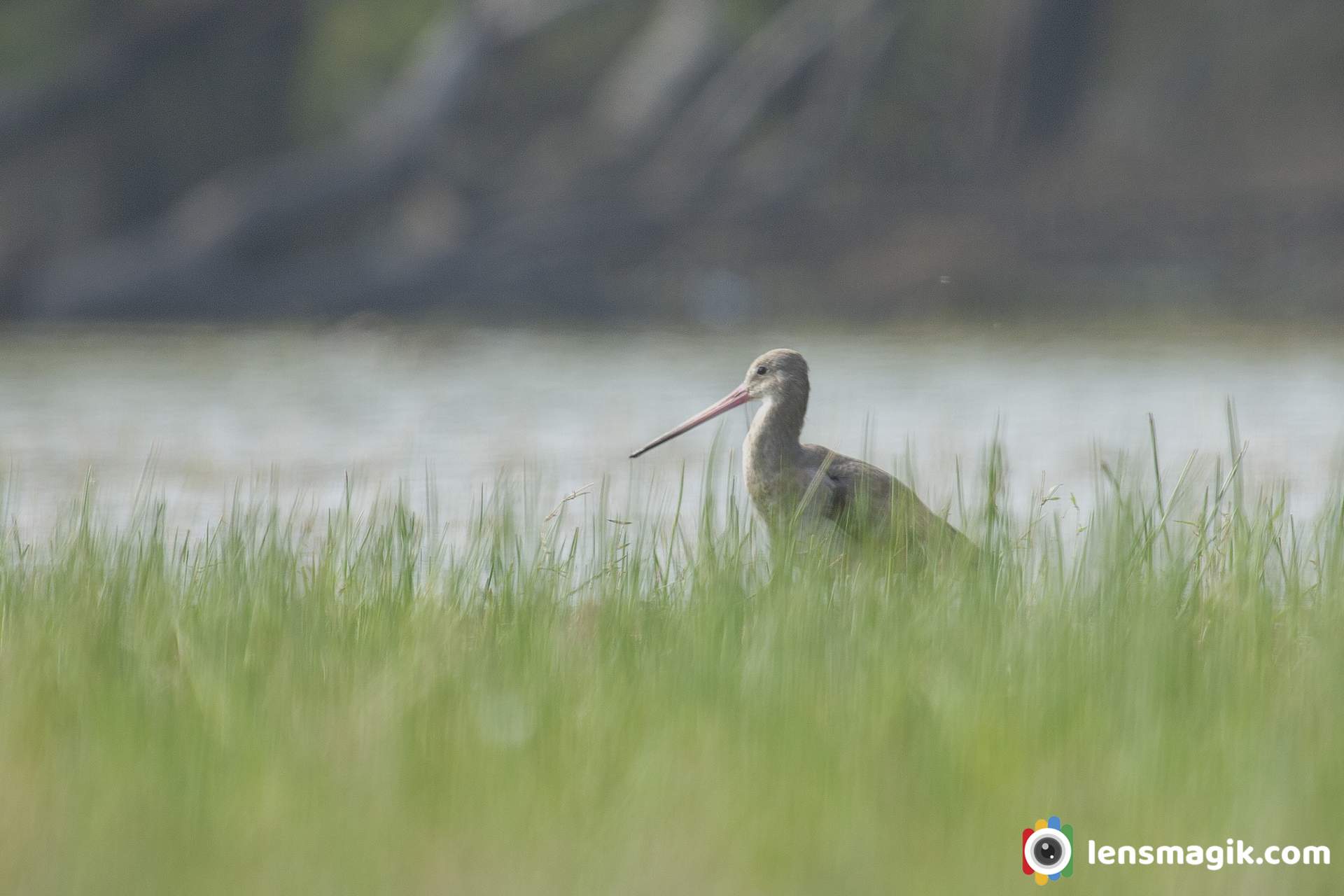
About Black Tailed Godwit :
- It has long bill around 7 to 10 cm long.
- It has orange-pink base bill with dark tip.
- Legs of Black Tailed Godwit are dark grey or black.
- Adult has brown-grey breast and upperparts and in Juvenile has orange neak and breast.
- Total lenght is around 70-80 cm and weight is almost 250-350 gm.
- Call of Black tailed Godwit is weeka...weeka...weeka
- They build nest on shallow ground.
- They lay eggs and protect them up to 30-50 m.
- They lay 3-6 eggs and color dark brown or olive green.
- They eat insects like grasshoopers, beetles , flies, caterpillers, fish eggs etc.
- Black tailed Godwit hunted in France.
- Population of black tailed godwit all around the world is around 6 to 8 lakhs.
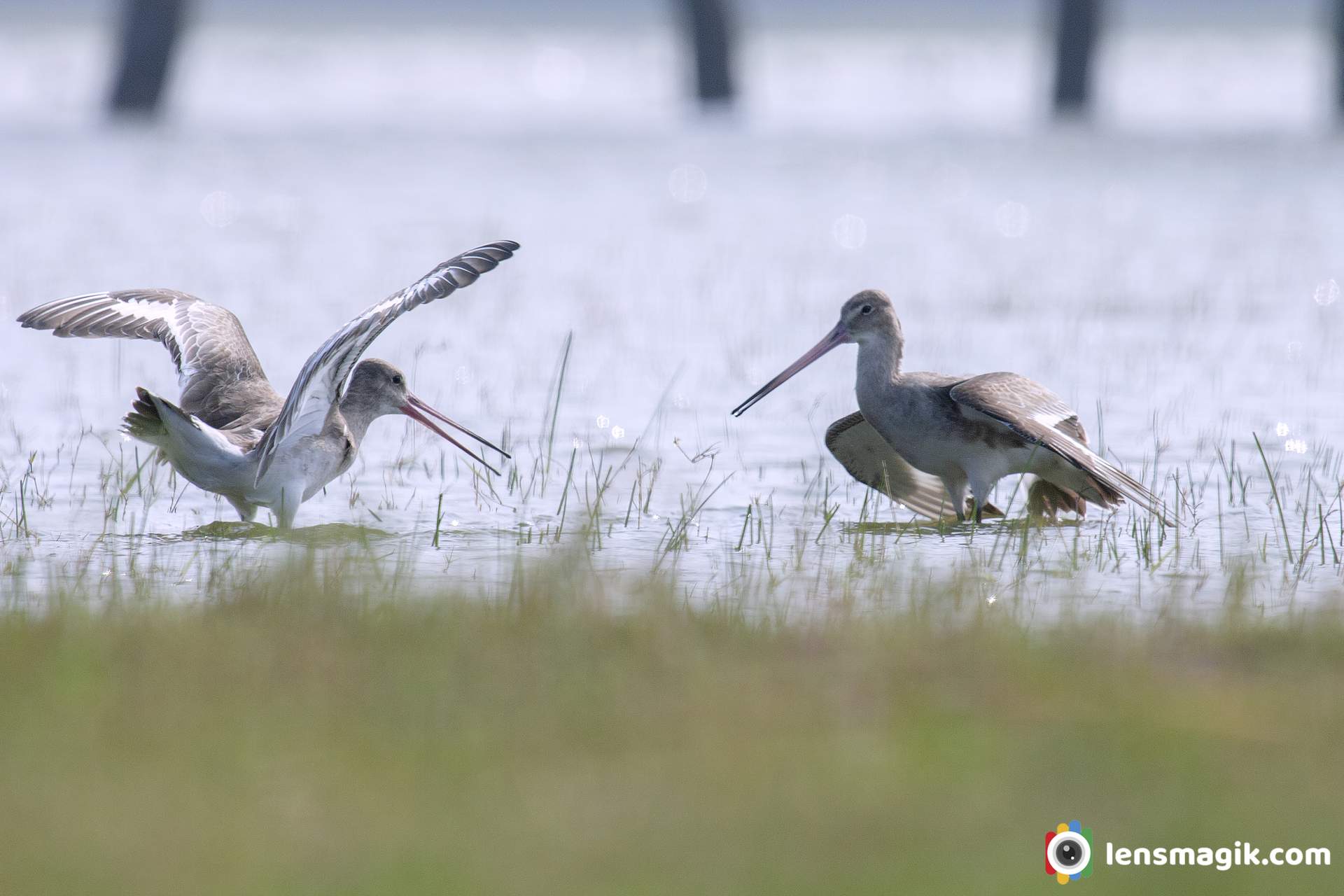
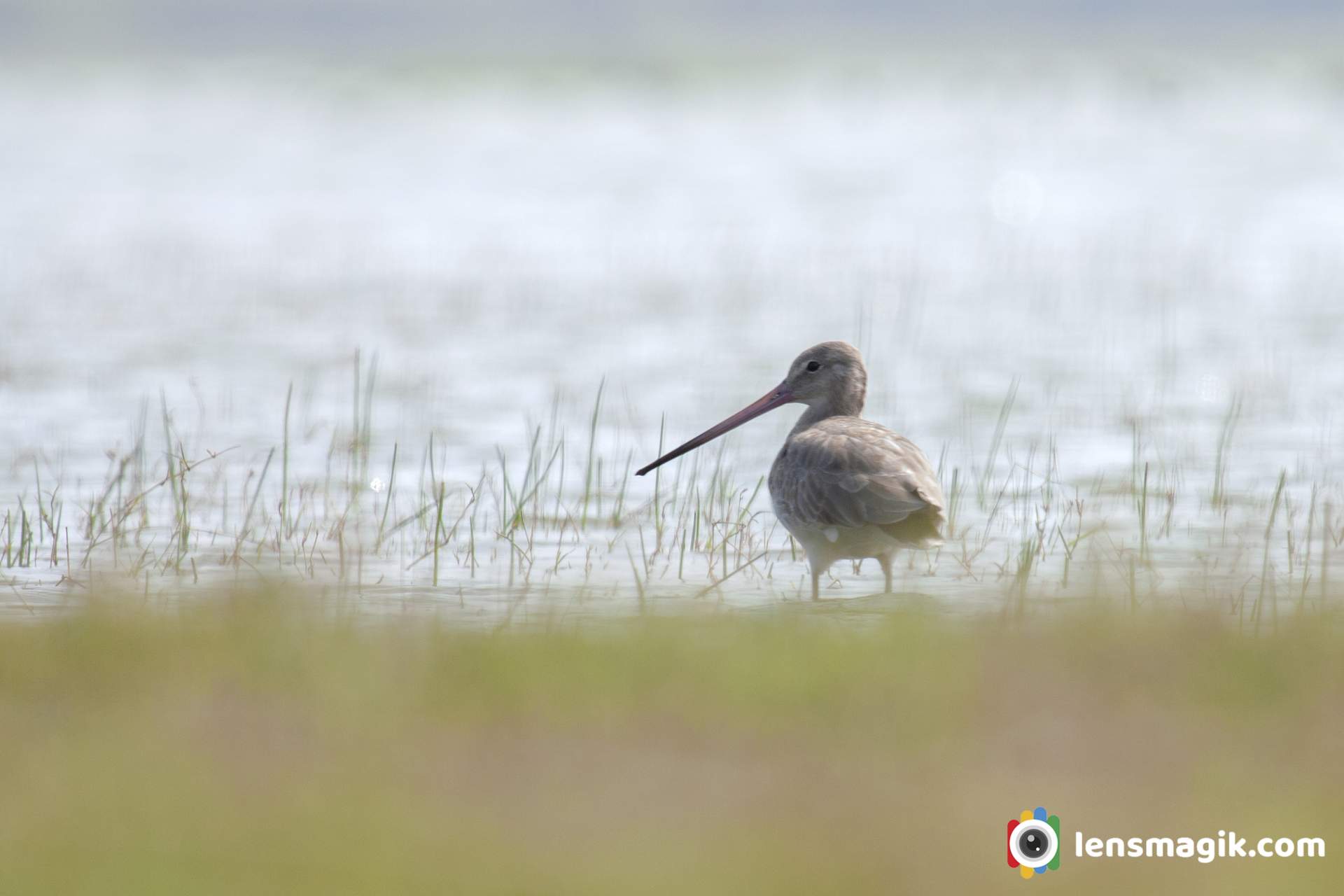
Black tailed Godwit At Thol Lake :
Thol Lake near Ahmedabad around 25 km is one of the best place for birding. Here you can find more than 200 spices of different birds. Waders and flamingos are resident birds here. During winter the lake is full of birds like Flamingos, Pelicans, Sarus Cranes, Demoiselle Crane and many more tree birds like Asian paradise flycatcher, Fantail, bee eaters , kingfisher birds , swamphen etc. Must visit place near Ahmedabad for bird watchers.
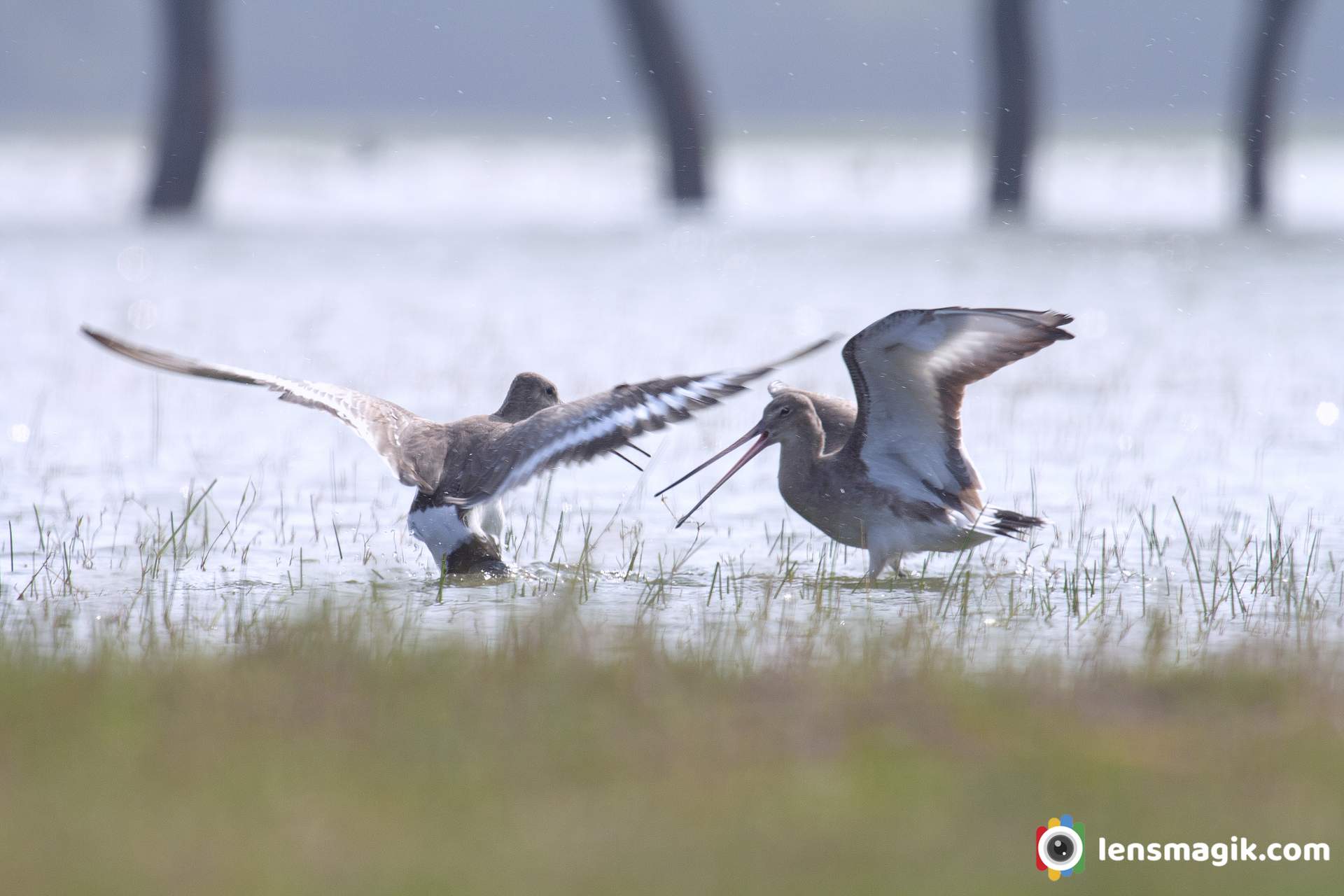
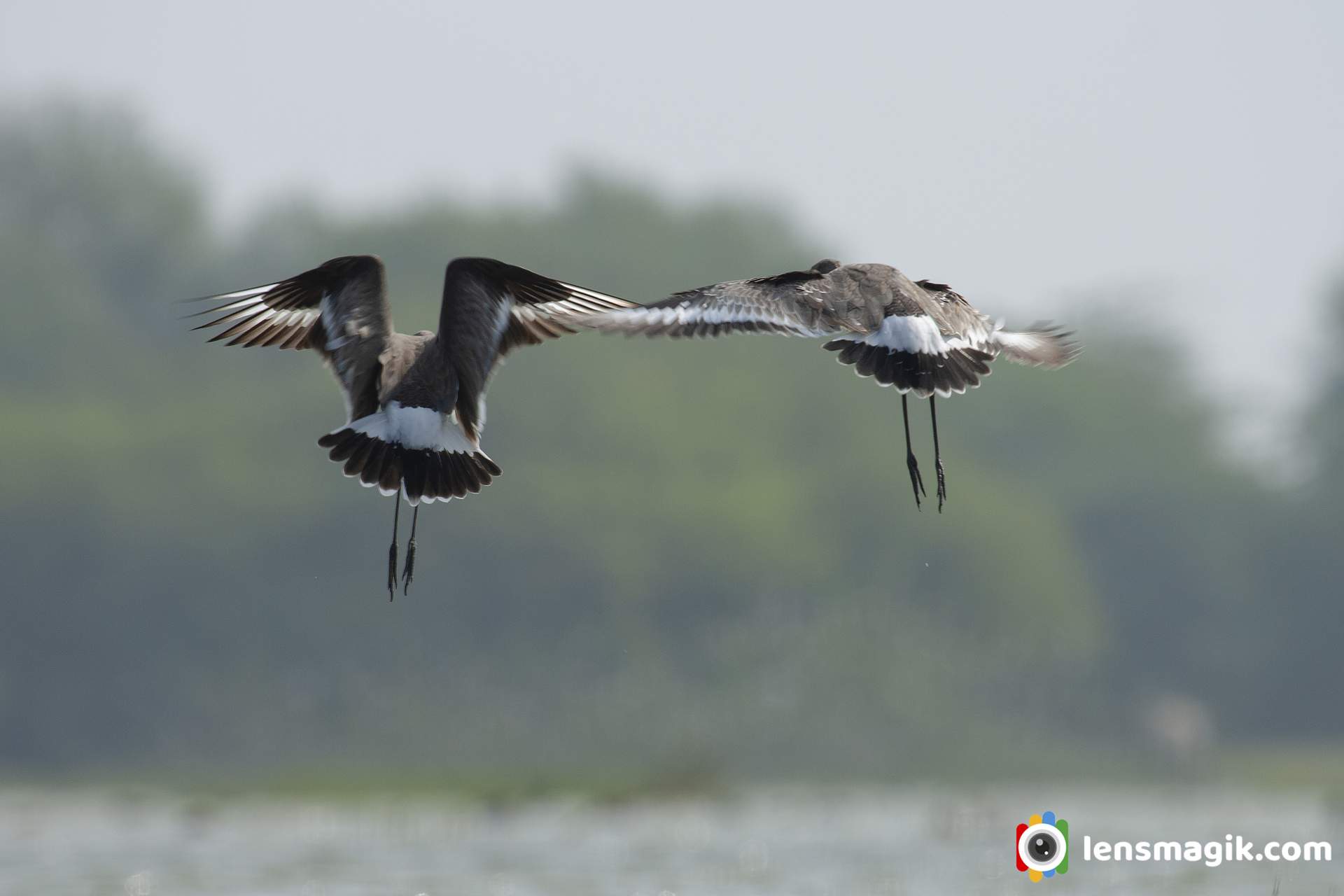
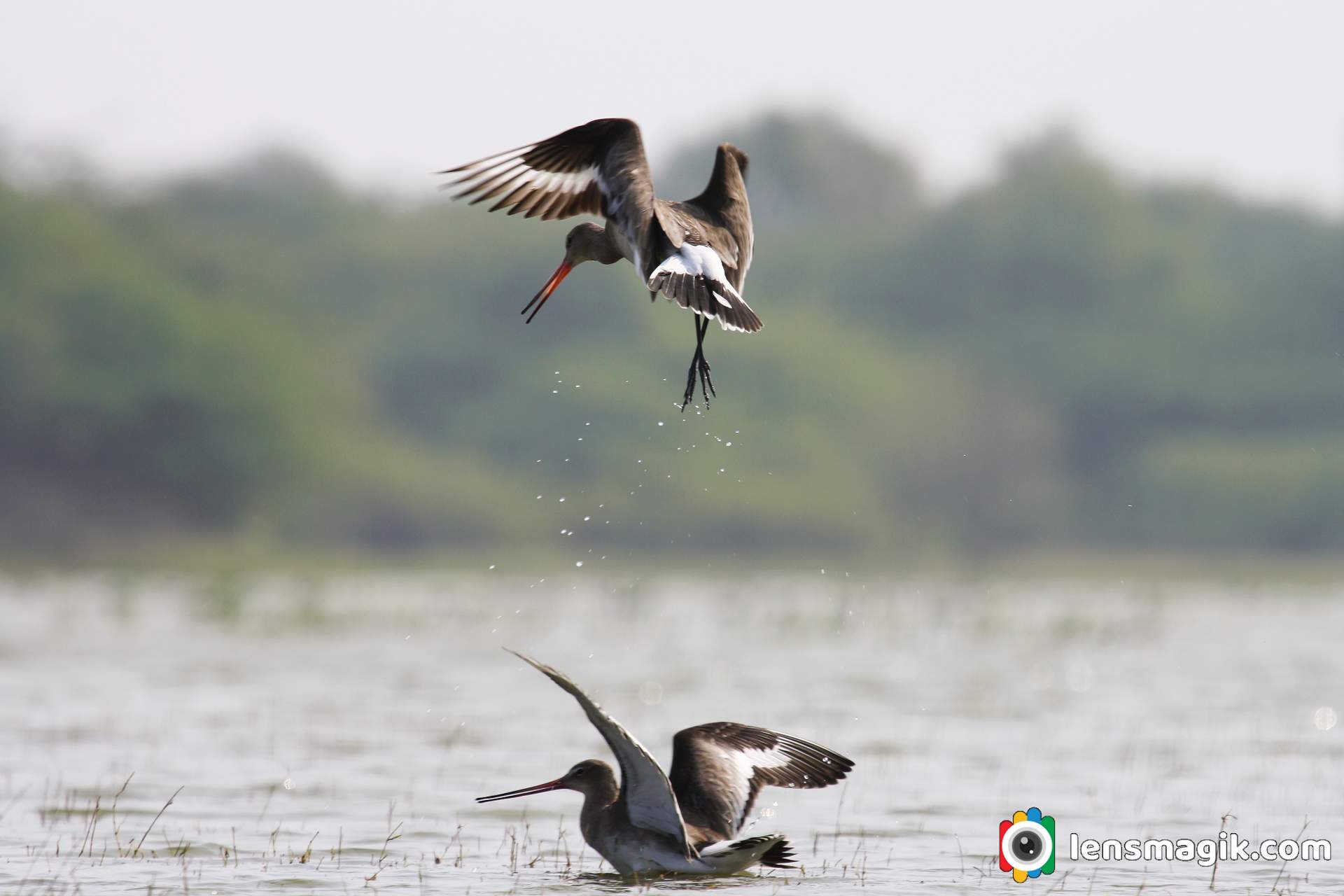
I shoot Black tailed godwit very near in Thol Lake and take a ground level shot to make good bokeh image. I was too far but i use canon 100-400 mm lens so i got good result no too good but good enough. I shoot 2 Black tailed Godwit territory fight and also matting of black tailed godwit too. Well i was confused either they fight or matting . Their long bill looks dangerous when you are very close to them. Taking a ground level shot is little bit difficult if the crowiling area is full of mud or wet. Generally i shoot without disturbing birds and shoot from much distance.
Gear Used : Canon 6 D body , Canon 100-400 mm lens
Location : Thol Bird Sanctuary
Read more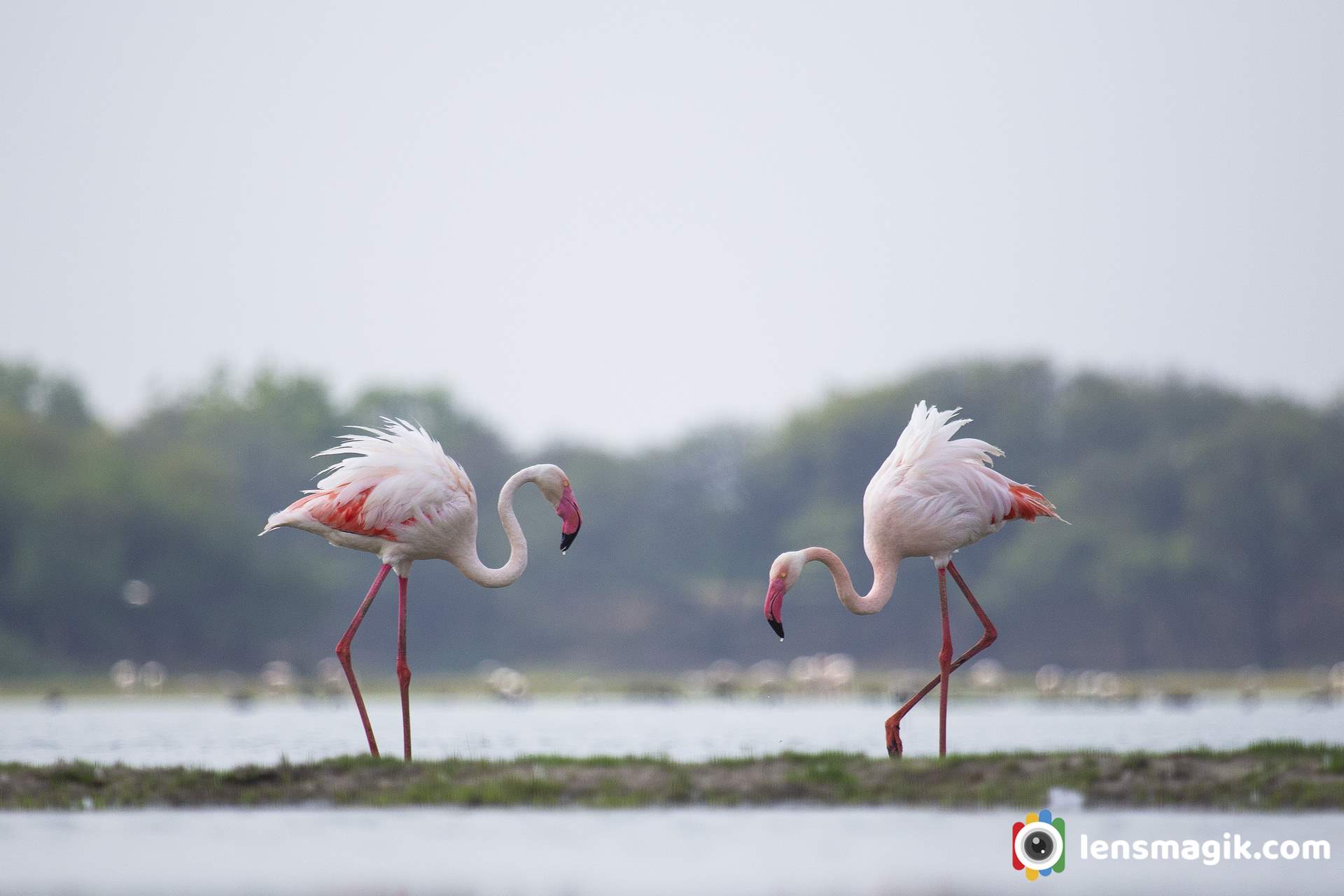
It is the largest species of Flamingo bird family and also a most widespread species of flamingo family.It is found in India ,south east , middle east and Africa. It is migratory bird. They also breed in India. In Gujarat they breed in Rann Of Kutch , Little Rann of Kutch also found in Thol Bird Sanctuary. I often visit Thol sanctuary so got good shots of them. Best time for shoot them is may-Jun at Thol bird sanctuary bcz of water level is too low . It is been recorded that some flamingo birds are resident in Gujarat at many places like LRK, Khijadia sanctuary, Nalsarovar and Thol Sanctuary. They also breed here and stay for all seasons. So you can find greater flamingo birds in all seasons in Gujarat at many places.
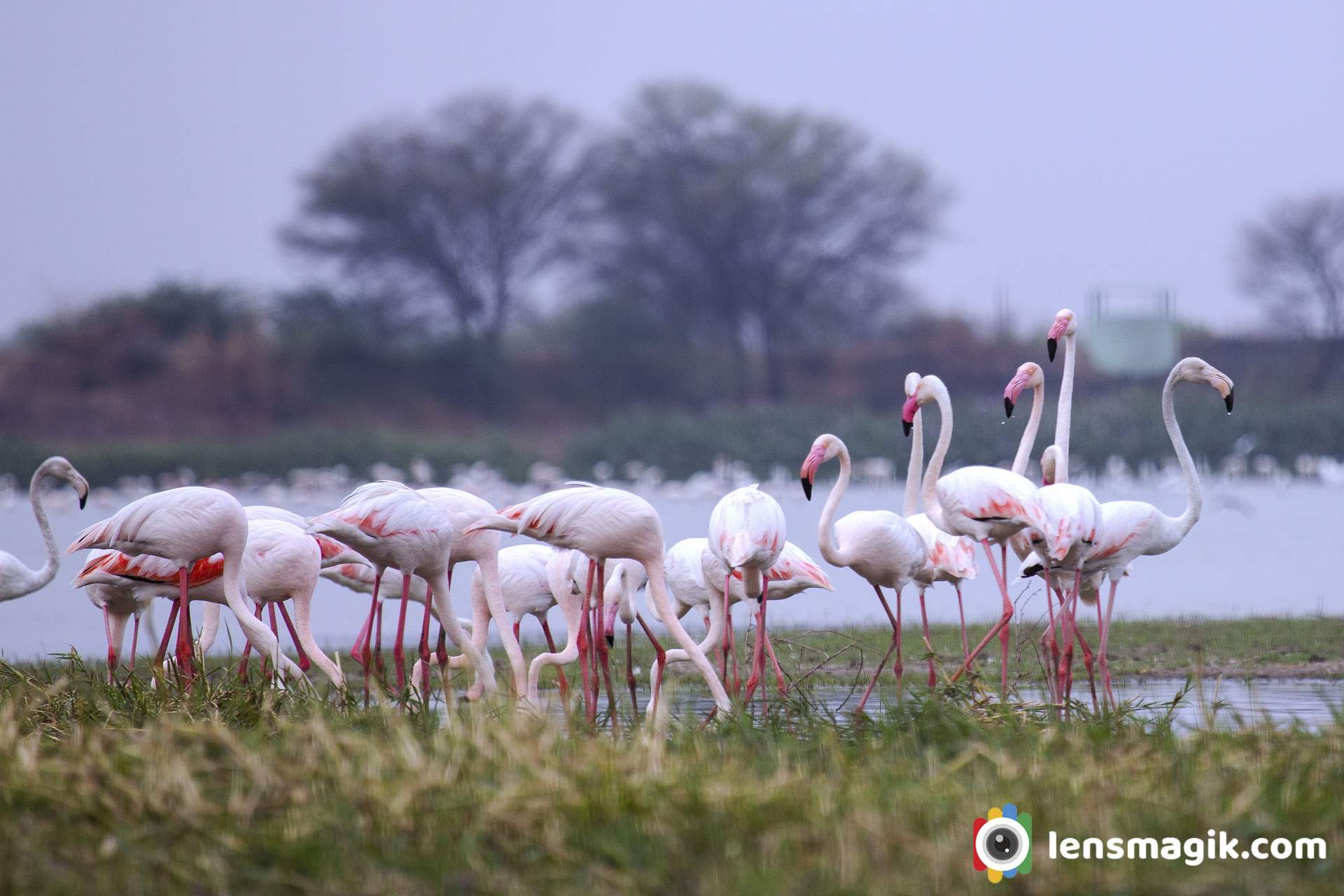
Flamingo bird facts and description :
- Greater flamingo bird is the largest living spices of flamingo.
- Greater flamingo has no subspices.
- Flamingo color most of pinkish white in plumage. Wings are red and feathers are black in end.
- Greater Flamingo bird call is like honking.
- The average lifespan of flamingo bird is 30-40 years.
- Main Difference between Greater flamingo and lesser flamingo is height . Lesser flamingo is shorter than greater flamingo. Also Greater flamingo has pale pink bill and black tip. In other case lesser flamingo has dark crimson bill. Lesser flamingo is also more red in color than greater flamingos.
Greater Flamingo birds In Thol Lake : Thol sanctuary is often i visit. Flamingo birds are stay here all seasons. I got good numbers of Greater flamingo and lesser flamingo bird images in a group when i visit Thol. This is my best time with flamingos. Also i got some beautiful pictures of flamingo birds with group and also in duo with some masti. Flamingos looks very good in frame bcz of their color. Thol lake is good place for birders because more than 150 birds spices found here. Also some mammals like Blue bull and black buck also found here. Lots of water birds and tree birds found here. Also sanctuary is not so big so you can find all birds in around 6 sqkm area. Best time to visit thol lake is November to March. All migratory birds are visit in winter so that is best time. Early morning is best for birders.
Timing And Fees of Thol Sanctuary :
Thol Sanctuary open at 6 AM in morning and close at around 5 PM
Fees of Thol Sanctuary is 50 INR per person and camera fees are 200 INR. Car fees are 500 INR.
Weekend fees may change that actually i don't know about it.
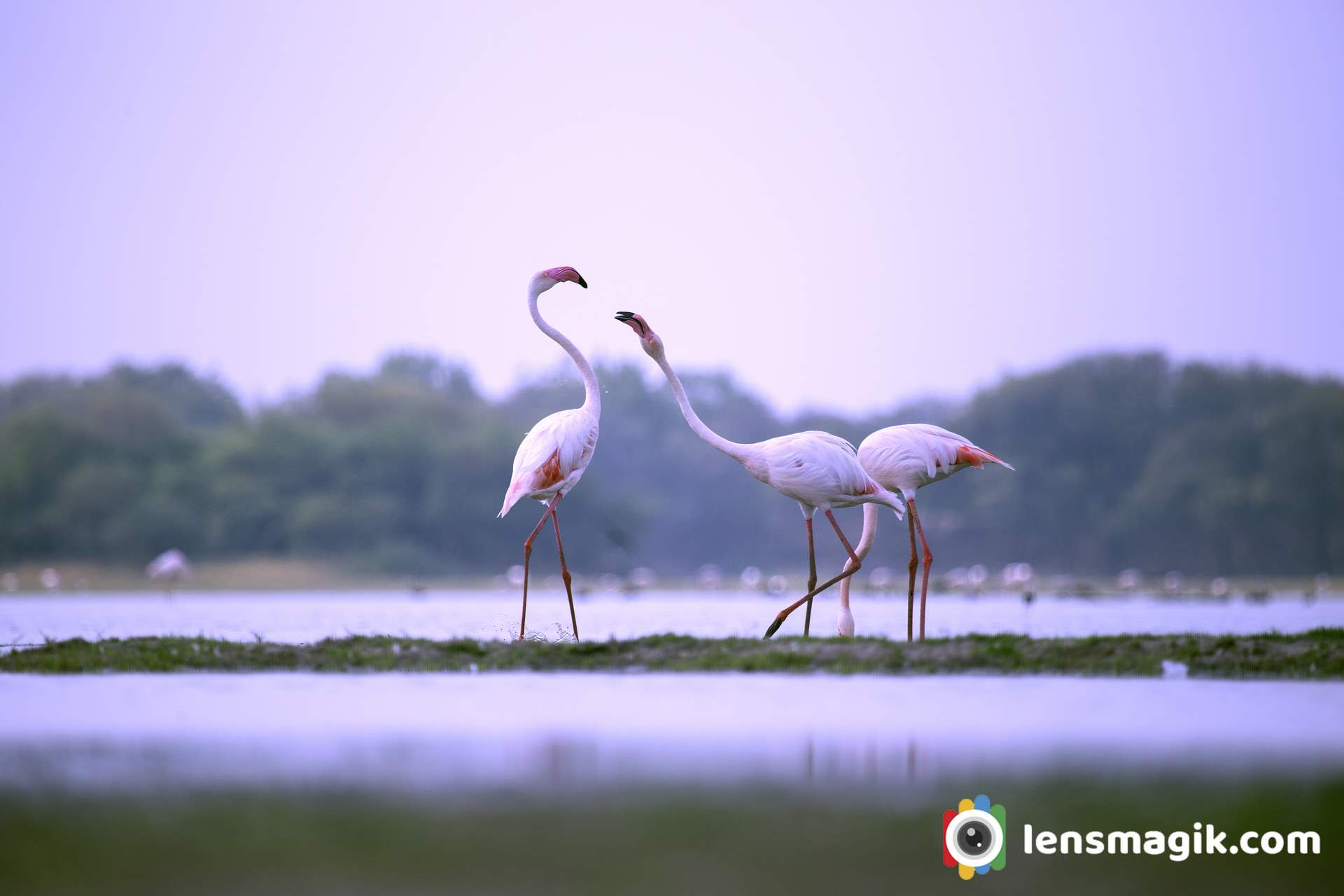
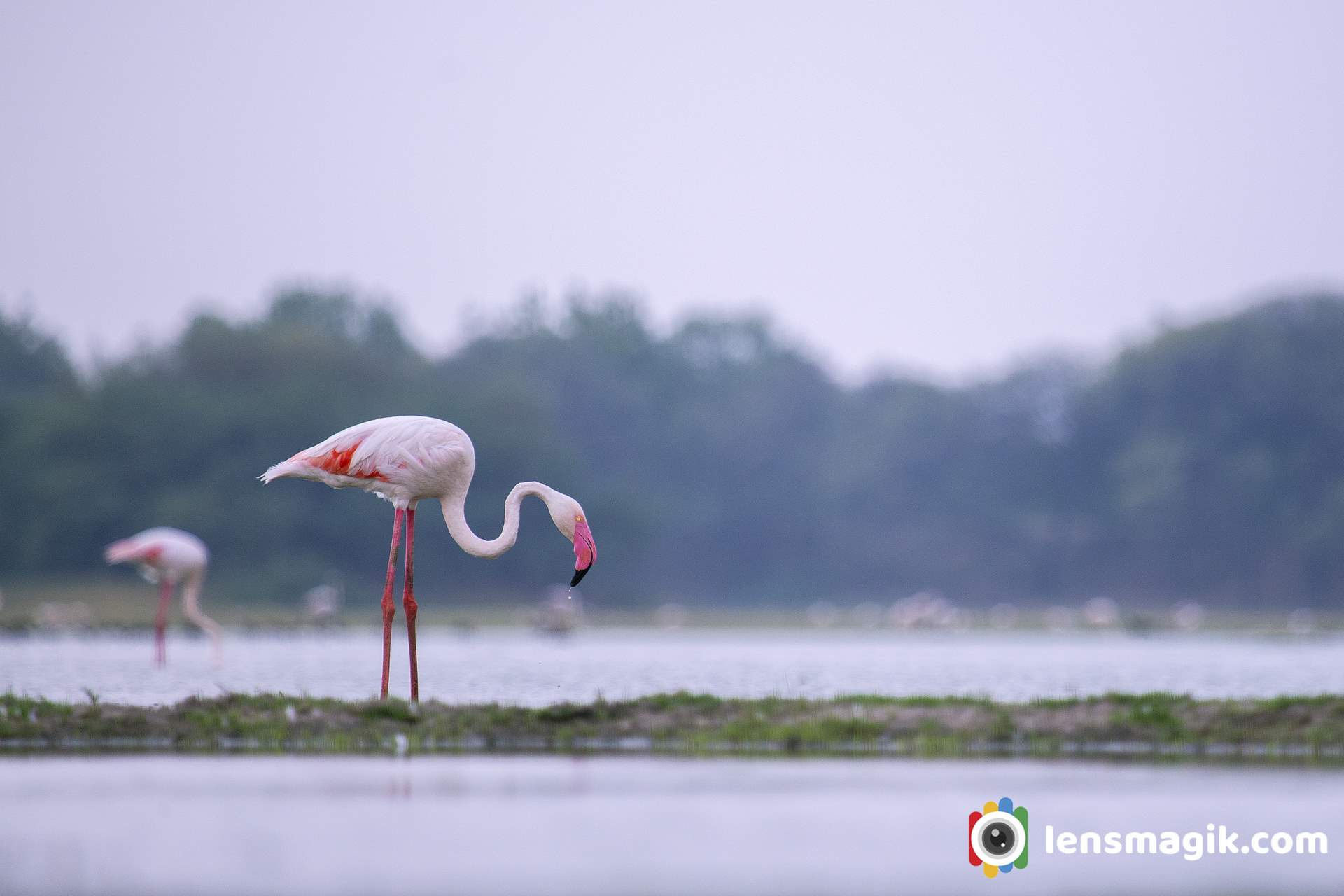
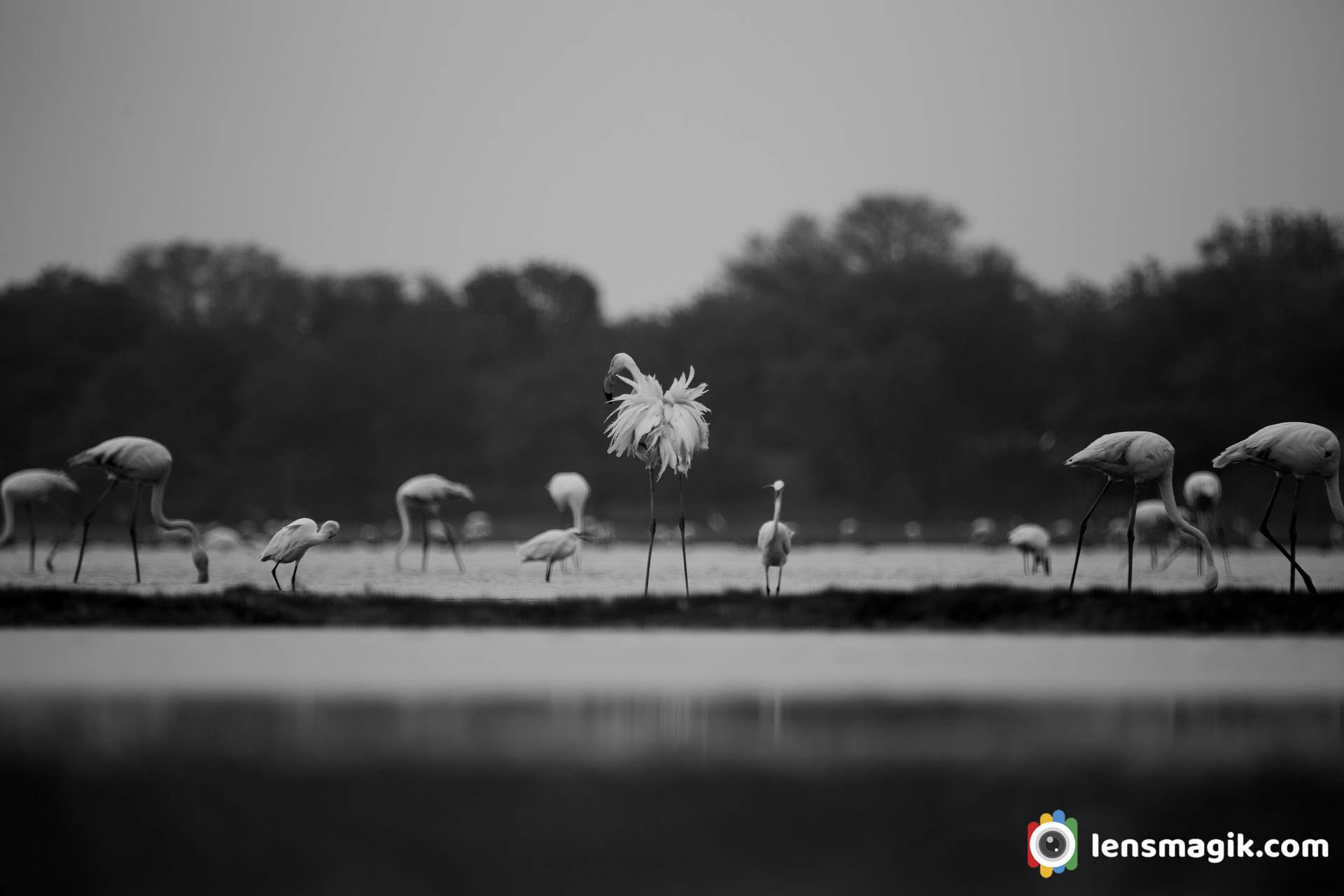
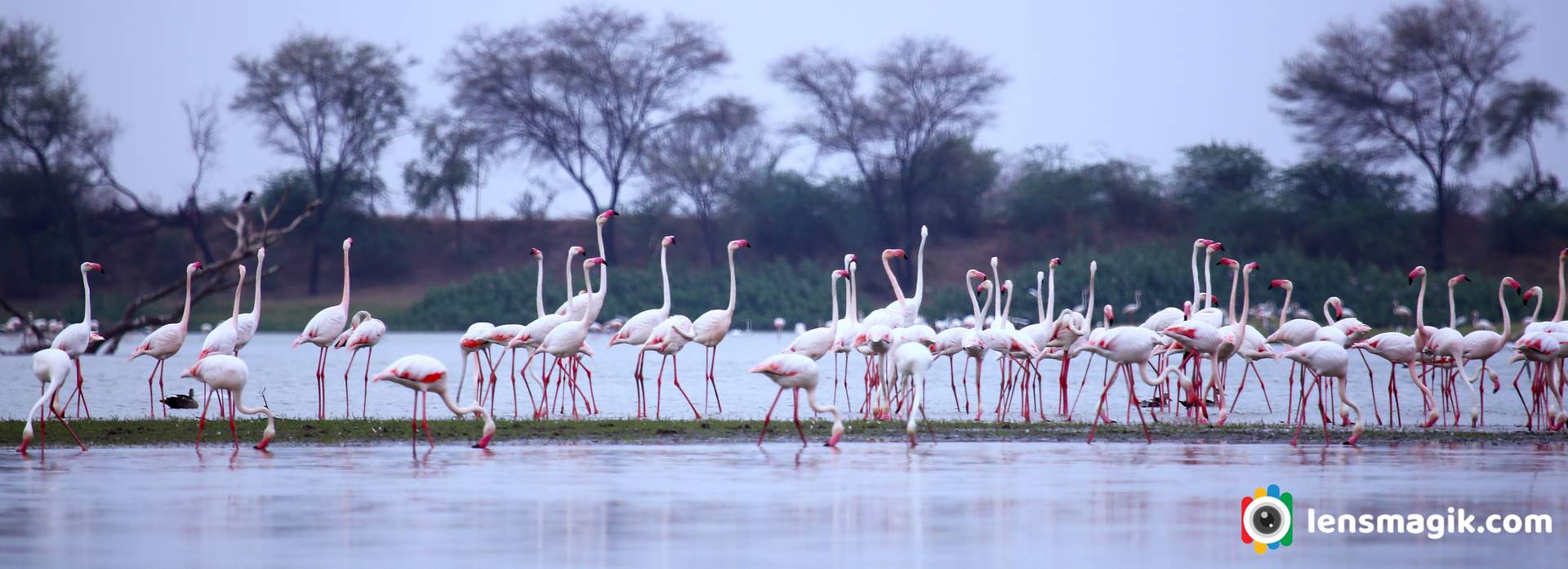
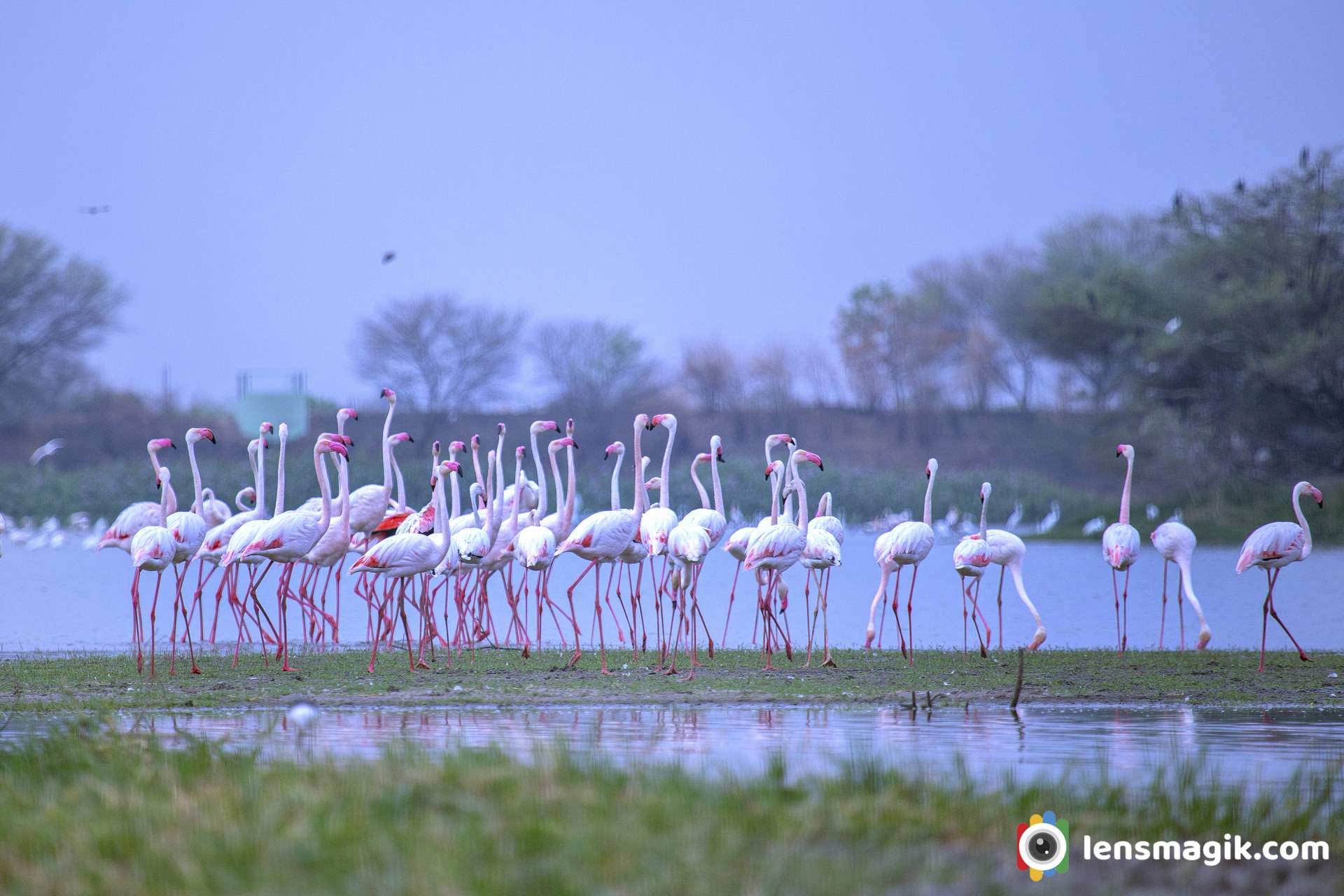
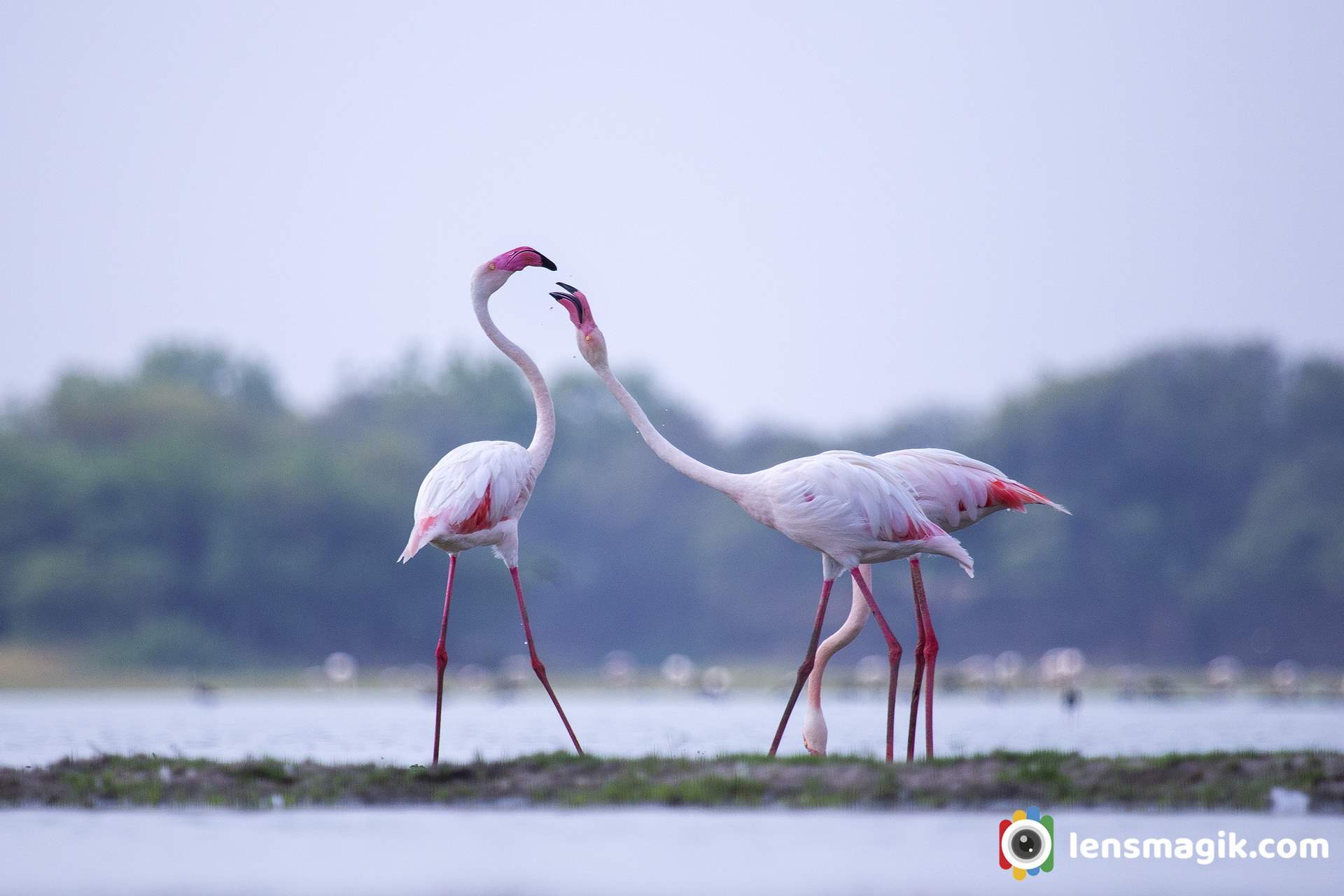
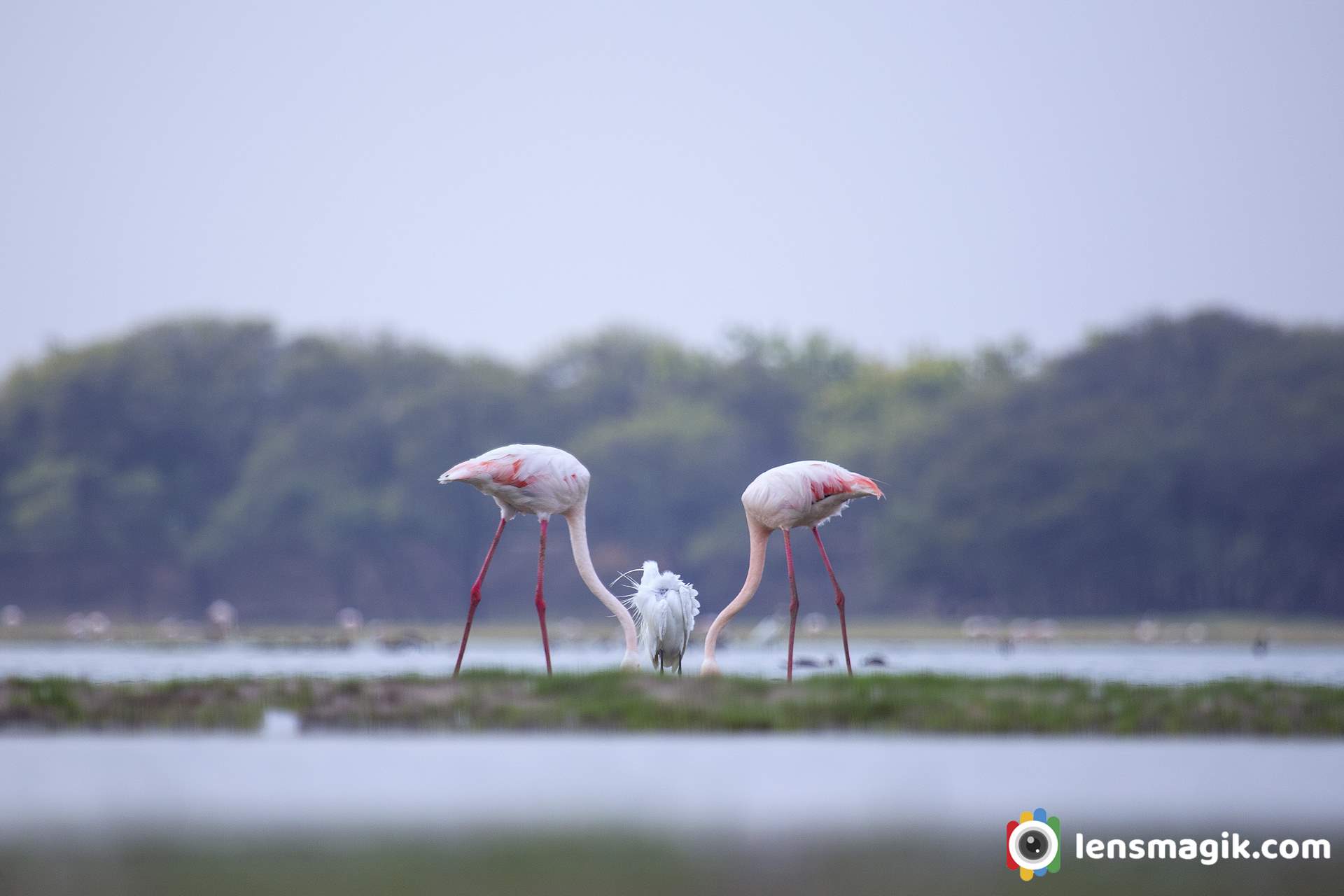
Two flamingos with little egret in between of them with down head all. The images of flamingo bird making a good frame. Because of its color flamingo birds images are very attractive and also their grouping make a perfect frame of flamingo bird picture.
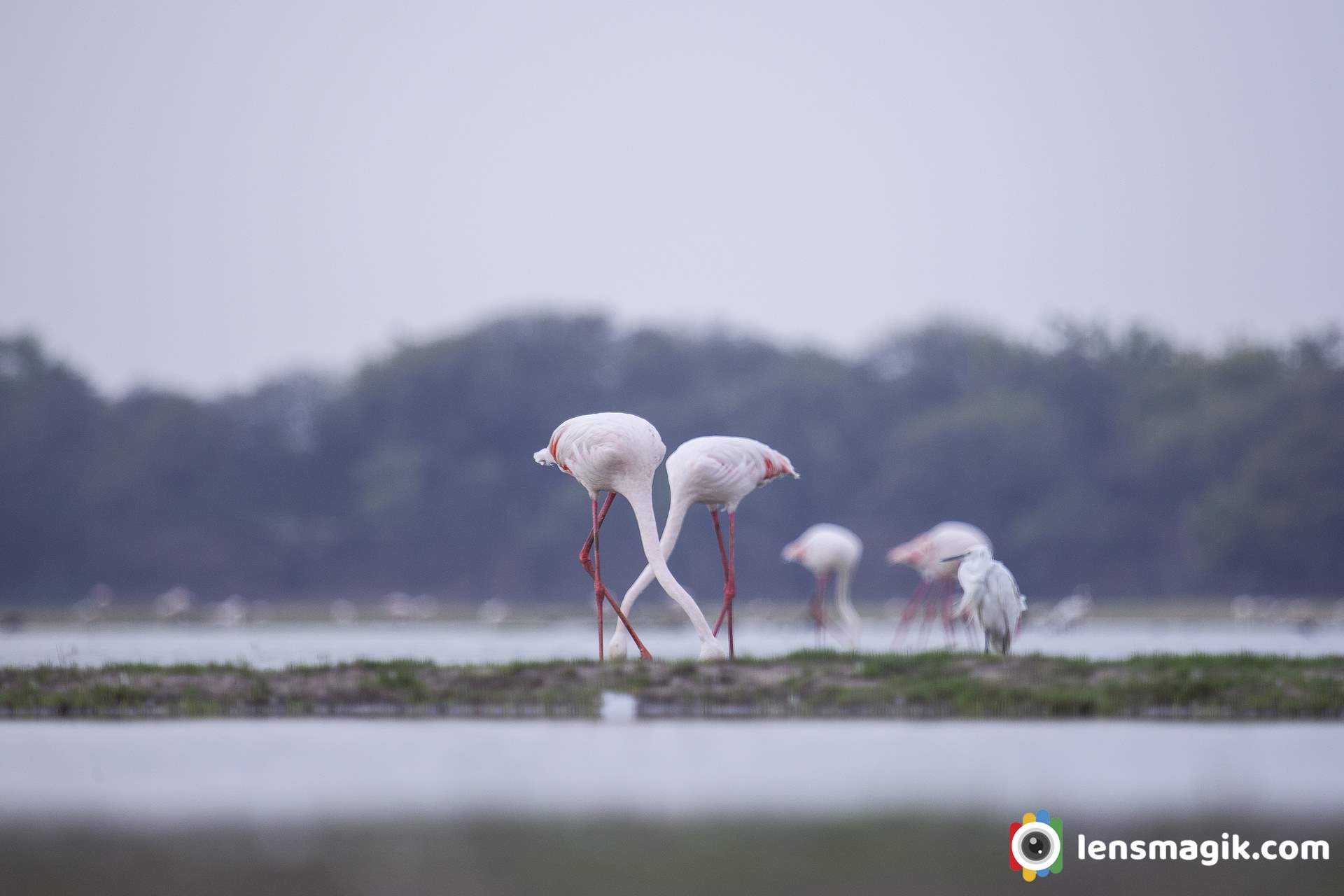
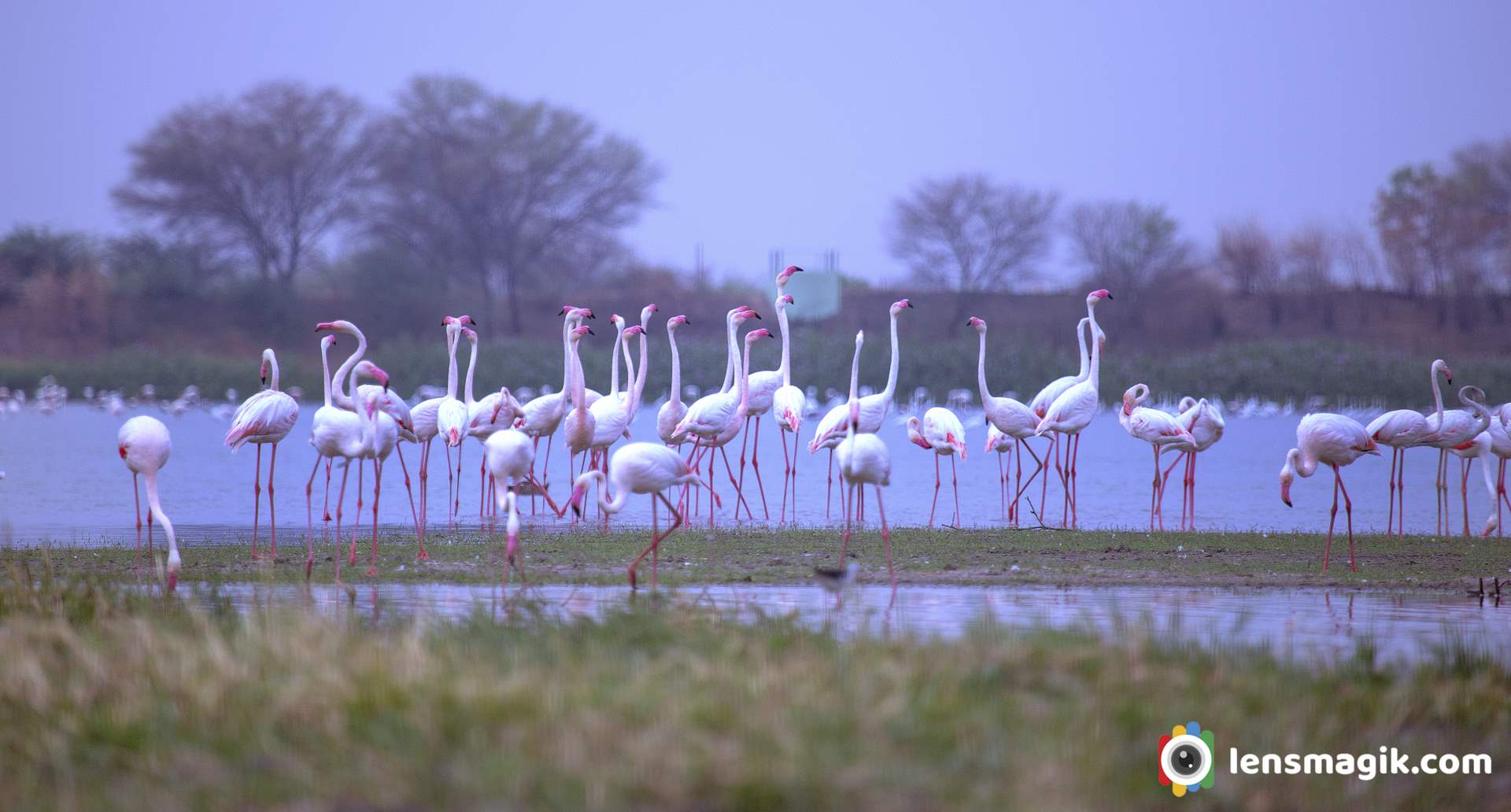
A morning pared time for flamingo birds. A beautiful Greater flamingo birds are in a raw make image nice and show their unity.
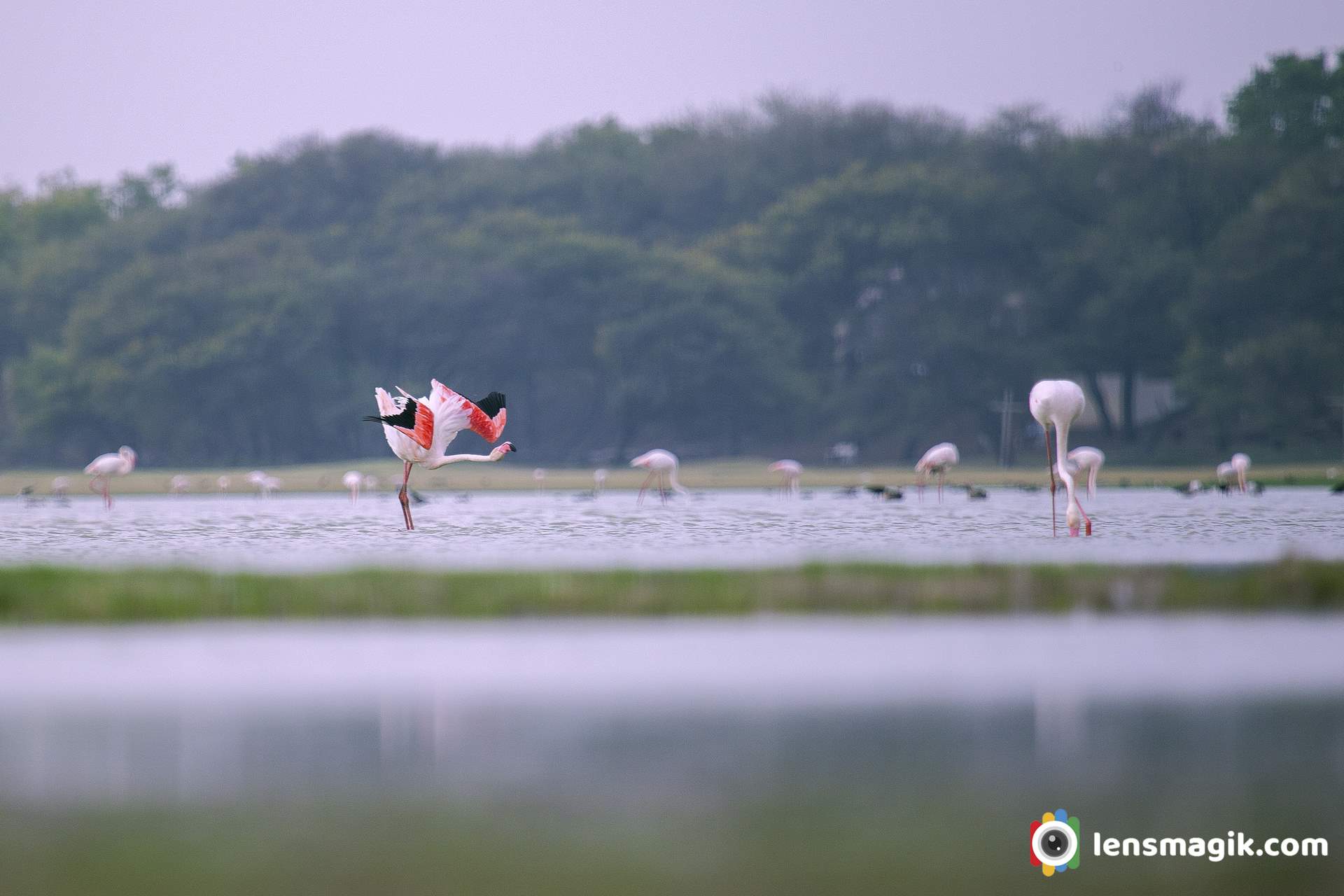
Perfact wingspan of Flamingo bird looks great. Pink Wings make image more attractive.
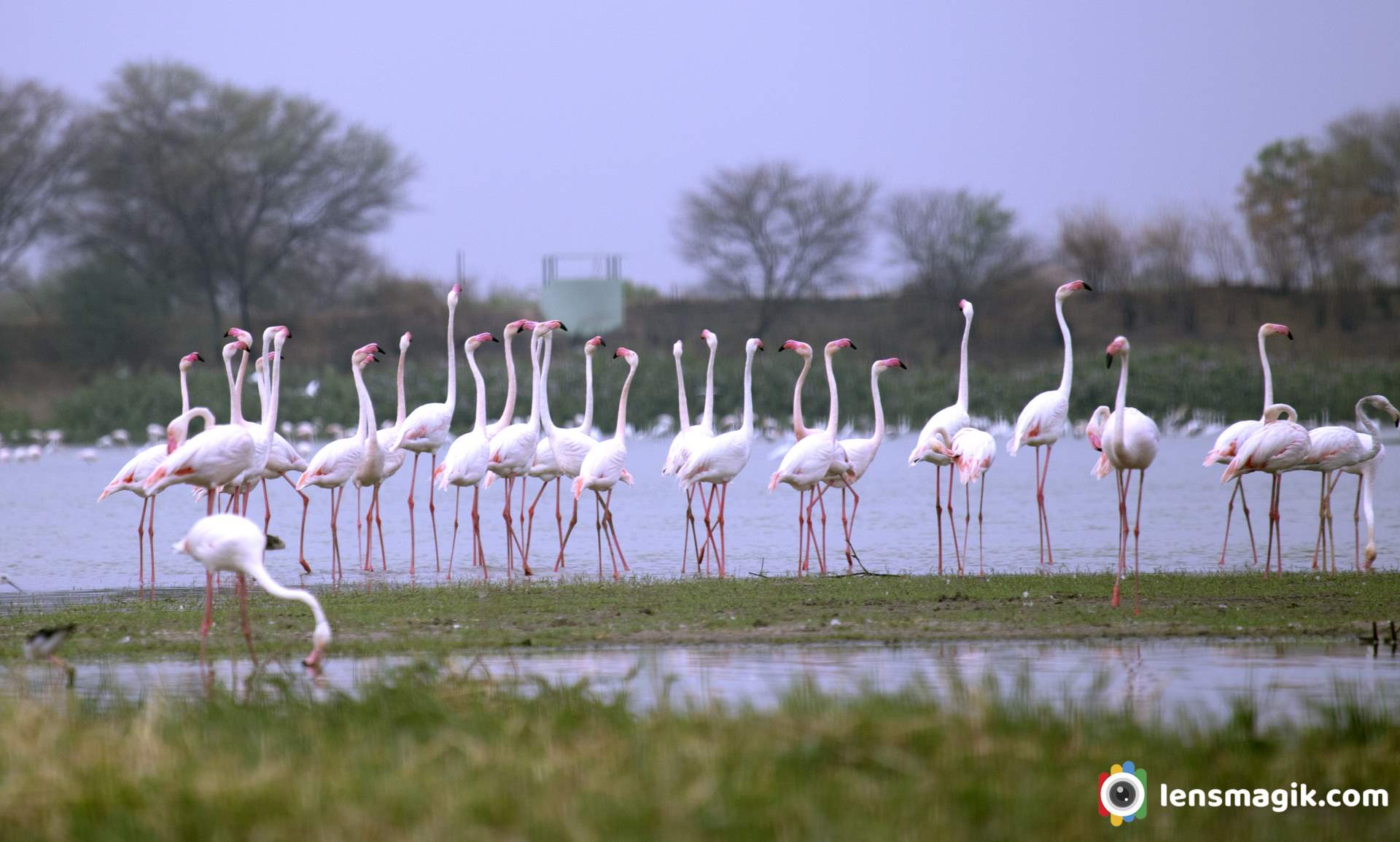
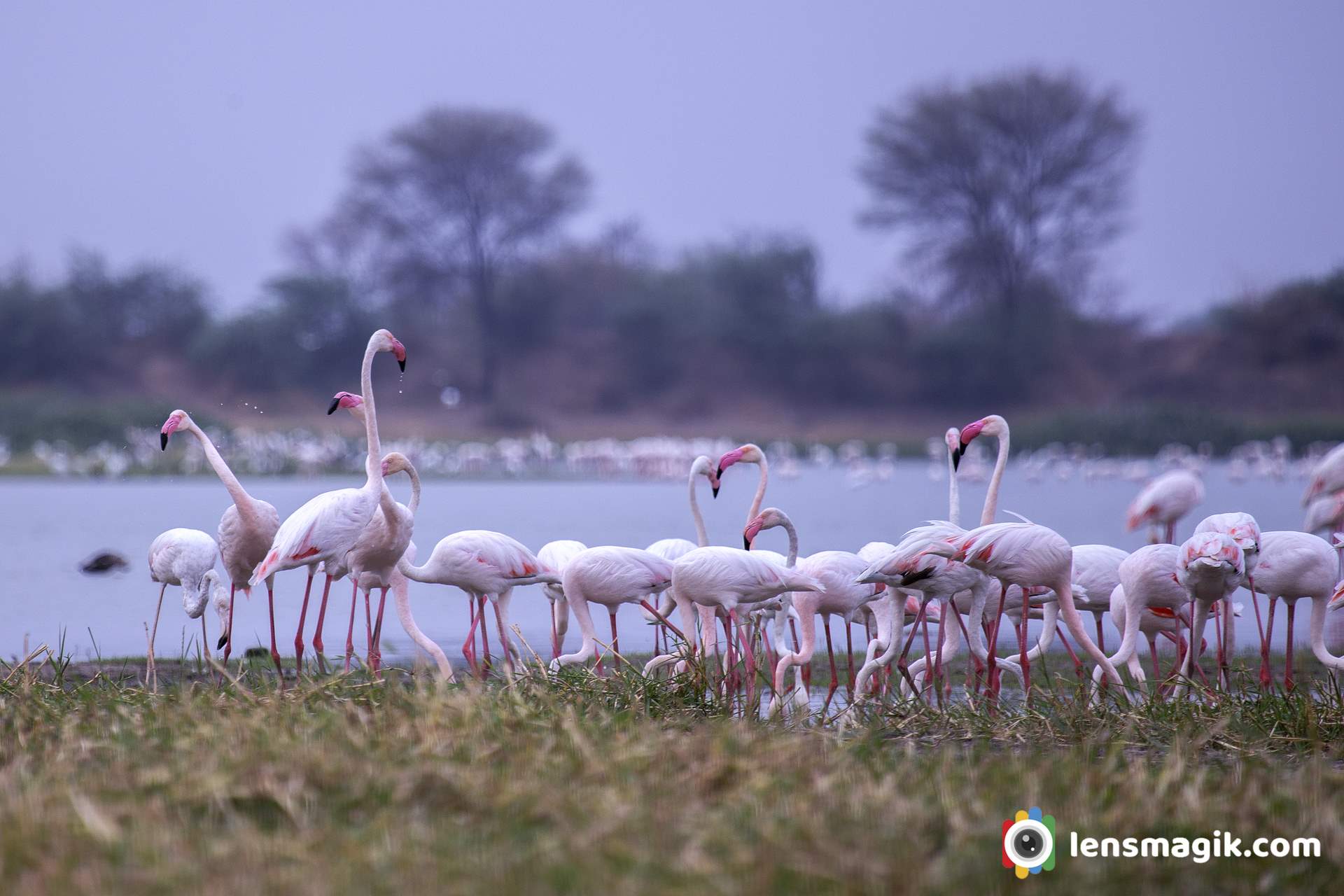
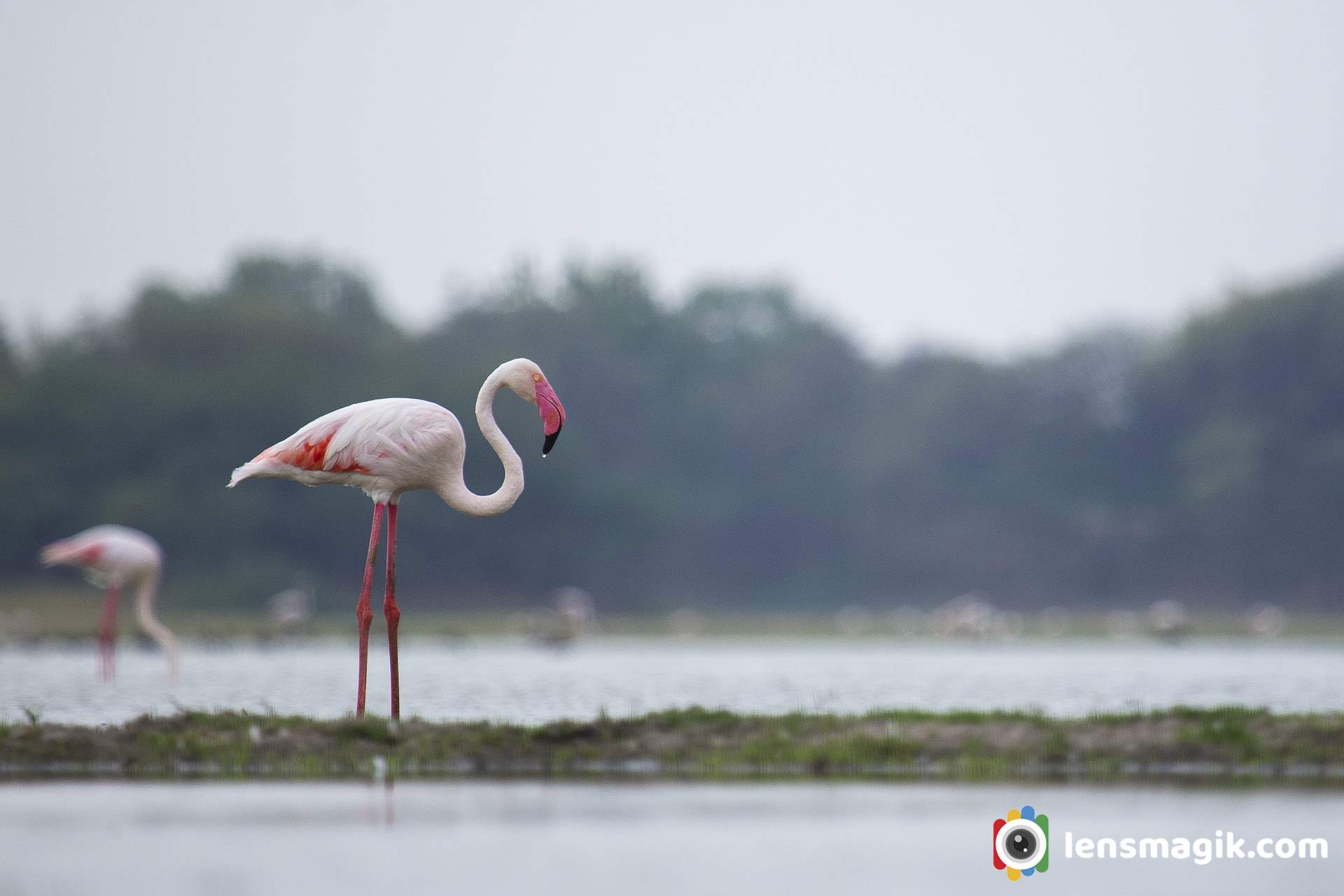
Solo Greater flamingo bird
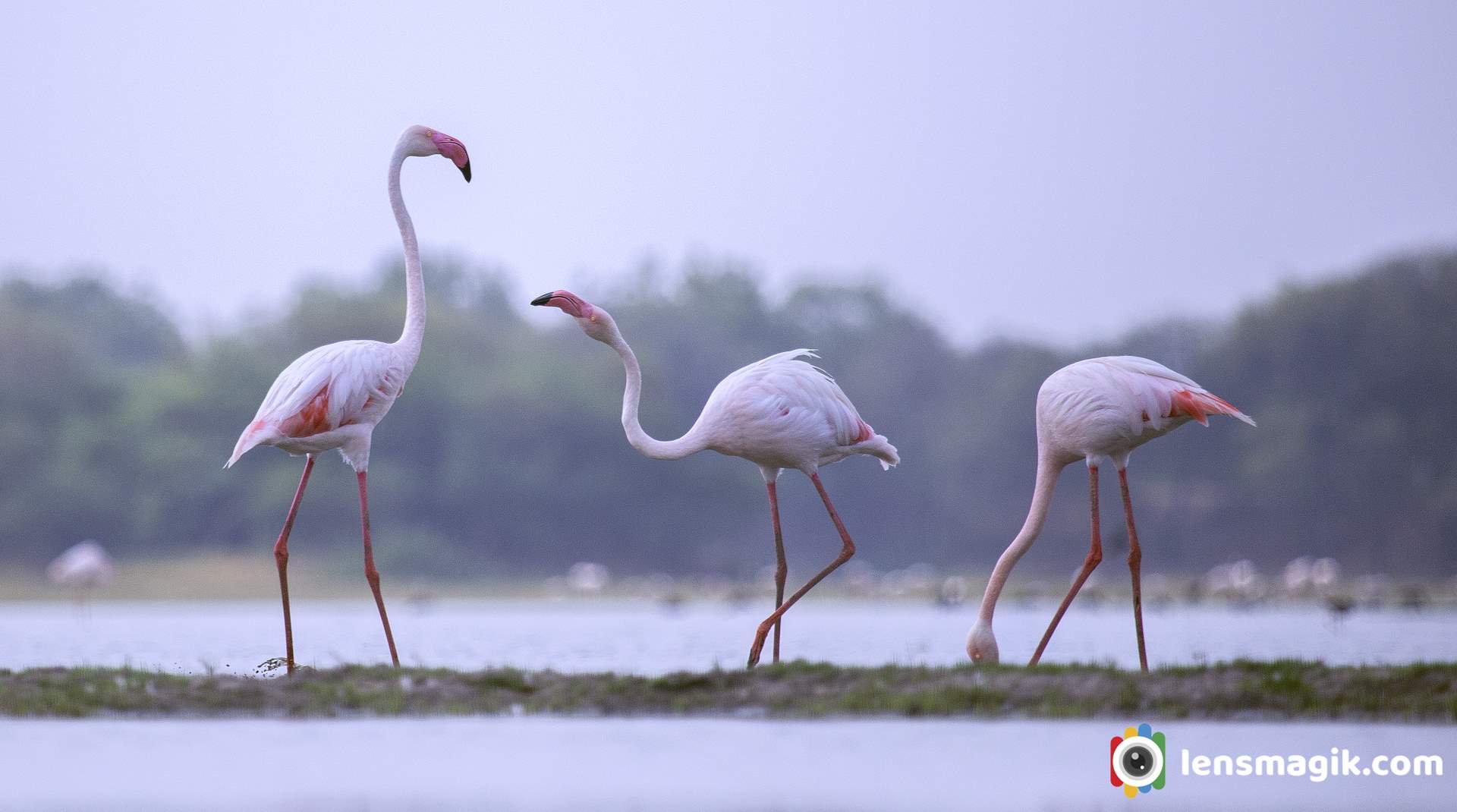
Some masti time for two flamingo birds .
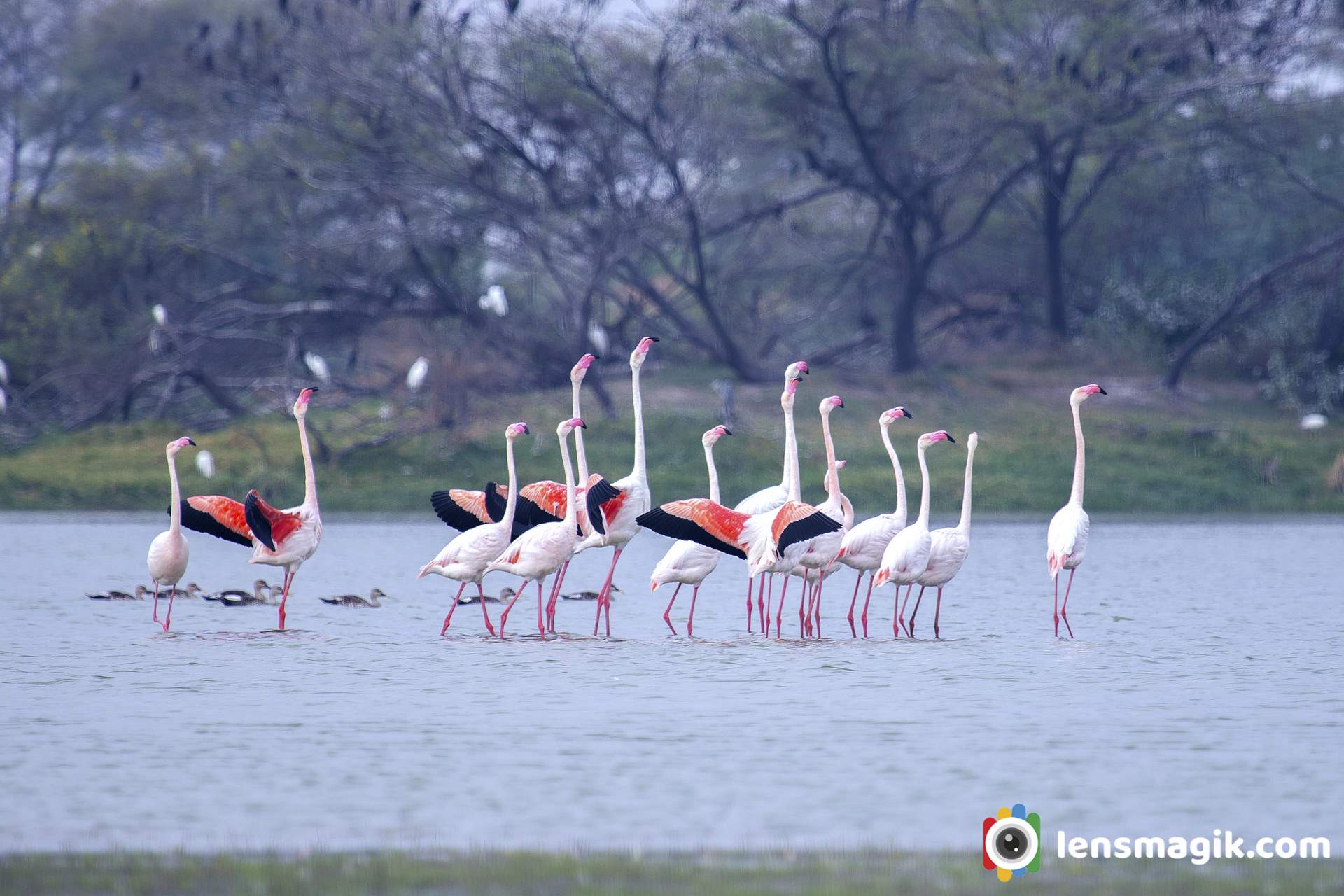
Above image shows the discipline of Flamingo Bird and looks like a morning pared they are doing .
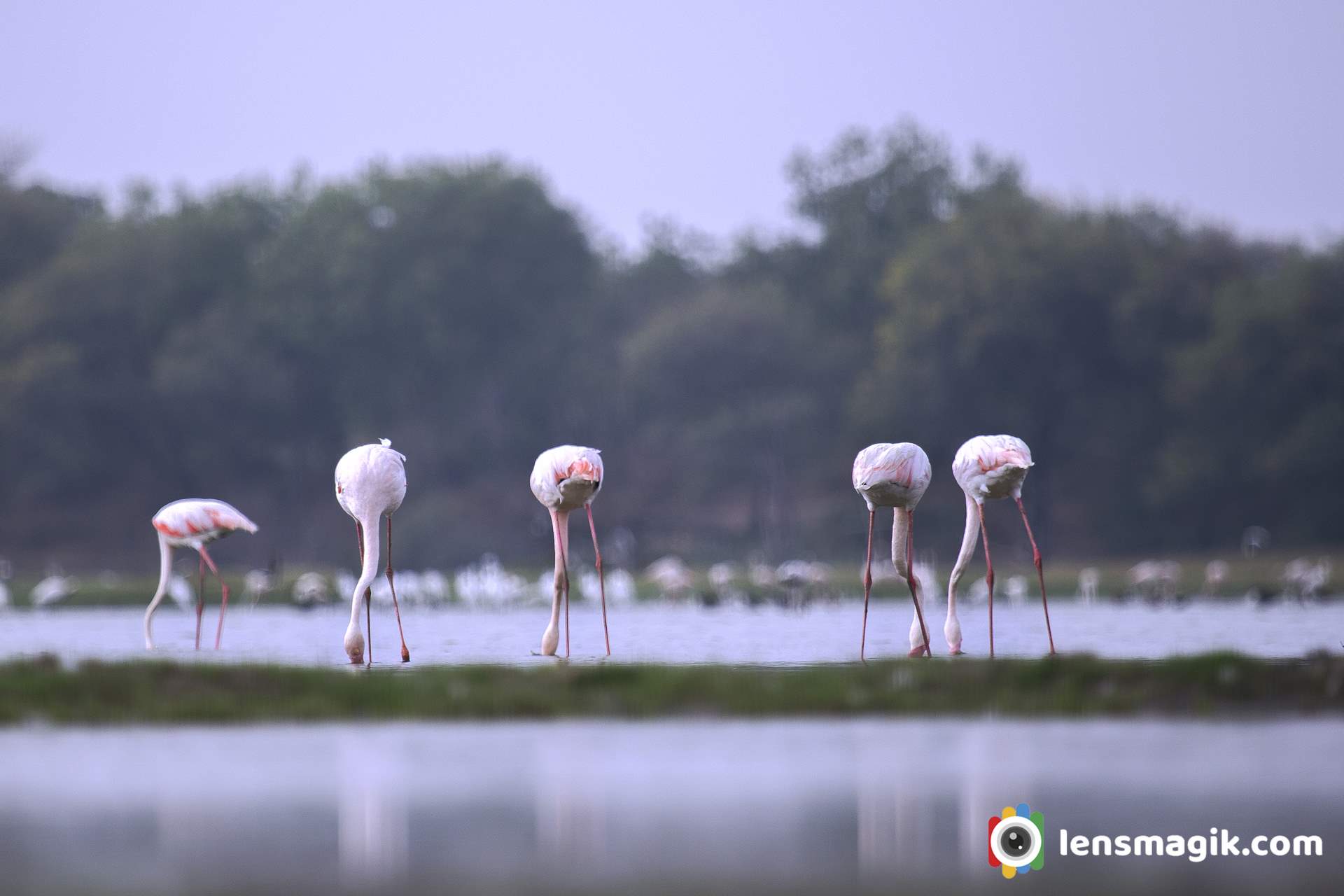
https://youtu.be/9dVBrR9NSOo
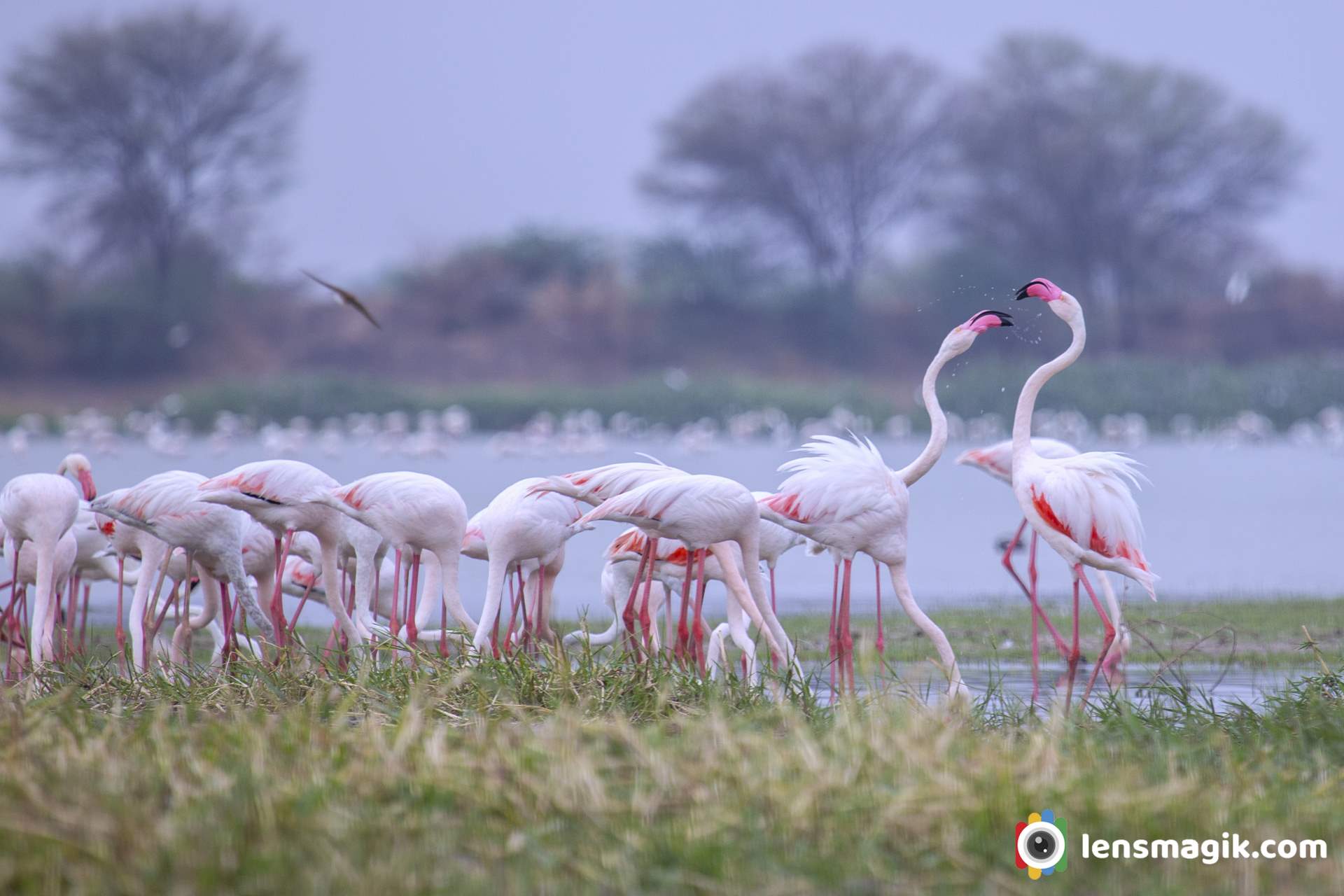
A group of Flamingo Birds at Thol Lake make your frame awesome.
Location : Thol Lake, Gujarat
Thol lake is just 25 km approx. from Ahmedabad. You can visit one day for Thol lake is enough. Also you can find another migratory birds like pelicans , bar headed goose, river tern and many more resident spices.
Ahmedabad to Thol lake distance about 25km
Read more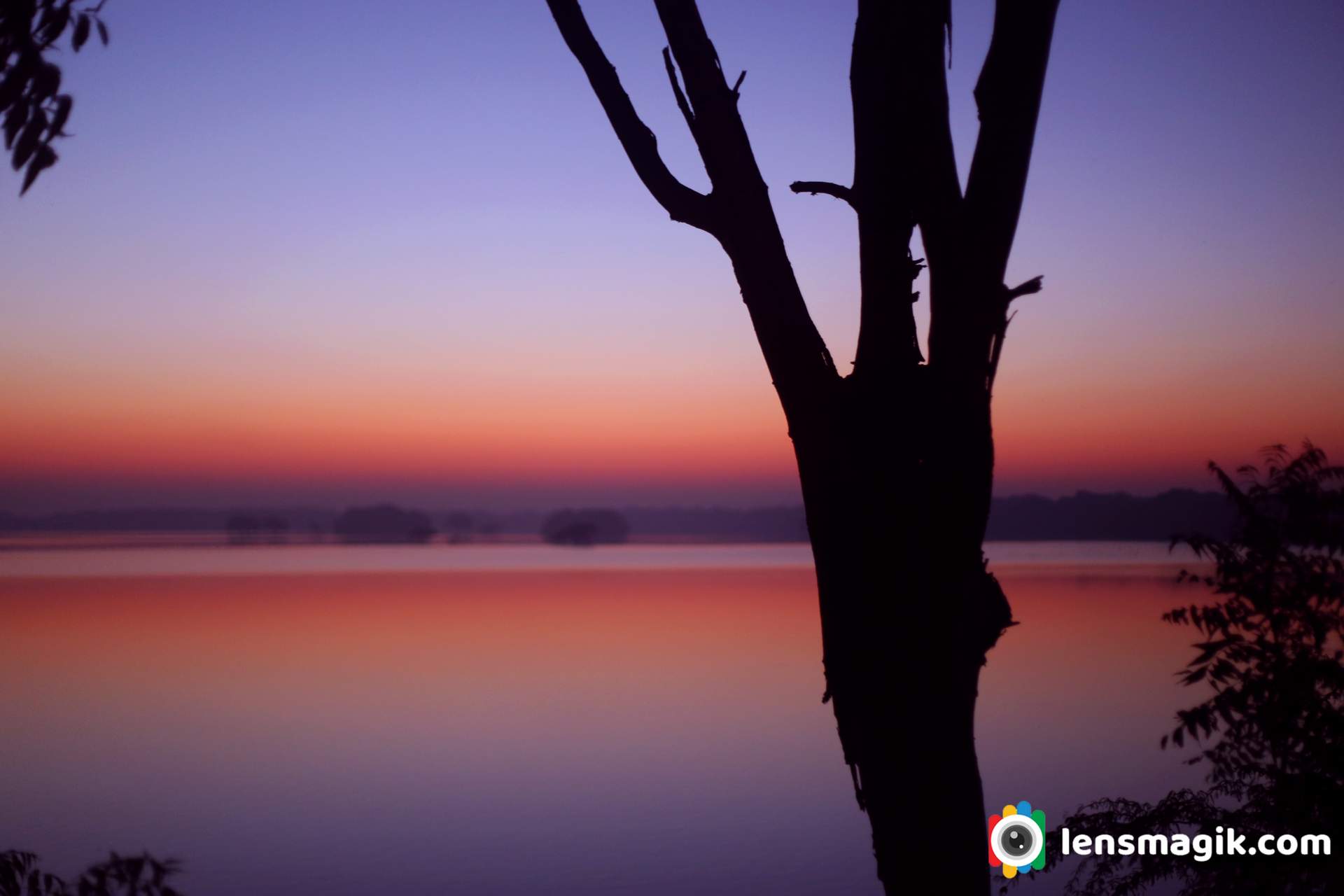
The Time of the day between Daylight and Night or Darkness is Twilight. Simply means after sunset or before sunrise time you can see beautiful tri color sky with diffused and sometimes pinkish sky. At this moment The Sun is below the horizons but sunrays are disordered due to atmosphere of Earth and it make color of twilight.
Difference between Twilight And Dusk :
Time between Sunset and Dusk is called Twilight. At twilight moment there is little bit light in the sky. When the Sun is at 18 degree below the horizon that point is called Dusk. There is no sunlight at Dusk point.
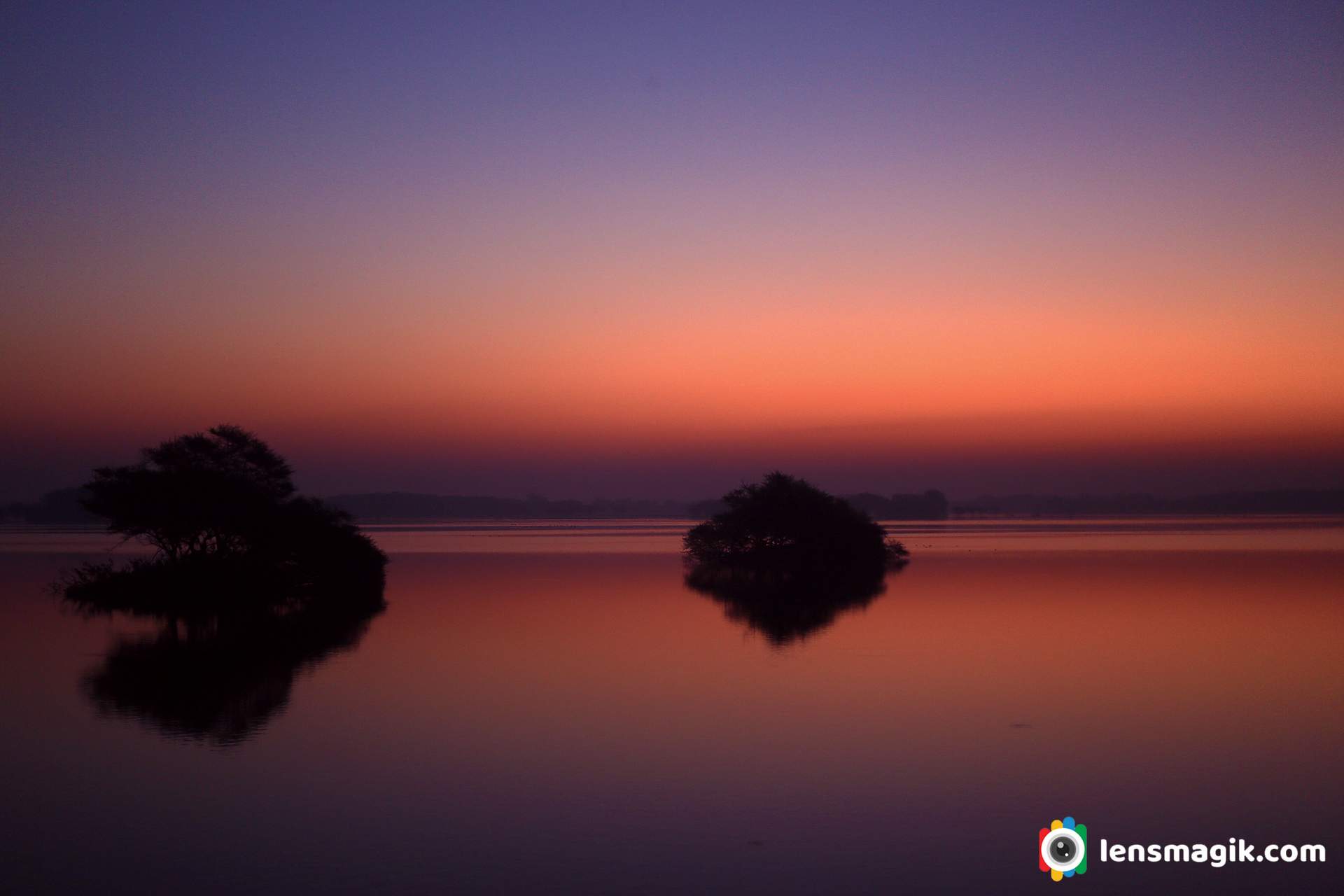
Types of Twilight :
There are three types of Twilight
- Civil Twilight ( nearest to the Horizon )
- Astronomical Twilight ( fareast from Horizon )
- Nautical Twilight ( Fareast from Horizon )
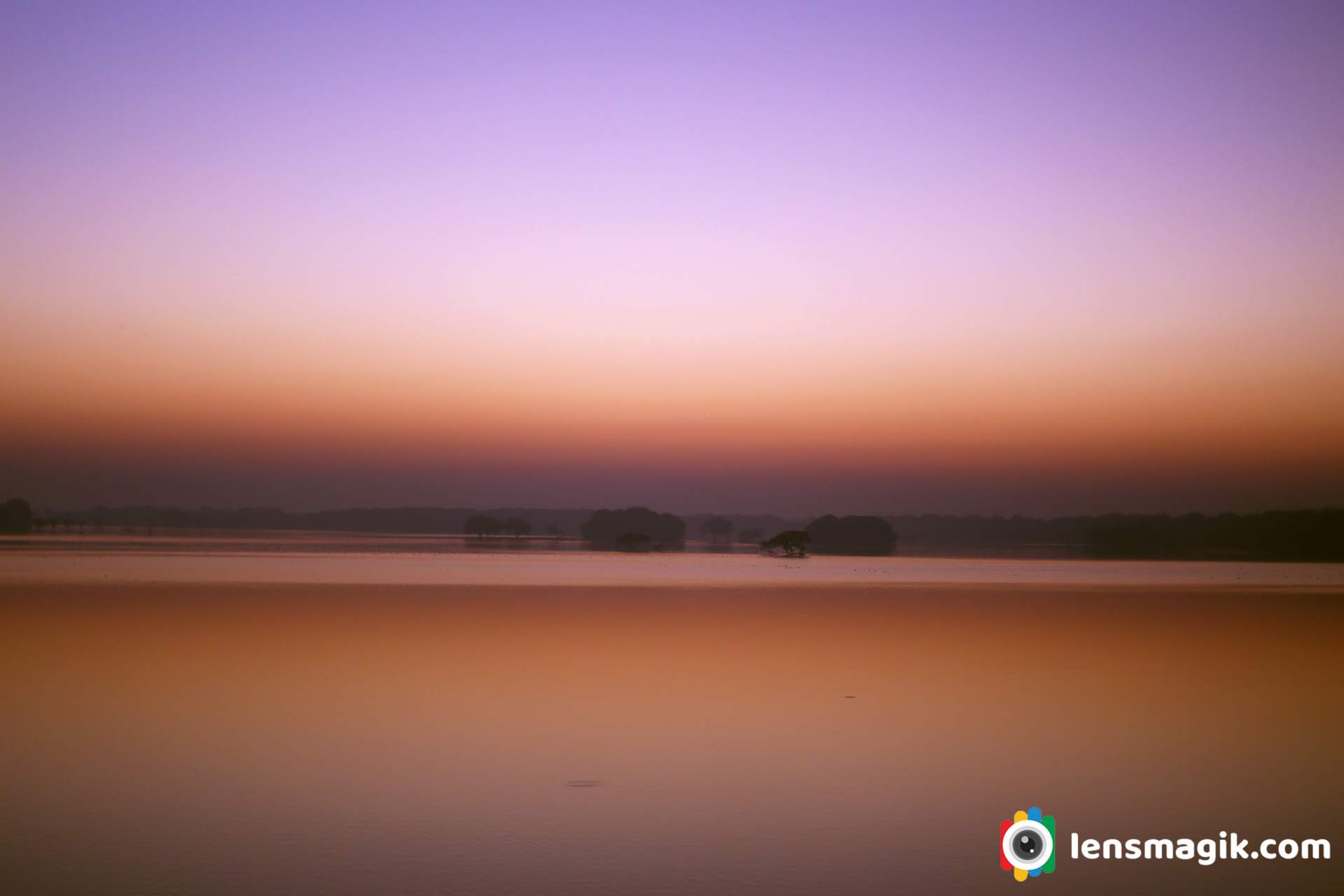
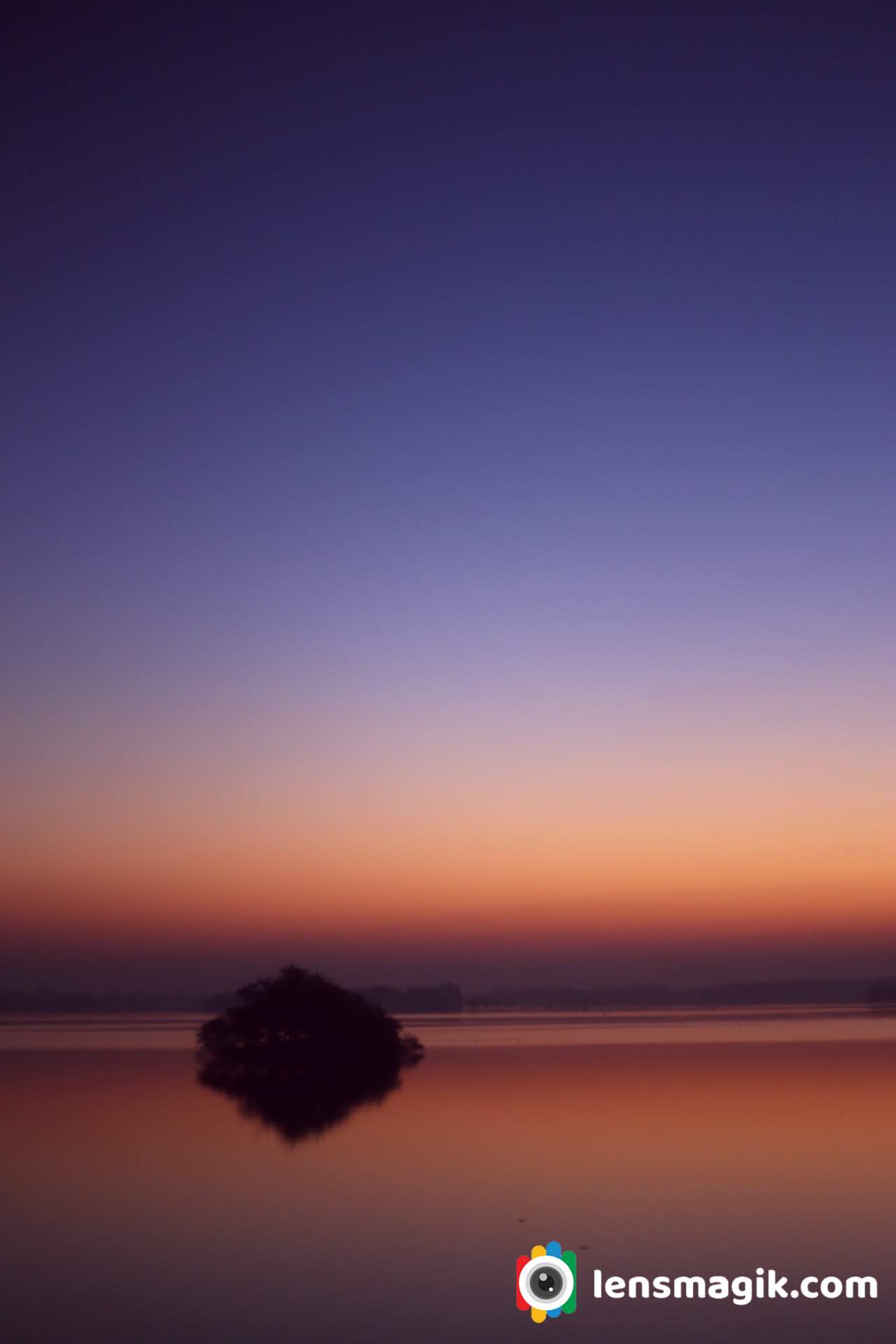
About Thol Bird Sanctuary :
Thol Bird Sanctuary is located near Thol Village in Kadi in Mehsana District Gujarat. It was made in 1912 for irrigation tank. Later on the winter visitor birds and also lots of migratory birds came here it was declared as an Sanctuary in 1988. Thol Lake or Thol Bird Sanctuary is one of most favorite place for bird watchers. Here you can find lots of resident birds, Migratory Birds, Waders , Water birds, Serpents, Tortoies, Squirrels, Monitor Lizards etc. The different kinds of birds is the beauty of Thol Lake.
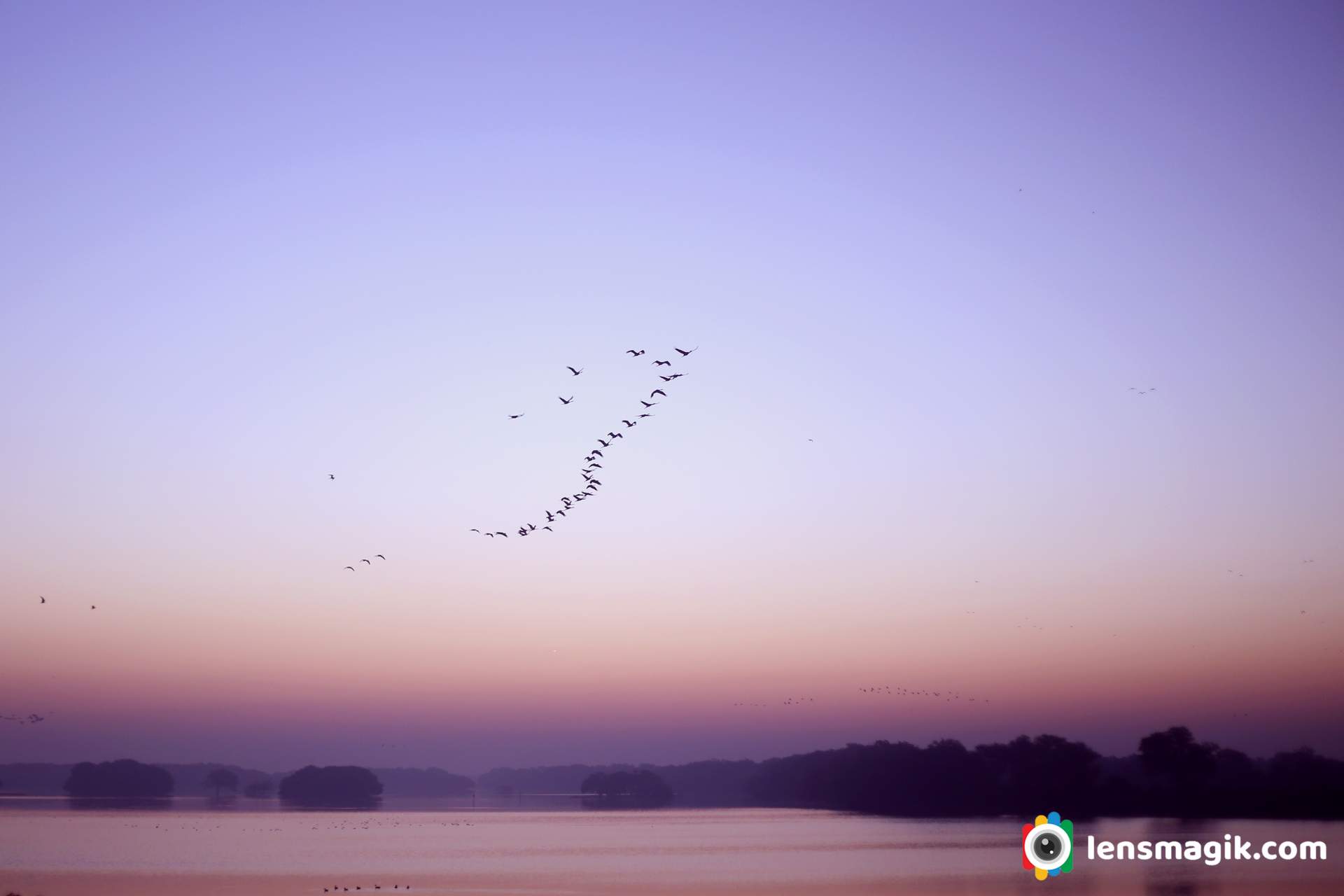
Twilight Sky At Thol Lake :
I oftenly visit Thol Lake for birding. During winter season i went for flemingos and pelicans specially. Winter is best time for Thol Lake. When my cousine came from USA we visited Thol Sanctuary. Generally i went early morning at 7 AM but my cousine was very exited to visit thol so we came early 5 AM at Thol Lake. There was a darkness at Thol Lake and also The gate open at 6 AM. so we wait for open the gate. When the gate was open and we just enter the lake we saw Twilight sky . A tri color sky looks amazing. I had never seen that type of sky before. Different shade of sky before 10 minutes of sunrise. That was experienced that we are in heaven. My cousine was very happy to see Twilight sky.
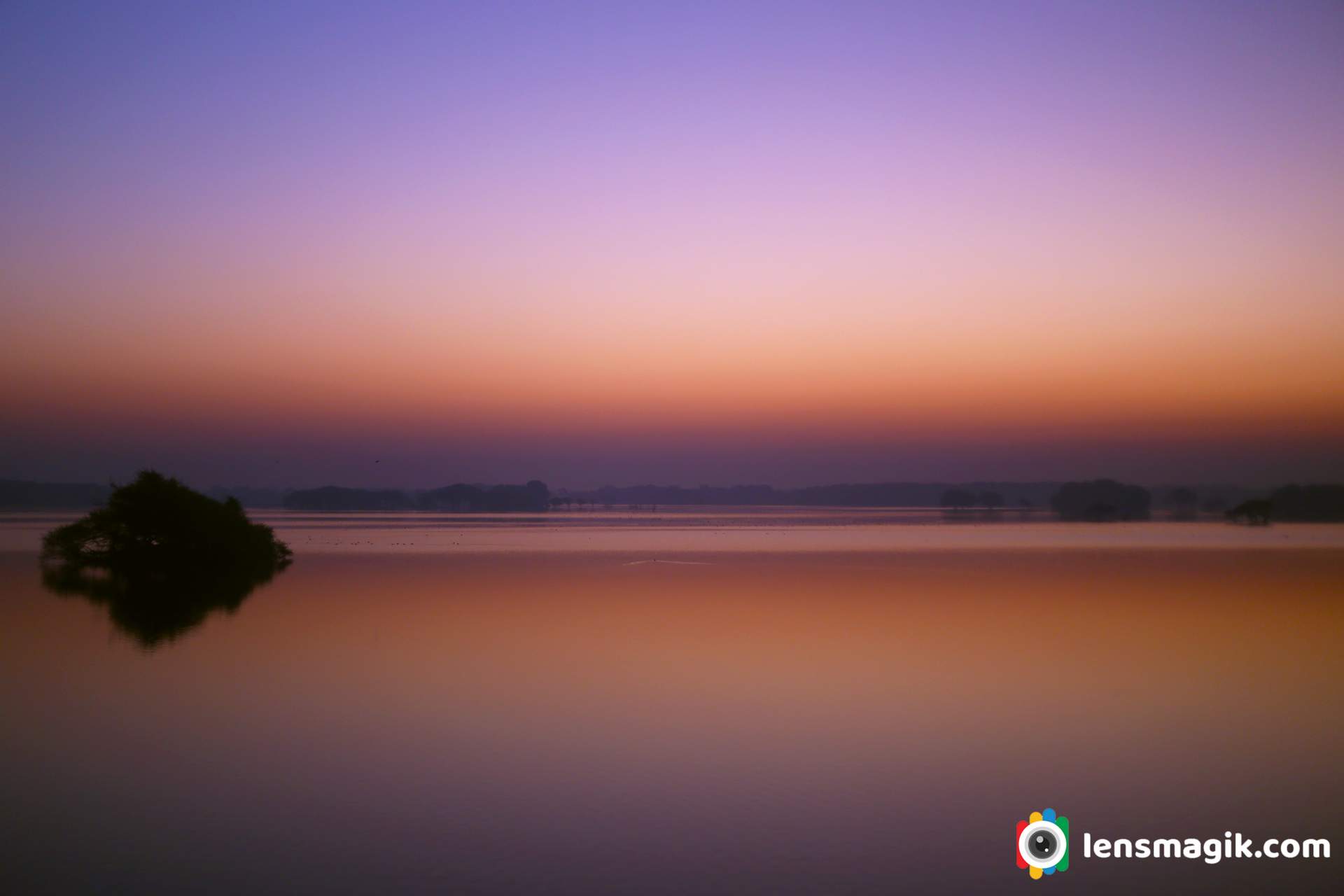
Gear Used : Canon 6 D camera, Canon 50 mm lens
How to Reach Thol Lake : Thol lake is near to Ahmedabad. Distance from Ahmedabad is around 25-30 km. So nearest Airport is Ahmedabad and Railway Station is Ahmedabad. You can go by road from Ahmedabad.
Read more
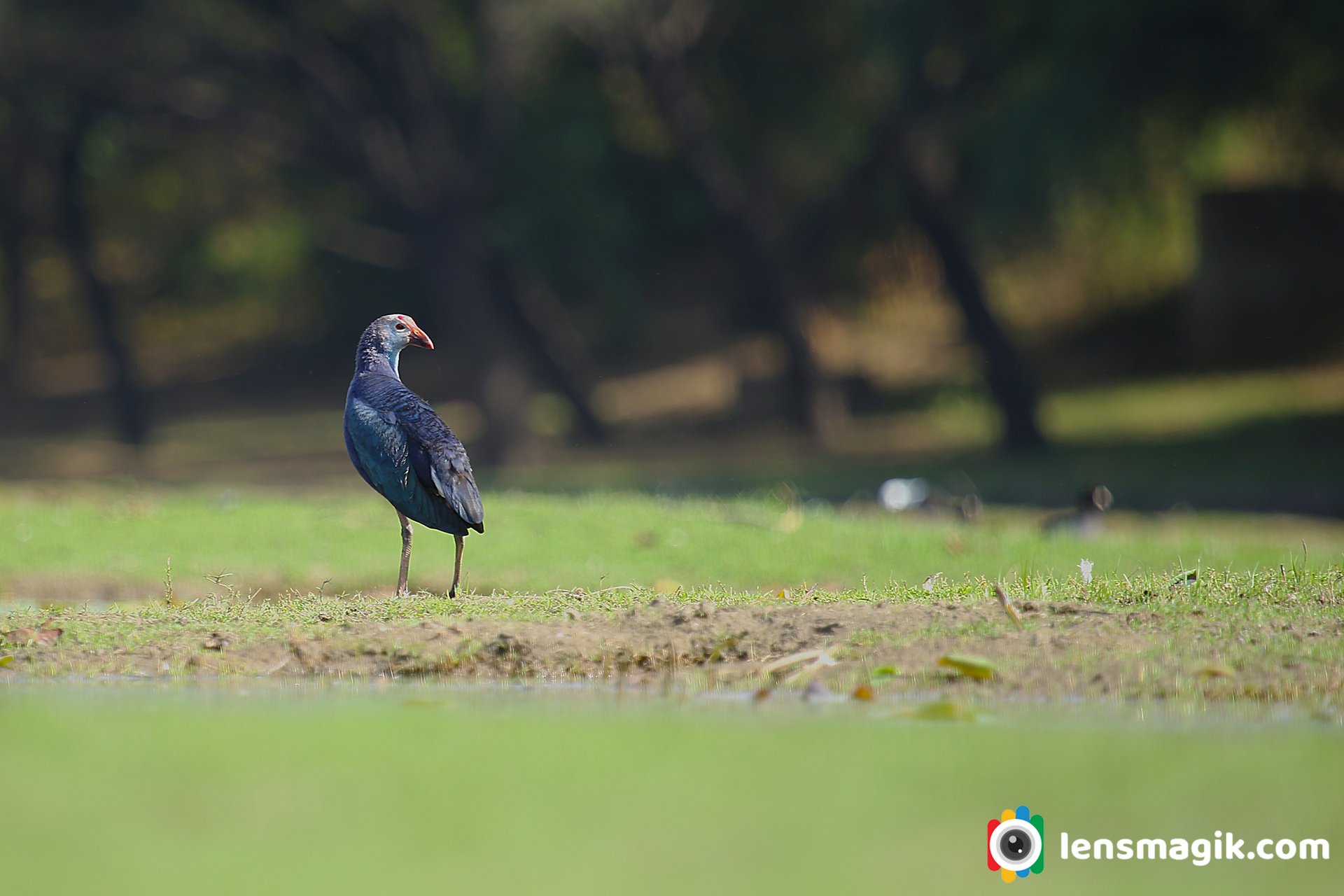
Grey Headed Swamphen Or Sultana Bird: Purple swamphen bird is water bird and also a backyard bird too. There are six spices of purple swamphen. It is also known as Sultana Bird. Purple swamphen bird is chicken size bird. It has large feet and bright plumage and red bill. It is generally found near lower water areas in wetlands. It is easily identifiy and also easy to find because of its color purple catches easily to your eyes towards it.
Six spices of swamphen are :
- Western Swamphen
- African Swamphen
- Grey headed swamphen
- Black backed swamphen
- Philippine swamphen
- Australasian swamphen.
In Gujarat generally it found at wetland areas like Thol Lake, Nalsarovar, Pariej wetland etc. Also some low water area they are found.
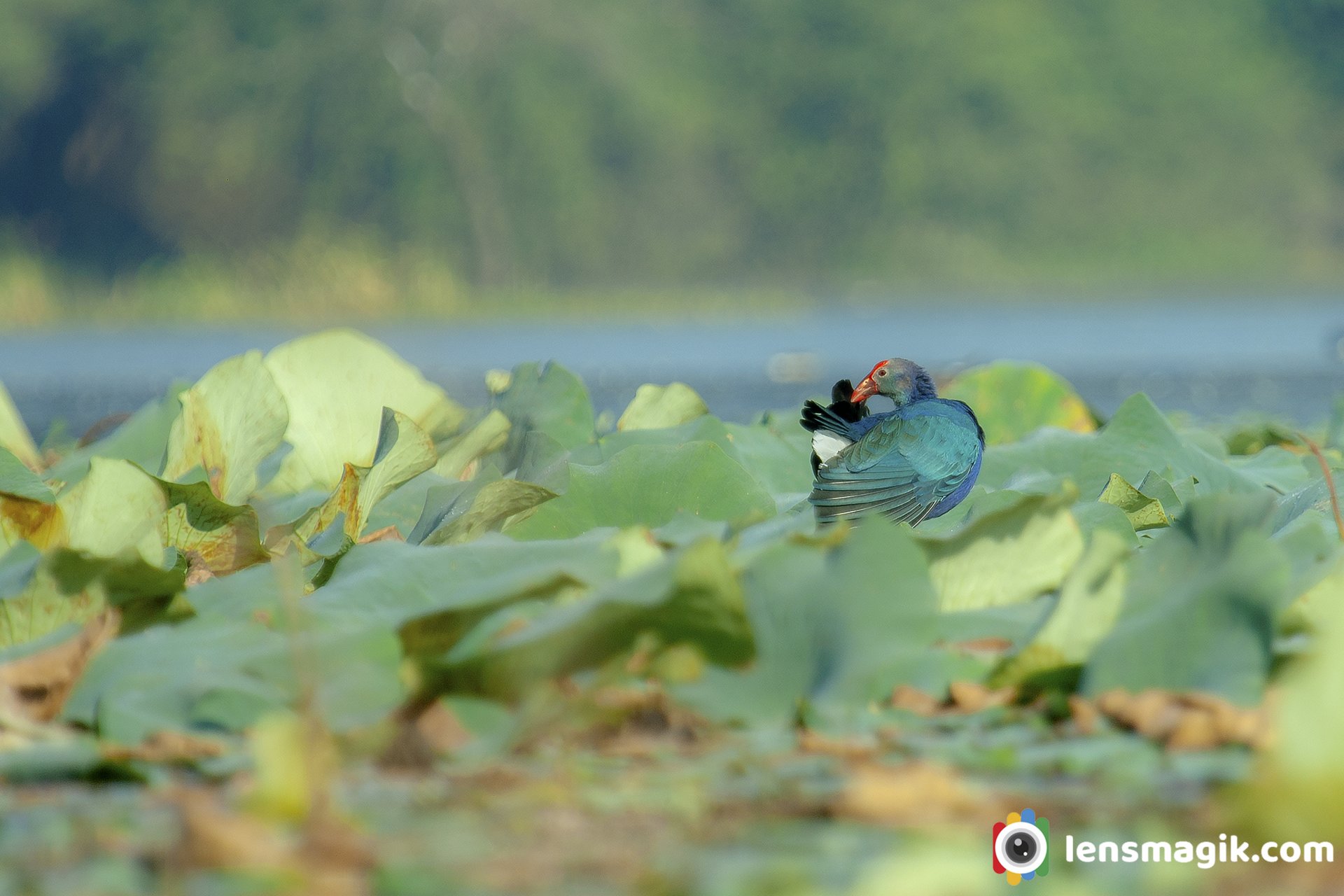
Some Facts about Grey-Headed swamphen :
- Purple swamphen can fly long distance .
- They are good swimmer too.
- They can make loud bleating and hooting call.
- They are seasonal breeders.
- Swamphen live in pair .
- They eat small fishes and snails like invertebrates.
- Color of Purple swamphen is like a peacock and a red bill on its head looks beautiful.
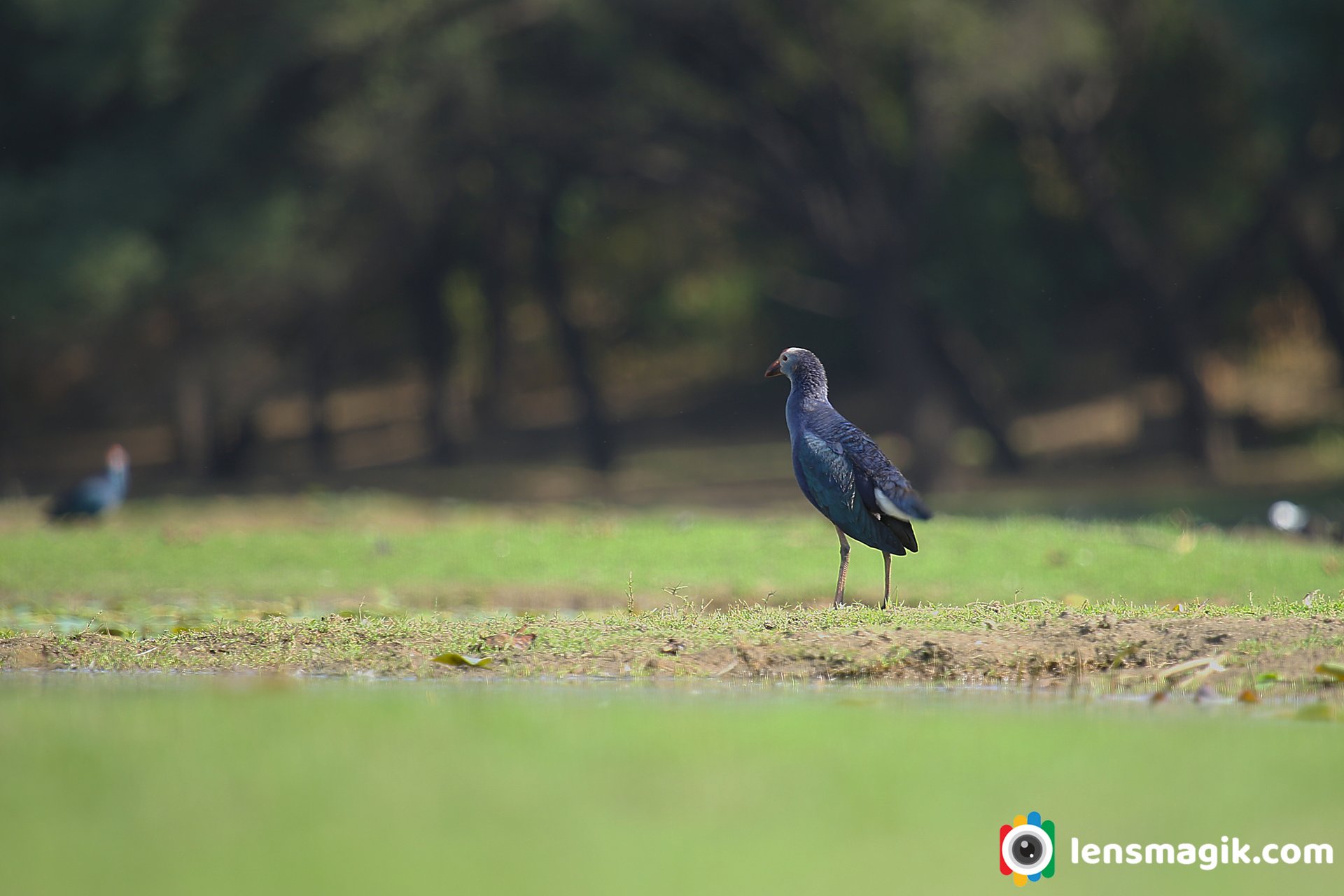
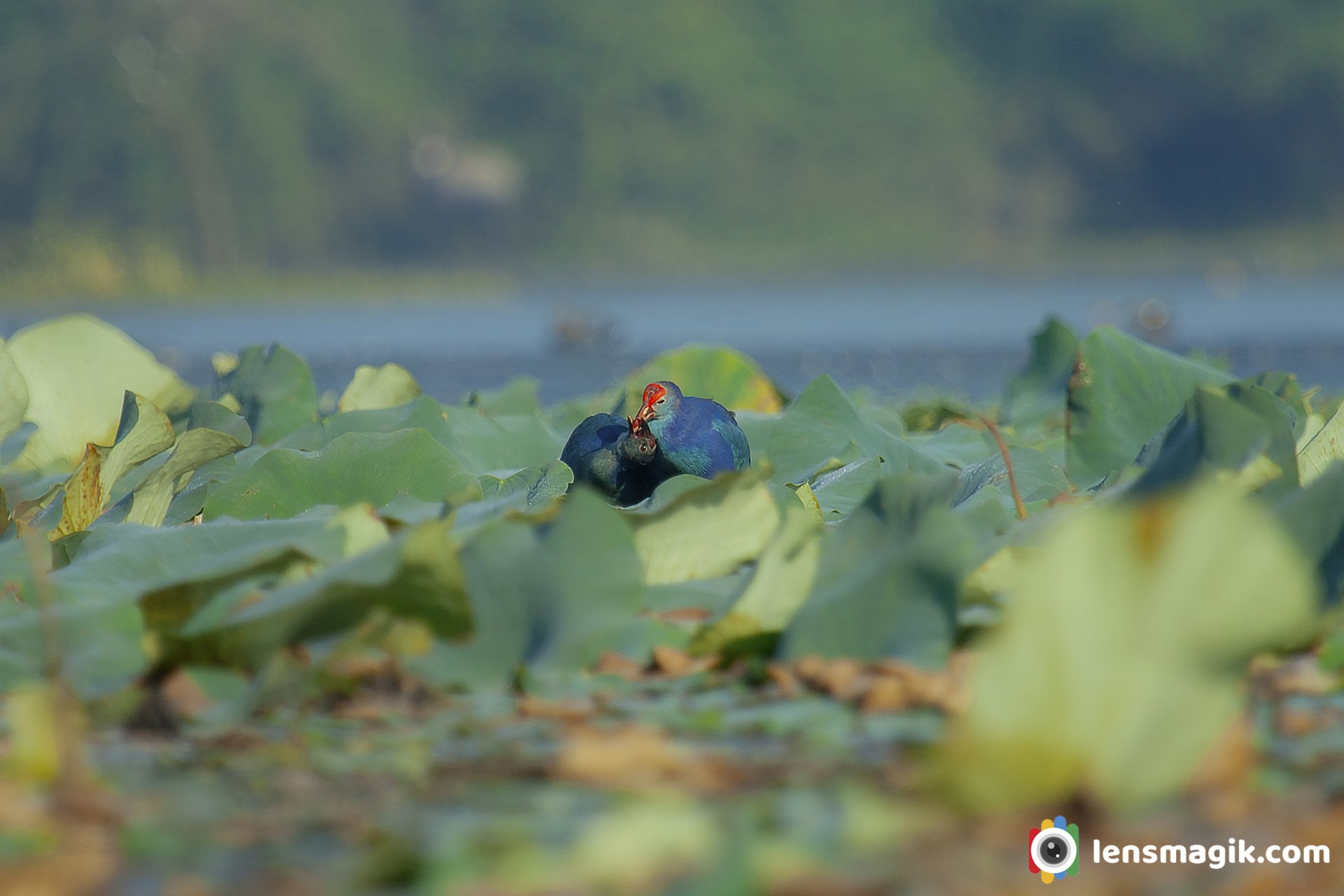
Purple swamphen is very good in color so the pictures are looking bright. Some of pictures are taken from my old camera so they may be not so good but i tried my best. Above image taken from my canon with 100-400 mm lens and in background and foreground a green grass make my image really fantastic.
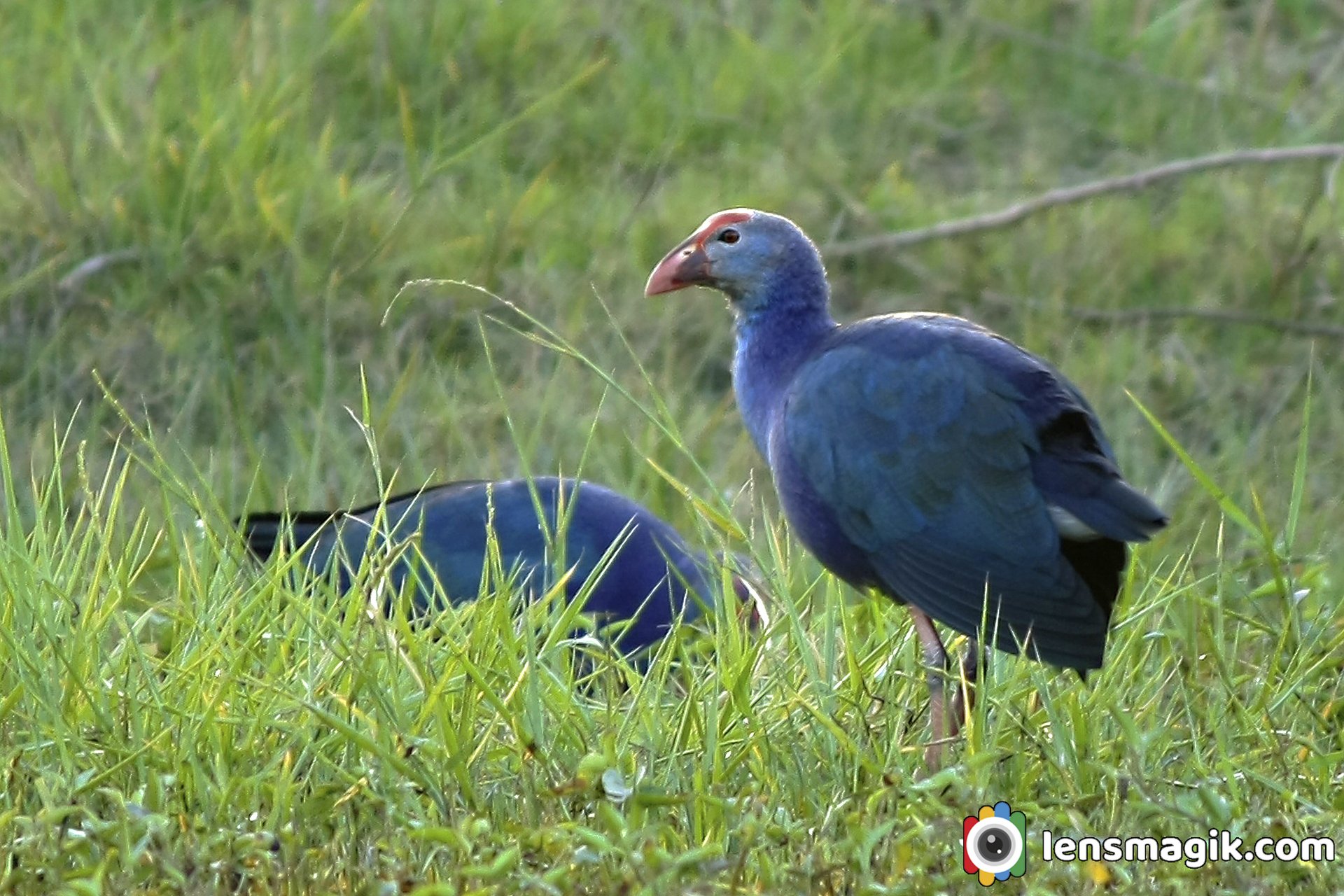
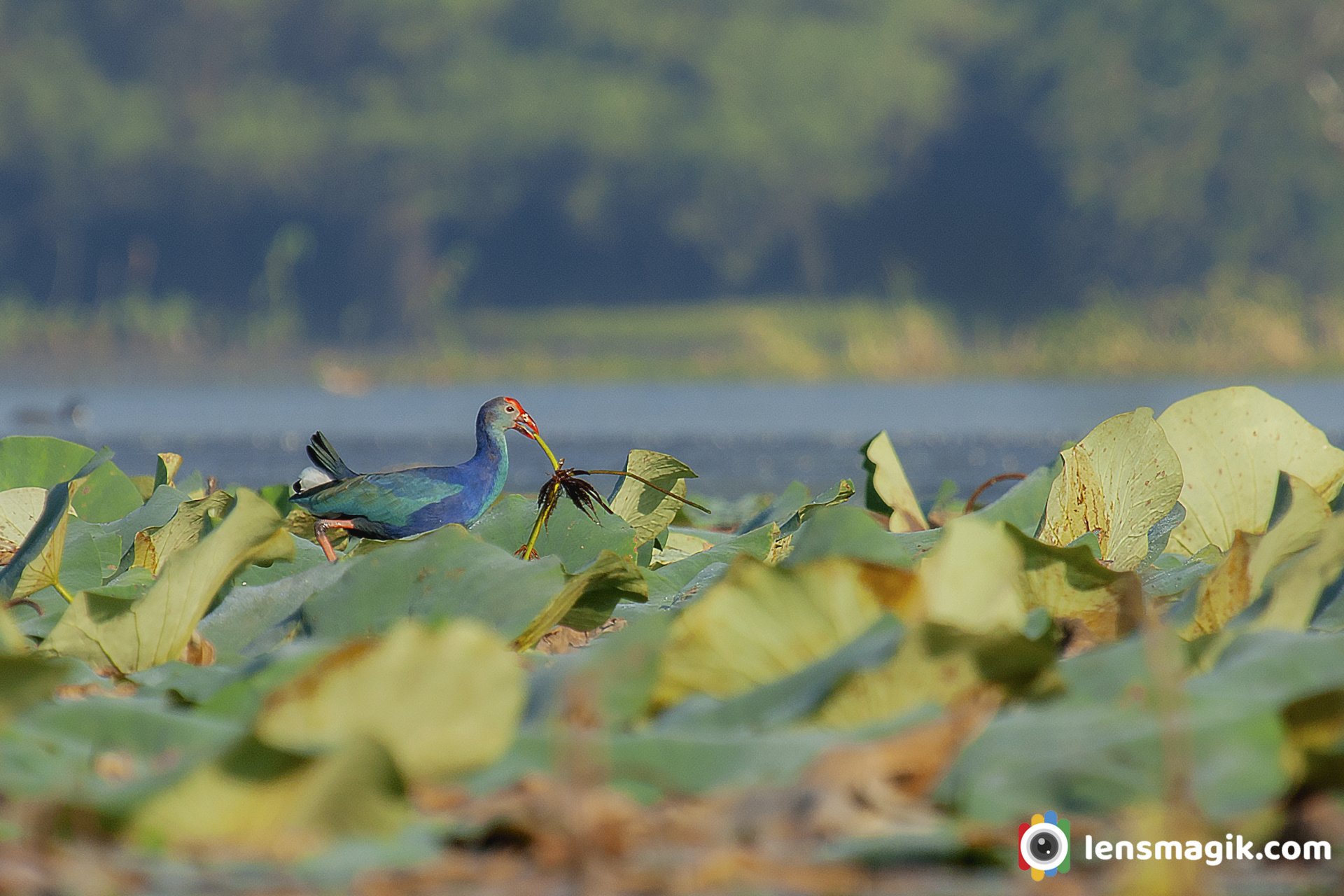
Birds of Gujarat : Purple swamphen generally found in water areas and wetlands. My nearest place and bird sanctuary is Thol Lake. I often visit Thol Lake for birding. During winter season lots of Migratory birds came here and stay during winter. Swamphen bird is residence here and you can get them the whole year. They also breed here.
Gear used : Canon 100 - 400 mm lens, Canon 6 D , Canon 1000 D
Location : Thol Bird Sanctuary , Near Sanand , Gujarat
Read moreHoopoe is a colorful bird.It found in Asia, Europe, Africa etc. The genus name is Upupa Epops. Upupa epops are Latin names. The hoopoe requires light vegetated ground such as trees,cliffs, walls and nest boxes. These types of environment found easily everywhere. Its a medium size bird. For habitat and distribution Hoopoe bird is distributed all around in Asia, Europe and North Africa and easily found. For breeding hoopoe bird found wormer areas. It is also called as Eurasian Hoopoe bird too . In Gujarat it found at many farm outskirts and also at Thol Bird Sanctuary, Nal Sarovar , Velavdar and many more areas.
Physical features of Eurasian Hoopoe Bird :
- Hoopoe bird is a small size bird. Its weight is around 45-90gms .
- Size of common hoopoe is around 25-32 cm. and 44-48 cm with wingspwan.
- Its wings are round and broad so hoopoe bird can flight strong.
- The beak of hoopoe bird is as long as woodpecker.
- Body color is light and black strips.
- A most beautiful thing about hoopoe is Crown of Feather on its head. That makes hoopoe special.
- Hoopoe bird call is Hoo-Hoo-Hoo .
Some interesting facts about Common Hoopoe Bird:
- Hoopoe bird is selected as a National Bird of Israel in 2008.
- Hoopoe eats insects and pests which damage to agriculture and forest land. So Hoopoe is very helpful to save forest and agriculture land as it protect from such insects and pests.
- Interesting thing about hoopoe is it like to take a bath in sun and dust.
- Hoopoe bird average lifespan is 10 years.
- Hoopoe bird can easily approached while they are eating and they didn't notice anyone around it. So that is the best time to get closer to hoopoe bird and get good Hoopoe bird images.
- Hoopoe bird also noted at Mt. Everest.
About Thol Lake :
Thol bird sanctuary is located near Thol Village so its called Thol Bird Sanctuary. The village Thol located in Kadi Taluka and Mehsana District of Gujarat. Area of Thol Lake is around approx 7 km square. Thol is generally known for migratory birds found here. During November to March there are lots of migratory birds came here. More than 150-200 spices of different types of birds including migratory and residence are found here. May be my figure is not actual but its seems to near it. Most attractions of Thol Lake is Flamingo bird, Pelican Bird, Bar headed Goose, Cranes and also huge number of Duck spices. Best time to visit Thol lake is winter From November to March. Best time to reach is early morning before sunrise is good. You can see the beautiful sunrise with lovely sky colors and Birds with it.
I got good and very close sharp Common Hoopoe bird or Eurasian Hoopoe bird images
Nearest city to Thol Lake is Ahmadabad about 25 km approx.
Gear Used : Canon 1000 D, Canon 55-250 mm lens, Canon 6 D , Canon 100-400 mm lens
Read moreAccentor is a small bird of prunellidae family. In India it is generally found in East Sikkim area. It built its nest low in a bush. When i was on a trip to Singalila National Park. I found at sandakphu area. Sandakphu is high altitude place in Singalila National Park located in West Bengal. From here you can see Mt. Kanchenjunga very clear which is highest peak of West Bengal. Lots of Birds here. To visit Singalila Park November to February you can found lots of snow and good landscapes too with snow on Mt Kanchenjunga. Also if you are going for birding you can visit March to May/June Month is the best . It is very cold weather during winter November to February at Singalila National park.
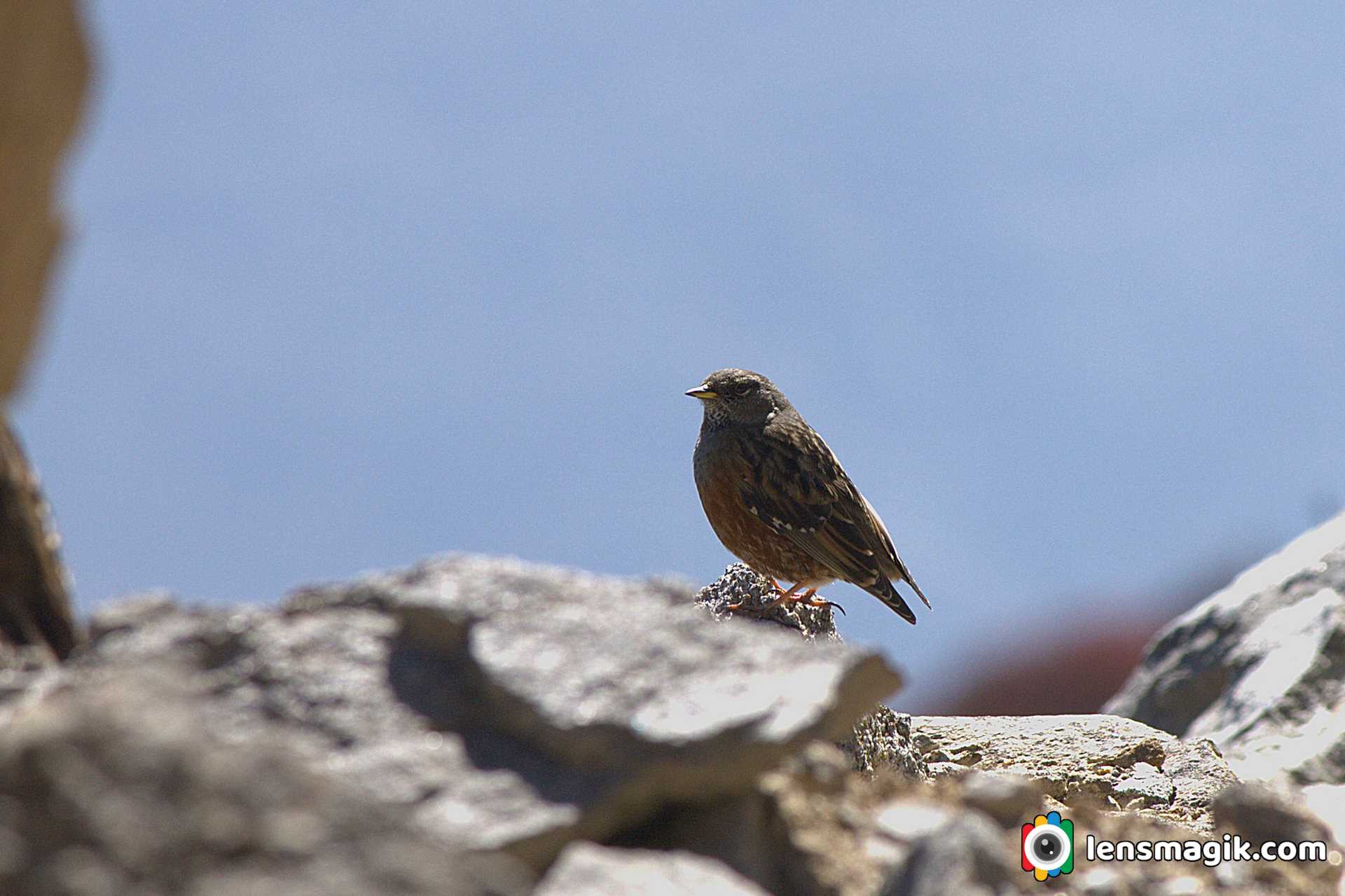
About Alpine Accentor Bird :
- Alpine Accentor bird is robin size bird. Length of bird is around 15 -17 cm.
- Bird just like similar to house sparrow in color with brown back streaked.
- Adult Alpine Accentor have red brown spotting on underparts
- Also adult have grey head too.
- In Asia Accentor found at 2000 m above height. Specially at Himalayas.
- It build nest in bush.
- It laying 3-4 plain (not spotted) eggs of sky blue color.
Singalila National Park :
Singalila national park is located in West Bengal. There are lots of birds in this sanctuary. Also its good for trekking at Sandakphu. From here you can see Mt. Kanchenjunga easily and very closely. Also a beautiful Himalayan Mountain range with snow. Amazing weather very cold in winter and moderate in summer. Summer season is the best for birding at sandakphu.
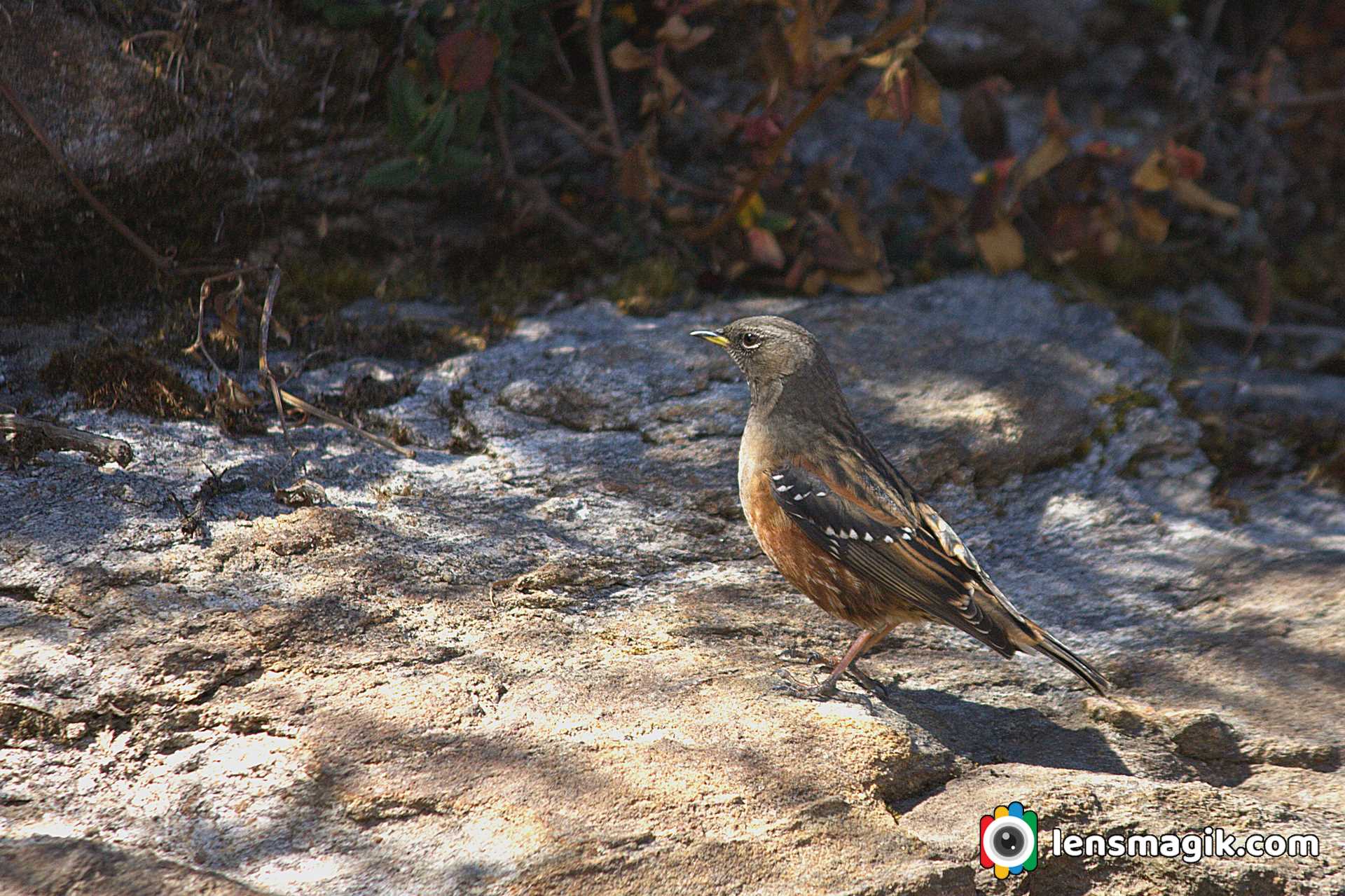
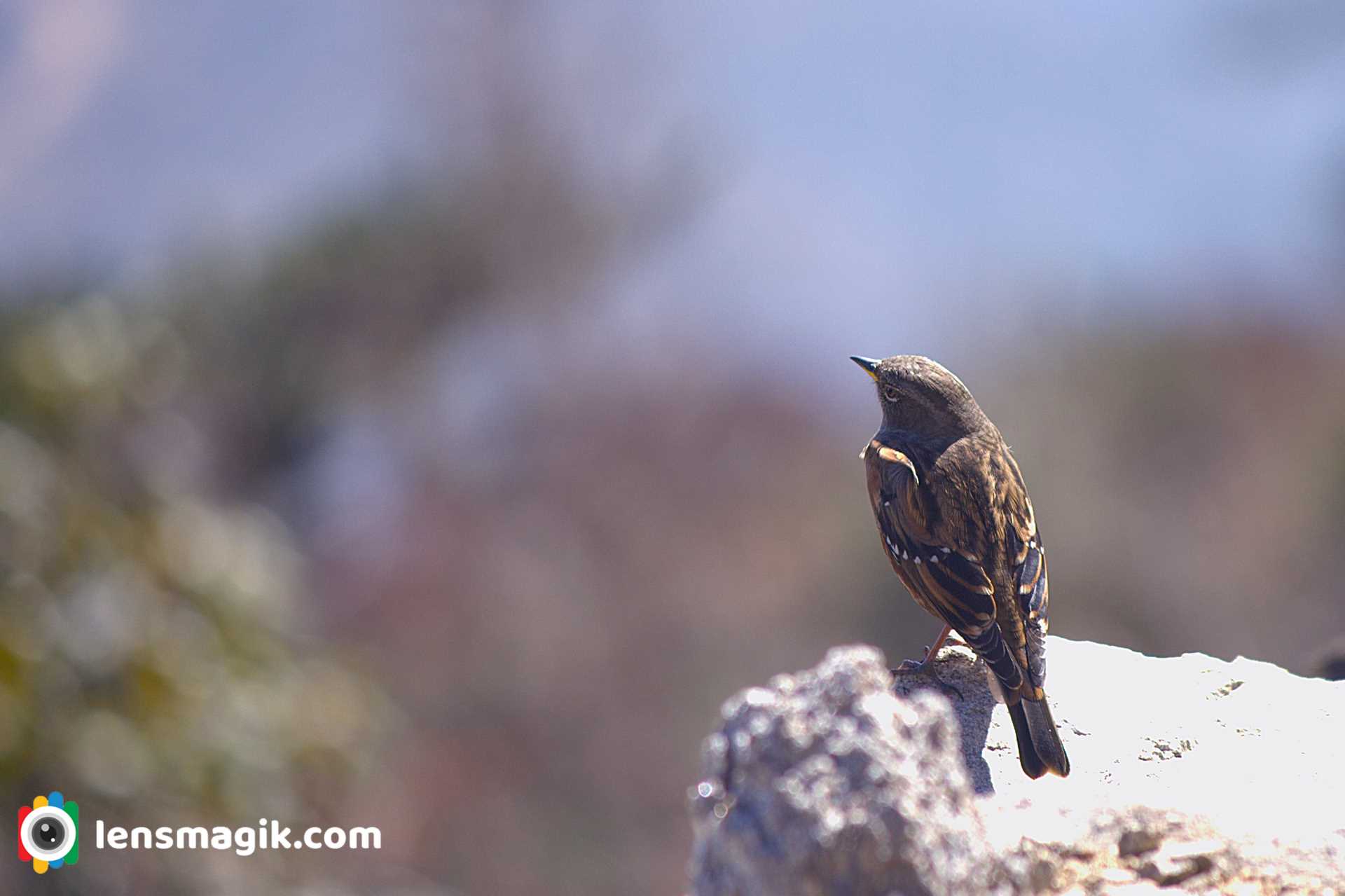
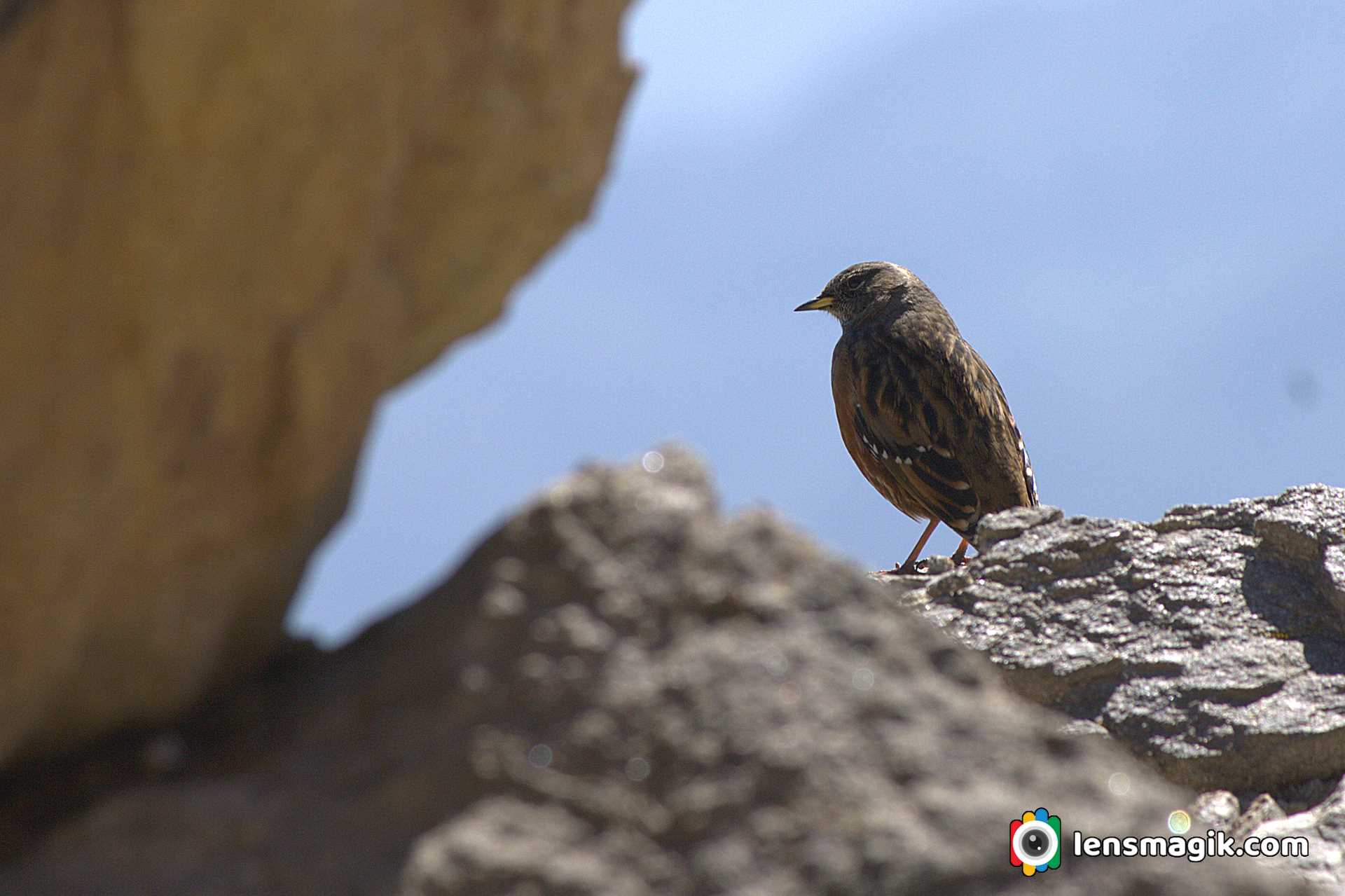
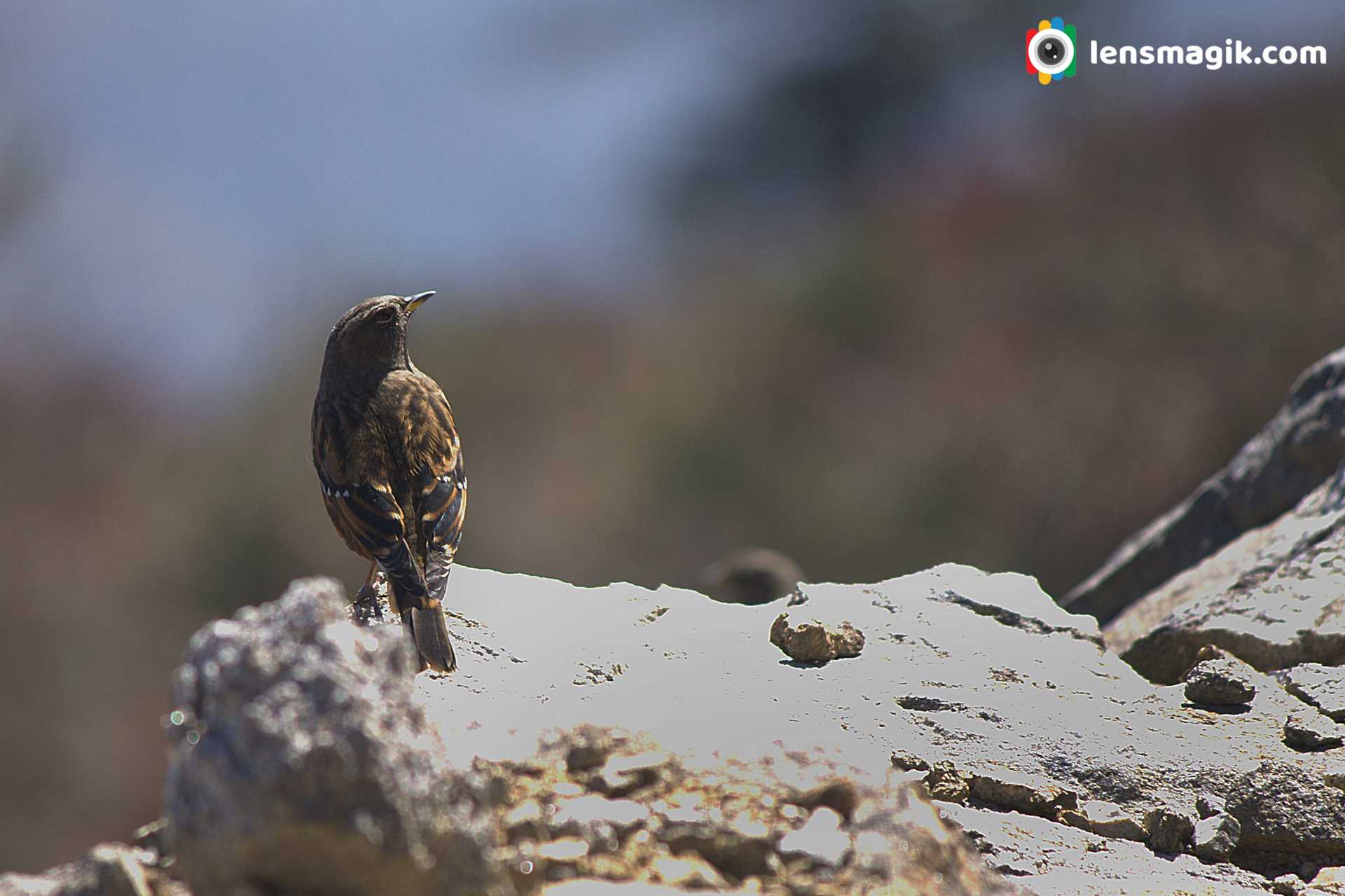
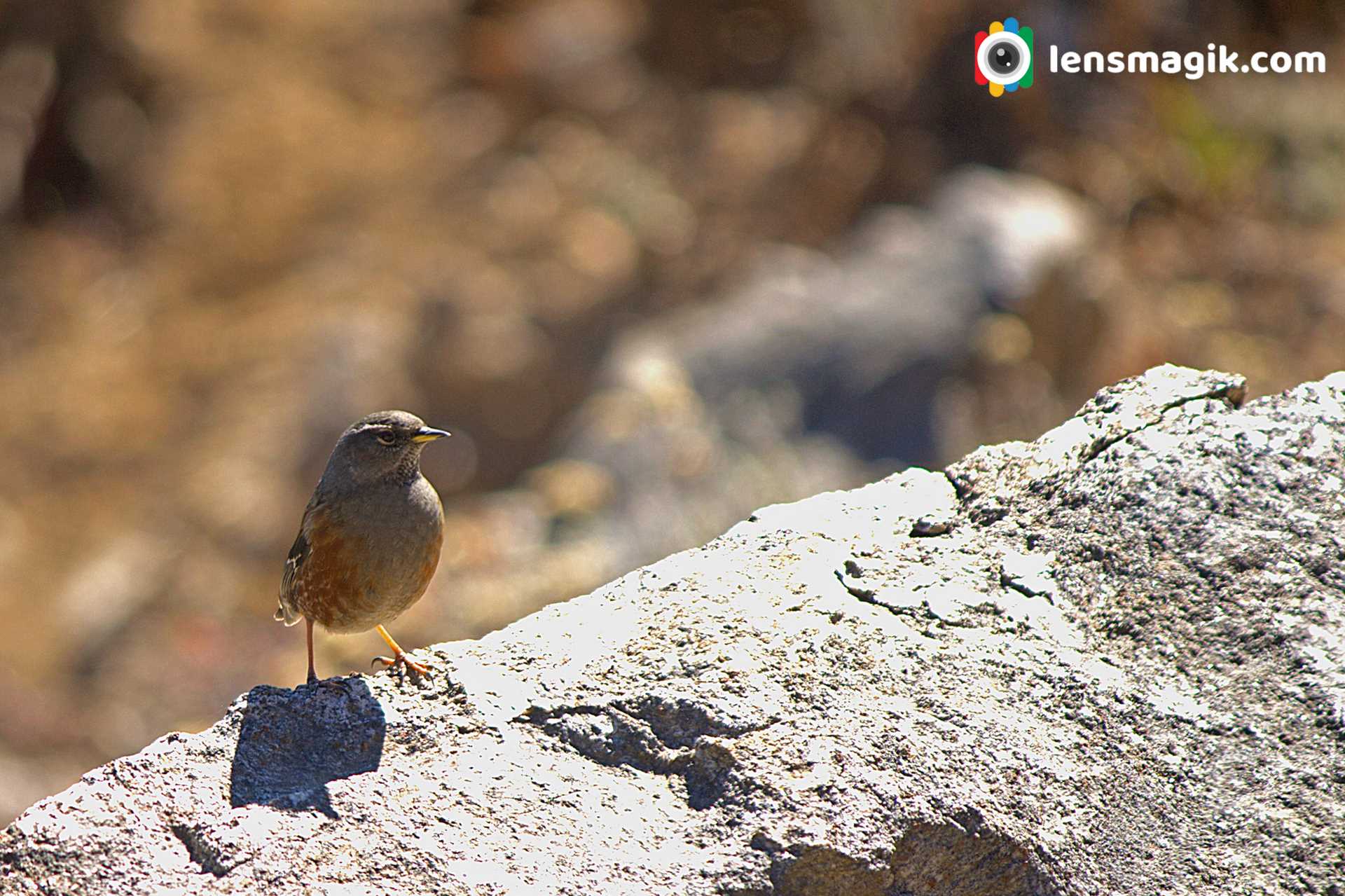
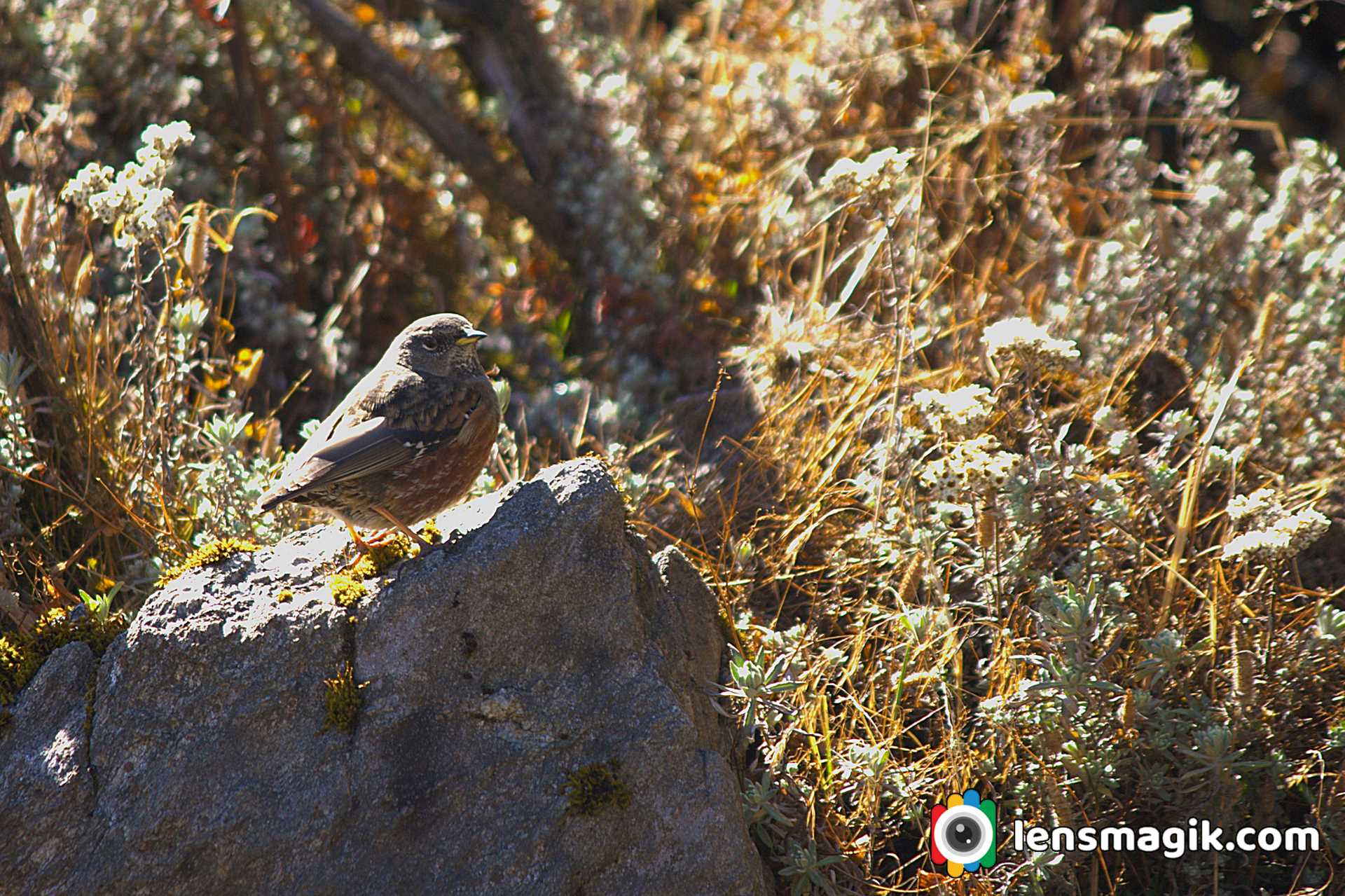
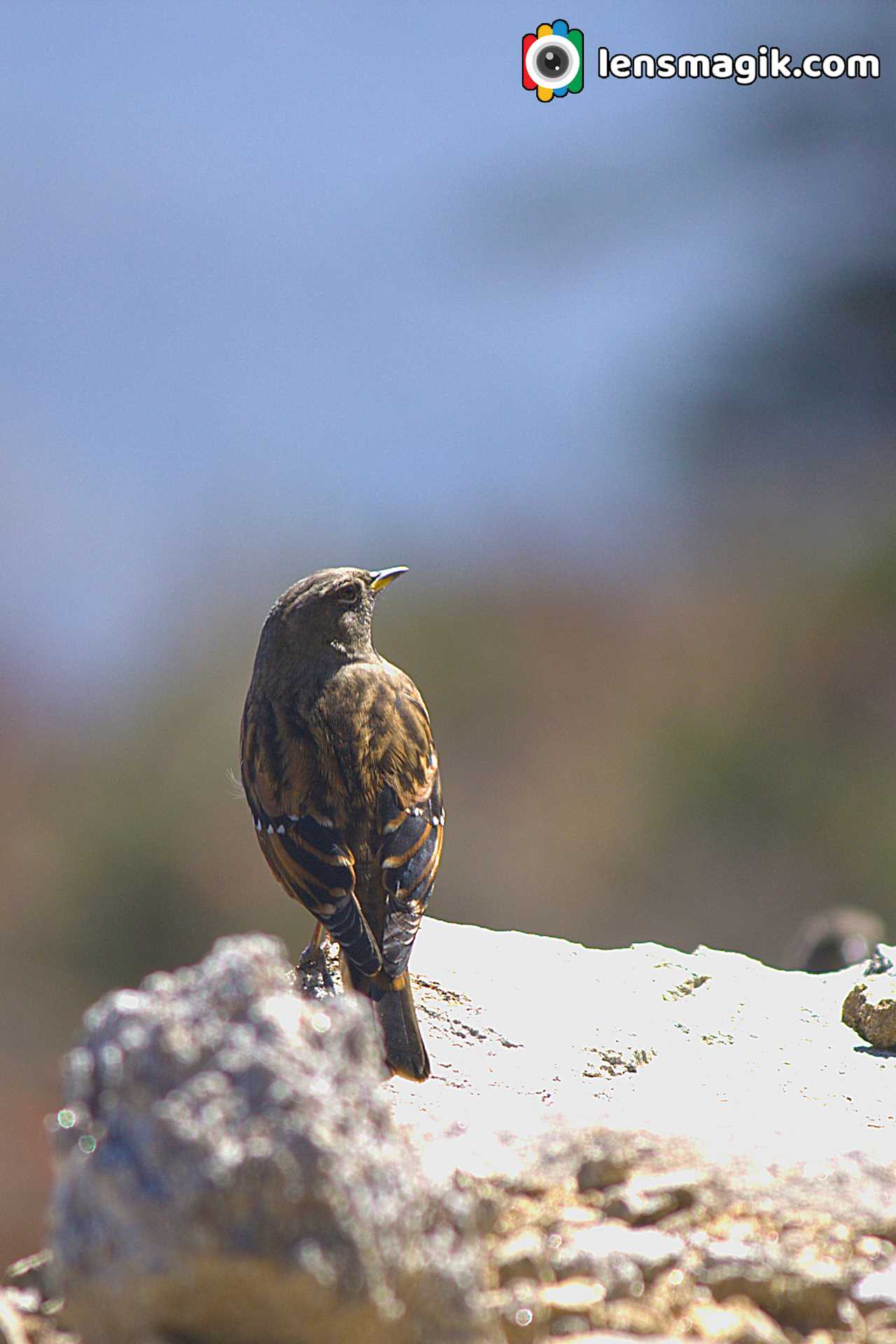
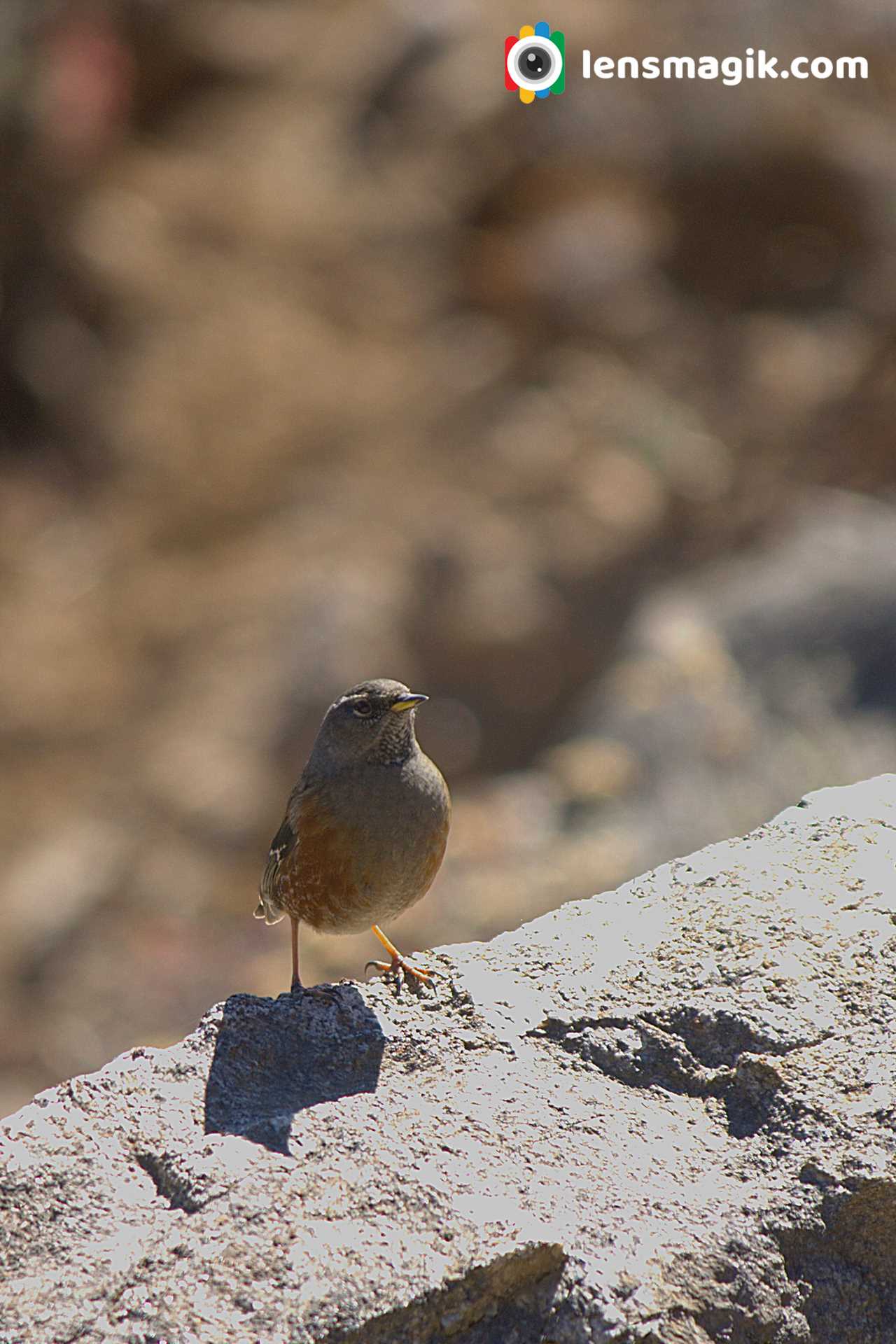
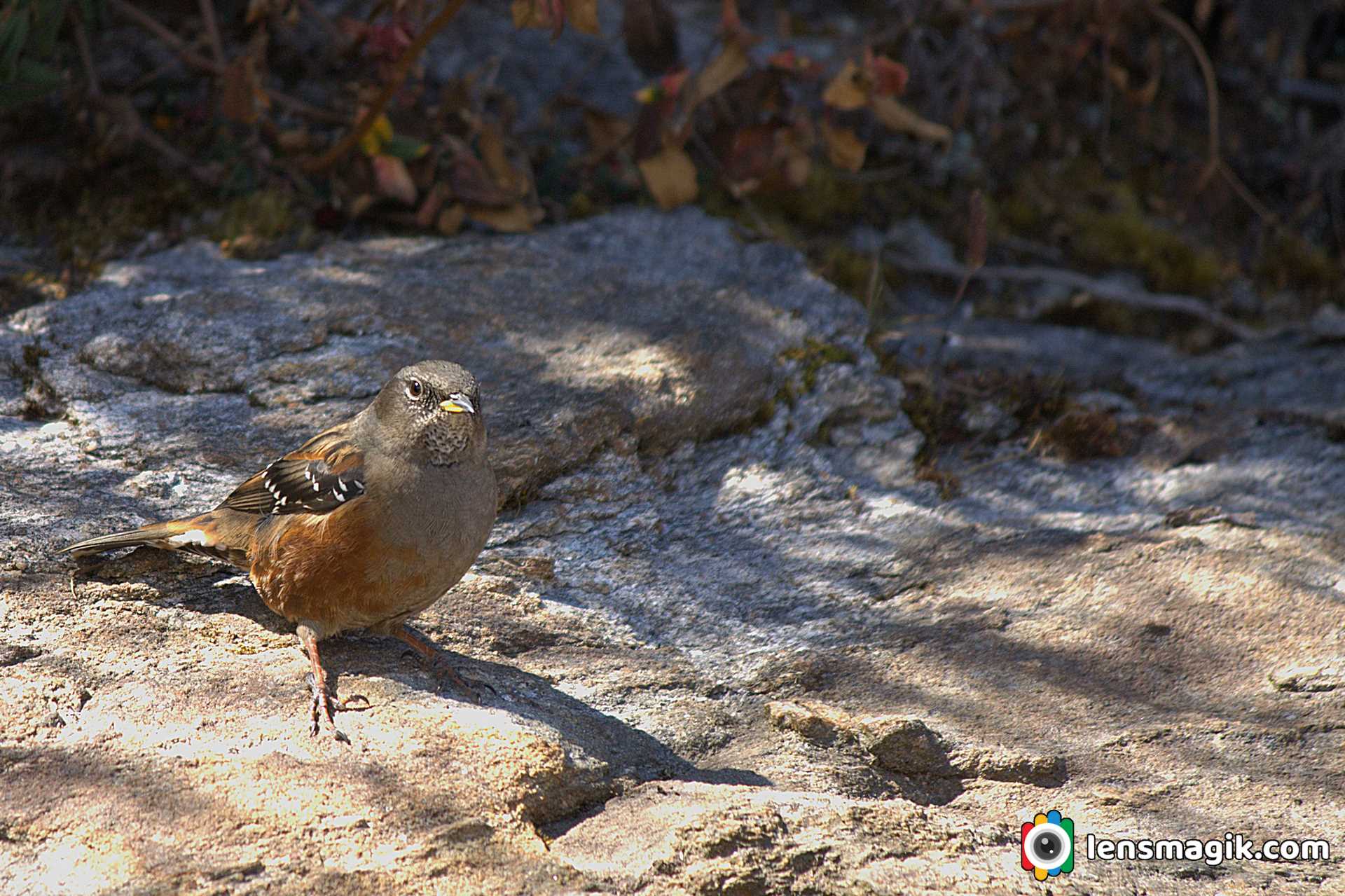
Alpine Accentor bird Binominal Name is Prunella Collaris . Total 9 subspices are recognised of Alpine Accentor bird.
Gear used : Canon 1000 D, Canon 55-250 mm Lens.
Road To Heaven is named to the road from Khavda to Dholavira in Kutch Gujarat. The road is so wonderful and scenery so it known as Road to Heaven . Khavda to Dholavira distance is around 58km but from Khavda there is a single line narrow road passes through small villages around 15-20 km approx. The main road starts after it and it is around 30-35 km approx. strait to Dholavira. Road is under constriction but almost 70-80% work done. The road heading to the city of Harappan Civilization Dholavira which is one of the largest site of Harappan Civilization and Indus valley Civilization.
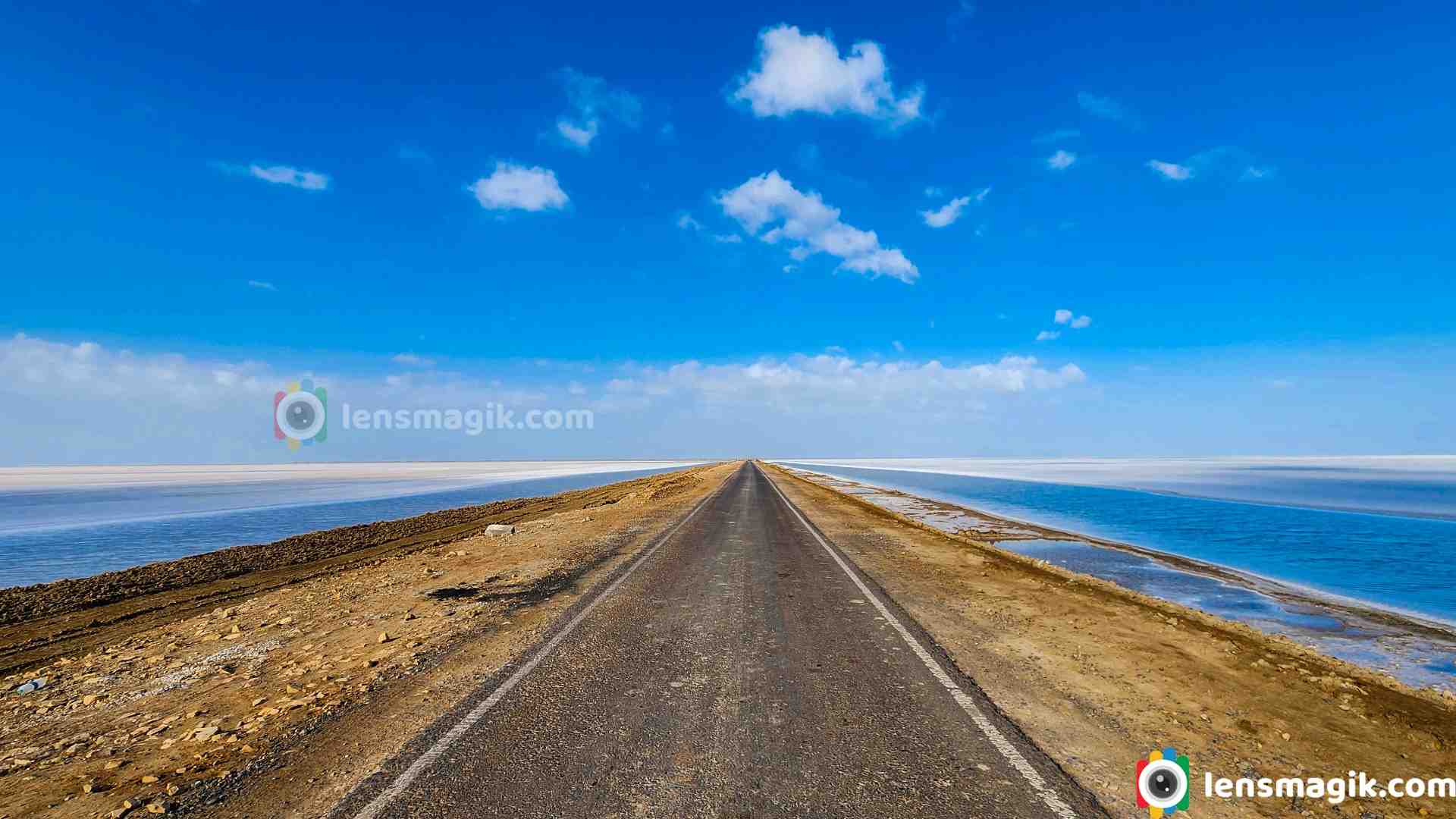
Kutch is a largest district of Gujarat and also of India. Main City or Headquarter of Kutch District is Bhuj. Kutch is famous for White Desert or White Rann. In Every winter season from December to February celebrate “ Rann Utsav “ to attract foreigners and also locals. Tent City made in white desert to stay and also cultural programs arranged in it. The main Rann Utsav held in Dhordo of Kutch.

After visit White desert people also visit Dholavira which is nearest destination from Dhordo and also Kalo Dungar in between. From Dhordo you will have to go Khavda first and then from Khavda to Dholavira which is connected through “ Road To Heaven “. Dholavira is located at Khadir Bet. Khadir bet is separated because after monsoon the water filled outer side of bet. So the Road To Heaven is the way to connect Khadir bet to main city Bhuj.
About Road To Heaven Dholavira / Road to Heaven in Kutch :
- · It connected from Khavda to Dholavira.
- · Road to heaven distance around 30-35 km.
- · After monsoon the rain water on the both side of the road. You can see beautiful Greater Flamingo birds in between. Water level is low but muddy.
- · After winter in January –February the water on both side of the road is evaporated and turn into salt. Not all water but some areas during the road.
- · Water on the both side of the road or Salt/ white layer on both side of the road make the beauty of the road and that’s why it name as “ Road To Heaven “
- · When you are on the road there is hardly some traffic you face the open road with both side water or salt at morning or evening make the scenery like a Heaven.

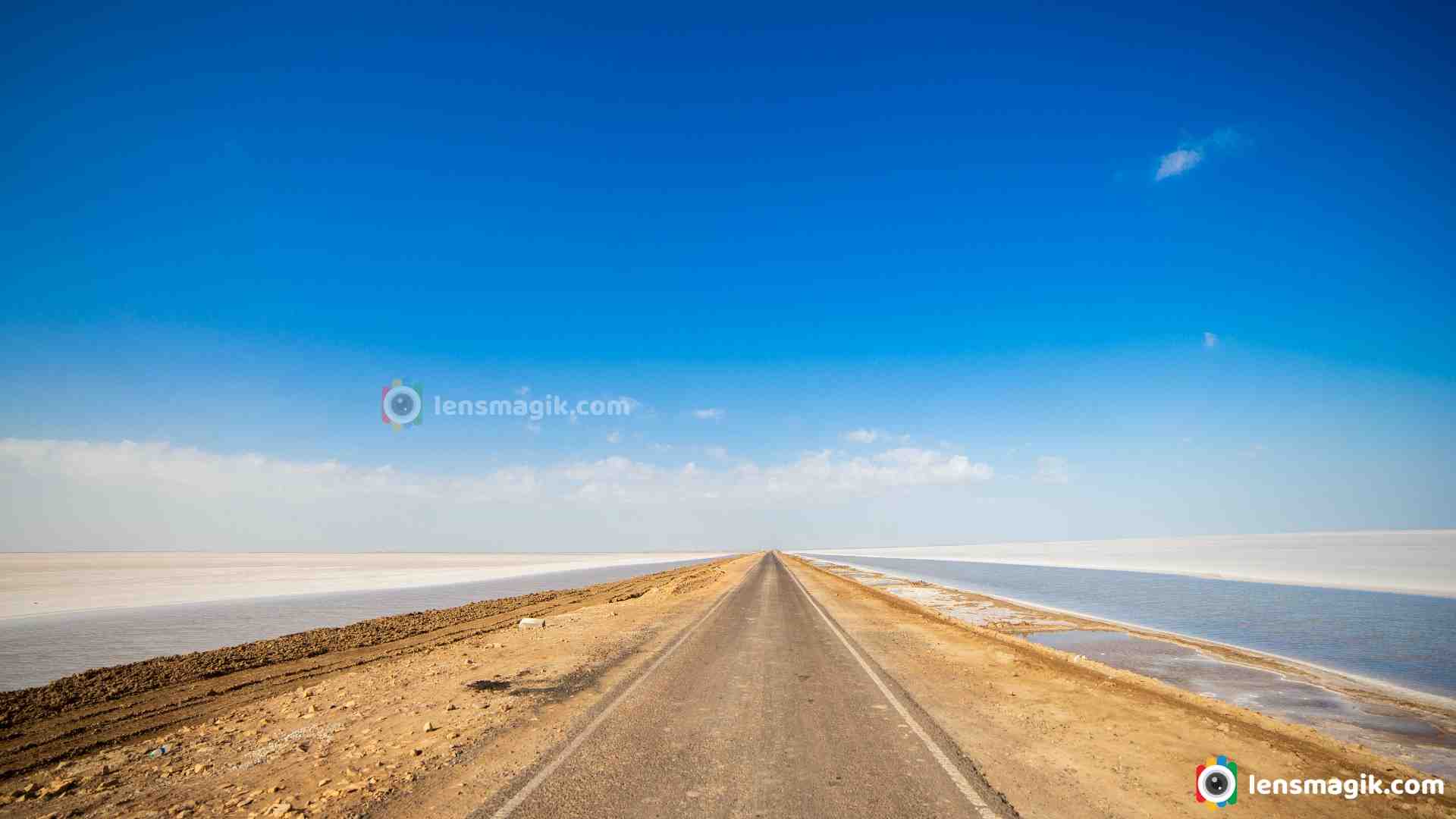

I must suggest to visit Road To Heaven in Kutch while you visit Kutch. Also Visit Dholavira which is one of the largest Harappan Civilization site.
Places to visit near Road To Heaven :
Dholavira, Kalo Dungar, Dhordo, White Desert
Places to Visit near Bhuj : White Desert , Kadiya dhro, Chhatardi, Mandvi beach, Vijay vilas palace, Bhujyo Dungar, Smriti Van, Vande matram memorial
Camera Used : Canon 80D, Canon 6D, DJI Mavic Air2
It is the largest species of Flamingo bird family and also a most widespread species of flamingo family.It is found in India ,south east , middle east and Africa. It is migratory bird. They also breed in India. In Gujarat they breed in Rann Of Kutch , Little Rann of Kutch also found in Thol Bird Sanctuary. I often visit Thol sanctuary so got good shots of them. Best time for shoot them is may-Jun at Thol bird sanctuary bcz of water level is too low . It is been recorded that some flamingo birds are resident in Gujarat at many places like LRK, Khijadia sanctuary, Nalsarovar and Thol Sanctuary. They also breed here and stay for all seasons. So you can find greater flamingo birds in all seasons in Gujarat at many places.

Flamingo bird facts and description :
- Greater flamingo bird is the largest living spices of flamingo.
- Greater flamingo has no subspices.
- Flamingo color most of pinkish white in plumage. Wings are red and feathers are black in end.
- Greater Flamingo bird call is like honking.
- The average lifespan of flamingo bird is 30-40 years.
- Main Difference between Greater flamingo and lesser flamingo is height . Lesser flamingo is shorter than greater flamingo. Also Greater flamingo has pale pink bill and black tip. In other case lesser flamingo has dark crimson bill. Lesser flamingo is also more red in color than greater flamingos.
Greater Flamingo birds In Thol Lake : Thol sanctuary is often i visit. Flamingo birds are stay here all seasons. I got good numbers of Greater flamingo and lesser flamingo bird images in a group when i visit Thol. This is my best time with flamingos. Also i got some beautiful pictures of flamingo birds with group and also in duo with some masti. Flamingos looks very good in frame bcz of their color. Thol lake is good place for birders because more than 150 birds spices found here. Also some mammals like Blue bull and black buck also found here. Lots of water birds and tree birds found here. Also sanctuary is not so big so you can find all birds in around 6 sqkm area. Best time to visit thol lake is November to March. All migratory birds are visit in winter so that is best time. Early morning is best for birders.
Timing And Fees of Thol Sanctuary :
Thol Sanctuary open at 6 AM in morning and close at around 5 PM
Fees of Thol Sanctuary is 50 INR per person and camera fees are 200 INR. Car fees are 500 INR.
Weekend fees may change that actually i don't know about it.







Two flamingos with little egret in between of them with down head all. The images of flamingo bird making a good frame. Because of its color flamingo birds images are very attractive and also their grouping make a perfect frame of flamingo bird picture.


A morning pared time for flamingo birds. A beautiful Greater flamingo birds are in a raw make image nice and show their unity.

Perfact wingspan of Flamingo bird looks great. Pink Wings make image more attractive.



Solo Greater flamingo bird

Some masti time for two flamingo birds .

Above image shows the discipline of Flamingo Bird and looks like a morning pared they are doing .

https://youtu.be/9dVBrR9NSOo

A group of Flamingo Birds at Thol Lake make your frame awesome.
Location : Thol Lake, Gujarat
Thol lake is just 25 km approx. from Ahmedabad. You can visit one day for Thol lake is enough. Also you can find another migratory birds like pelicans , bar headed goose, river tern and many more resident spices.
Ahmedabad to Thol lake distance about 25km
Thol bird sanctuary is located in Kadi Taluka in Mehsana District near sanand Gujarat. It is an artificial lake located near village Thol. In 1912 thol lake was built and it was declared as a Sanctuary in 1988. The main use of lake is use of water for irrigation. The Thol Bird Sanctuary or a Thol lake wildlife Sanctuary India is a habitat of more than 150 spices of birds. Also it is famous for migratory birds Flamingos and Sarus Crane which breeds here.


About Thol Lake / Thol Bird Sanctuary
Thol lake is located near Thol village and its area around 38000 acres. Lake faces all season winter , summer and monsoon. During winter temperature goes to 8 degree and in summer temperature goes to 43 degree. Thol lake is under control of Forest and Irrigation department of Gujarat. Thol lake water storage capacity is around 84 million cubic meters. Thol wildlife sanctuary is declared as Eco Sensitive Zone .
Flora and Fauna Thol Sanctuary :
Thol lake has many vegetation plants like Zizyphus, Acacia nilotica, Ficus, Capparis, Azadirachta indica etc. There are also some mix flora of Marshy and Aquatic plants reported in Thol Lake.
Thol lake is protected area and it is very good habitat for water birds. In thol bird sanctuary there are more than 150 spices of birds found . Among these more than 60 % of birds are water birds. Flamingo bird is most prominent bird of Thol Lake. Also Sarus Crane nest in large number here.

Famous Migratory Birds of Thol Lake
• Flamingos
• Sarus Crane
• Great White Pelican
• Mallards
• Bar Headed Geese , Grey Headed Geese
• Waterfowl
There are also some spices reported here like Dalmatian Pelican, Indian Skimmer, Greater Spotted Eagle, Indian Vulture and white rumped Vulture etc. In Mammals Bluebull, Blackbuck and Golden jackal reported here.


Thol Lake Timing and Fees :
Thol lake open everyday at 6 AM in morning and close at 5.30 PM in evening. Entry fees for Thol Lake or Thol sanctuary is 50 INR for per person. Also Camera fees extra at 200 INR and if you go via car then car fees also 500 INR. Foreigner fees are 10 $ per person.
Best Time to Visit Thol Sanctuary / Thol Lake :
Best time early morning for Thol Lake. In winter if you go before sunrise you can see Twilight sky amazing with lake shore and birds sound .During all season Thol lake has its own beauty. Every season you can visit at Thol Lake. But mostly during winter from November to March season is best for Thol Sanctuary visit. Because during winter lots of Migratory birds came here and stay for long time so for birding winter season is best at Thol Lake. Also during summer some of birds stays here like flamingos and pelicans, geese etc. So you can also see them in summer too. Also during summer water level of lake is low so may be the birds you can get in deep or sometimes closer. During monsoon most people don’t visit but if you like macro photography then you must visit Thol lake in monsoon. You can get some excellent macro subjects like waterdrops , Spiders, Insects etc.


What to do and What not to do in Thol Lake / Keep in mind while visiting sanctuary in India :
• Keep silence in sanctuary
• Maintain discipline
• Keep sanctuary clean
• Do not throw plastic waste anywhere in sanctuary
• Protect wildlife
• Observe birds, mammals etc and protect them and identify them
• Follow rules of wildlife protection act -1972
• Don’t disturb birds and animals
• Don’t enter in sanctuary with liquor and inflammable objects
• Don’t make loud noice.
• Enter in sanctuary with permit only and keep receipt till you leave sanctuary
• Don’t feed birds and animals



Where to Stay near Thol Lake :
Well near to Thol Lake there are not good places to stay at night but you can go near to destinations like Kadi, Kalol or Gandhinagar , Ahmedabad where you can get good places to stay at night. Nearest I suggest Kalol around 15-18 km or you can go Ahmedabad around 25 km.






Places to Visit near Thol Lake :
If you are staying at Ahmedabad then go for Ahmedabad Darshan , Pol area of Ahmedabad and Adalaj Ni Vav ( Heritage places ) etc. Also go for fast food test at night at Manek Chauk and SindhuBhavan road there are lots of option for food lovers like Urban Chauk, Freezbee etc.
If you stay at Gandhinagar then visit Mahatma Mandir at Gandhinagar, Sarita udyan , Akshardham Temple etc.
I would suggest Modhera Sun Temple if you had some more time which is around 100km from Ahmedabad. For bird lovers and bird photographer I would suggest visit Little ran of Kutch (LRK) during Winter season, Pariej Lake, Indroda park Gandhinagar, Jessore Sanctuary Banaskantha etc.
How to Reach Thol Sanctuary :
Nearest airport is Ahmedabad and from Ahmedabad thol lake distance is around 30-40 km
Also for Railway station is Ahmedabad because you can get all frequency and destinations from Ahmedabad railway station.
Mt Kanchenjunga or Mt Kangchenjunga both spellings right and whatever you say located in west Bengal India. When i was on my Singalila National park trek i visit it. It was really gesture to see Mt Kanchenjunga from own eyes. A beautiful Mountain surrounded by snow and little bit clouds looks like you are in Heaven. The view i capture makes me very happy to see first time snow mountain in my life. When i was at my last location of my trek at Sandakphu we go for birding and v had a clear mountain view of Kanchenjunga. Kanchenjunga is also spelled Kangchenjunga. Height of Mt. Kanchenjunga/Kangchenjunga is 8586 m . The view of Mt Kanchenjunga from India is amazing as you can see in photos. This Mountain range in wide angle as shown above image looks like Sleeping Budda so this mountain range also known as Sleeping Buddha Mountain Range too.
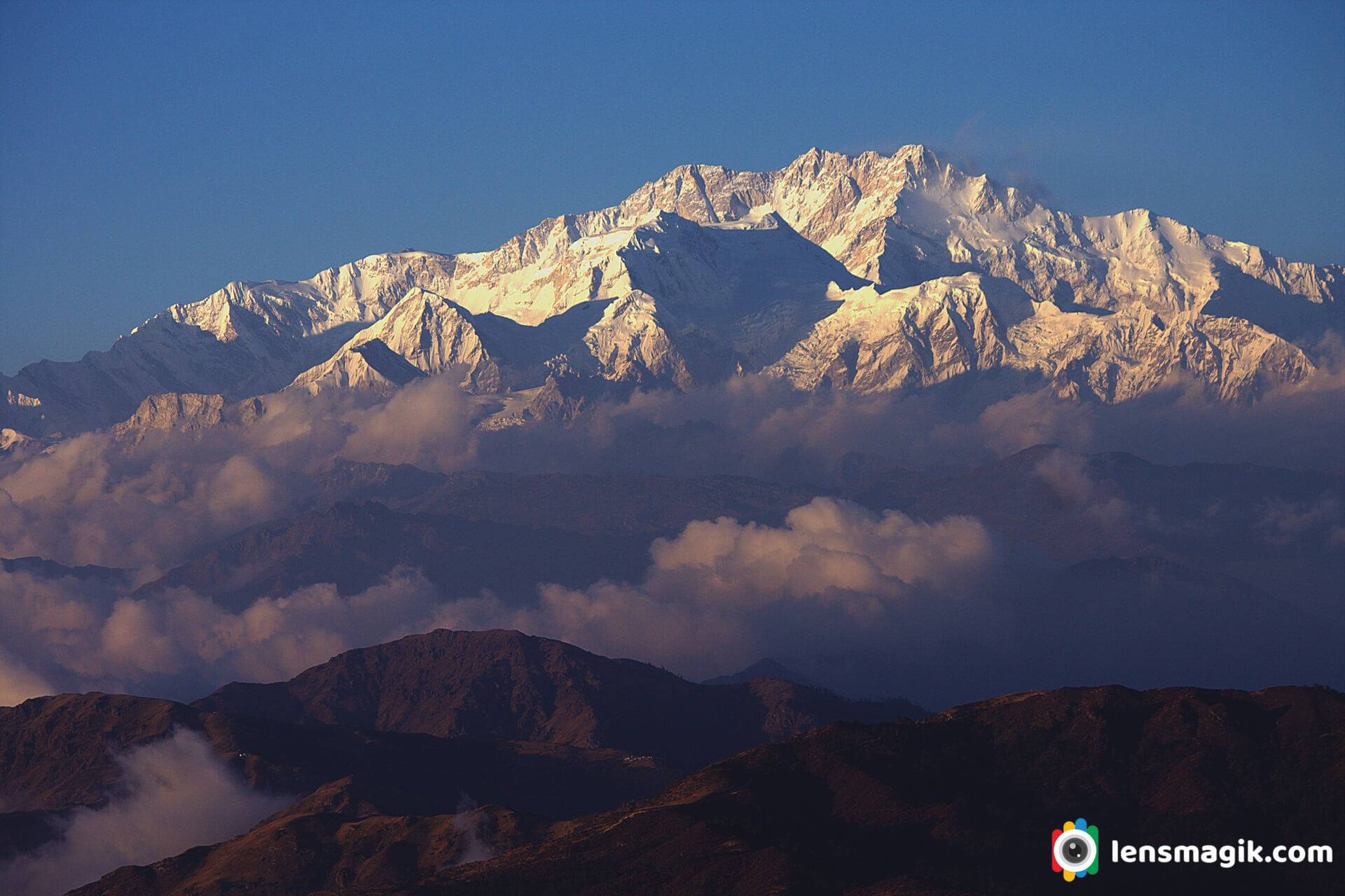
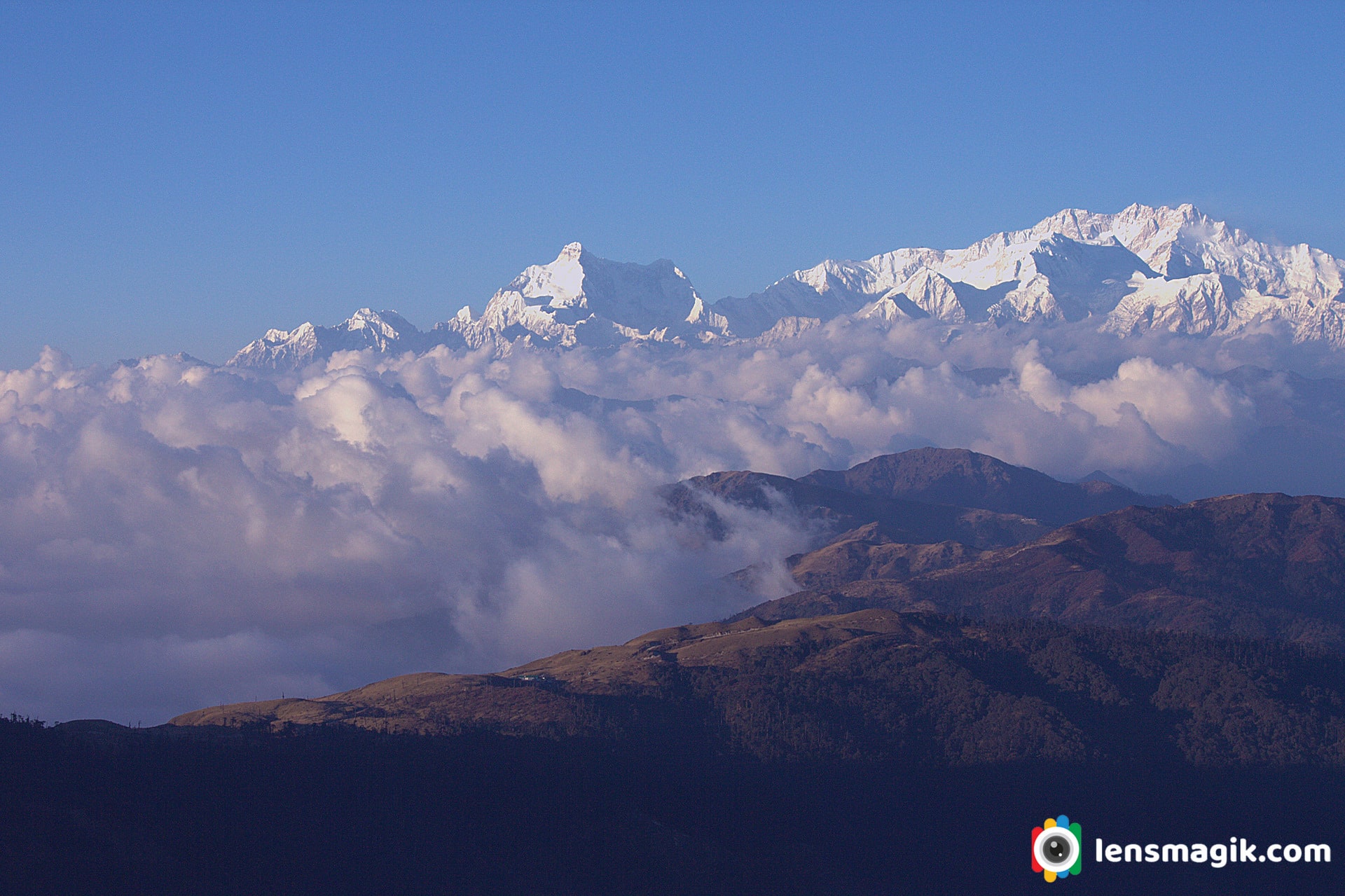
The name Kanchenjunga is derived from sanskrit kanchana ganga . Kanchana means gold and ganga is the river which flows in the region. The river shines like gold and hence the name Kanchana Ganga was given to this mountain.
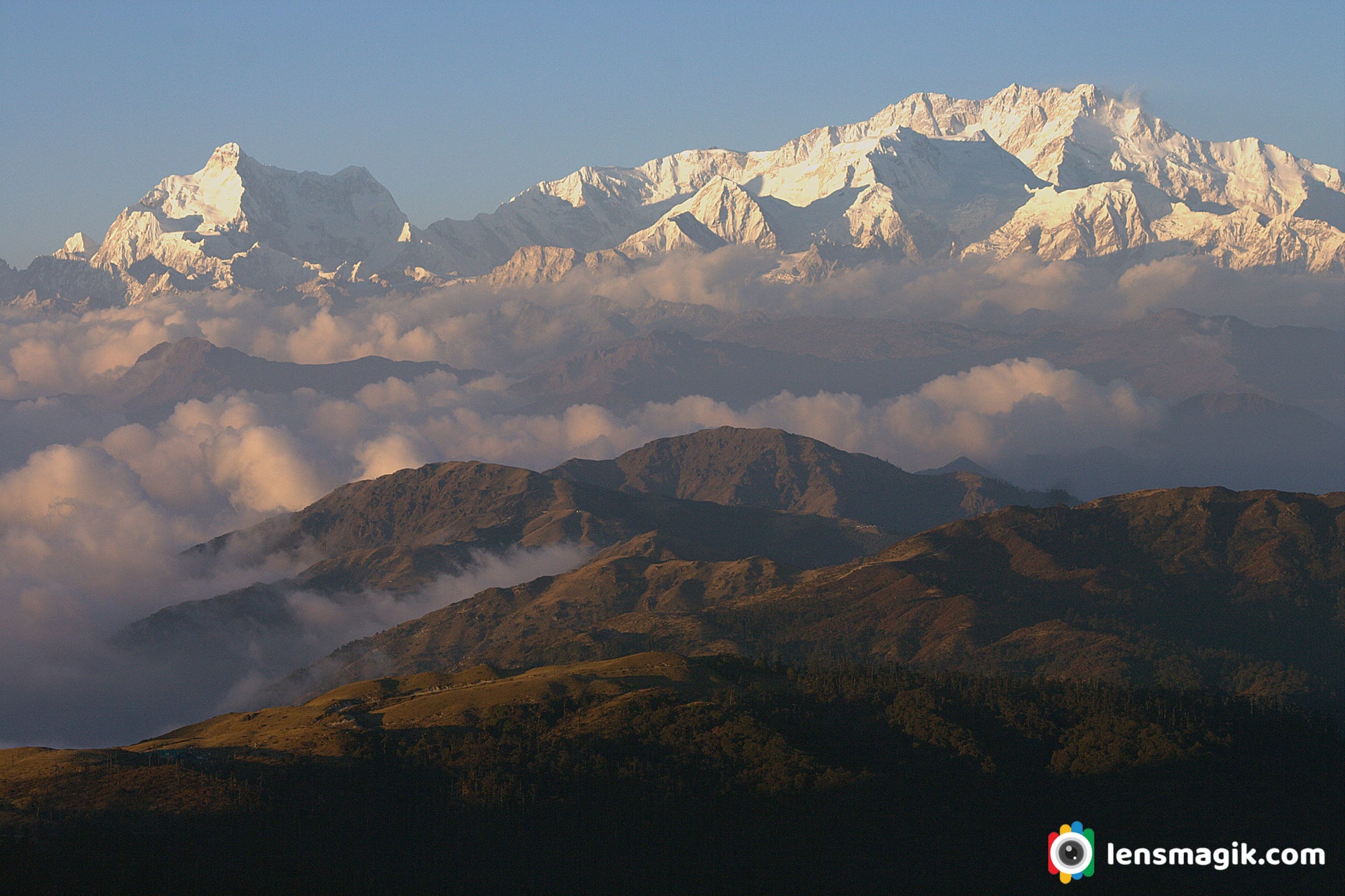
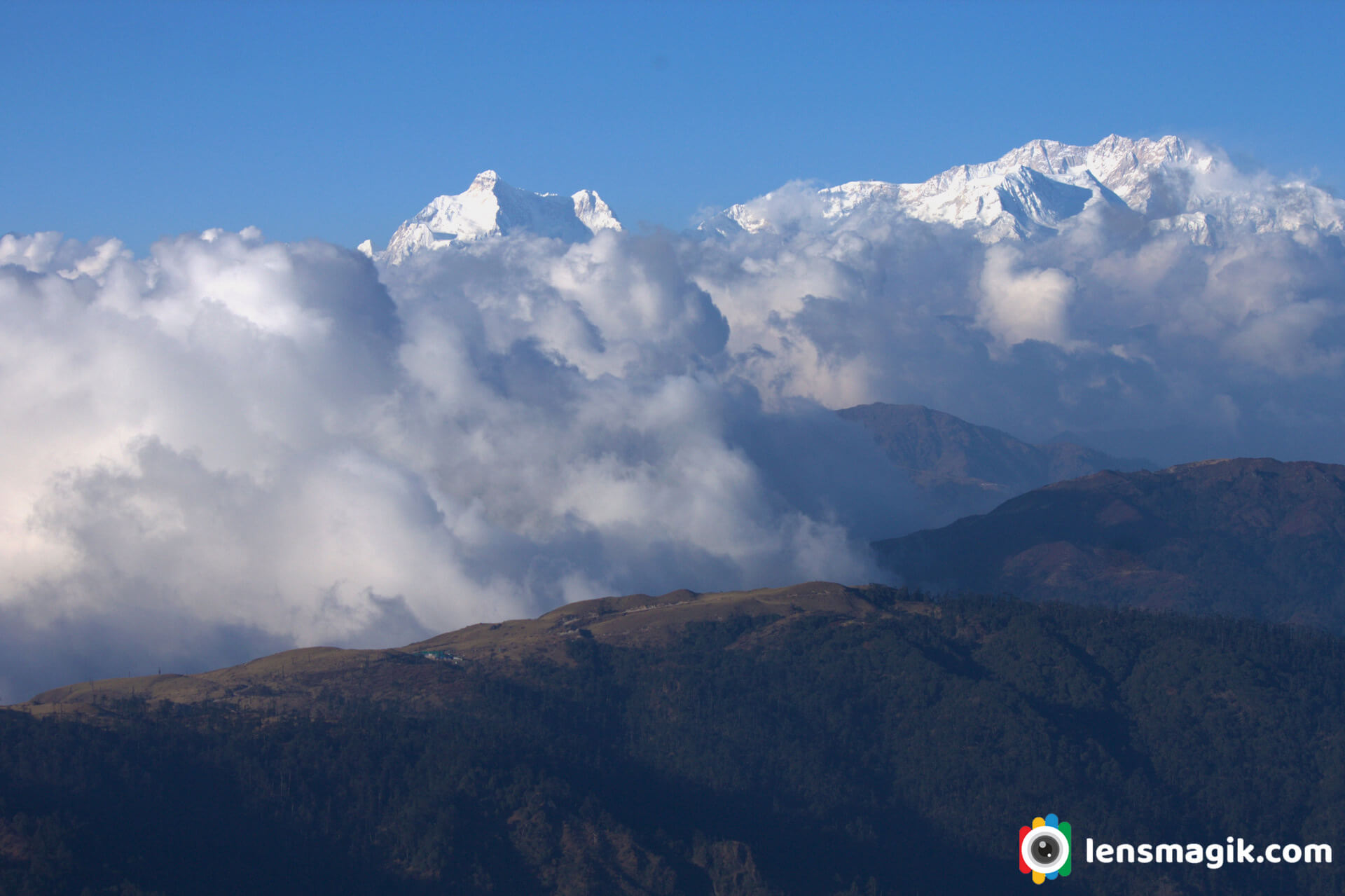
Things to know About Mt. Kanchenjunga/ Mt. Kangchenjunga :
- Kanchenjunga Mountain is about 28,169 ft height and located along the Nepal-India border in the Himalayas.
- It is the third highest mountain in the world.
- It contains 5 peaks and four of them above 27,700 ft of heights.
- Kanchenjunga is also name of surrounding section of Himalayas and means THE FIVE TREASURES OF SNOWS .
- Joe Brown and George Band was the first climber of Kanchenjunga mountain on 25 may 1955.
- Kanchenjunga mountain boundry shared by Nepal, India, China and Bhutan.
- Total 5 peaks of Kanchenjunga are Kanchenjunga Main ( 28169 ft ), Kanchenjunga West ( 27904 ft ), Kanchenjunga Central ( 27828 ft ), Kanchenjunga South ( 27867 ft ), Kangbachen ( 25928 ft ).
- Kanchenjunga Main is the highest elevation of Brahmaputra River.
- There are four climbing route for Kanchenjunga among them 3 are from Nepal and one from Sikkim India.
- It is also known as Sleeping Buddha Mountain range.

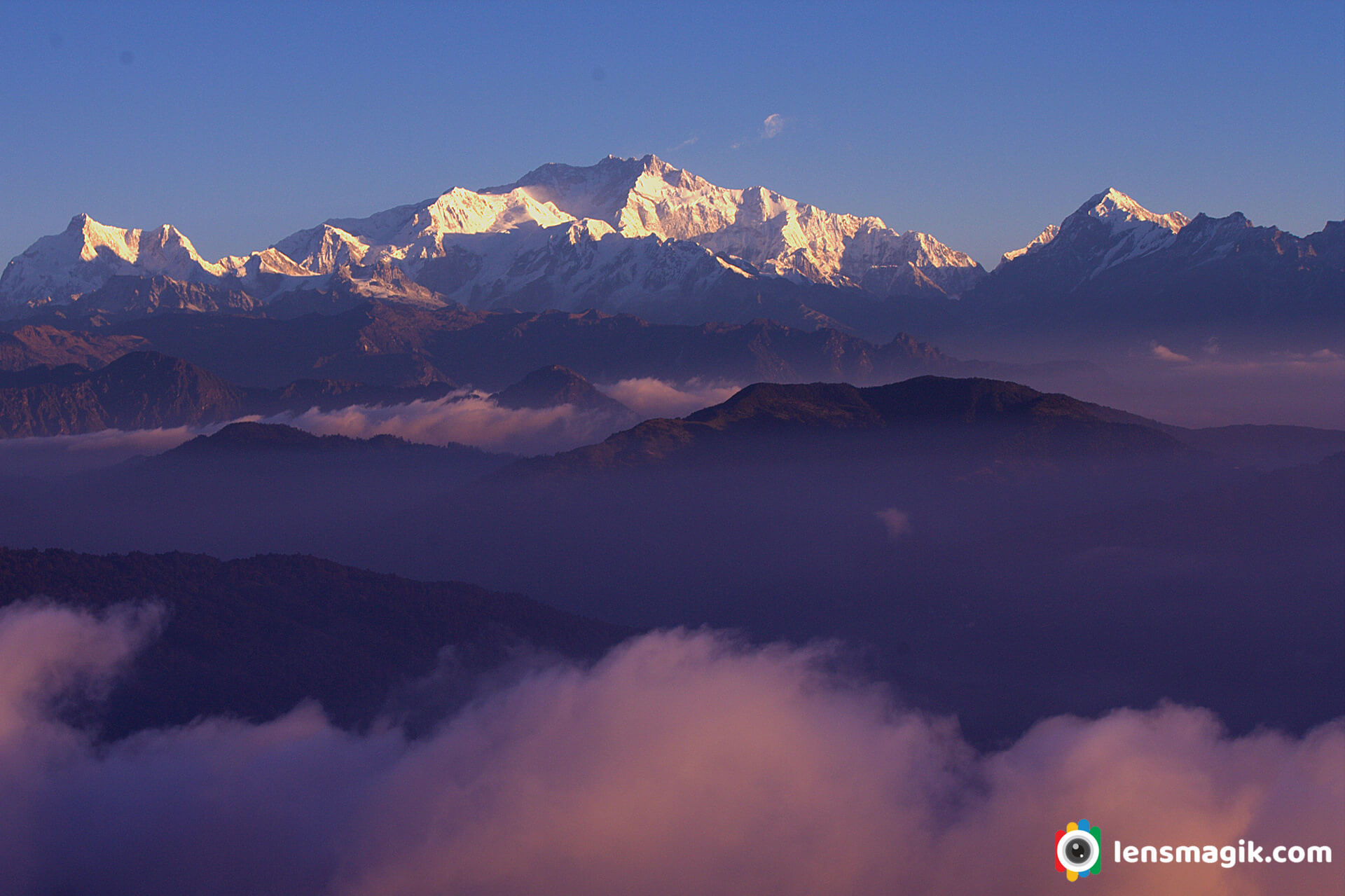
When i was on a tour to Singalila National Park we have a terrific view of Kanchenjunga mountains and also other Himalayan mountains. The best view of Kanchenjunga i saw from Sandakphu located at India-Nepal border. I also saw Mt. Everest from here. Everest is on a long distance but if weather is clear you can see it very clearly.
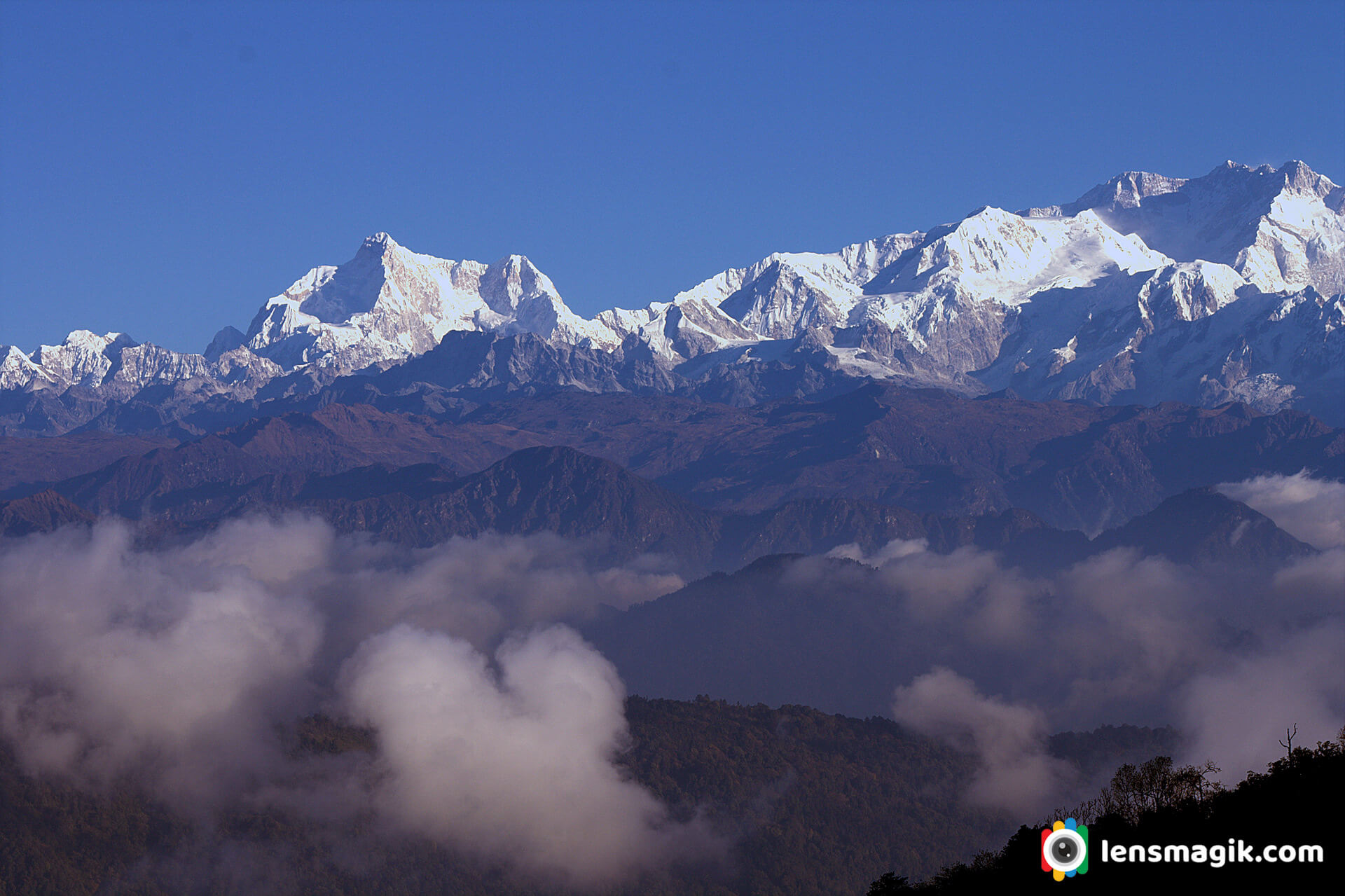
In above picture the mountain shows in left side ( Triangle 3 peaks ) of Mt Kanchenjunga is Kumbhakarna Mountain.
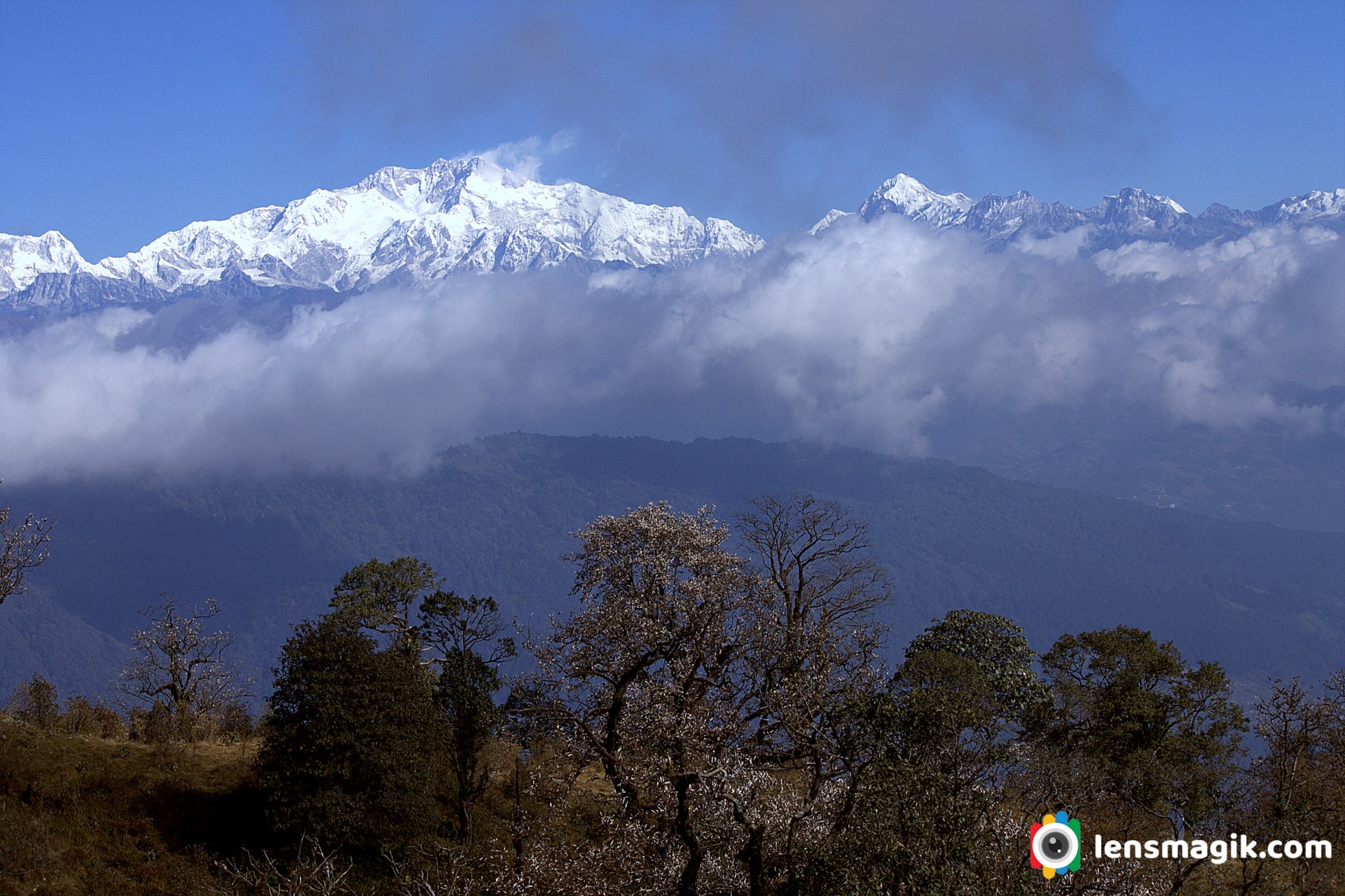
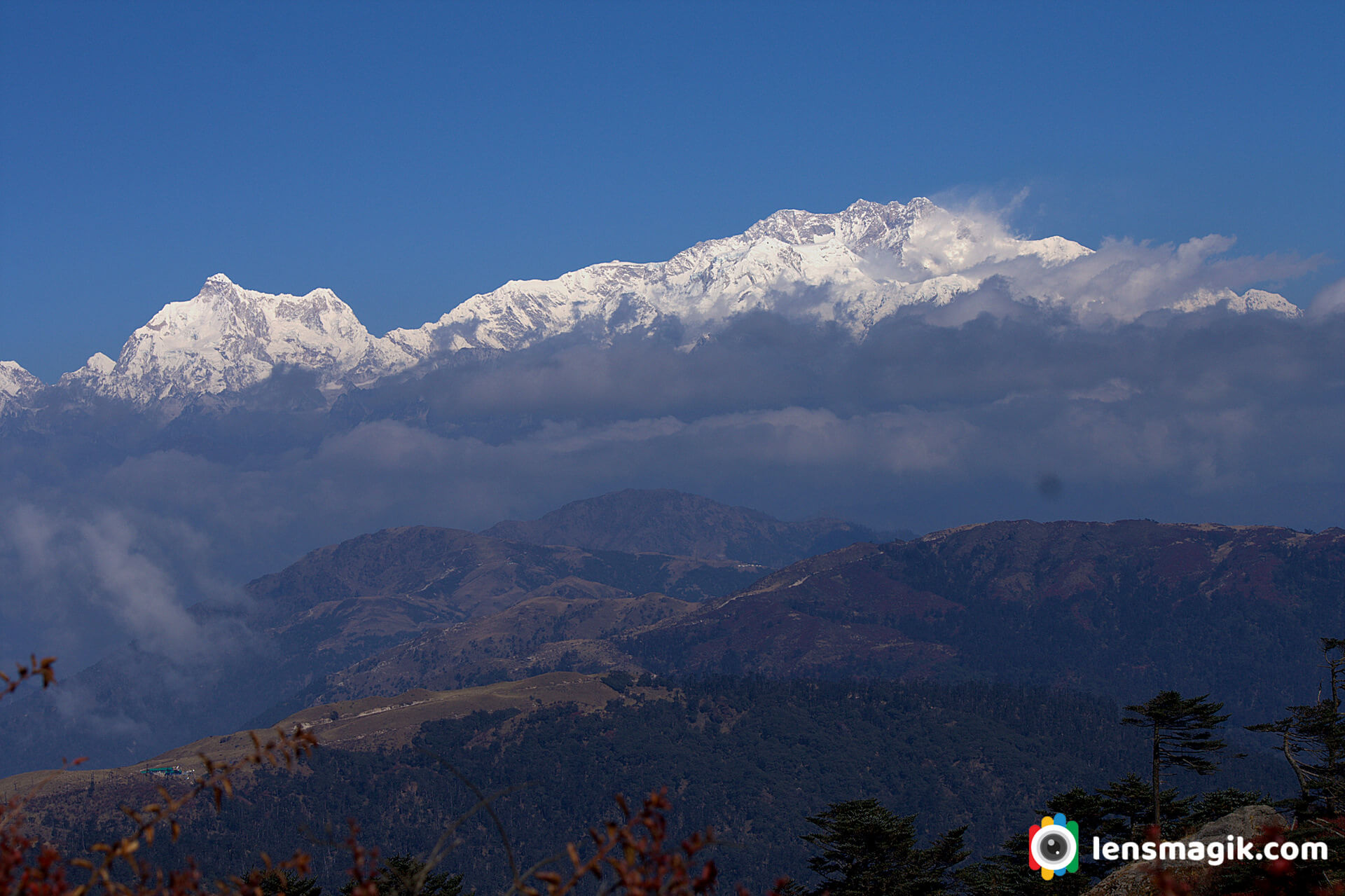

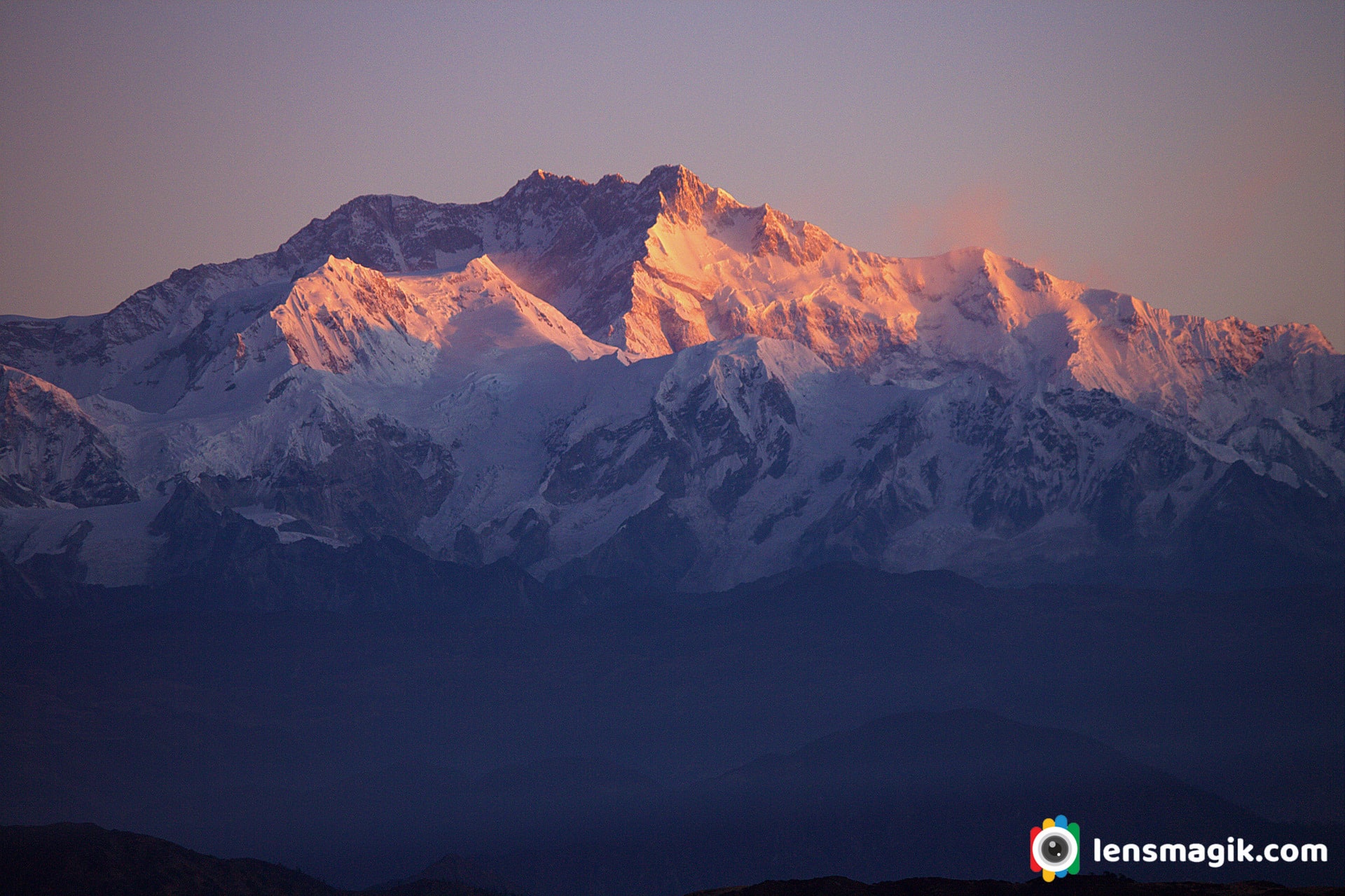
Sandakphu trek is one of the beautiful trek among India and also of Himalayas. During summer lots of trekkers go for these trek and also Phalut trek. At Sandakphu you can stay a night and just see at night the sky is full of stars. I was never seen such stars in my life. A milky way you can see and it was amazing experience of star gazing at Sandakphu. Also after dark a sunrise is beautiful as enough. At 4 or 4:30 am sunrise time and we were ready to see first light of sun rays on Himalayan mountains. The color of rays are red orange color looks beautiful on snow mountain of Kanchenjunga. Thats the beauty of Himalayas.
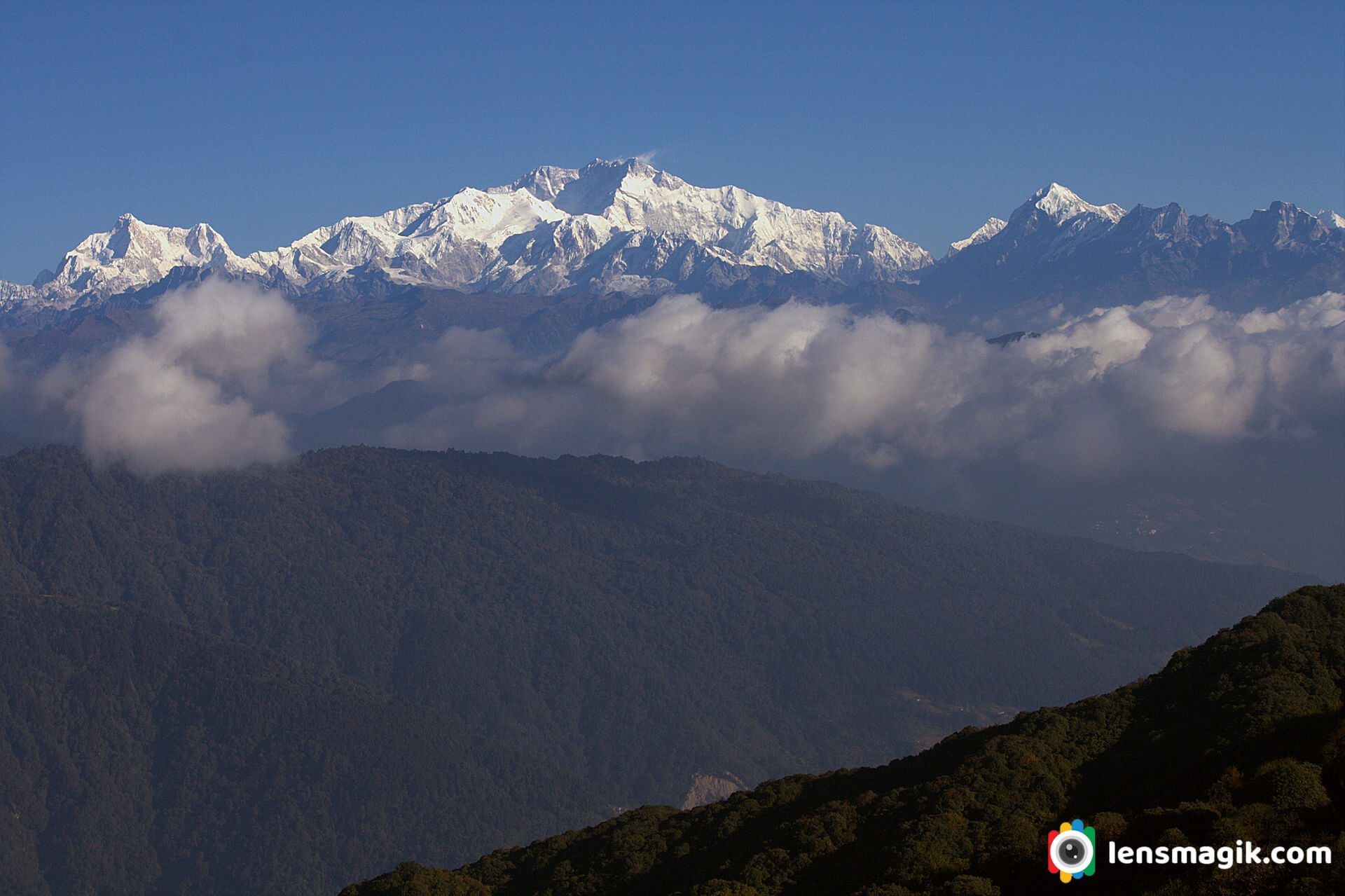
For climbing Mt. Kanchenjunga you can go from Nepal only because Indian Government has been closed Northeastern Sikkim route of Kanchenjunga since 2000. To See Mt. Kanchenjunga from India Sandakphu is the best place. You can go to Sandakphu via Trek or via Range Rover car hire at manebhanjan village. Nearest airport is Bagdogra or you can go to Kolkata and go for overnight train from Kolkata.
Gear used : Canon 1000 D body, Canon 18-55 mm lens, Canon 55-250 mm lens.